Glycoengineering Immunoglobulin E
Anthony; Robert M. ; et al.
U.S. patent application number 17/430949 was filed with the patent office on 2022-04-07 for glycoengineering immunoglobulin e. The applicant listed for this patent is The General Hospital Corporation. Invention is credited to Robert M. Anthony, Kai-Ting Chuang, Maya Kitaoka.
| Application Number | 20220105179 17/430949 |
| Document ID | / |
| Family ID | |
| Filed Date | 2022-04-07 |
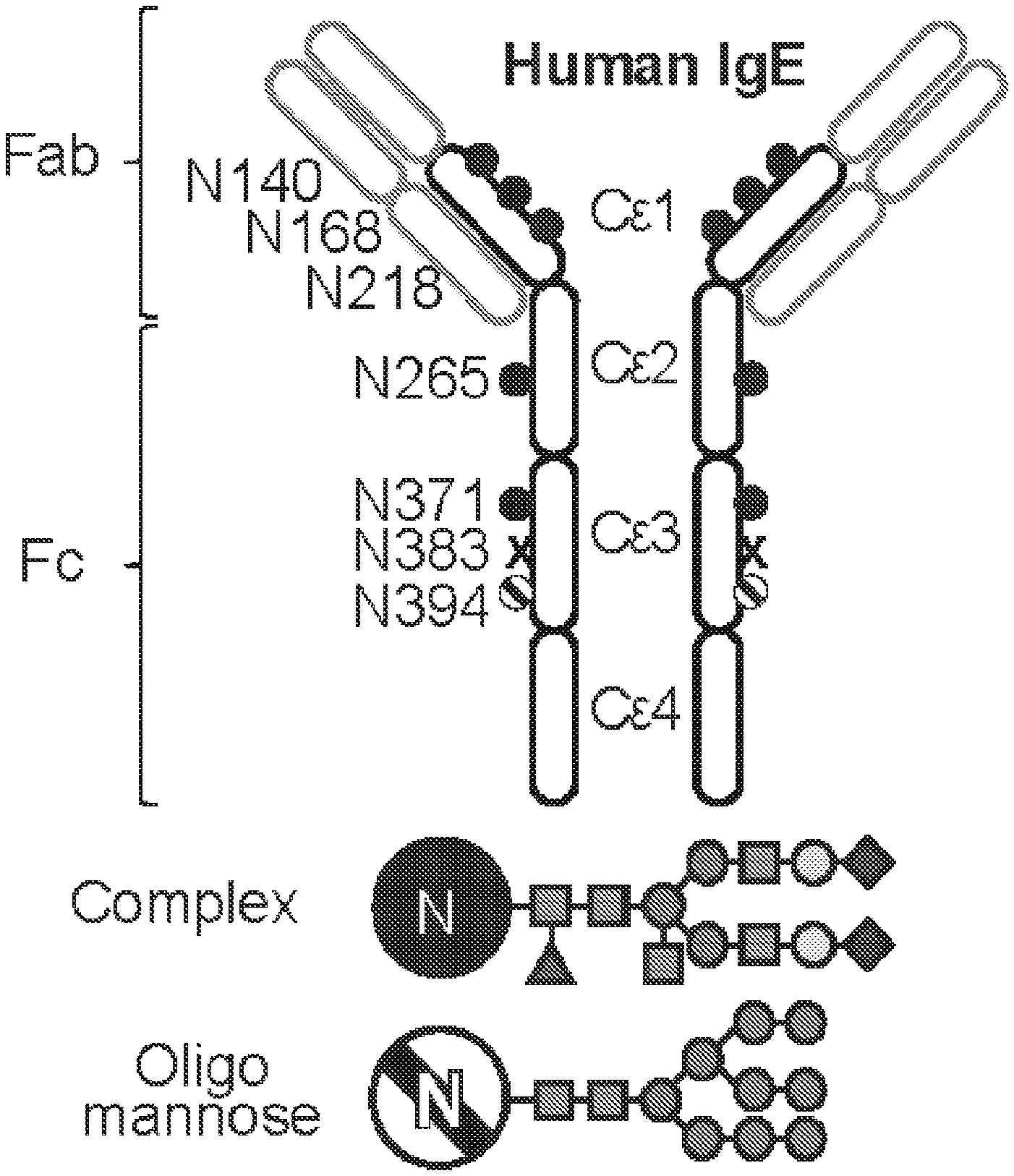


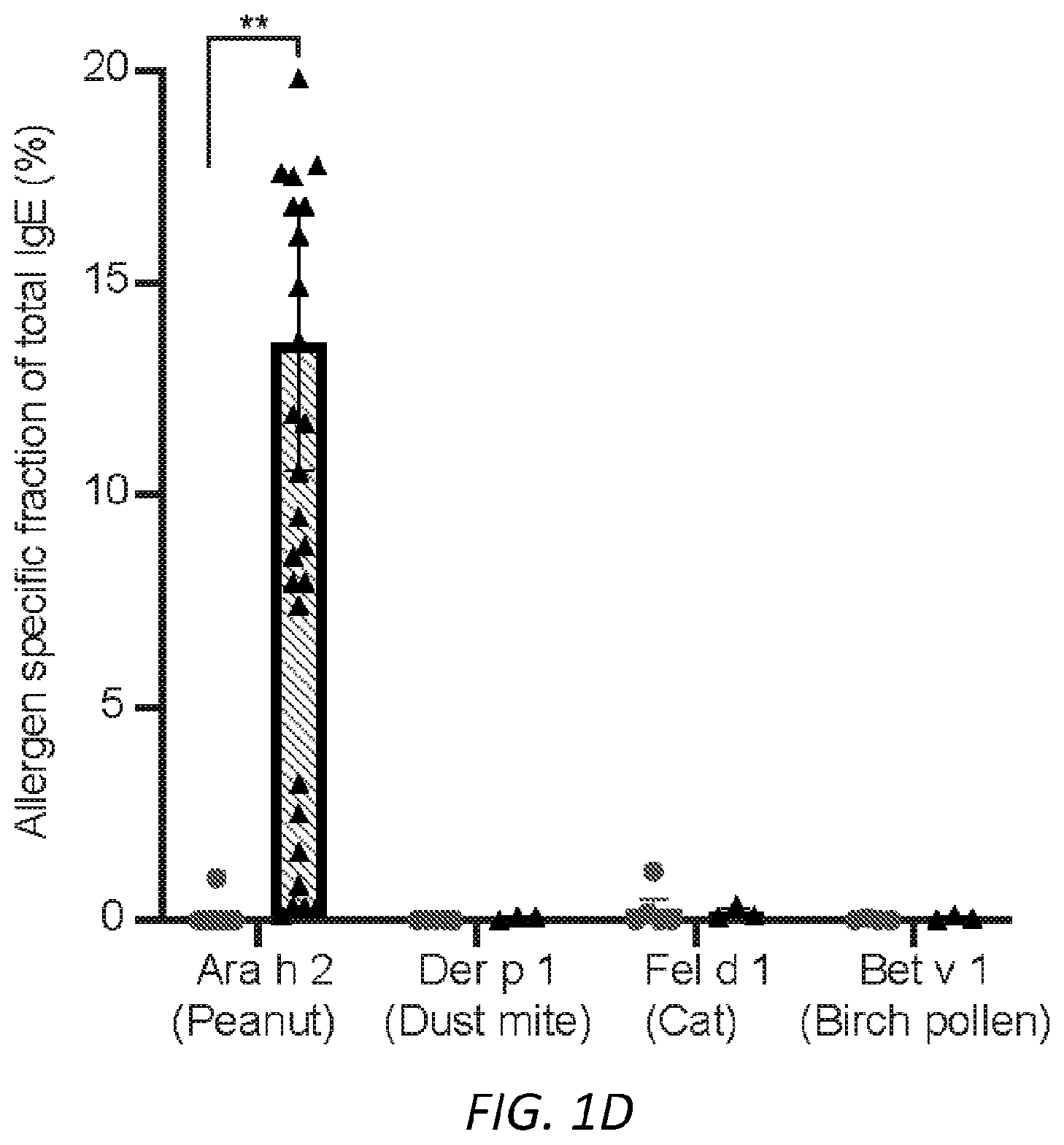
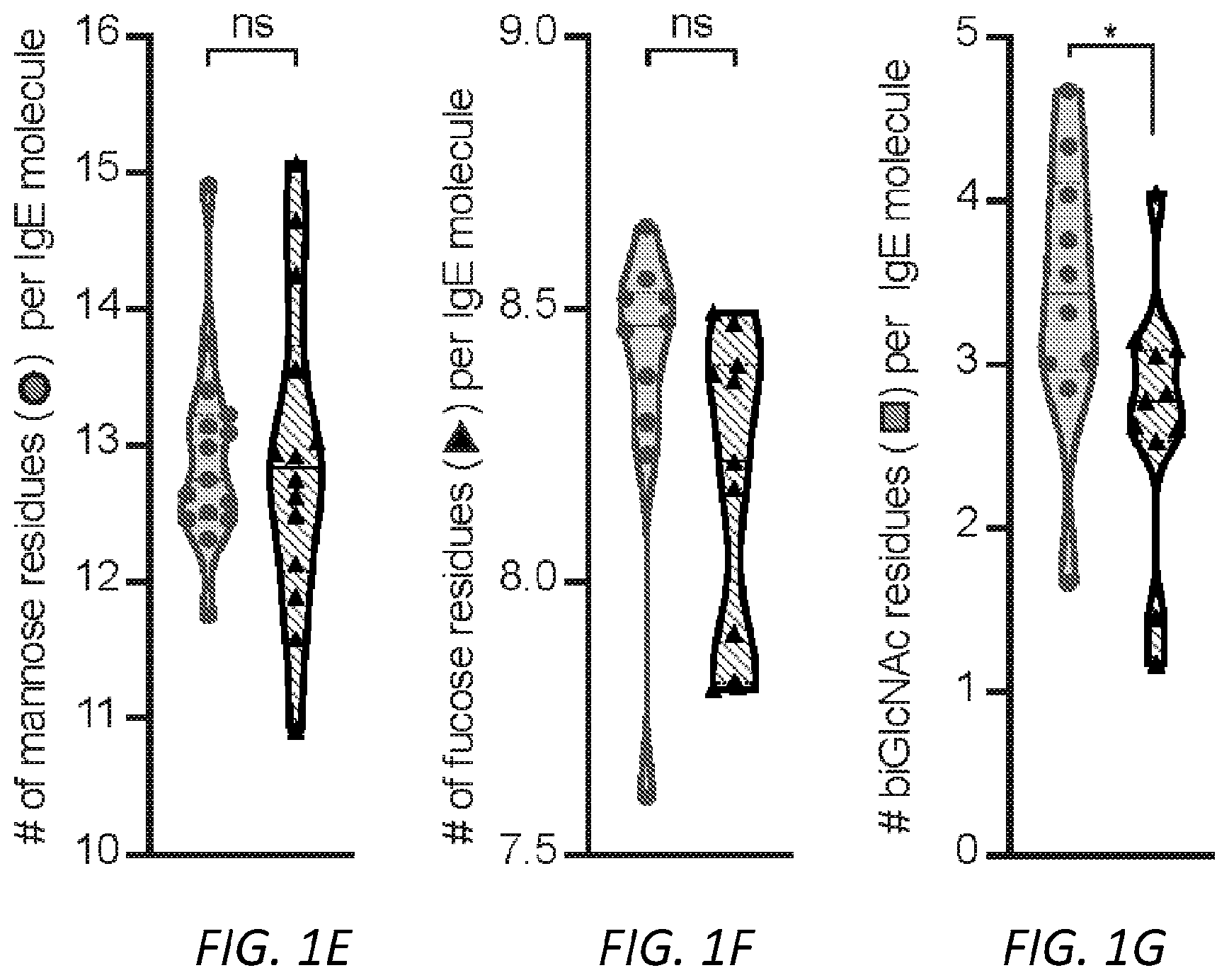
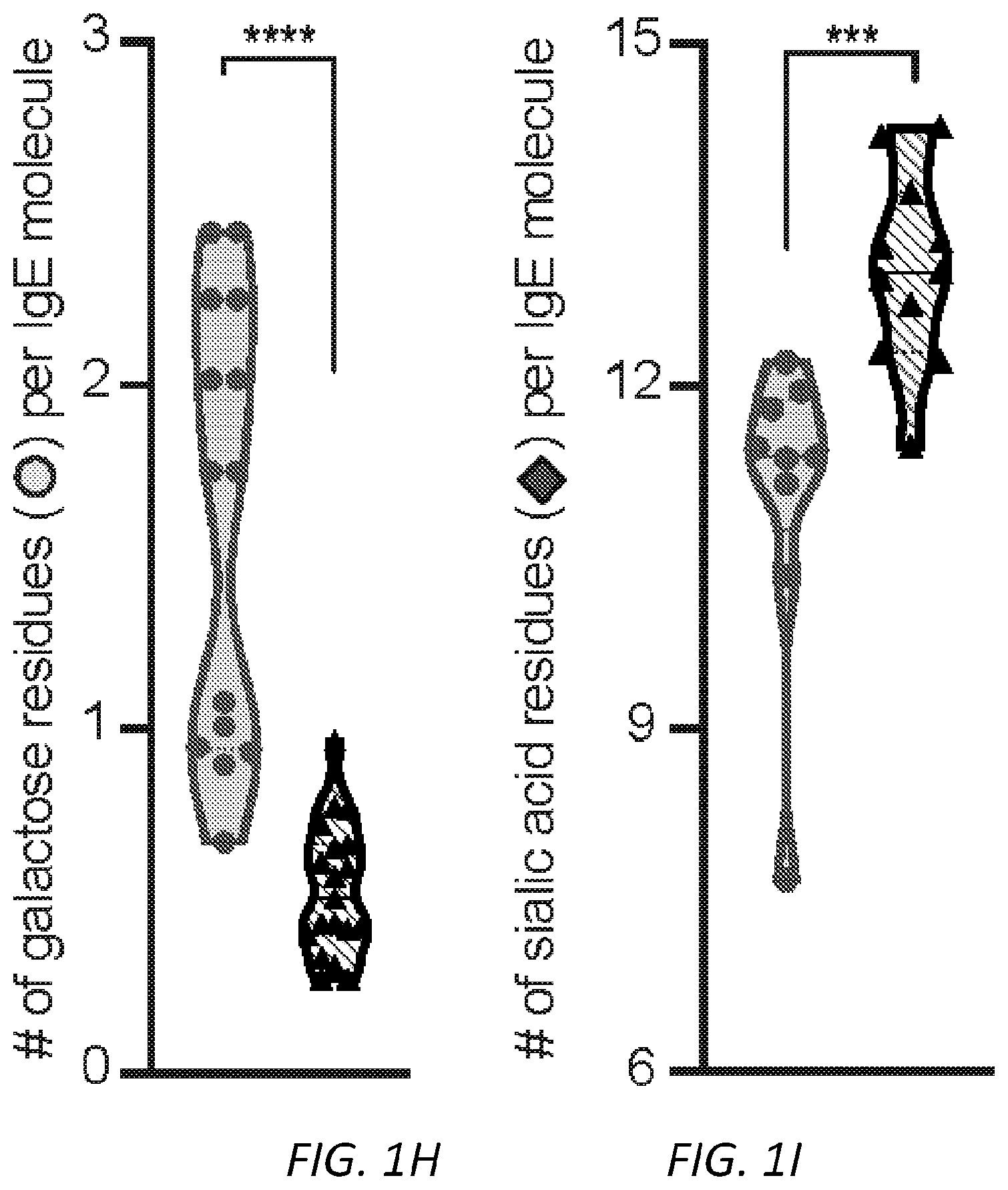
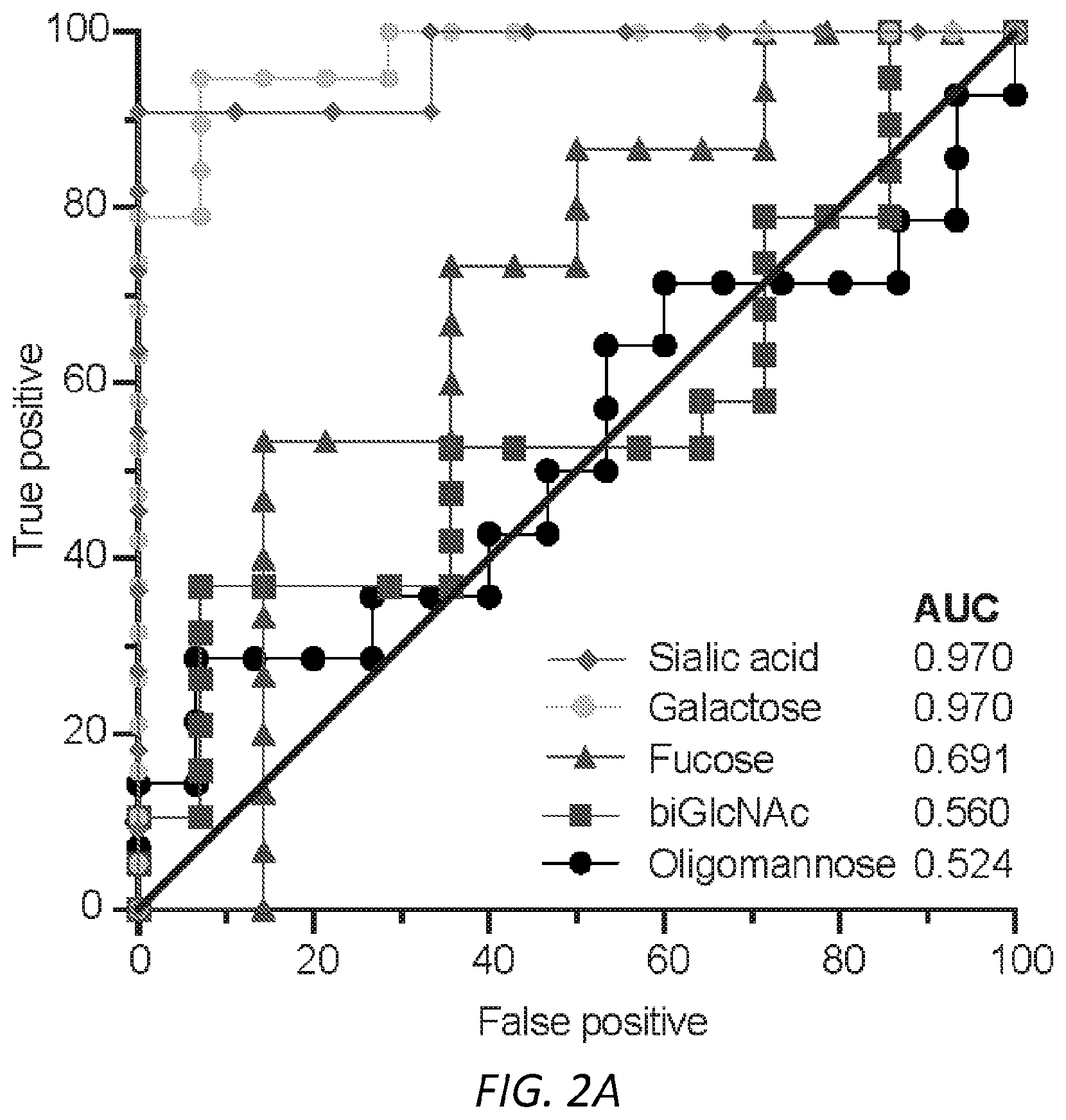

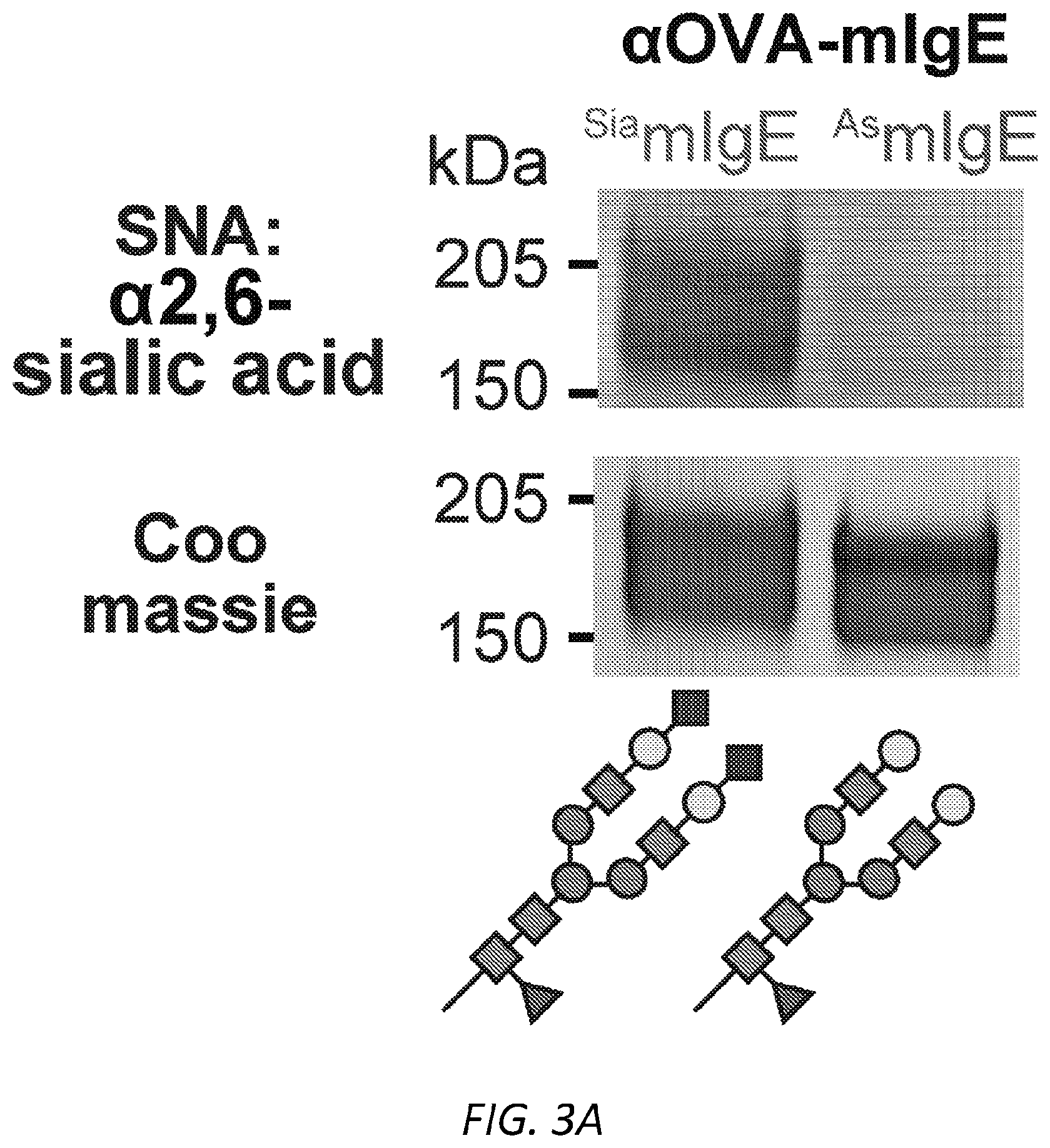
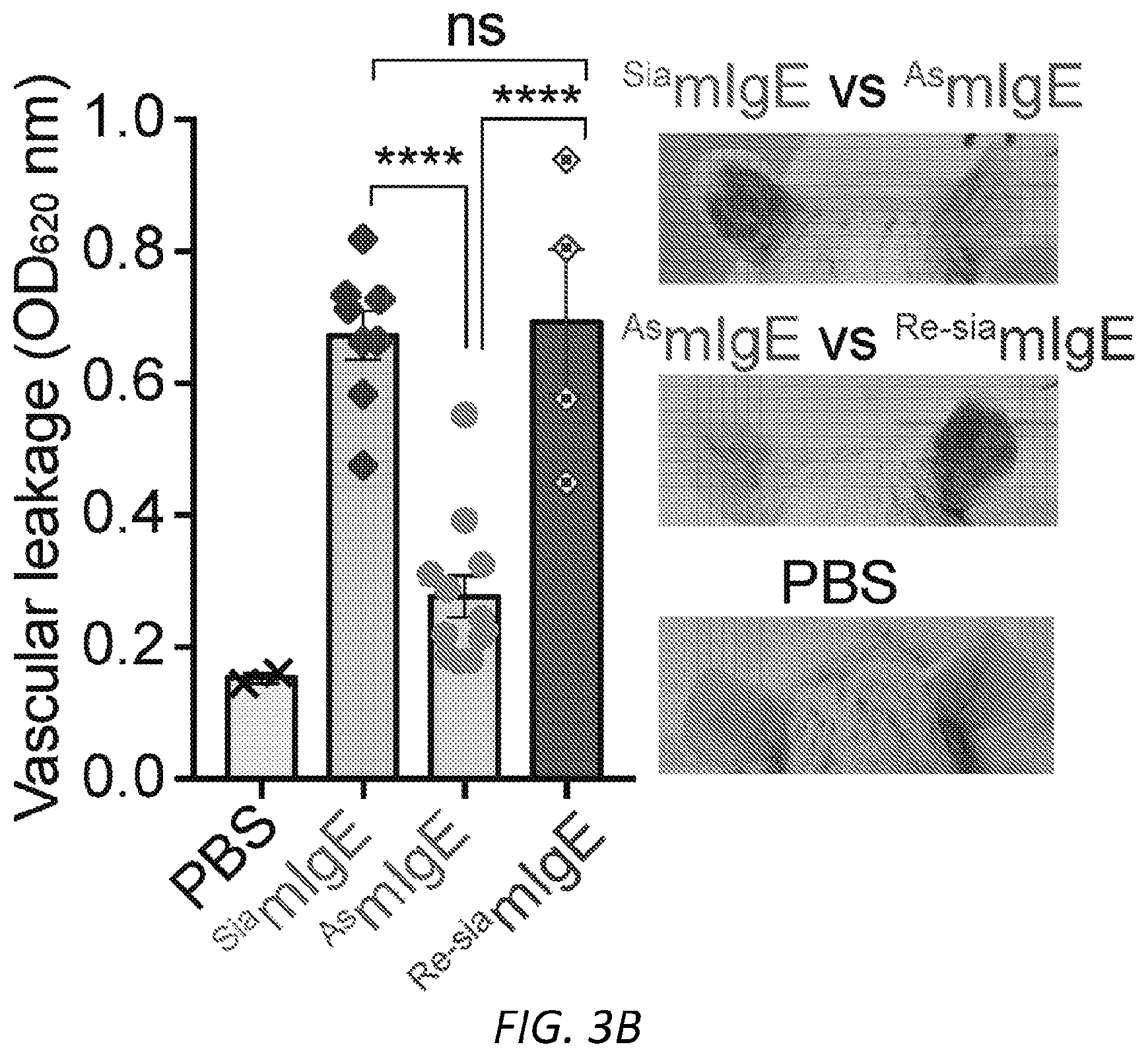
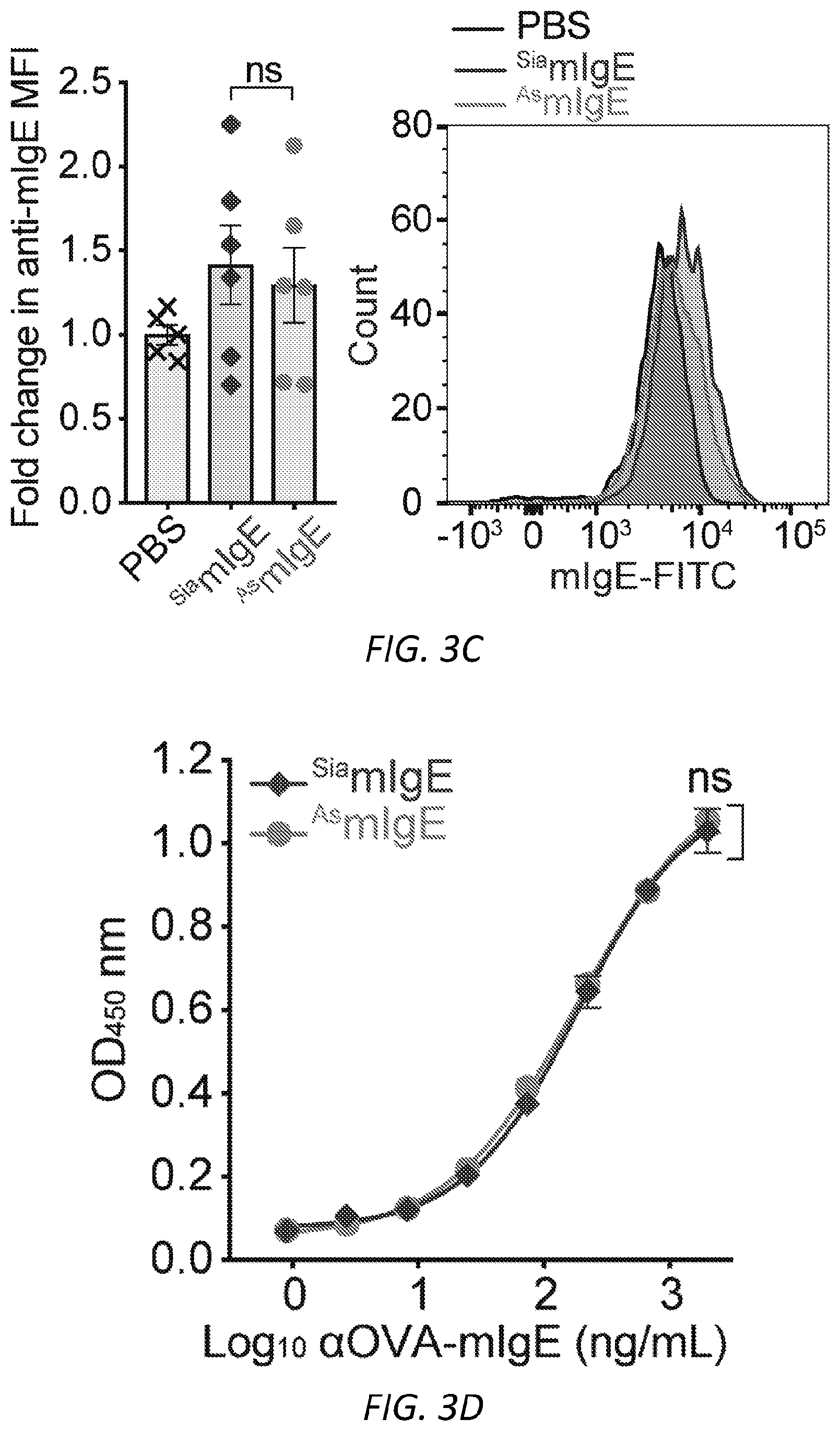
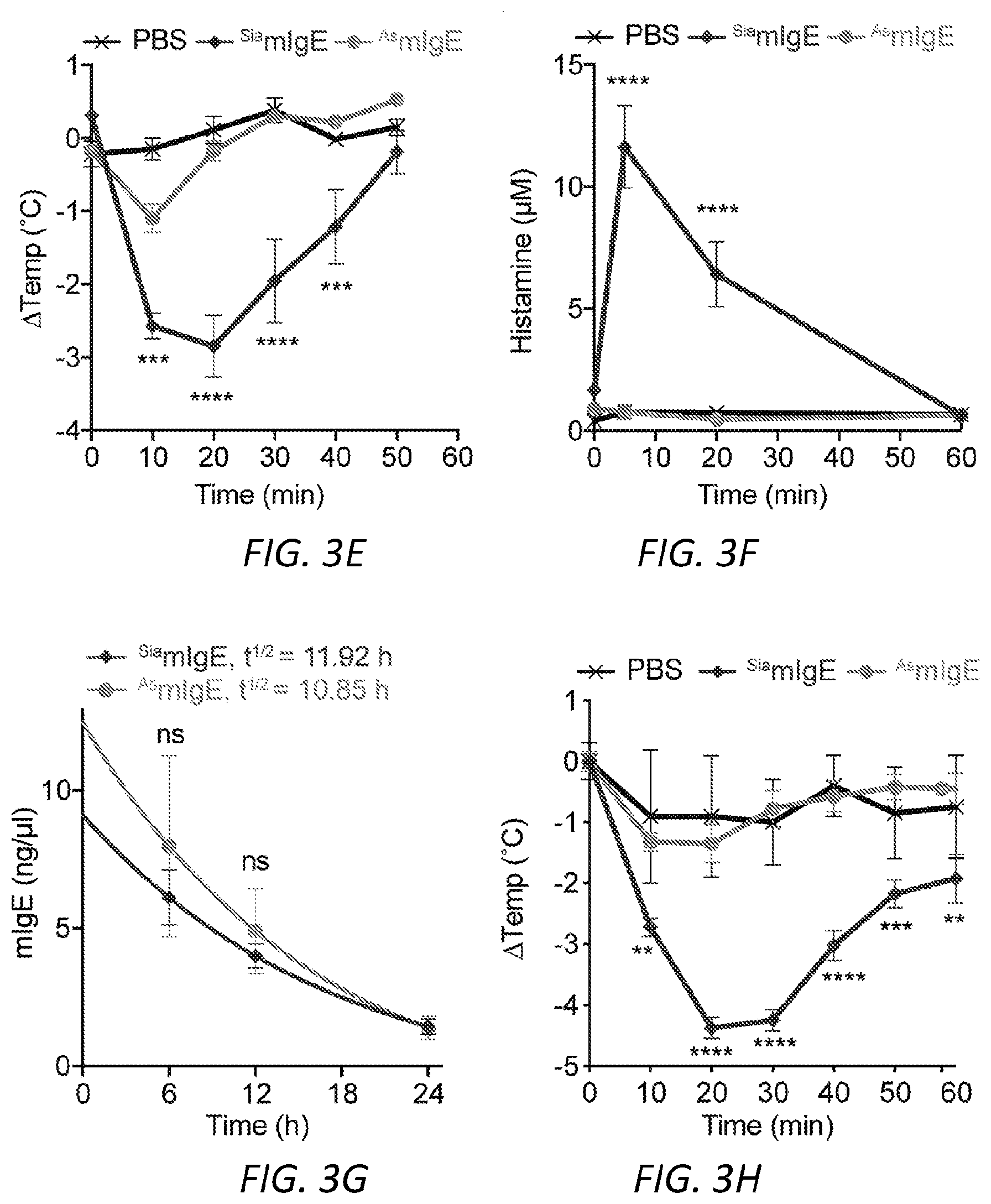
View All Diagrams
| United States Patent Application | 20220105179 |
| Kind Code | A1 |
| Anthony; Robert M. ; et al. | April 7, 2022 |
GLYCOENGINEERING IMMUNOGLOBULIN E
Abstract
This disclosure relates to glycoengineering, and methods of utilizing glycoengineering for treating various diseases or disorders (e.g., IgE-mediated disorders). The methods include administering to the subject an effective amount of a composition comprising a fusion protein described herein. In some embodiments, the IgE-mediated disorder is an allergic disorder. In some embodiments, the allergic disorder is an anaphylactic allergy.
| Inventors: | Anthony; Robert M.; (Cambridge, MA) ; Chuang; Kai-Ting; (Arlington, MA) ; Kitaoka; Maya; (Arlington, MA) | ||||||||||
| Applicant: |
|
||||||||||
|---|---|---|---|---|---|---|---|---|---|---|---|
| Appl. No.: | 17/430949 | ||||||||||
| Filed: | February 14, 2020 | ||||||||||
| PCT Filed: | February 14, 2020 | ||||||||||
| PCT NO: | PCT/US2020/018380 | ||||||||||
| 371 Date: | August 13, 2021 |
Related U.S. Patent Documents
| Application Number | Filing Date | Patent Number | ||
|---|---|---|---|---|
| 62808456 | Feb 21, 2019 | |||
| 62808449 | Feb 21, 2019 | |||
| International Class: | A61K 39/395 20060101 A61K039/395; A61K 38/47 20060101 A61K038/47; A61K 47/68 20060101 A61K047/68; A61P 37/08 20060101 A61P037/08; C12N 15/62 20060101 C12N015/62; C12N 9/24 20060101 C12N009/24; C12N 15/85 20060101 C12N015/85; C12P 21/00 20060101 C12P021/00 |
Goverment Interests
FEDERALLY SPONSORED RESEARCH OR DEVELOPMENT
[0002] This invention was made with Government support under Grant Nos. AR068272 and AI139669 awarded by the National Institutes of Health (NIH). The Government has certain rights in the invention.
Claims
1. A fusion polypeptide comprising: an Immunolobulin E (IgE) antibody Fc domain region; and a sialidase or a functional portion thereof, preferably wherein the sialidase or a functional portion thereof can hydrolyze alpha-(2->3)-, alpha-(2->6)-, alpha-(2->8)-glycosidic linkages of terminal sialic residues on IgE.
2. The fusion polypeptide of claim 1, wherein the sialidase is NEU1, NEU2, NEU3, NEU4, or Vibrio cholerae serotype O1 sialidase.
3. The fusion polypeptide of claim 1, wherein the sialidase is a human sialidase.
4. The fusion polypeptide of claim 1, wherein the fusion polypeptide comprises an IgE CH2 region, an IgE CH3 region, and an IgE CH4 region.
5. A polynucleotide encoding the fusion polypeptide of claim 1.
6. A vector comprising a polynucleotide encoding the fusion polypeptide of claim 1.
7. A cell comprising the vector of claim 6, and optionally expressing the fusion polypeptide of claim 1.
8. A method of treating a subject having an IgE-mediated disorder, the method comprising: administering to the subject an effective amount of a composition comprising the fusion protein of claim 1.
9. The method of claim 8, wherein the IgE-mediated disorder is an allergic disorder.
10. The method of claim 9, wherein the allergic disorder is an anaphylactic allergy.
11. The method of claim 9, wherein the allergic disorder is asthma, atopic dermatitis. allergic rhinitis, allergic conjunctivitis, eczema, or urticaria.
12. A method of preparing glycoengineered IgE, the method comprising: providing a composition comprising IgE, preferably human IgE, obtained from a plurality of subjects, contacting the IgE with a sialidase under conditions and for a time sufficient to remove sialylation from the IgE; thereby preparing glycoengineered IgE.
13. The method of claim 12, wherein the method further comprises formulating the glycoengineered IgE for intravenous administration.
14. A composition comprising the glycoengineered IgE prepared by the method of claim 12, and a pharmaceutically acceptable carrier.
15. A method of treating a subject having an IgE-mediated disorder, the method comprising administering to the subject an effective amount of the composition of claim 12.
16. The method of claim 15, wherein the IgE-mediated disorder is an allergic disorder.
17. The method of claim 16, wherein the allergic disorder is an anaphylactic allergy.
18. The method of claim 16, wherein the allergic disorder is asthma, atopic dermatitis. allergic rhinitis, allergic conjunctivitis, eczema, or urticaria. for use in treating a subject having an IgE-mediated disorder.
19. A composition comprising the fusion polypeptide of claim 1, and a pharmaceutically acceptable carrier.
20.-27. (canceled)
Description
CLAIM OF PRIORITY
[0001] This application claims the benefit of U.S. Provisional Patent Application Ser. No. 62/808,449, filed on Feb. 21, 2019, and 62/808,456, filed on Feb. 21, 2019. The entire contents of the foregoing are hereby incorporated by reference.
TECHNICAL FIELD
[0003] This disclosure relates to glycoengineering immunoglobulin E (IgE), and methods of utilizing glycoengineering for treating various diseases or disorders. Also provided herein are methods for diagnosing allergies.
BACKGROUND
[0004] Allergic disease is a global health burden affecting almost one in three individuals worldwide. Mechanistically, IgE antibodies bind to the surface of mast cells or basophils that express the IgE high affinity receptor, Fc.epsilon.RI.sup.3. Subsequent exposure to allergen crosslinks cell-bound IgE, leading to cellular activation and release of allergic mediators including histamine, prostaglandins, and leukotrienes.sup.3. This cascade culminates in the canonical symptoms of allergic disease, the most severe of which is anaphylaxis. While IgE that recognizes otherwise innocuous allergens is well established as the causative agent of most allergic diseases.sup.1,3, testing for allergic disease remains relatively inaccurate.sup.4-6, and curative therapies, including oral immunotherapy, are cumbersome, and only partially effective.sup.8-10. Further, allergen-specific IgE is detected in many people who do not express allergic symptoms.sup.11. Thus, while IgE is absolutely necessary for triggering the allergic cascade, it is not clear how IgE causes allergic disease in some circumstances and not others.
SUMMARY
[0005] Approximately one-third of the world's population suffers from allergies.sup.1,2. Allergen exposure crosslinks mast cell- and basophil-bound immunoglobulin E (IgE), triggering the release of inflammatory mediators, including histamine.sup.3. Although IgE is absolutely required for allergies, it is not understood why total and allergen-specific IgE concentrations do not reproducibly correlate with allergic disease.sup.4-6. It is well-established that glycosylation of IgG dictates its effector function and has disease-specific patterns. However, whether IgE glycans differ in disease states or impact biological activity is completely unknown. We therefore unbiasedly examined glycosylation patterns of total IgE from peanut-allergic and non-atopic individuals. This revealed an increase in sialic acid content on total IgE from peanut allergic individuals compared to non-atopic subjects. Sialic acid removal from IgE attenuated effector cell degranulation and anaphylaxis in multiple functional models of allergic disease. Therapeutic interventions, including sialic acid removal from cell-bound IgE with a FIERI targeted-neuraminidase, or administration of asialylated IgE, markedly reduced anaphylaxis. Together, these results reveal a role for IgE glycosylation, and specifically sialylation, in regulating allergy and anaphylaxis, and establish IgE sialylation as a biomarker and therapeutic target for allergies.
[0006] Thus, provided herein are fusion polypeptides comprising: an Immunolobulin E (IgE) or IgG antibody Fc domain region; and a sialidase or a functional portion thereof, preferably wherein the sialidase or a functional portion thereof can hydrolyze alpha-(2->3)-, alpha-(2->6)-, alpha-(2->8)-glycosidic linkages of terminal sialic residues on IgE. In some embodiments, the sialidase is NEU1, NEU2, NEU3, NEU4, or Vibrio cholerae serotype O1 sialidase. In some embodiments, the sialidase is a human sialidase. In some embodiments, the fusion polypeptide comprises an IgE CH2 region, an IgE CH3 region, and/or an IgE CH4 region; or an IgG CH2 and CH3 region.
[0007] Also provided herein are polynucleotides encoding the fusion polypeptides described herein, vectors comprising polynucleotides encoding the fusion polypeptides, and cells comprising the vectors, and optionally expressing the fusion polypeptides described herein.
[0008] Further, provided herein are methods for treating a subject having an IgE-mediated disorder. The methods include administering to the subject an effective amount of a composition comprising a fusion protein described herein. In some embodiments, the IgE-mediated disorder is an allergic disorder. In some embodiments, the allergic disorder is an anaphylactic allergy. In some embodiments, the allergic disorder is asthma, atopic dermatitis. allergic rhinitis, allergic conjunctivitis, eczema, or urticaria.
[0009] Additionally, provided herein are methods for preparing glycoengineered IgE, e.g., a composition comprising glycoengineered IgE, the method comprising: providing a composition comprising IgE, preferably human IgE, obtained from a plurality of subjects, contacting the IgE with a sialidase under conditions and for a time sufficient to remove sialylation, e.g., a desired amount of sialylation, from the IgE; thereby preparing glycoengineered IgE. In some embodiments, the method further comprises formulating the glycoengineered IgE for intravenous administration. In addition, provided herein are compositions comprising the glycoengineered IgE prepared by a method described herein, and a pharmaceutically acceptable carrier. In some embodiments, the compositions are formulated for intravenous administration.
[0010] Also provided herein are methods for treating a subject having an IgE-mediated disorder. The methods include administering to the subject an effective amount of a composition comprising glycoengineered IgE as described herein.
[0011] Further, provided herein are fusion proteins, glycoengineered IgE, and compositions comprising a fusion polypeptide and/or glycoengineered IgE as described herein, optionally with a pharmaceutically acceptable carrier, and the use of these compositions, fusion proteins, glycoengineered IgE and in treating a subject having an IgE-mediated disorder.
[0012] In some embodiments, the IgE-mediated disorder is an allergic disorder, e.g., an anaphylactic allergy. In some embodiments, the allergic disorder is asthma, atopic dermatitis. allergic rhinitis, allergic conjunctivitis, eczema, or urticaria.
[0013] This disclosure relates to glycoengineering, and methods of utilizing glycoengineering for treating various diseases or disorders (e.g., IgE-mediated disorders).
[0014] In another aspect, the disclosure relates to a fusion polypeptide having an antibody heavy chain CH2 region; an antibody heavy chain CH3 region; and a catalytic domain of sialidase, wherein the catalytic domain of sialidase removes sialic acid from a glycoprotein.
[0015] In some embodiments, the sialidase is NEU1, NEU2, NEU3, NEU4, or Vibrio cholerae serotype O1 sialidase. In some embodiments, the sialidase is a human sialidase.
[0016] In some embodiments, the fusion polypeptide has an IgG CH2 region, and an IgG CH3 region.
[0017] In some embodiments, the fusion polypeptide has an IgE CH2 region, an IgE CH3 region, and an IgE CH4 region.
[0018] In another aspect, the disclosure provides a polynucleotide encoding the fusion polypeptide as described herein.
[0019] In another aspect, the disclosure also relates to a vector having a polynucleotide sequence encoding the fusion polypeptide as described herein.
[0020] In one aspect, the disclosure relates to a cell having the vector as described herein, and the vector optionally expresses the fusion polypeptide as described herein.
[0021] In one aspect, the disclosure relates to a heteromultimer that has a first fusion polypeptide having an antibody heavy chain CH2 region, an antibody heavy chain CH3 region, and a catalytic domain of mannosidase, wherein the catalytic domain of mannosidase removes mannose from a glycoprotein; and a second fusion polypeptide having an antibody heavy chain CH2 region, an antibody heavy chain CH3 region, and a catalytic domain of sialidase, wherein the catalytic domain of sialidase removes sialic acid from a glycoprotein.
[0022] In some embodiments, the heteromultimer is a heterodimer, and the first fusion polypeptide associates with the second fusion polypeptide, thereby forming the heterodimer.
[0023] In some embodiments, the mannosidase is MAN1B1 or MAN2A1.
[0024] In some embodiments, the sialidase is NEU1, NEU2, NEU3, NEU4, or Vibrio cholerae serotype O1 sialidase.
[0025] In some embodiments, the first fusion polypeptide and the second polypeptide each has a human IgE CH2 region, a human IgE CH3 region, and a human IgE CH4 region.
[0026] In some embodiments, the first fusion polypeptide and the second polypeptide each has a human IgG CH2 region, and a human IgG CH3 region.
[0027] In another aspect, the disclosure also relates to methods of treating a subject having an IgE-mediated disorder. The methods involve administering to the subject an effective amount of a composition having the heteromultimer as described herein.
[0028] In some embodiments, the IgE-mediated disorder is an allergic disorder.
[0029] In some embodiments, the IgE-mediated disorder is an autoimmune disease.
[0030] In some embodiments, the IgE-mediated disorder is anaphylaxis.
[0031] In some embodiments, the allergic disorder is asthma. In some embodiments, the allergic disorder is atopic dermatitis. In some embodiments, the allergic disorder is allergic rhinitis, allergic conjunctivitis, eczema, or urticaria.
[0032] In one aspect, the disclosure relates to methods of treating a subject having an IgE-mediated disorder. The methods involve administering to the subject an effective amount of one or both of the following:
[0033] (a) a first polypeptide having a catalytic domain of mannosidase; and
[0034] (b) a second polypeptide having a catalytic domain of sialidase,
wherein the catalytic domain of the mannosidase removes mannose from a glycoprotein, and the catalytic domain of sialidase removes sialic acid from a glycoprotein.
[0035] In some embodiments, the first polypeptide further has a human IgE CH2 region, a human IgE CH3 region, and a human IgE CH4 region.
[0036] In some embodiments, the first polypeptide further has a human IgG CH2 region, and a human IgG CH3 region.
[0037] In some embodiments, the second polypeptide further has a human IgE CH2 region, a human IgE CH3 region, and a human IgE CH4 region.
[0038] In some embodiments, the second polypeptide further has a human IgG CH2 region, and a human IgG CH3 region.
[0039] In some embodiments, the IgE-mediated disorder is an allergic disorder. In some embodiments, the IgE-mediated disorder is an autoimmune disease. In some embodiments, the IgE-mediated disorder is anaphylaxis.
[0040] In some embodiments, the allergic disorder is asthma, atopic dermatitis, allergic rhinitis, allergic conjunctivitis, eczema, or urticaria.
[0041] In one aspect, the disclosure provides a heteromultimer that has a first fusion polypeptide having a collagen trimerizing domain and a catalytic domain of mannosidase; a second fusion polypeptide having a collagen trimerizing domain and a catalytic domain of sialidase; and a third fusion polypeptide having a collagen trimerizing domain, wherein the first fusion polypeptide, the second fusion polypeptide, and the third fusion polypeptide bind to each other, forming the heteromultimer.
[0042] In some embodiments, the third fusion polypeptide further has a catalytic domain of sialidase. In some embodiments, the third fusion polypeptide further has a catalytic domain of mannosidase.
[0043] In another aspect, the disclosure relates to a heteromultimer that has a tetramer having four streptavidin polypeptides; and four polypeptides, wherein each of the four polypeptides is linked with biotin, and one or more of the four polypeptides has a catalytic domain of mannosidase or a catalytic domain of sialidase, wherein each of the four polypeptides binds to the tetramer having the four streptavidin polypeptides.
[0044] In some embodiments, each of the four polypeptides has a catalytic domain of mannosidase or a catalytic domain of sialidase. In some embodiments, each of the four polypeptides has a catalytic domain of mannosidase. In some embodiments, each of the four polypeptides has a catalytic domain of sialidase.
[0045] In some embodiments, two of the four polypeptides each has a catalytic domain of mannosidase, and two of the four polypeptides each has a catalytic domain of sialidase.
[0046] In one aspect, the disclosure also relates to a heteromultimer that has an antibody or antibody fragment thereof; a catalytic domain of mannosidase; and/or a catalytic domain of sialidase, wherein the catalytic domain of mannosidase and the catalytic domain of sialidase each is linked to the antibody or antibody fragment thereof.
[0047] In some embodiments, the heteromultimer has an antibody, and the antibody has two antibody heavy chains, and two antibody light chains.
[0048] In some embodiments, the catalytic domain of mannosidase is linked to C-terminus of the antibody heavy chain. In some embodiments, the catalytic domain of mannosidase is linked to C-terminus of the antibody light chain.
[0049] In some embodiments, the catalytic domain of sialidase is linked to C-terminus of the antibody heavy chain. In some embodiments, the catalytic domain of sialidase is linked to C-terminus of the antibody light chain.
[0050] As used herein, the term "multimer" refers to a protein having two or more polypeptides or a polypeptide complex formed by two or more polypeptides. The polypeptides can associate with each other, forming a quaternary structure.
[0051] As used herein, the term "heteromultimer" refers to a multimer having more than one type of polypeptides.
[0052] As used herein, the term "homodimer" refers to a multimer having two identical polypeptides.
[0053] As used herein, the term "heterodimer" refers to a multimer having two polypeptides, and the two polypeptides are different.
[0054] As used herein, the term "luminal domain" or "enzymatic luminal domain" refers to the portion of a glycosylation enzyme that is located within the lumen of the Golgi apparatus in its native state. The enzymatic luminal domain of a glycosyltransferase is usually the soluble portion of the glycosylation enzyme.
[0055] As used herein, the term "soluble portion" or "soluble domain" refers to the portion of glycosylation enzyme that is soluble. For trans-Golgi glycosylation enzymes, the soluble portions are often the enzymatic luminal domains of the glycosylation enzymes. For non-trans-Golgi glycosylation enzymes, the entire glycosylation enzymes can be soluble. Thus, in some embodiments, the soluble portion can be the entire glycosylation enzyme or part of the glycosylation enzyme.
[0056] As used herein, the term "catalytic domain" refers to a portion of a protein that has a catalytic activity.
[0057] As used herein, the term "antibody-mediated disorder" refers to a disorder caused by or characterized by an increased level or an increased activity of an antibody.
[0058] As used herein, the term "IgE-mediated disorder" refers to a disorder caused by or characterized by an increased level or an increased activity of IgE.
[0059] As used herein, the term "linked" refers to being covalently or non-covalently associated, e.g., by a chemical bond (e.g., a peptide bond, or a carbon-carbon bond), by hydrophobic interaction, by Van der Waals interaction, and/or by electrostatic interaction.
[0060] Unless otherwise defined, all technical and scientific terms used herein have the same meaning as commonly understood by one of ordinary skill in the art to which this invention belongs. Methods and materials are described herein for use in the present invention; other, suitable methods and materials known in the art can also be used. The materials, methods, and examples are illustrative only and not intended to be limiting. All publications, patent applications, patents, sequences, database entries, and other references mentioned herein are incorporated by reference in their entirety. In case of conflict, the present specification, including definitions, will control.
[0061] Other features and advantages of the invention will be apparent from the following detailed description and figures, and from the claims.
DESCRIPTION OF DRAWINGS
[0062] FIGS. 1A-I. Glycan composition of IgE. A, A schematic of human IgE with N-linked glycosylation sites identified. Sites occupied by complex, biantennary glycans are noted by closed circles, oligomannose glycans by hatched circles, and unoccupied by X. Complex biantennary and oligomannose glycan schematics are shown at black and hatched circles, respectively; squares, GlcNAc; dark grey circles, mannose; triangle, fucose; light grey circles, galactose; grey diamonds, sialic acid. B, Total IgE titers from non-atopic (n=17) and peanut allergic (n=13) individuals; **P=0.0085. C, Allergen-specific IgE levels for Ara h 2 (peanut), Der p 1 (dust mite), Fel d 1 (cat), and Bet v 1 (birch pollen) from non-atopic (n=17) as compared to allergic (n=13) subjects; *P=0.0192. D, Allergen-specific IgE as a fraction (%) of total IgE across non-atopic (n=17) and allergic (n=13) individuals; **P=0.0086. E-I, Quantified glycan residues per IgE molecule on total IgE from non-atopic and peanut allergic individuals by glycopepetide mass spectrometry, showing total mannose (e, n=15 for non-atopic and 14 for allergic individuals, P=0.8467), fucose (f, n=10 for non-atopic and 11 for allergic individuals, P=0.0720), biGlcNAc (g, n=10 for non-atopic and 11 for allergic individuals, *P=0.0491), terminal galactose (h, n=14 for non-atopic and 19 for allergic individuals, ****P<0.0001), and terminal sialic acid (i, n=9 for non-atopic and 11 for allergic individuals, ***P=0.0009). Data plotted are mean.+-.s.e.m., n.s., not significant and P values were determined by unpaired two tailed t test.
[0063] FIGS. 2A-B. Sialic acid and galactose distinguish allergic from non-atopic IgE. A, Receiver operating characteristic curve (ROC) for total number of variable IgE glycan moieties. ROC was performed for total IgE glycans isolated from allergic subjects as compared to non-atopic controls. Sialic acid (non-atopic n=9, allergic=11); Galactose (non-atopic n=14, allergic=19); Fucose (non-atopic n=14, allergic=15); biGlcNac (non-atopic n=14, allergic=19); Oligomannose (non-atopic n=15, allergic=14). B, Glycopeptide mass spectrometry analysis of site-specific N-glycan structures on total IgE from non-atopic (N) and allergic (A) individuals; Site 140 (non-atopic n=11, allergic n=11), Site 168 (non-atopic n=13, allergic n=15), Site 218 (non-atopic n=11, allergic n=17), Site 265 (non-atopic n=12, allergic n=19), Site 371 (non-atopic n=12, allergic n=15), Site 394 (non-atopic n=12, allergic n=11). The specific glycan structures per group are detailed in FIG. 7G. ****P<0.0001, ***P=0.0006. P values are determined by two-way ANOVA followed by Tukey's multiple comparison test.
[0064] FIGS. 3A-N. Sialic acid removal attenuates IgE. A, SNA lectin blot specific for .alpha.2,6-sialic acid and coomassie protein loading control of OVA-specific buffer-treated .sup.SiamIgE and NEU-treated .sup.AsmIgE. Images are representative of at least four independent digests. B, Quantification of ear blue coloration and representative ear images following OVA-induced PCA by PBS (n=2), OVA-specific .sup.SiamIgE (n=8), OVA-specific .sup.AsmIgE (n=12), OVA-specific .sup.Re-SiamIgE (n=4). Data are representative of three experiments. ****P<0.0001; ns, P=0.9933 (one-way ANOVA with Tukey's multiple comparison test). C, Left, mean fluorescent intensity (MFI) and right, representative histograms of anti-mIgE on dermal mast cells following sensitization by PBS (n=5), OVA-specific .sup.SiamIgE (n=6), or OVA-specific .sup.AsmIgE (n=6) in mouse ears. ns, P=0.9017 (one-way ANOVA with Tukey's multiple comparison test). D, Binding of OVA-specific .sup.SiamIgE and .sup.AsmIgE to OVA as determined by ELISA. n=2 replicates and are representative of three experiments. ns, P>0.8040 for all concentrations tested (two-way ANOVA with Sidak's multiple comparisons test). E, F, Temperature change (E) and serum histamine quantified at defined intervals (F) following DNP-induced PSA in mice intravenously sensitized with PBS (n=3), DNP-specific .sup.SiamIgE (n=5), or DNP-specific .sup.AsmIgE (n=5). Data are representative of three experiments. ***P=0.0005, ****P<0.0001, ***P=0.0007 (two-way ANOVA with Tukey's multiple comparison test). G, Serum levels of DNP-specific .sup.SiamIgE (n=4), or DNP-specific .sup.AsmIgE (n=5) at defined intervals after intraperitoneal systemic administration as determined by ELISA. Data are representative of three experiments. ns, P>0.7948 for all time points (two-way ANOVA with Sidak's multiple comparisons test). H, Temperature change following PFA elicited by oral administration of TNP-OVA in mice sensitized with PBS (n=2), TNP-specific .sup.SiamIgE (n=4), or TNP-specific .sup.AsmIgE (n=4). Data are representative of three experiments. **P=0.0057 and 0.0035, ****P<0.0001, ***P=0.0005 (two-way ANOVA with Tukey's multiple comparison test). I, SNA lectin blot and coomassie loading control of OVA-specific buffer-treated .sup.SiahIgE and NEU-treated .sup.AshIgE. Images are representative of at least four independent batches. J, OVA-induced .beta.-hexosaminidase release by LAD2 mast cells sensitized with PBS, OVA-specific .sup.SiahIgE or OVA-specific .sup.AshIgE. n=3 replicates and are representative of six experiments. ****P<0.0001; ns, P>0.9999 (two-way ANOVA with Tukey's multiple comparison test). K, .beta.-hex degranulation after OVA stimulation of peripheral blood mononuclear cell-derived human mast cells sensitized with OVA-specific .sup.SiahIgE and .sup.AshIgE. Mean and s.e.m. are plotted. ****P<0.0001; ns, P=0.9995 (two-way ANOVA with Sidak's multiple comparison test). L, Basophils expressing surface CD63 (left) and representative FACS plots following OVA stimulation on CD123.sup.+HLADR.sup.- peripheral blood mononuclear cells sensitized with PBS (n=1), OVA-specific .sup.SiahIgE (n=4) or OVA-specific .sup.AshIgE (n=4). Data are representative of four experiments. ****P<0.0001, **P=0.0017; ns, P=0.3829 (two-way ANOVA with Tukey's multiple comparison test). M, N, Binding kinetics of analytes OVA-specific .sup.SiahIgE or OVA-specific .sup.AshIgE to ligands hFc.epsilon.RI.alpha. (m) or OVA (n) loaded on biosensors. Analytes kinetics were performed with 3-fold serial dilution of analytes from 90 nM to 1 nM. Data are representative of three experiments. All data plotted are mean.+-.s.e.m.
[0065] FIGS. 4A-I. Asialylated IgE modulation of anaphylaxis. A, Immunoblots of phosphorylated and total Syk and .beta.-actin in LAD2 mast cells sensitized with PBS, OVA-specific SiahIgE or OVA-specific AshIgE after OVA stimulation for the indicated times. Images are representative of three independent experiments. B, OVA-induced Ca2+ flux traces showing fluo-4 fluorescence over fluorescence at time=0 (F/F0, left) and quantified maximal Ca2+ changes after OVA stimulation as measured by the difference between maximum (Fmax) over F0 (right) in Fluo-4 loaded LAD2 mast cells sensitized with PBS, OVA-specific .sup.SiahIgE or OVA-specific .sup.AshIgE. Data are representative of three independent experiments. *P=0.0346 (two-tailed paired t-test). C, OVA-elicited degranulation in LAD2 mast cells sensitized with OVA-specific .sup.SiahIgE and treated with .sup.SiaFetuin or .sup.AsFetuin. n=3 replicates and are representative of three experiments. *P=0.0248, ****P<0.0001 (two-way ANOVA with Sidak's multiple comparison test). D, Quantification of ear blue coloration (left) and representative ear images (right) following OVA-induced PCA of mice sensitized with PBS (n=2), OVA-specific .sup.SiamIgE (20 ng, n=6), both OVA-specific .sup.SiamIgE (20 ng)+.sup.AsmIgE (200 ng) (n=3), or both OVA-specific .sup.SiamIgE (20 ng)+mIgE isotype control (200 ng) (n=3). Data are representative of three experiments. *P=0.0478 and 0.0321; ns, P=0.9733 (one-way ANOVA with Tukey's multiple comparison test). E, Temperature change following DNP-induced PSA in mice receiving DNP-specific .sup.SiamIgE on day 0 and PBS (n=6 for e), OVA-specific .sup.SiamIgE (n=7 for e), or OVA-specific .sup.AsmIgE (n=7 for e) on day 1. E, ***P=0.0001, *P=0.0211 and 0.0278. (two-way ANOVA with Tukey's multiple comparison test). F, Schematics of NEU.sup.Fc.epsilon.. Neuraminidase was linked to IgE Fc C.epsilon.2-4 by a peptide linker. G, OVA-induced .beta.-hexosaminidase release by LAD2 mast cells sensitized with OVA-specific .sup.SiahIgE and treated with PBS, NEU.sup.Fc.epsilon., heat-inactivated NEU.sup.Fc.epsilon. (H-I NEU.sup.Fc.epsilon.) or IgE isotype control. n=3 replicates and are representative of three experiments. ****P<0.0001 (two-way ANOVA with Tukey's multiple comparison test). H, Peanut-induced .beta.-hexosaminidase release by LAD2 mast cells sensitized with peanut allergic .sup.SiahIgE treated with PBS, NEU.sup.Fc.epsilon., or IgE isotype control. n=3 replicates and are representative of three experiments. ****P<0.0001 (two-way ANOVA with Tukey's multiple comparison test). I, Temperature change following OVA-induced PSA in mice receiving OVA-specific .sup.SiamIgE on day 0 and PBS, NEU.sup.Fc.epsilon., or IgE isotype control on day 1. n=4 per group and data are representative of three experiments. ***P=0.0008 and 0.0003, *P=0.0184 (two-way ANOVA with Tukey's multiple comparison test). All data plotted are mean.+-.s.e.m.
[0066] FIGS. 5A-F. Functional aspects of allergen specific human IgE. A, Strategy for enriching IgE from human sera. B, Degranulation of human LAD2 mast cells sensitized with PBS, non-atopic or peanut allergic IgE stimulated by anti-human IgE and determined by .beta.-hexosaminidase release. STATS C, Quantified MFI (left) and representative histograms (right) of anti-hIgE on human LAD2 mast cells sensitized with PBS, non-atopic, or allergic hIgE. STATS D, Binding of anti-hIgE from b to .sup.SiahIgE and .sup.AshIgE as determined by ELISA shows no sialic acid dependent binding effects. n=2 replicates and are representative of three experiments. E, Specific glycans on IgE do not differ significantly between male and female subjects (n=9 males, n=12 females). F, Number of biGlcNAc residues differs significantly between 0-9 years old (n=2) and subjects of ages 10-19 (n=2, *P=0.0228), 20-29 (n=6, *P=0.0295) and 30-39 (n=7, *P=0.0019) respectively. Sialic acid, galactose and fucose do not differ across age groups. Data are presented as the mean.+-.SEM; ns, not significant, *P<0.05, **P<0.01, ****P<0.0001 as determined by unpaired t test.
[0067] FIGS. 6A-E. Complex glycans observed on native human IgE. A, Representative MS/MS spectrum for N265 A2F glycopeptide showing B and Y ions from glycosidic bond cleavage as well as B ions from peptide bond cleavage. The Y1 ion used for quantification of glycopeptides is circled. B, Extracted ion chromatograms for IgE N265 sialylation variants from an allergic patient and non-allergic donor. C, Extracted ion chromatograms for IgE N168 sialylation variants from an allergic patient and non-allergic donor. D, Extracted ion chromatograms site specific N-glycosylation from chymotryptic digest of the IgE myeloma sample used as a standard. E, Extracted ion chromatograms site specific N-glycosylation from tryptic digest of the IgE myeloma sample used as a standard.
[0068] FIGS. 7A-G. Site-specific characterization of total IgE from peanut allergic and non-atopic individuals. A, Occupancy of N-linked glycosylation sites by glycans on non-atopic and allergic IgE; Site 140 (non-atopic n=15, allergic n=13), Site 168 (non-atopic n=16, allergic n=14), Site 218 (non-atopic n=15, allergic n=15), Site 265 (non-atopic n=12, allergic n=15), Site 371 (non-atopic n=15, allergic n=15), Site 383 (non-atopic n=16, allergic n=15), Site 394 (non-atopic n=13, allergic n=16). B, Configuration of oligomannose residues at site 394 does not differ between non-atopic (n=23) and allergic (n=18) groups. C, Total number of fucose residues per site of IgE, non-atopic, allergic; Site 140 (non-atopic n=15, allergic n=13), Site 168 (non-atopic n=15, allergic n=17), Site 218 (non-atopic n=15, allergic n=19), Site 265 (non-atopic n=12, allergic n=18), Site 371 (non-atopic n=15, allergic n=17). D, biGlcNAc residues by site of IgE, non-atopic compared to allergic; Site 140 (non-atopic n=15, allergic n=13), Site 168 (non-atopic n=16, allergic n=17), Site 218 (non-atopic n=15, allergic n=19), Site 265 (non-atopic n=16, allergic n=20), Site 371 (non-atopic n=16, allergic n=17). E, Total galactose residues from non-atopic and allergic subjects; Site 140 (non-atopic n=15, allergic n=14 STATS), Site 168 (non-atopic n=15, allergic n=17), Site 218 (non-atopic n=15, allergic n=19), Site 265 (non-atopic n=12, allergic n=19, **P=0.0014), Site 371 (non-atopic n=15, allergic n=17). F, Quantified sialic acid residues by IgE glycosylation site, non-atopic compared to allergic subjects; Site 140 (non-atopic n=14, allergic n=13), Site 168 (non-atopic n=15, allergic n=13, *P=0.0375), Site 218 (non-atopic n=15, allergic n=17), Site 265 (non-atopic n=12, allergic n=19, *P=0.0132), Site 371 (non-atopic n=15, allergic n=17). G, Representative structures for complex N-glycans. Data plotted are mean.+-.s.e.m. P values are determined by two-way ANOVA followed by Sidak's multiple comparison test.
[0069] FIGS. 8A-C. IgE has .alpha.2,6-linked sialic acid. A, Protein gel stain and lectin blots of IVIG, native human IgE purified from allergic patients, and fetuin. Lectin SNA was used for .alpha.2,6- and MALI for .alpha.2,3-linked sialic acids detection. B, HPLC glycan traces of undigested or allergic human IgE or fetuin digested with sialidase from Arthrobacter ureafaciens for releasing .alpha.2,3-, .alpha.2,6-, .alpha.2,8- and .alpha.2,9-linked sialic acids or sialidase from Streptococcus pneumoniae for releasing .alpha.2,3-linked sialic acids. C, HPLC glycan traces of undigested or recombinant OVA-specific mIgE digested with sialidase from Arthrobacter ureafaciens for releasing .alpha.2,3-, .alpha.2,6-, .alpha.2,8- and 2,9-linked sialic acids.
[0070] FIGS. 9A-B PCA and dermal mast cell loading of .sup.SiamIgE and .sup.AsmIgE. A, Quantitation of vascular leakage by Evan's blue dye (left) and representative ear images from 3 mice (right) after PCA with PBS, or .sup.SiamIgE and .sup.AsmIgE specific for DNP. n=6 and are representative of three experiments. Mean and s.e.m. are plotted. **P=0.0047 (two-tailed unpaired t-test). B, Gating strategy for IgE loading on mouse skin ear mast cells. Representative FACS plots used to identify mast cells in mouse ears and determine IgE levels on mouse ear mast cells. SSC, side scatter.
[0071] FIGS. 10A-C. PSA reaction and serum levels of .sup.SiamIgE and .sup.AsmIgE after systemic sensitization. OVA-elicited anaphylaxis as measured by temperature drop in mice sensitized with PBS, OVA-specific .sup.SiamIgE (n=4 for a and 6 for b) or .sup.AsmIgE (n=5 for a and 6 for b) by intravenous (a) or intraperitoneal (b) injection. Data are representative of 3 independent experiments. Mean and s.e.m. are plotted. For A, ****P<0.0001 (two-way ANOVA with Tukey's multiple comparison test). For B, *P=0.0270 and 0.0122, **P=0.0012 and 0.0018, ****P<0.0001 (two-way ANOVA with Tukey's multiple comparison test). C, Serum levels of DNP-specific .sup.SiamIgE and .sup.AsmIgE in mice at defined time after systemically administration as determined by ELISA. n=4 for all group.
[0072] FIGS. 11A-C. FACS analysis of LAD2 mast cell loading of .sup.SiahIgE and .sup.AshIgE, PBMC-derived mast cells, and primary basophils. A, MFI (left) and representative histogram (right) of surface-bound hIgE on LAD2 mast cells following sensitization with PBS, OVA-specific .sup.SiahIgE or OVA-specific .sup.AshIgE. n=3 replicates and are representative of three experiments. ****P<0.0001, *P=0.0134 (one-way ANOVA with Tukey's multiple comparison test). B, Phenotypic staining by FACS of peripheral blood mononuclear cell-derived human mast cells. C, Gating strategy for basophil activation assay. Representative FACS plots used to determine basophil activation from PBMC.
[0073] FIG. 12.|OVA-specific PSA of OVA-specific SiamIgE, or OVA-specific AsmIgE isotype controls from FIG. 4E. Temperature change following OVA-induced PSA in mice receiving DNP-specific SiamIgE on day 0 and PBS, OVA-specific SiamIgE, or OVA-specific AsmIgE on day 1. n=4 for all groups. ****P<0.0001 (two-way ANOVA with Tukey's multiple comparison test). All data plotted are mean.+-.s.e.m and are representative of three experiments.
[0074] FIGS. 13A-G. Characterization of NEU.sup.Fc.epsilon.. A, Protein gel stain (left) and immunoblot for mIgE (right) of native and denatured NEU.sup.Fc.epsilon.. B, Binding kinetics of analyte NEU.sup.Fc.epsilon. to ligand hFc.epsilon.RI.alpha. on biosensor. Analytes kinetics were performed with 3-fold serial dilution of analyte from 24 to 0.3 nM. Data are representative of three experiments. C, MFI of surface-bound NEU.sup.Fc.epsilon. on LAD2 mast cells following overnight sensitization by FACS analysis. n=3 replicates and are representative of three experiments. D-G, Sialidase activity of NEU.sup.Fc.epsilon. determined by digestion of mIgE or fetuin overnight (D-F) and detection of protein loading by coomassie (D), terminal .alpha.2,6-sialic acid by SNA (E), and terminal galactose by ECL (F) or by the amount of substrate 2-O-(p-Nitrophenyl)-.alpha.-D-N-acetylneuraminic acid digested by NEU.sup.Fc.epsilon. in a colorimetric assay (G).
[0075] FIG. 14 lists the amino acid sequences of several exemplary glycosylation enzymes.
[0076] FIGS. 15A-B lists the amino acid sequences of exemplary fragment crystallizable region (Fc) of several human and mouse immunoglobulin E (IgE, FIG. 15A) and IgG (FIG. 15B).
[0077] FIG. 16 lists the amino acid sequences of several exemplary glycosylation enzyme-Fc fusion proteins.
[0078] FIG. 17 lists the amino acid sequences of exemplary dog glycosylation enzymes: Canine NEU1 (SEQ ID NO: 45); Canine NEU2 (SEQ ID NO: 46); Canine NEU3 (SEQ ID NO: 47).
[0079] FIG. 18 lists the amino acid sequences of exemplary cat glycosylation enzymes: Feline NEU1 (SEQ ID NO: 48); Feline NEU2 (SEQ ID NO: 49); Feline NEU3 (SEQ ID NO: 50); Feline NEU4 (SEQ ID NO: 51).
[0080] FIG. 19 lists the amino acid sequences of exemplary cow IgE and glycosylation enzymes: Bovine IgE heavy chain constant region (SEQ ID NO: 52); Bovine Sialidase-1 (NEU1)-lysosomal (SEQ ID NO: 52); Bovine Sialidase-3 (NEU3)-Plasma membrane (SEQ ID NO: 53).
[0081] FIG. 20 lists the amino acid sequences of exemplary horse IgE and glycosylation enzymes: Equine IgE heavy chain constant region (SEQ ID NO: 55); Equine Neuraminidase (NEU1)-lysosomal (SEQ ID NO: 56); Equine Neuraminidase (NEU2)-cytosolic (SEQ ID NO: 57); Equine Neuraminidase (NEU3)-membrane (SEQ ID NO: 58).
[0082] FIG. 21 lists an exemplary sequence encoding hNEU1 hIgEFc (SEQ ID NO: 59).
[0083] FIG. 22 lists an exemplary sequence encoding hNEU2 hIgEFc (codon optimized for mammalian expression) (SEQ ID NO: 60).
[0084] FIG. 23 lists an exemplary sequence encoding hNEU3 hIgEFc (SEQ ID NO:61).
[0085] FIG. 24 lists an exemplary sequence encoding hNEU4 hIgEFc (SEQ ID NO: 62).
[0086] FIG. 25 lists an exemplary sequence encoding hNEU1 mIgEFc (SEQ ID NO:63).
[0087] FIG. 26 lists an exemplary sequence encoding hNEU2 mIgEFc (Codon optimized for mammalian expression) (SEQ ID NO:64).
[0088] FIG. 27 lists an exemplary sequence encoding hNEU3 mIgEFc (SEQ ID NO:65).
[0089] FIG. 28 lists an exemplary sequence encoding hNEU4 mIgEFc (SEQ ID NO:66).
DETAILED DESCRIPTION
[0090] IgE-mediated allergic diseases are multifactorial, with a broad range of clinical presentations. While the presence of peanut-specific IgE associates with peanut allergy, there is a high rate of false positive allergy test results.sup.4,6,9,35. Many non-mutually exclusive mechanisms for this discrepancy exist, including differences in IgE affinity or epitope diversity for allergens, mast cell numbers, Fc.epsilon.RI expression levels, Syk signaling, allergen-specific IgG antibodies, anti-IgE antibodies, and regulatory T cells numbers.sup.36,37. While IgE from primary allergic samples is severely limited because of its low serum concentrations, recent studies have identified and sequenced B cells that produce peanut-specific antibodies IgE.sup.9,38. However, the role of post-translation modifications of the IgE constant chains, including glycosylation, in regulating allergic disease has not been considered. As demonstrated herein, sialic acid content on total IgE distinguishes peanut-allergic and non-atopic IgE. Further, IgE-mediated allergic reactions are attenuated through removal of sialic acid from IgE or administration of asialylated glycoproteins. The sialic acid content and its role in regulating IgE in other atopies and non-atopic conditions is not known.sup.39-41. Glycoengineering has been applied to tailor therapeutic IgGs with desirable pro- and anti-inflammatory functions.sup.18,20. The present studies revealed that modulating IgE sialic acid content can attenuate anaphylaxis and affirms the application of glycoengineering to allergic disease. Thus, the sialic acid content on IgE can be used as a biomarker for allergic disease, and modulating the IgE sialylation axis presents a powerful means to attenuate allergies and anaphylaxis.
[0091] The present disclosure shows engineered glycosylation enzymes can modulate antibody effector function by engineering antibody glycans in vivo for various therapeutic effects. As shown herein, sialic acid in IgE glycans are important for IgE functions; the present disclosure further provides engineered glycosylation enzymes for modulating IgE, e.g., by removing sialic acid (neuraminidase or sialidase) from IgE Fcs, and thus inhibiting IgE pro-allergic function or activity.
[0092] Thus, the present disclosure relates to methods and compositions comprising a fusion peptide comprising a catalytic domain of a deglycosylation enzyme (e.g., neuraminidase or sialidase) fused to Fc (e.g., IgG Fc or IgE Fc). The methods and compositions described herein can be used to modulate IgE effector function for various therapeutic effects.
Glycans on IgE
[0093] The proteins and cells that make up the human body are decorated by sugars often referred to as glycans (Varki, A. Glycobiology 3, 97-130 (1993)). Glycans can be linked to many types of biological molecule to form glycoconjugates. The enzymatic process that links sugars/saccharides to themselves and to other molecules is known as glycosylation. Glycoproteins, proteoglycans, and glycolipids are the most abundant glycoconjugates found in mammalian cells.
[0094] Glycans have an important role in the function of many proteins. Glycans are saccharides (i.e., a plurality of monosaccharides linked glycosidically) that form the carbohydrate portion of glycoconjugates (e.g., glycoproteins, glycopeptides, peptidoglycans, glycolipids, glycosides and lipopolysaccharides). They can be added to proteins in the endoplasmic reticulum, and further modified as proteins travel through the Golgi apparatus. Precursor glycan structures can be attached to asparagine (N-linked), serine or threonine (O-linked), phospholipids (GPI), tryptophan (C-linked), or by phosphodiester bonds (phosphoglycosylation).
[0095] Immunoglobulin E (IgE) has two heavy chains (.epsilon. chain) and two light chains, with the E chain containing 4 Ig-like constant domains (C.epsilon.1, C.epsilon.2, C.epsilon.3, C.epsilon.4; also referred to as CH1, CH2, CH3, CH4). IgE antibodies are primary mediators of allergic disease, and are heavily glycosylated with 7 N-linked glyclosylation sites distributed across its four constant regions (C.epsilon.1-C.epsilon.4). The distinct glycans on IgE play important and divergent roles in allergic inflammation. Removal of the conserved oligomannose in the constant domains (e.g., C.epsilon.1, C.epsilon.2, C.epsilon.3, C.epsilon.4) prevents binding to the high affinity receptor Fc.epsilon.RI on Fc.epsilon.RI-expressing cells (e.g., mast cells and basophils), therefore can inhibit the function or activity of IgE.
[0096] Analysis of the glycosylation of human serum IgE indicated that oligomannose structures are present on IgE. In fact, IgE is the most heavily glycosylated monomeric immunoglobulin in mammals. There are six complex-type biantennary (N140, N168, N218, N265, N371, N383) and one oligomannose-type (N394) conserved N-linked glycosylation sites on the constant region of each heavy chain of IgE. The total glycan weight on E heavy chains contributes to .about.12% of the molecular weight of IgE.
[0097] The composition of the single N-linked glycan on IgG antibodies profoundly influences its biological activity, and impacts the outcome of many diseases, including Dengue hemorrhagic fever.sup.12, Mycobacterium tuberculosis latency.sup.13, Influenza vaccination.sup.14, Rheumatoid Arthritis.sup.7,15, and Granulomatosis with polyangiitis.sup.16,17. For example, IgG with afucosylated glycans gain affinity to the activating Fc receptor, Fc.gamma.RIIIA, 50-fold, making IgG markedly more cytotoxic in vivo.sup.18. Conversely, terminal sialylation of the IgG glycan converts IgG into anti-inflammatory mediators, and is thought to be responsible for the immunomodulatory activity of high dose intravenous immunoglobulin.sup.19,20. IgE is the most heavily glycosylated monomeric immunoglobulin with seven asparagine (N)-linked glycosylation sites distributed across the heavy chains of human IgE (hIgE).sup.7,21. However, whether particular IgE glycans are associated with allergic disease, or impact IgE function, is completely unknown. IgE is the least abundant antibody class in circulation, and, as such, analysis of hIgE glycosylation has been restricted to samples from subjects with myelomas, hyper IgE syndromes, hyperimmune syndromes pooled from multiple donors, or recombinant IgE.sup.21-24. These studies revealed a single N-linked oligomannose glycan at N394 on IgE, N383 is unoccupied, and the remaining five sites are occupied by complex antennary glycans (FIG. 1a).sup.25. Previously, we and others demonstrated the oligomannose at N394 was required for appropriate IgE folding and Fc.epsilon.RI binding.sup.23,26 to initiate effector functions.
[0098] IgE Fc glycans can be removed by enzymatic treatment with mannosidase, neuraminidase, Endo F, and/or PNGase F. The enzymatic treatment can inhibit binding of IgE molecules or IgE-Fc fragments to Fc.epsilon.RI. Mutagenesis of the conserved N394 site, which corresponds to N297 on IgG Fc, also reduces the binding to Fc.epsilon.RI.
[0099] A detailed description regarding glycans on IgE and the functions thereof can be found, e.g., in Arnold, et al., "The glycosylation of human serum IgD and IgE and the accessibility of identified oligomannose structures for interaction with mannan-binding lectin." The Journal of Immunology 173.11 (2004): 6831-6840; Shade, et al., "A single glycan on IgE is indispensable for initiation of anaphylaxis." Journal of Experimental Medicine 212.4 (2015): 457-467; Shade, et al., "Antibody glycosylation and inflammation." Antibodies 2.3 (2013): 392-414; and Plomp, et al., "Site-specific N-glycosylation analysis of human immunoglobulin E." Journal of proteome research 13.2 (2013): 536-546; each of which is incorporated herein by reference in its entirety.
Glycosylation Enzymes
[0100] Glycosylation enzymes are responsible for the reaction in which a carbohydrate, i.e. a glycosyl donor, is attached to a hydroxyl or other functional group of another molecule (a glycosyl acceptor, e.g., proteins, lipids, and glycans). There are many different kinds of glycosylation enzymes, e.g., .alpha.-2,6 sialyltransferase (ST6GAL1), .beta.-1,4-galactosyltransferase 1 (B4GALT1), mannosyl-oligosaccharide 1,2-alpha-mannosidase (MAN1B1), alpha-mannosidase 2 (MAN2A1), human sialidase-1 (NEU1), human sialidase-2 (NEU2), human sialidase-3 (NEU3), human sialidase-4 (NEU4), Vibrio cholerae serotype O1 sialidase, Elizabethkingia meningoseptica Endo F1, endo-beta-N-acetylglucosaminidase (Endo S), etc. As shown herein, sialic acid removal attenuated IgE effector functions. Thus, provided herein are fusion proteins in which soluble portions (or the enzymatic luminal domains) or the catalytic domains of sialidases can be fused with Fc (e.g., IgG Fc or IgE Fc), or other appropriate peptides to form multimers, and can be used in any methods described herein.
Sialidase
[0101] Sialidases (also known as neuraminidases) hydrolyze alpha-(2->3)-, alpha-(2->6)-, alpha-(2->8)-glycosidic linkages of terminal sialic residues in oligosaccharides, glycoproteins, glycolipids, colominic acid and synthetic substrates. There are four types of human sialidases. They are classified according to their major intracellular location as intralysomal (NEU1), cytosolic (NEU2), plasma membrane (NEU3) and lysosomal or mitochondrial membrane (NEU4) associated sialidases. These human isoforms are distinct from each other in their enzymatic properties as well as their substrate specificity. The sequences for NEU1 (SEQ ID NO: 1), NEU2 (SEQ ID NO: 2), NEU3 (SEQ ID NO: 3) and NEU4 (SEQ ID NO: 4) are shown in FIG. 14. A detailed description of human sialidases and their functions can be found, e.g., in Magesh, et al. "Homology modeling of human sialidase enzymes NEU1, NEU3 and NEU4 based on the crystal structure of NEU2: hints for the design of selective NEU3 inhibitors." Journal of Molecular Graphics and Modelling 25.2 (2006): 196-207, which is incorporated by reference in its entirety.
[0102] Sialidases can also be found in bacteria, e.g., Vibrio cholerae. Vibrio cholerae is a Gram-negative, comma-shaped bacterium. Some strains of V. cholerae can cause cholera. Vibrio cholerae serotype O1 sialidase has been suggested to be a pathogenic factor in microbial infections. It facilitates cholera toxin binding to host intestinal epithelial cells by converting cell surface polysialogangliosides to GM1 monogangliosides. The sequence for Vibrio cholerae serotype O1 sialidase is shown in FIG. 14 (SEQ ID NO: 5). The function and the properties of Vibrio cholerae serotype O1 sialidase are known in the art, and are described, e.g., in Jermyn, William S., and E. Fidelma Boyd. "Characterization of a novel Vibrio pathogenicity island (VPI-2) encoding neuraminidase (nanH) among toxigenic Vibrio cholerae isolates." Microbiology 148.11 (2002): 3681-3693; and Xiao, Han, et al. "Precision glycocalyx editing as a strategy for cancer immunotherapy." Proceedings of the National Academy of Sciences (2016): 201608069; each of which is incorporated herein by reference in its entirety.
[0103] Thus, exemplary neuraminidases useful in the methods and compositions described herein include human NEU1, NEU2, NEU3, and NEU4; and Vibrio cholerae serotype O1 sialidase. See, e.g., FIG. 14.
[0104] NEU1 can include, e.g., human NEU1, e.g., the full length soluble NEU1 (SEQ ID NO: 1) or an active portion thereof comprising the luminal domain of human NEU1 (amino acids: 48-415 of SEQ ID NO: 1) and/or the catalytic domain residues of human NEU1 (including catalytic amino acid residues: R78, R97, D103, D135, S156, E264, R280, Q282, R342, Y370, and E394 of SEQ ID NO: 1).
[0105] NEU2 can include, e.g., human NEU2, e.g., the full length, soluble NEU2 (SEQ ID NO: 2) or an active portion thereof comprising the active site residues of human NEU2 (amino acids: R21, D46, M85, E111, Y179, Y181, L217, R237, R283, S288, and Y377 of SEQ ID NO: 2).
[0106] NEU3 can include, e.g., human NEU3, e.g., the full length human NEU3 (SEQ ID NO: 3) or an active portion thereof comprising the putative catalytic active sites of human NEU3 (amino acids: R25, R45, D50, M87, N88, R108, Q115, A160, E225, R235, R340, Y370, and E387 of SEQ ID NO: 3).
[0107] NEU4 can include, e.g., human NEU4, e.g., the full length NEU4 (SEQ ID NO: 4) or an active portion thereof comprising the catalytic active sites of human NEU4 (amino acids: R35, R55, D59, N88, V117, E234, R254, P256, R381, Y431, and E452 of SEQ ID NO: 4).
[0108] Vibrio cholerae serotype O1 sialidase can include, e.g., the full length sialidase (SEQ ID NO: 5) or an active portion thereof comprising the catalytic active sites of sialidase (AA25-781, as the first 24AA correspond to the signal peptide).
[0109] The active portions retain the ability of the full-length proteins to hydrolyze alpha-(2->3)-, alpha-(2->6)-, alpha-(2->8)-glycosidic linkages of terminal sialic residues on IgE.
[0110] The enzymes, the soluble portions thereof (or the luminal domains), the catalytic domains thereof, active sites, and catalytic amino acid residues of these glycosylation enzymes are described, e.g., in Seyrantepe, Volkan, et al. "Neu4, a novel human lysosomal lumen sialidase, confers normal phenotype to sialidosis and galactosialidosis cells." Journal of Biological Chemistry 279.35 (2004): 37021-37029; Chavas, Leonard M G, et al. "Crystal Structure of the Human Cytosolic Sialidase Neu2--Evidence For The Dynamic Nature Of Substrate Recognition." Journal of Biological Chemistry 280.1 (2005): 469-475; MONTI, Eugenio, et al. "Identification and expression of NEU3, a novel human sialidase associated to the plasma membrane." Biochemical Journal 349.1 (2000): 343-351; and Seyrantepe, Volkan, et al. "Molecular pathology of NEU1 gene in sialidosis." Human mutation 22.5 (2003): 343-352; each of which is incorporated by reference herein in its entirety.
[0111] In some embodiments, the sialidase used in the present methods is not receptor destroying enzyme (RDE) (II). Yamazaki et al., J Biol Chem. 2019 Apr. 26; 294(17):6659-6669. Epub 2019 Mar. 4.
Nucleic Acid Sequences and Amino Acid Sequences
[0112] This disclosure provides various nucleic acid sequences and amino acid sequences.
[0113] In some embodiments, the nucleic acid sequence is at least 60%, 65%, 70%, 75%, 80%, 85%, 90%, 91%, 92%, 93%, 94%, 95%, 96%, 97%, 98%, 99% identical to any of the nucleic acid sequences disclosed herein. In some embodiments, the nucleic acid sequence is identical to any of the sequences described in this disclosure.
[0114] In some embodiments, the amino acid sequence is at least 60%, 65%, 70%, 75%, 80%, 85%, 90%, 91%, 92%, 93%, 94%, 95%, 96%, 97%, 98%, 99% identical to any of the amino acid sequences disclosed herein. In some embodiments, the amino acid sequence is identical to any of the sequences described in this disclosure.
[0115] To determine the percent identity of two amino acid sequences, or of two nucleic acid sequences, the sequences are aligned for optimal comparison purposes (e.g., gaps can be introduced in one or both of a first and a second amino acid or nucleic acid sequence for optimal alignment and non-homologous sequences can be disregarded for comparison purposes). The length of a reference sequence aligned for comparison purposes is at least 80% of the length of the reference sequence, and in some embodiments is at least 90%, 95%, or 100%. The amino acid residues or nucleotides at corresponding amino acid positions or nucleotide positions are then compared. When a position in the first sequence is occupied by the same amino acid residue or nucleotide as the corresponding position in the second sequence, then the molecules are identical at that position (as used herein amino acid or nucleic acid "identity" is equivalent to amino acid or nucleic acid "homology"). The percent identity between the two sequences is a function of the number of identical positions shared by the sequences, taking into account the number of gaps, and the length of each gap, which need to be introduced for optimal alignment of the two sequences. For purposes of the present disclosure, the comparison of sequences and determination of percent identity between two sequences can be accomplished using a Blossum 62 scoring matrix with a gap penalty of 12, a gap extend penalty of 4, and a frameshift gap penalty of 5.
Neu-IgE Fc Fusion Proteins
[0116] Described herein are fusion proteins comprising the Fc region of IgE, preferably human IgE, fused at the N or C terminus to a neuraminidase, referred to herein as Neu-IgE Fc Fusion Proteins. Exemplary sequences of Neu-IgE Fc Fusion Proteins are shown in FIG. 16. A schematic is shown in FIG. 4F.
[0117] The neuraminidases, e.g., full proteins or active portions thereof can be fused to IgE, or a part thereof. The neuraminidases can be fused to IgG Fc. Fc fusions have a number of advantageous: the soluble protein will have an extended serum half-life (e.g., more than 5 days, 10 days, 14 days, or 20 days), and also will form a dimer. In some embodiments, these fusion polypeptides can form homodimers or heterodimers, depending on the glycosylation target.
[0118] The IgE Fc can be the Fc region of any IgE known in the art. For example, the IgE Fc can be a human IgE-Fc (e.g., comprising SEQ ID NO: 6), a mouse IgE-Fc (e.g., comprising SEQ ID NO: 7), a canine IgE Fc (e.g., comprising SEQ ID NO: 8), or a feline IgE Fc (e.g., comprising SEQ ID NO: 9). See FIG. 15A. Preferably, the species of the immunoglobulins is chosen to correspond with the species of the subject to whom the fusion protein will be administered.
[0119] In some embodiments, the peptides comprise an IgE antibody epsilon chain CE2, CE3, and/or CE4 region, and an enzymatic luminal domains or a catalytic domain of neuraminidase (e.g., NEU1, NEU2, NEU3, NEU4, Vibrio cholerae serotype O1 sialidase). In some embodiments, the peptide has the amino acid sequence that is set forth in SEQ ID NOS: 1, 2, 3, 4, or 5, e.g., amino acids 48-415 of SEQ ID NO: 1, amino acids 1-380 (full length) of SEQ ID NO:2, amino acids 1-428 (full length) of SEQ ID NO:3, amino acids 1-484 (full length) of SEQ ID NO:4, amino acids 25-781 of SEQ ID NO: 5, or amino acids 557-747 of SEQ ID NO: 5.
[0120] Although fusion proteins comprising IgE Fc are exemplified herein, fusion proteins comprising IgG Fc are also described herein. Thus, in some embodiments the neuraminidase can be fused to IgG (e.g., IgG1, IgG2, IgG3, IgG4) or a part thereof. In some embodiments, the neuraminidase can be fused to the Fc portion of an IgG (e.g., IgG1, IgG2, IgG3, IgG4). Fc fusions have a number of advantageous: the soluble protein will have an extended serum half-life (e.g., more than 5 days, 10 days, 14 days, or 20 days), and also will form a dimer. In some embodiments, these fusion polypeptides can form homodimers or heterodimers, depending on the glycosylation target.
[0121] The IgG Fc can be the Fc region of any IgG known in the art. For example, the IgG Fc can be a human IgG1-Fc (e.g., comprising SEQ ID NO: 10), a human IgG2-Fc (e.g., comprising SEQ ID NO:11), a human IgG3-Fc (e.g., comprising SEQ ID NO: 12), a human IgG4-Fc (e.g., comprising SEQ ID NO: 13), a mouse IgG1-Fc (e.g., comprising SEQ ID NO: 14), a mouse IgG2a-Fc (e.g., comprising SEQ ID NO: 15), a mouse IgG2b-Fc (e.g., comprising SEQ ID NO: 16), a mouse IgG3-Fc (e.g., comprising SEQ ID NO: 17), a canine IgG-A Fc (e.g., comprising SEQ ID NO: 18), or a feline IgG1 Fc (e.g., comprising SEQ ID NO: 19). See, e.g., FIG. 15B. Preferably, the species of the immunoglobulins is chosen to correspond with the species of the subject to whom the fusion protein will be administered.
[0122] In some embodiments, these polypeptides can form a homodimer. The homodimer can have two enzymatic luminal domains (or catalytic domains) of mannosidase. In some other cases, the homodimer can have two enzymatic luminal domains (or catalytic domains) of sialidase or neuraminidase. In some embodiments, these polypeptides can form a heterodimer. In some embodiments, the heterodimer can have one enzymatic luminal domain (or catalytic domain) of mannosidase and one enzymatic luminal domain (or catalytic domain) of sialidase or neuraminidase.
[0123] In some embodiments, the peptides comprise an enzymatic luminal domain or a catalytic domain of sialidase or neuraminidase (e.g., NEU1, NEU2, NEU3, NEU4, Vibrio cholerae serotype O1 sialidase), and an IgE antibody heavy chain CH2 region, an IgE antibody heavy chain CH3 region, and/or an IgE antibody heavy chain CH3 region.
[0124] FIG. 16 shows several examples of glycosylation enzyme-Fc fusion proteins, including human NEU1-human IgE Fc (hNEU1-hIgE Fc, SEQ ID NO: 20); IgE Fc-NEU2 fusion protein (SEQ ID NO: 21); hNEU2-hIg EFc (SEQ ID NO:22); hNEU3-hIgE Fc (SEQ ID NO:23); hNEU4-hIgE Fc (SEQ ID NO:24) human Ig E Fc-Sialidase (Vibrio cholerae serotype O1 sialidase) fusion protein (SEQ ID NO: 25); human NEU1-mouse IgE Fc (hNEU1-mIgEFc, SEQ ID NO:26); human NEU2-mouse IgE Fc (hNEU2-mIgEFc, SEQ ID NO:27); hNEU3-mIgE Fc (SEQ ID NO:28); hNEU4-mIgE Fc (SEQ ID NO:29), canine IgE-NEU2 fusion protein (SEQ ID NO: 30), and feline IgE Fc-NEU2 fusion protein (SEQ ID NO: 31).
[0125] In some embodiments, the peptide can comprise IgE antibody heavy chain constant regions (e.g., CH1, CH2, CH3 and/or CH4) and/or glycosylation enzymes derived from non-human animals (e.g., dog, cat, cow, or horse; see FIGS. 17-20). Exemplary sequences In some embodiments, canine IgE-NEU2 has a sequence that is set forth in SEQ ID NO: 30, feline IgE1-NEU2 can have a sequence that is set forth in SEQ ID NO: 32.
[0126] In some embodiments, these peptides can additionally include signal sequences, e.g., IL2-signal sequence (e.g., MYRMQLLSCIALSLALVTNS, SEQ ID NO: 32), a secretion signal (e.g., MPLLLLLPLLWAGALA, SEQ ID NO:33), or .kappa.-signal sequence (e.g., METDTLLLWVLLLWVPGSTGDAAQPARRAVRSLVPSSDP, SEQ ID NO: 34). These signal sequences usually present at the N-terminus of the peptides.
[0127] In some embodiments, the fusion proteins also include one or more flexible linkers. The linkers can be used to attach the separate parts of the fusion protein together. In some embodiments, the linker is a peptide linker. Peptide linkers can be from about 2-100, 10-50, or 15-30 amino acids long. In some embodiments, peptide linkers may be at least 2, 4, 5, 6, 10, 15, or at least 20 amino acids long and/or up to 20, 25, 35, 40, 60, 80, 90, or no more than 100 amino acids long. In some embodiments, the linker is a peptide linker comprising one or more glycines and/or serines, e.g., a single or repeating GGGGS (SEQ ID NO: 35), GGGS (SEQ ID NO: 36), GS, GGGGGG (SEQ ID NO: 37), GSGGS (SEQ ID NO: 38), GGSG (SEQ ID NO: 39), GGSGG (SEQ ID NO: 40), GSGSG (SEQ ID NO: 41), GSGGG (SEQ ID NO: 42), GGGSG (SEQ ID NO: 43), and/or GSSSG (SEQ ID NO: 44) sequence(s). Other linkers are known in the art. Intact antibodies with desired specificity can also be fused to glycosylation enzymes, enabling specific targeting of the enzymes. Further, similar protein fusions can be generated using dog/cat/horse/cow equivalent/homologous antibodies or glycosylation enzymes, enabling treatment of non-human animals (e.g., pets and livestock).
Glycoengineered Intravenous IgE (gIVIE)
[0128] Also provided herein are glycoengineered intravenous IgE (gIVIE) compositions. Analogous to the intravenous immunoglobulin (IVIg) compositions presently in clinical use, the compositions can comprise normal polyspecific obtained from large numbers of healthy donors. The compositions can be polyclonal natural antibodies synthesized, in response to immune stimuli (antigens and T cells), by plasma B cells. Methods for the production of therapeutic IVIG compositions are known in the art (see, e.g., Afonso and Joao, Biomolecules. 2016 March; 6(1): 15 and references cited therein) and can be adapted for production of IVIE, e.g., as shown in FIG. 5A and described herein, or by other methods, e.g., as described in Kleine-Tebbe et al., J Immunol Methods. 1995 Feb. 27; 179(2):153-64. After obtaining the IgE, they are treated with sufficient neuraminidase (e.g., NEU1, NEU2, NEU3, NEU4, Vibrio cholerae serotype O1 sialidase) to remove sialic acid from the IgE, to produce a gIVIE composition, e.g., that attenuates IgE effector functions in vivo.
IgE-Mediated Disorders
[0129] IgE is known to mediate allergic responses and is produced by B cells in both membrane-bound and secretory form. IgE binds to B-cells through its Fc region to a low affinity IgE receptor, known as Fc.epsilon.RII. Upon exposure to an allergen, B-cells bearing a surface-bound IgE molecule specific for the allergen are activated and further develop into IgE-secreting plasma cells. The secreted IgE molecules, which are specific for the allergen, circulate through the bloodstream and become bound to the surface of mast cells in tissue and basophils in bloodstream through the high affinity receptor, known as Fc.epsilon.RI. This binding by allergen-specific IgE, sensitizes the mast cells and basophils for the allergen. Subsequent exposure to the allergen causes cross-linking of Fc.epsilon.RI on basophils and mast cells, leading to up-regulation of the granular molecule CD63 and the release of a number of factors, such as histamine, platelet activating factors, eosinophil and neutrophil chemotactic factors, and cytokines such as IL-3, IL-4, IL-5 and GM-CSF.
[0130] As used herein, the term "IgE-mediated response" refers to responses of IgE receptor expressing cells (e.g., basophils and mast cells) induced directly or indirectly by IgE. In some embodiments, the response can be observed (e.g., degranulation) and/or measured by up-regulation of the granular molecule CD63, or the release of one or more of histamine, platelet activating factors, eosinophil and neutrophil chemotactic factors, and cytokines such as IL-3, IL-4, IL-5 and GM-CSF. In some embodiments, IgE-mediated responses include e.g., degranulation, up-regulation of the granular molecule CD63, and/or the release of histamine from basophils. In some embodiments, IgE-mediated responses can cause allergic reactions.
[0131] As used herein, the term "attenuating an IgE-mediated response" refers to the extent, occurrence and/or frequency of an IgE-mediated response that is reduced by the methods as described herein, e.g., by administering an agent as described herein as compared to without administering the agent. The extent of reduction can be statistically significant and in certain embodiments, by at least 15%, 20%, 25%, 30%, 35%, 40%, 50%, 60%, 70%, 80%, 90% or greater.
[0132] The IgE-mediated disorder is characterized by abnormal responses mediated by IgE. In some embodiments, the abnormal responses mediated by IgE are due to overproduction of IgE and/or hypersensitivity of basophils or mast cells to IgE. Thus, IgE-mediated disorders include, e.g., (1) allergic disorders (e.g., asthma, atopic dermatitis, allergic rhinitis, allergic conjunctivitis, eczema, urticaria, food allergy and seasonal allergy, as well as anaphylactic shock); (2) autoimmune disorders (e.g., lupus, rheumatoid arthritis, psoriasis); and (3) anaphylaxis, etc. A detailed description regarding IgE-mediated disorder and IgE-mediated response can be found, e.g., in U.S. Pat. No. 8,828,394 B2, which is incorporated herein by reference in its entirety.
[0133] IgE that can specifically recognize an allergen has a unique long-lived interaction with its high-affinity receptor Fc.epsilon.RI so that basophils and mast cells, capable of mediating inflammatory reactions, become "primed", ready to release chemicals like histamine, leukotrienes, and certain interleukins. These chemicals cause many of the symptoms associated with allergy, such as airway constriction in asthma, local inflammation in eczema, increased mucus secretion in allergic rhinitis, and increased vascular permeability, which allow other immune cells to gain access to tissues, but which can lead to a potentially fatal drop in blood pressure as in anaphylaxis.
[0134] Anaphylaxis is a serious allergic reaction that is rapid in onset and may cause death. It typically causes e.g., an itchy rash, throat or tongue swelling, shortness of breath, vomiting, lightheadedness, and low blood pressure. These symptoms typically come on over minutes to hours. When anaphylaxis occurs, IgE binds to the antigen. The antigen-bound IgE then activates Fc.epsilon.RI receptors on mast cells and basophils. This leads to the release of inflammatory mediators such as histamine. These mediators subsequently increase the contraction of bronchial smooth muscles, trigger vasodilation, increase the leakage of fluid from blood vessels, and cause heart muscle depression.
[0135] As histamine is central to the pathogenesis of allergic disorders, e.g., asthma and atopic dermatitis, by attenuating IgE-mediated responses such as histamine release, the present method is also effective in treating allergic disorders.
[0136] Thus in some embodiments, the fusion proteins described herein can be used to target Fc.epsilon.RI-expressing cells.
Methods of Treatment
[0137] The methods described herein include methods for treating IgE-mediated disorders, e.g., allergies, e.g., anaphylactic allergies, and methods for attenuating IgE-mediated responses. Generally, the methods include administering a therapeutically effective amount of compositions comprising Neu-IgE Fc fusion proteins or gIVIE as described herein, to a subject who is in need of, or who has been determined to be in need of, such treatment. In some embodiments, the subject can be allergic to a food antigen, e.g., eggs, milk, peanuts, soy, fish, shellfish, tree nuts, and/or wheat, or to an environmental allergen, e.g., dust mite excretions, pollen, pet dander, or royal jelly, inter alia. See, e.g., Valenta et al., Gastroenterology. 2015 May; 148(6): 1120-1131.e4.
[0138] As used in this context, to "treat" means to ameliorate at least one symptom of the disorders or the diseases. Often, the treatment results in an improvement in the symptoms. In some embodiments, the treatment can result in a reduction of histamine release. In some embodiments, one or more of the clinical symptoms are ameliorated or reduced, the duration being shortened, the frequency of the occurrence of the symptoms is reduced, or the clinical symptoms are prevented from manifesting.
[0139] As used herein, the terms "subject" and "patient" are used interchangeably throughout the specification and describe an animal, human or non-human, e.g., a mammal, to whom treatment according to the methods of the present invention is provided. Veterinary and non-veterinary applications are contemplated by the present invention. Human patients can be adult humans or juvenile humans (e.g., humans below the age of 18 years old). In addition to humans, patients include but are not limited to mice, rats, hamsters, guinea-pigs, rabbits, ferrets, cats, dogs, and primates. Included are, for example, non-human primates (e.g., monkey, chimpanzee, gorilla, and the like), rodents (e.g., rats, mice, gerbils, hamsters, ferrets, rabbits), lagomorphs, swine (e.g., pig, miniature pig), equine, canine, feline, bovine, and other domestic, farm, and zoo animals. Thus, in some embodiments, the glycosylation enzymes, the antibodies, or the parts thereof (e.g., Fc regions of the antibodies or the catalytic domain of the glycosylation enzymes) as described herein can also derive from these non-human animals. The present disclosure further provides the amino acid sequences of the glycosylation enzymes, and the antibodies or the parts thereof that derive from some of these non-human animals. For example, FIGS. 15A-B and 17 list exemplary amino acid sequences of dog IgE and IgG heavy chain constant regions, dog NEU1, dog NEU2, and dog NEU3. FIGS. 15A-B and 18 list exemplary amino acid sequences of cat IgE and IgG heavy chain constant regions, cat NEU1, cat NEU2, cat NEU3 and cat NEU4. FIG. 19 lists exemplary amino acid sequences of cow IgE heavy chain constant region, cow NEU1, and cow NEU3. FIG. 20 lists exemplary amino acid sequences of horse IgE heavy chain constant region, horse NEU1, horse NEU2, and horse NEU3.
[0140] In some embodiments, the subject is a human (e.g., male human or female human) with an age over 6 months old, 12 months old, 2 years old, 5 years old, 6 years old, 10 years old, 12 years old, 16 years old, 18 years old, 25 years old, 30 years old, 40 years old, 50 years old, 60 years old, 70 years old, or 80 years old.
[0141] As used herein, the terms "therapeutically effective" and "effective amount", used interchangeably, applied to a dose or amount refers to a quantity of a composition, compound or pharmaceutical formulation that is sufficient to result in a desired activity upon administration to a subject in need thereof. Within the context of the present disclosure, the term "therapeutically effective" refers to that the composition, compound or pharmaceutical formulation, in a sufficient amount, can reduce or eliminate at least one symptom or one condition of the disorders as described herein, delay or reduce risk or frequency of symptoms, or delay or reduce risk of progression.
Expression Systems
[0142] To use the fusion proteins or peptides as described herein, it may be desirable to express them from a nucleic acid that encodes them. This can be performed in a variety of ways. For example, the nucleic acid encoding the fusion proteins or peptides can be cloned into an intermediate vector for transformation into prokaryotic or eukaryotic cells for replication and/or expression. Intermediate vectors are typically prokaryote vectors, e.g., plasmids, or shuttle vectors, or insect vectors, for storage or manipulation of the nucleic acid encoding the fusion proteins or peptides for production. The nucleic acid encoding the fusion proteins or peptides can also be cloned into an expression vector, for administration to a plant cell, animal cell, preferably a mammalian cell or a human cell, fungal cell, bacterial cell, or protozoan cell.
[0143] To obtain expression, a sequence encoding a fusion protein or peptide is typically subcloned into an expression vector that contains a promoter to direct transcription. Suitable bacterial and eukaryotic promoters are well known in the art and described, e.g., in Sambrook et al., Molecular Cloning, A Laboratory Manual (3d ed. 2001); Kriegler, Gene Transfer and Expression: A Laboratory Manual (1990); and Current Protocols in Molecular Biology (Ausubel et al., eds., 2010). Bacterial expression systems for expressing the engineered protein are available in, e.g., E. coli, Bacillus sp., and Salmonella (Palva et al., 1983, Gene 22:229-235). Kits for such expression systems are commercially available. Eukaryotic expression systems for mammalian cells, yeast, and insect cells are well known in the art and are also commercially available. In some embodiments, the fusion proteins and peptides are expressed by transfection of HEK-293T cells, Expi293 cells, or CHO cells with vectors comprising the polynucleotides encoding fusion proteins and peptides as described in this disclosure.
[0144] The promoter used to direct expression of a nucleic acid depends on the particular application. For example, a strong constitutive promoter is typically used for expression and purification of fusion proteins. In contrast, when a vector encoding the fusion protein or peptide is to be administered in vivo, either a constitutive or an inducible promoter can be used, depending on the particular need. In some embodiments, the promoter for administration of the vector encoding the fusion protein or peptide can be a weak promoter, such as HSV TK or a promoter having similar activity. The promoter can also include elements that are responsive to transactivation, e.g., hypoxia response elements, Gal4 response elements, lac repressor response element, and small molecule control systems such as tetracycline-regulated systems and the RU-486 system (see, e.g., Gossen & Bujard, 1992, Proc. Natl. Acad. Sci. USA, 89:5547; Oligino et al., 1998, Gene Ther., 5:491-496; Wang et al., 1997, Gene Ther., 4:432-441; Neering et al., 1996, Blood, 88:1147-55; and Rendahl et al., 1998, Nat. Biotechnol., 16:757-761).
[0145] In addition to the promoter, the expression vector typically contains a transcription unit or expression cassette that contains all the additional elements required for the expression of the nucleic acid in host cells, either prokaryotic or eukaryotic. A typical expression cassette thus contains a promoter operably linked, e.g., to the nucleic acid sequence encoding the fusion protein or peptide, and any signals required, e.g., for efficient polyadenylation of the transcript, transcriptional termination, ribosome binding sites, or translation termination. Additional elements of the cassette may include, e.g., enhancers, and heterologous spliced intronic signals.
[0146] The particular expression vector used to transport the genetic information into the cell is selected with regard to the intended use, e.g., expression in plants, animals, bacteria, fungus, protozoa, etc. Standard bacterial expression vectors include plasmids such as pBR322 based plasmids, pSKF, pET23D, and commercially available tag-fusion expression systems such as GST and LacZ.
[0147] Expression vectors containing regulatory elements from eukaryotic viruses are often used in eukaryotic expression vectors, e.g., SV40 vectors, papilloma virus vectors, and vectors derived from Epstein-Barr virus. Other exemplary eukaryotic vectors include pMSG pAV009/A+, pMTO10/A+, pMAMneo-5, baculovirus pDSVE, and any other vector allowing expression of proteins under the direction of the SV40 early promoter, SV40 late promoter, metallothionein promoter, murine mammary tumor virus promoter, Rous sarcoma virus promoter, polyhedrin promoter, or other promoters shown effective for expression in eukaryotic cells.
[0148] The vectors for expressing the fusion protein or peptide can include RNA Pol III promoters to drive expression of the guide RNAs, e.g., the H1, U6 or 7SK promoters. These human promoters allow for expression of fusion protein or peptide in mammalian cells following plasmid transfection.
[0149] Some expression systems have markers for selection of stably transfected cell lines such as thymidine kinase, hygromycin B phosphotransferase, and dihydrofolate reductase. High yield expression systems are also suitable, such as using a baculovirus vector in insect cells, with the encoding sequence under the direction of the polyhedrin promoter or other strong baculovirus promoters.
[0150] The elements that are typically included in expression vectors also include a replicon that functions in E. coli, a gene encoding antibiotic resistance to permit selection of bacteria that harbor recombinant plasmids, and unique restriction sites in nonessential regions of the plasmid to allow insertion of recombinant sequences.
[0151] Standard transfection methods are used to produce bacterial, mammalian, yeast or insect cell lines that express large quantities of protein, which are then purified using standard techniques (see, e.g., Colley et al., 1989, J. Biol. Chem., 264:17619-22; Guide to Protein Purification, in Methods in Enzymology, vol. 182 (Deutscher, ed., 1990)). Transformation of eukaryotic and prokaryotic cells are performed according to standard techniques (see, e.g., Morrison, 1977, J. Bacteriol. 132:349-351; Clark-Curtiss & Curtiss, Methods in Enzymology 101:347-362 (Wu et al., eds, 1983).
[0152] Any of the known procedures for introducing foreign nucleotide sequences into host cells may be used. These include the use of calcium phosphate transfection, polybrene, protoplast fusion, electroporation, nucleofection, liposomes, microinjection, naked DNA, plasmid vectors, viral vectors, both episomal and integrative, and any of the other well-known methods for introducing cloned genomic DNA, cDNA, synthetic DNA or other foreign genetic material into a host cell (see, e.g., Sambrook et al., supra). It is only necessary that the particular genetic engineering procedure used be capable of successfully introducing at least one gene into the host cell capable of expressing the fusion protein or peptide.
[0153] The present disclosure also includes the vectors and cells comprising the vectors, as well as kits comprising the proteins and nucleic acids described herein, e.g., for use in various methods as described herein.
Dosage
[0154] An "effective amount" is an amount sufficient to effect beneficial or desired results. For example, a therapeutic amount is one that achieves the desired therapeutic effect. This amount can be the same or different from a prophylactically effective amount, which is an amount necessary to prevent onset of disease or disease symptoms.
[0155] An effective amount can be administered in one or more administrations, applications or dosages. A therapeutically effective amount of polypeptides, multimers, or compositions (i.e., an effective dosage) depends on the polypeptides, multimers, or compositions that are selected. The compositions can be administered one from one or more times per day to one or more times per week; including once every other day. The skilled artisan will appreciate that certain factors may influence the dosage and timing required to effectively treat a subject, including but not limited to the severity of the disease or disorder, previous treatments, the general health and/or age of the subject, and other diseases present. Moreover, treatment of a subject with a therapeutically effective amount of the polypeptides, multimers, or compositions described herein can include a single treatment or a series of treatments.
[0156] Dosage, toxicity and therapeutic efficacy of the polypeptides, multimers, or compositions can be determined by standard pharmaceutical procedures in cell cultures or experimental animals, e.g., for determining the LD50 (the dose lethal to 50% of the population) and the ED50 (the dose therapeutically effective in 50% of the population). The dose ratio between toxic and therapeutic effects is the therapeutic index and it can be expressed as the ratio LD50/ED50. Polypeptides, multimers, or compositions which exhibit high therapeutic indices are preferred. While polypeptides, multimers, or compositions that exhibit toxic side effects may be used, care should be taken to design a delivery system that targets polypeptides, multimers, or compositions to the site of affected tissue in order to minimize potential damage to uninfected cells and, thereby, reduce side effects.
[0157] The data obtained from cell culture assays and animal studies can be used in formulating a range of dosage for use in humans. The dosage of polypeptides, multimers, or compositions lies preferably within a range of circulating concentrations that include the ED50 with little or no toxicity. The dosage may vary within this range depending upon the dosage form employed and the route of administration utilized. For any polypeptides, multimers, or compositions used in the methods as described in this disclosure, the therapeutically effective dose can be estimated initially from cell culture assays. A dose may be formulated in animal models to achieve a circulating plasma concentration range that includes the IC50 (i.e., the concentration of the test polypeptide, multimer, or composition which achieves a half-maximal inhibition of symptoms) as determined in cell culture. Such information can be used to more accurately determine useful doses in humans. Levels in plasma may be measured, for example, by high performance liquid chromatography.
Pharmaceutical Compositions and Methods of Administration
[0158] The methods described herein include the use of pharmaceutical compositions comprising fusion proteins as described in this disclosure as an active ingredient as well as the compositions themselves.
[0159] Pharmaceutical compositions typically include a pharmaceutically acceptable carrier. As used herein, the language "pharmaceutically acceptable carrier" includes saline, solvents, dispersion media, coatings, antibacterial and antifungal agents, isotonic and absorption delaying agents, and the like, compatible with pharmaceutical administration.
[0160] Pharmaceutical compositions are typically formulated to be compatible with its intended route of administration. Examples of routes of administration include parenteral, e.g., intravenous, intradermal, subcutaneous, oral (e.g., inhalation), transdermal (topical), transmucosal, and rectal administration.
[0161] Methods of formulating suitable pharmaceutical compositions are known in the art, see, e.g., Remington: The Science and Practice of Pharmacy, 21st ed., 2005; and the books in the series Drugs and the Pharmaceutical Sciences: a Series of Textbooks and Monographs (Dekker, N.Y.). For example, solutions or suspensions used for parenteral, intradermal, or subcutaneous application can include the following components: a sterile diluent such as water for injection, saline solution, fixed oils, polyethylene glycols, glycerine, propylene glycol or other synthetic solvents; antibacterial agents such as benzyl alcohol or methyl parabens; antioxidants such as ascorbic acid or sodium bisulfite; chelating agents such as ethylenediaminetetraacetic acid; buffers such as acetates, citrates or phosphates and agents for the adjustment of tonicity such as sodium chloride or dextrose. pH can be adjusted with acids or bases, such as hydrochloric acid or sodium hydroxide. The parenteral preparation can be enclosed in ampoules, disposable syringes or multiple dose vials made of glass or plastic.
[0162] Pharmaceutical compositions suitable for injectable use can include sterile aqueous solutions (where water soluble) or dispersions and sterile powders for the extemporaneous preparation of sterile injectable solutions or dispersion. For intravenous administration, suitable carriers include physiological saline, bacteriostatic water, Cremophor EL.TM. (BASF, Parsippany, N.J.) or phosphate buffered saline (PBS). In all cases, the composition must be sterile and should be fluid to the extent that easy syringability exists. It should be stable under the conditions of manufacture and storage and must be preserved against the contaminating action of microorganisms such as bacteria and fungi. The carrier can be a solvent or dispersion medium containing, for example, water, ethanol, polyol (for example, glycerol, propylene glycol, and liquid polyetheylene glycol, and the like), and suitable mixtures thereof. The proper fluidity can be maintained, for example, by the use of a coating such as lecithin, by the maintenance of the required particle size in the case of dispersion and by the use of surfactants. Prevention of the action of microorganisms can be achieved by various antibacterial and antifungal agents, for example, parabens, chlorobutanol, phenol, ascorbic acid, thimerosal, and the like. In many cases, it will be preferable to include isotonic agents, for example, sugars, polyalcohols such as mannitol, sorbitol, sodium chloride in the composition. Prolonged absorption of the injectable compositions can be brought about by including in the composition an agent that delays absorption, for example, aluminum monostearate and gelatin.
[0163] Sterile injectable solutions can be prepared by incorporating polypeptides, multimers, or compositions as described in this disclosure in the required amount in an appropriate solvent with one or a combination of ingredients enumerated above, as required, followed by filtered sterilization. Generally, dispersions are prepared by incorporating the polypeptides, multimers, or compositions into a sterile vehicle, which contains a basic dispersion medium and the required other ingredients from those enumerated above. In the case of sterile powders for the preparation of sterile injectable solutions, the preferred methods of preparation are vacuum drying and freeze-drying, which yield a powder of the active ingredient plus any additional desired ingredient from a previously sterile-filtered solution thereof.
[0164] Oral compositions generally include an inert diluent or an edible carrier. For the purpose of oral therapeutic administration, the active agents can be incorporated with excipients and used in the form of tablets, troches, or capsules, e.g., gelatin capsules. Oral compositions can also be prepared using a fluid carrier for use as a mouthwash. Pharmaceutically compatible binding agents, and/or adjuvant materials can be included as part of the composition. The tablets, pills, capsules, troches and the like can contain any of the following ingredients, or agents of a similar nature: a binder such as microcrystalline cellulose, gum tragacanth or gelatin; an excipient such as starch or lactose, a disintegrating agent such as alginic acid, Primogel, or corn starch; a lubricant such as magnesium stearate or Sterotes; a glidant such as colloidal silicon dioxide; a sweetening agent such as sucrose or saccharin; or a flavoring agent such as peppermint, methyl salicylate, or orange flavoring.
[0165] For administration by inhalation, the composition can be delivered in the form of an aerosol spray from a pressured container or dispenser that contains a suitable propellant, e.g., a gas such as carbon dioxide, or a nebulizer. Such methods include those described in U.S. Pat. No. 6,468,798.
[0166] In some embodiments, the polypeptides or multimers are prepared with carriers that will protect the polypeptides or multimers against rapid elimination from the body, such as a controlled release formulation, including implants and microencapsulated delivery systems. Biodegradable, biocompatible polymers can be used, such as ethylene vinyl acetate, polyanhydrides, polyglycolic acid, collagen, polyorthoesters, and polylactic acid. Such formulations can be prepared using standard techniques, or obtained commercially, e.g., from Alza Corporation and Nova Pharmaceuticals, Inc. Liposomal suspensions (including liposomes targeted to selected cells with monoclonal antibodies to cellular antigens) can also be used as pharmaceutically acceptable carriers. These can be prepared according to methods known to those skilled in the art, for example, as described in U.S. Pat. No. 4,522,811.
[0167] The pharmaceutical compositions can be included in a container, pack, or dispenser together with instructions for administration.
Methods of Diagnosis
[0168] Included herein are methods for diagnosing allergy. The methods rely on detection of a sialylation levels on IgE. The methods include obtaining a sample from a subject, and evaluating the presence and/or level of sialylation on IgE, e.g., on total IgE, or on allegen-specific IgE (i.e., IgE that binds specifically to a selected allergen) in the sample, and comparing the presence and/or level with one or more references, e.g., a control reference that represents a normal level of sialylation on IgE e.g., a level in an unaffected (non-allergic) subject, and/or a disease reference that represents a level of the proteins associated with allergy e.g., a level in a subject having an allergy, e.g., an anaphylactic allergy. Suitable reference values can include those shown in FIGS. 1I, and 2B, showing total IgE titers and Ara h 2 titers.
[0169] As used herein the term "sample", when referring to the material to be tested for the presence of a biological marker using the method of the invention, includes whole blood, plasma, or serum. The type of sample used may vary depending upon the clinical situation in which the method is used. Various methods are well known within the art for the identification and/or isolation and/or purification of IgE from a sample. In some embodiments, the methods include isolating antigen-specific IgE, e.g., by purifying total IgE, and then enriching antigen/allergen-specific IgE using antigen/allergen-coupled beads.
[0170] The presence and/or level of sialylation on IgE can be evaluated using methods known in the art, e.g., using standard electrophoretic and quantitative immunoassay methods, including but not limited to, Western blot; enzyme linked immunosorbent assay (ELISA); radio-immunoassay; immunohistochemistry (IHC); or mass spectrometry (Kim (2010) Am J Clin Pathol 134:157-162; Yasun (2012) Anal Chem 84(14):6008-6015; Brody (2010) Expert Rev Mol Diagn 10(8):1013-1022; Philips (2014) PLOS One 9(3):e90226; Pfaffe (2011) Clin Chem 57(5): 675-687).
[0171] In some embodiments, an ELISA method may be used, wherein the wells of a mictrotiter plate are coated with an antibody against which the protein is to be tested. The sample containing or suspected of containing the biological marker is then applied to the wells. After a sufficient amount of time, during which antibody-antigen complexes would have formed, the plate is washed to remove any unbound moieties, and a detectably labelled molecule is added. Again, after a sufficient period of incubation, the plate is washed to remove any excess, unbound molecules, and the presence of the labeled molecule is determined using methods known in the art. Variations of the ELISA method, such as the competitive ELISA or competition assay, and sandwich ELISA, may also be used, as these are well-known to those skilled in the art.
[0172] Mass spectrometry, and particularly matrix-assisted laser desorption/ionization mass spectrometry (MALDI-MS) and surface-enhanced laser desorption/ionization mass spectrometry (SELDI-MS), is useful for the detection of biomarkers of this invention. (See U.S. Pat. Nos. 5,118,937; 5,045,694; 5,719,060; 6,225,047)
[0173] In some embodiments, the presence and/or level of sialylation on IgE is comparable to the presence and/or level of the protein(s) in the disease reference, and the subject has or has had one or more symptoms associated with an allergic reaction, then the subject can be diagnosed with an allergy, e.g., an anaphylactic allergy. In some embodiments, the subject has no overt signs or symptoms of allergy or allergic reaction, but the presence and/or level of sialylation on IgE is comparable to the presence and/or level of the protein(s) in the disease reference, then the subject has an increased risk of developing an allergy, e.g., an anaphylactic allergy. In some embodiments, once it has been determined that a person has an allergy, e.g., an anaphylactic allergy, or has an increased risk of developing an allergy, e.g., an anaphylactic allergy, then a treatment, e.g., as known in the art or as described herein, can be administered.
[0174] Suitable reference values can be determined using methods known in the art, e.g., using standard clinical trial methodology and statistical analysis. The reference values can have any relevant form. In some cases, the reference comprises a predetermined value for a meaningful level of sialylation on IgE, e.g., a control reference level that represents a normal level of sialylation on IgE, e.g., a level in an unaffected subject or a subject who is not at risk of developing an allergy as described herein, and/or a disease reference that represents a level of the proteins associated with conditions associated with allergy or anaphylactic allergy, e.g., a level in a subject having an allergy (e.g., an anaphylactic allergy).
[0175] The predetermined level can be a single cut-off (threshold) value, such as a median or mean, or a level that defines the boundaries of an upper or lower quartile, tertile, or other segment of a clinical trial population that is determined to be statistically different from the other segments. It can be a range of cut-off (or threshold) values, such as a confidence interval. It can be established based upon comparative groups, such as where association with risk of developing disease or presence of disease in one defined group is a fold higher, or lower, (e.g., approximately 2-fold, 4-fold, 8-fold, 16-fold or more) than the risk or presence of disease in another defined group. It can be a range, for example, where a population of subjects (e.g., control subjects) is divided equally (or unequally) into groups, such as a low-risk group, a medium-risk group and a high-risk group, or into quartiles, the lowest quartile being subjects with the lowest risk and the highest quartile being subjects with the highest risk, or into n-quantiles (i.e., n regularly spaced intervals) the lowest of the n-quantiles being subjects with the lowest risk and the highest of the n-quantiles being subjects with the highest risk.
[0176] In some embodiments, the predetermined level is a level or occurrence in the same subject, e.g., at a different time point, e.g., an earlier time point.
[0177] Subjects associated with predetermined values are typically referred to as reference subjects. For example, in some embodiments, a control reference subject does not have a disorder described herein (e.g. an allergy, e.g., an anaphylactic allergy). In some cases it may be desirable that the control subject is non-allergic, and in other cases it may be desirable that a control subject has an allergy, e.g., to a different allergen, or a non-anaphylactic allergy.
[0178] A disease reference subject is one who has (or has an increased risk of developing) an allergy, e.g., an anaphylactic allergy. An increased risk is defined as a risk above the risk of subjects in the general population.
[0179] Thus, in some cases the level of sialylation on IgE in a subject being less than or equal to a reference level of sialylation on IgE is indicative of a clinical status (e.g., indicative of a disorder as described herein, e.g., an allergy, e.g., an anaphylactic allergy. In other cases the level of sialylation on IgE in a subject being greater than or equal to the reference level of sialylation on IgE is indicative of the absence of disease or normal risk of the disease. In some embodiments, the amount by which the level in the subject is the less than the reference level is sufficient to distinguish a subject from a control subject, and optionally is a statistically significantly less than the level in a control subject. In cases where the level of sialylation on IgE in a subject being equal to the reference level of sialylation on IgE the "being equal" refers to being approximately equal (e.g., not statistically different).
[0180] The predetermined value can depend upon the particular population of subjects (e.g., human subjects) selected. For example, an apparently healthy non-allergic population may have a different `normal` range of levels of sialylation on IgE than will a population of subjects which have, are likely to have, or are at greater risk to have, an allergy, e.g., an anaphylactic allergy. Accordingly, the predetermined values selected may take into account the category (e.g., sex, age, health, risk, presence of other diseases) in which a subject (e.g., human subject) falls. Appropriate ranges and categories can be selected with no more than routine experimentation by those of ordinary skill in the art.
[0181] In characterizing likelihood, or risk, numerous predetermined values can be established.
[0182] Upon diagnosis with an allergy, e.g., an anaphylactic allergy, the subject can be administered or prescribed a treatment, e.g., avoidance of the allergen, immunotherapy (e.g., oral, sublingual, or subcutaneous immunotherapy, e.g., Sublingual immunotherapy (SLIT)), and/or a pharmacological treatment, e.g., a chronically administered treatment (e.g., corticosteroids, antihistamines, Leukotriene receptor antagonists (LTRAs), Anti-IgE antibody) or an acutely-administered treatment (e.g., epinephrine or a rapid-acting bronchodilator). See, e.g., Min, Allergy Asthma Immunol Res. 2010 April; 2(2): 65-76.
[0183] In some embodiments, the methods rely on the observation that Human lgE has seven N-linked glycosylation sites, 5 of which are occupied by complex biantennary glycans. One site is occupied by an oligomannose glycan, and one site is unoccupied. On complex biantennary glycans, sialic acid is attached to galactose. Thus provided herein is an in vitro assay method to determine the pathogenicity of circulating lgEs in allergic humans. The method can include measuring the levels of terminal sialic acid sugar residues or terminal galactose residues on sera lgEs, isolated from said humans, wherein higher levels of sialylation (higher sialylation correlates with less terminal galactose, and vice versa) predict susceptibility to a pathogenic reaction (e.g., anaphylaxis) in said allergic humans. In some embodiments, the in vitro assay is an ELISA in which total lgE is captured, and sialylation levels are quantified by the ratio of the amount of lgE-bound labelled lectin, specific for terminal sialic acid or terminal galactose, normalized to the amount of total anti-lgE detection antibody is bound. In some embodiments, the measurement for the amount of lgE-bound labelled lectin is by, but not limited to, fluorescence or a colorimetric enzymatic reaction. Also provided is an in vitro assay method to determine the pathogenicity to a specific allergen of circulating lgEs in humans; the method can include measuring the levels of sialic acid sugar residues or galactose residues on said lgEs, isolated from the sera of human patients and which bind to a specific allergen, wherein higher levels of sialylation on allergen-bound lgEs predict susceptibility to a pathogenic reaction (e.g. anaphylaxis) to said allergen. In some embodiments, the in vitro assay is an ELISA in which allergen-specific lgE is captured, and sialylation levels are quantified by the ratio of the amount of lgE-bound labelled lectin, specific for terminal sialic acid or terminal galactose, normalized to the amount of total anti-lgE detection antibody is bound. In some embodiments, the measurement for the amount of lgE-bound labelled lectin is by, but not limited to, fluorescence or a colorimetric enzymatic reaction.
EXAMPLES
[0184] The invention is further described in the following examples, which do not limit the scope of the invention described in the claims.
Example 1. IgE Sialylation is a Determinant of Allergic Pathogenicity
Methods
[0185] The following materials and methods were used in this Example.
IgE Antibodies
[0186] All human samples were collected under IRB approved protocols. Serum samples from MGH IRB approved and consented peanut allergic were collected prior to treatment. Peanut allergy was confirmed by clinical history, allergen-specific IgE screening, and double-blind placebo-controlled oral challenge (PNOIT2, NCT01750879, Table 1). IRB-approved non-atopic adults were recruited (Research Blood Components, Boston, Mass.) on the basis of self-identification as non-allergic donors. Non-atopy was confirmed by clinical history, and allergen-specific IgE screening (Table 1). Total IgE, Ara h 2-specific IgE, Fel d 1-specific IgE, Der p 1-specific IgE, and Bet v 1-specific IgE were determined by ImmunoCap Assay (Phalleon, Thermo Scientific) according to manufacturer's protocols. Primary IgE was enriched from serum samples by serially depleting IgG by protein G agarose (GE Healthcare) followed by anti-IgE conjugated NHS-beads (GE Healthcare). IgE purity was confirmed by protein electrophoresis and coomassie gel staining. Recombinant OVA-specific IgE was generated as described.sup.23. Briefly, cDNA sequences for generating OVA-specific heavy .epsilon. and light .kappa. chain of mouse and human IgE.sup.23 were cloned into pcDNA3.4 using restriction enzyme sites Xbal and AgeI. To generate recombinant OVA-specific mouse or human IgE, plasmids containing OVA-specific heavy and light chain were transiently co-transfected at 1:1 ratio using Expi293 Expression System Kit (Life Technologies) according to the manufacturer's protocol. The cells expressing IgE were selected by addition of 400 .mu.g/mL G418 in the culture media for two weeks and maintained before expanding to a larger scale production. OVA-specific IgE was purified from cell culture supernatant by OVA-coupled agarose beads.sup.23.
TABLE-US-00001 TABLE 1 Patient Demographic Data Sample # Diagnosis Gender Age Other Atopies* 73 Allergic M 22 Yes 10 Allergic F 25 Yes 22 Allergic F 19 Yes 34 Allergic F 30 Yes 51 Allergic F 15 Yes 60 Allergic F 40 Yes 61 Allergic F 27 Yes 67 Allergic F 52 Yes 84 Allergic M 22 Yes 97 Allergic F 36 Yes 24 Allergic M 36 Yes 33 Allergic F 30 Yes 34 Allergic F 16 Yes 69 Allergic M 15 Yes 80 Allergic F 8 Yes 95 Allergic M 8 Yes 97 Allergic F 36 Yes 100 Allergic F 22 Yes 105 Allergic F 22 Yes 111 Allergic F 22 Yes 106 Allergic F 32 Yes 149 Non-atopic M 27 No 349 Non-atopic F 35 No 241 Non-atopic M 29 No 528 Non-atopic M 38 No 53208 Non-atopic M 36 No 53209 Non-atopic M 37 No 53210 Non-atopic M 39 No 53211 Non-atopic F 31 No 53195 Non-atopic M 60 No 57543 Non-atopic M 69 No 57544 Non-atopic F 27 No 57546 Non-atopic M 22 No 57699 Non-atopic M 58 No 57713 Non-atopic M 32 No 57714 Non-atopic M 28 56986 Non-atopic M 29 56988 Non-atopic F 50 57527 Non-atopic F 29 *Includes reports of allergic asthma, allergic rhinitis, other food dermatitis.
ELISAs
[0187] Sandwich ELISA for quantifying mIgE and OVA-specific binding were conducted as previously described.sup.23. Briefly, 96-well Nunc plates were coated with goat polyclonal anti-mouse IgE (Bethyl Laboratories) or OVA and blocked with BSA in PBS (1% BSA for mIgE and 2% for OVA) prior to sample incubation. Samples were probed with goat polyclonal anti-mouse IgE-HRP (2 ng/ml; Bethyl Laboratories) and the reactions were detected by 3,3,5,5-tetramethylbenzidine (TMB; Thermo Fisher Scientific) and stopped by 2 M sulfuric acid, and the absorbance was measured at 450 nm.
Glycopeptide Mass Spectrometry and Glycan Analysis
[0188] Site specific glycosylation was quantified for IgE isolated from non-allergic donors and from peanut allergic donors using nano LC-MS/MS following enzymatic digestion of the proteins as described previously, with minor modifications.sup.22-24 (Tables 2, 3).
[0189] The isolated polyclonal primary hIgE and myeloma hIgE (Sigma Aldrich AG30P) was prepared for proteolysis by denaturing the protein in 6M guanidine HCl followed by reduction with dithiothreitol and alkylation with iodoacetamide followed by dialysis into 25 mM ammonium bicarbonate pH 7.8. Proteolysis was done with either trypsin to quantify N218, N371 and N394 or chymotrypsin to quantify N140, N168 and N265. For the tryptic digest IgE was incubated with trypsin (Trypsin Gold Promega) at a 1:50 enzyme to substrate ratio overnight at 37 C. For the chymotryptic digest IgE was incubated with chymotrypsin (Sequencing Grade Promega) at a 1:100 enzyme to substrate ratio for 4 hours at 25 C. Both enzymes were quenched with formic acid added to 2% w/w. The separation was performed on a Thermo EasySpray C18 nLC column 0.75 um.times.50 cm using water and acetonitrile with 0.1% formic acid for mobile phase A and mobile phase B respectively. A linear gradient from 1% to 35% mobile phase B was run over 75 minutes. Mass spectra were recorded on a Thermo Q Exactive mass spectrometer operated in positive mode using data independent acquisition (DIA) targeting the masses shown. Glycopeptides were quantified based on the extracted ion area of the Y1 ion (FIGS. 6A-E). The relative abundance was calculated for all identified glycan species for each site. Myeloma IgE (Sigma Aldrich AG30P) was run prior to paired sample sets to monitor retention time shifts and ensure consistency in the analytical results across the sample set. The percentage of glycan moieties at each site was calculated using the relative abundance of each glycan. For example, if a particular site was determined to have 60% monosialylated, fucosylated glycans (A1F), and 40% of disialylated, fucosylated glycans (A2F), the number of sialic acids at one site would be 1.4 (0.6.times.1+0.4.times.2), and total 2.8 sialic acids per molecule accounting for two sites.
Mice
[0190] Five- to six-week-old female BALB/c mice were purchased from the Jackson Laboratory and used in these studies. All mice were housed in specific pathogen-free conditions according to the National Institutes of Health (NTH), and all animal experiments were conducted under protocols approved by the MGH IACUC. For all experiments, age- and sex-matched mice were randomized allocating to experimental group, with 4-5 mice per group, and repeated at least three independent times.
[0191] Passive Cutaneous Anaphylaxis (PCA) was conducted as previously described.sup.23. In brief, monoclonal .sup.SiamIgE or .sup.AsmIgE specifically for OVA or dinitrophenyl (DNP, clone SPE-7; Sigma-Aldrich) was injected intradermally in the mice ears. For experiments where OVA-specific .sup.AsmIgE was added to OVA-specific .sup.SiamIgE, a mIgE isotype control (clone MEA-36, Biolegend) was included. The next day mice were intravenously challenged with PBS containing 125 .mu.g OVA (Sigma-Aldrich) or DNP-Human Serum Albumin (DNP-HSA; Sigma-Aldrich) and 2% Evans blue dye in PBS. 45 min after challenge, the ears were excised and minced before incubation in N,N-dimethyl-formamide (EMD Millipore) at 55.degree. C. for 3 h. The degree of blue dye in the ears was quantitated by the absorbance at 595 nm.
[0192] Passive Systemic Anaphylaxis (PSA) was elicited as previously described with minor modifications.sup.42,43. Briefly, mice were injected intravenously with monoclonal mIgE specific for OVA or DNP (clone SPE-7; Sigma-Aldrich) in PBS and challenged the next day intravenously with PBS containing 1 mg OVA (Sigma-Aldrich) or DNP-HSA (Sigma-Aldrich). For examining the therapeutic potential of .sup.AsmIgE, mice that had been injected intravenously with 10 .mu.g DNP-specific mIgE (clone SPE-7; Sigma-Aldrich) the first day were injected intravenously with PBS, 20 .mu.g OVA-specific .sup.SiamIgE or 20 .mu.g OVA-specific .sup.AsmIgE the next day and challenged with 1 mg DNP-HSA or OVA (Sigma-Aldrich) the third day. For testing the therapeutic potential of NEU.sup.Fc.epsilon., mice injected intravenously with 10 .mu.g OVA-specific mIgE the first day were further injected intravenously with PBS, 100 .mu.g NEU.sup.Fc.epsilon. or 100 .mu.g mIgE isotype control (clone MEA-36, Biolegend) the next day and challenged with 1 mg OVA (Sigma-Aldrich) the third day. Core temperature was recorded at the baseline and every 10 min after the allergen challenge by a rectal microprobe thermometer (Physitemp). Histamine in the blood was quantified by histamine enzyme immunoassay kit (SPI-Bio) according to the manufacturer's protocol. Briefly, histamine in the blood was derivatized and incubated with plate precoated with monoclonal anti-histamine antibodies and histamine-AchE tracer at 4.degree. C. for 24 h. The plate was then washed and developed with Ellman's reagent and the absorbance measured at 405 nm.
[0193] Passive Food Anaphylaxis (PFA) was elicited by adapting PSA described above. Briefly, mice injected intravenously with 20 .mu.g monoclonal mIgE specific for TNP (clone MEA-36; Biolegend) in PBS the first day were administered with 20 mg TNP-OVA in PBS (Biosearch Technologies) by oral gavage the next day. Core temperature was recorded at the baseline and every 10 min after the challenge by a rectal microprobe thermometer (Physitemp).
[0194] To determine in vivo half-lives of .sup.SiamIgE or .sup.AsmIgE, mice were injected intraperitoneally with 30 .mu.g DNP-specific .sup.SiamIgE or .sup.AsmIgE and the blood collected at the indicated times after injection into a Microtainer blood collection tube with clot actiator/SST gel (BD Diagonistics). The level of mIgE was quantified by mIgE ELISA described below.
Human LAD2 Mast Cell Culture and Degranulation
[0195] Human LAD2 mast cell line was a generous gift of Dr. Metcalfe (MAID, NIH) and was maintained as previously described.sup.2344. Briefly, LAD2 cells were cultured in StemPro-34 SFM medium (Life Technologies) supplemented with 2 mM L-glutamine, 100 U/ml penicillin, 100 .mu.g/ml streptomycin, and 100 ng/ml recombinant human stem cell factor (PeproTech). The cells were hemi-depleted each week with fresh medium and maintained at 2-5.times.10.sup.5 cells/ml at 37.degree. C. and 5% CO2.
[0196] Degranulation assays were performed as previously described (Shade, 2015), LAD2 cells were sensitized overnight with 1 .mu.g/mL OVA-specific hIgE at 1 .mu.g/mL or 50 ng/mL peanut-allergic hIgE. The following day, the cells were pelleted by centrifugation, resuspended in HEPES buffer, plated in 96-well plates, and stimulated with allergen OVA or crude peanut extract at defined concentrations. Upon allergen challenge, mast cell degranulation was determined by the amount of substrate p-nitrophenyl N-acetyl-.beta.-D-glucosamide digested by .beta.-hexosaminidase release from the mast cell granules at the absorbance of 405 nm. To assess the effect of sialic acid removal on IgE-bound mast cells, IgE-sensitized LAD2 cells were treated with NEU.sup.Fc.epsilon., heat-inactivated NEU.sup.Fc.epsilon., mIgE isotype control (clone MEA-36, Biolegend) for 20 min before allergen challenge. To inactivate NEU.sup.Fc.epsilon., the enzyme was heated at 95.degree. C. for 10 min. To determine whether addition of a surrogate asialylated glycoprotein could recapitulate the phenotype of sialic acid removal from IgE, LAD2 cells sensitized with OVA-specific .sup.SiahIgE were incubate with sialylated fetuin (.sup.SiaFetuin) or asialylated fetuin (.sup.AsFetuin) at defined amount for 20 min before allergen challenge.
Crude Peanut Extract Preparation
[0197] Unsalted dry-roasted peanuts (Blanched Jumbo Runner cultivar; Planters) were ground to a smooth paste, followed by washing with 20 volumes of cold acetone, filtered using Whatman paper, and dried as previously described.sup.23. Protein was extracted by agitating the peanut flour overnight with PBS containing protease inhibitor cocktail without EDTA (Roche). The peanut protein extracts were collected as the supernatant after centrifugation at 24,000.times.g for 30 min.
IgE Glycosylation Engineering
[0198] To remove sialic acids on IgE, IgE was digested with Glyko Sialidase A (Prozyme) at 37.degree. C. for 72 h according to the manufacturer's instructions. To re-sialylate .sup.AsmIgE by in vitro sialylation reaction, .sup.AsmIgE was incubated with 5 mM Cytidine-5'-monophospho-N-acetylneuraminic acid (CMP-Neu5Ac2; Nacalai USA) in the sialylation buffer (150 mM NaCl, 20 mM HEPES, pH7.4) overnight at room temperature. Following reactions, OVA-specific .sup.SiaIgE or .sup.AsIgE were purified by OVA-coupled beads to remove glycosylation modifying enzymes as described.sup.23. All digestion or sialylation reactions were verified by lectin blotting or HPLC.
Protein Gel Stain and Lectin Blotting
[0199] Equal amounts of .sup.SiaIgE or .sup.AsIgE were resolved on 3-8% Tris-Acetate protein gels (Life Technologies) in SDS-PAGE under nonreducing conditions. For protein stain, gels were incubated in AcquaStain Protein Gel Stain (Bulldog Bio) for 1 h at room temperature and destained in distilled water. For lectin blotting, the protocol was conducted as described.sup.23. Briefly, after resolved proteins on the gel were transferred to Immobilon-PSQ polyvinylidene difluoride membranes (Millipore Sigma), the membranes were blocked with 0.2% BSA in TBS for 1 hour at room temp, washed in TBS, followed by incubation with biotinylated Sambucus nigra lectin (SNA; 0.4 .mu.g/ml; Vector Laboratories) in TBS with 0.1 M Ca.sup.2+ and 0.1 M Mg.sup.2+ for 1 hour at room temp to determine the level of terminal .alpha.2,6 sialic acids on N-linked glycans of proteins. The membrane was then washed in TBS and incubated with alkaline phosphatase conjugated goat anti-biotin (1:5000 dilution; Vector Laboratories) in TBS for 1 hour at room temp. Sialylated proteins on membranes were visualized by incubation with 1-Step NBT/BCIP plus Suppressor Substrate Solution.
Basophil Activation Tests
[0200] Basophil activation was performed as previously described.sup.45. Buffy coats of human blood from healthy, de-identified, consenting donors were obtained from the MGH Blood Transfusion Service. Peripheral blood mononuclear cells (PBMCs) were separated from buffy coats by a density gradient centrifugation using Ficoll Paque Plus (GE Healthcare) and resuspended in 0.5% BSA in RPMI 1640 Media (GE Healthcare). PBMCs were incubated for 2 min with ice-cold lactic acid buffer (13.4 mM lactate, 140 mM NaCl, 5 mM KCl, pH 3.9) to remove endogenous human IgE on the cell surface prior to neutralization by 12% Tris (pH 8). Cells were then washed and incubated 1 hour at 37.degree. C. with 1 .mu.g OVA-specific .sup.SiahIgE or .sup.AshIgE per 1.times.10.sup.6 cells in basophil activation buffer (0.5% BSA, 2 mM CaCl.sub.2 and 2 mM MgCl.sub.2 in RPMI 1640 Media). Sensitized cells were washed and resuspended in basophil activation buffer supplemented with 10 ng/mL human IL3 (Peprotech) prior to 30 min OVA activation. Activation was stopped by addition of ice-cold 0.2 M EDTA in FACS buffer. Activated cells were washed and resuspended in FACS buffer to proceed antibody staining for basophil activation markers.
Flow Cytometry
[0201] Antibodies used for surface allergen staining are listed in Table A. For staining for mouse cells, suspension cells were incubated with anti-mouse CD16/CD32 (clone 2.4G2, BD Biosciences) prior to antibody staining. Cells were incubated in FACS buffer with desired staining antibodies for 20 minutes at 4.degree. C. Cells were then washed in FACS buffer before being acquired by an LSRII flow cytometer (BD Biosciences) or CytoFLEX (Beckman Coulter). Data were analyzed using FlowJo software version 10.4 software (Tree Star). To quantify hIgE loading following sensitization, PBS or 1 .mu.g/mL OVA-specific .sup.SiahIgE or .sup.AshIgE were incubated with 2.5.times.10.sup.5 cells/mL LAD2 mast cells overnight before wash with FACS buffer and stained with OVA-A647. To quantify dermal mast cell IgE loading, single cell suspensions were generated from mouse ears as described.sup.23. Ears were intradermally injection of 40 ng OVA-specific .sup.SiamIgE or .sup.AsmIgE. The following day, ears were removed, separated into dorsal and ventral halves, and minced before incubation in DMEM containing 2% FCS, 1% HEPES, 500 u/mL collagenase type 4 (Worthington), 0.5 mg/mL hyaluronidase (Sigma) and Dnase I (Roche) at 37.degree. C. for 1 h at 180 RPM. The digested sample was then subjected to disruption by Gentle MACS and filtered through a 70 .mu.m cell strainer followed by a 40 .mu.m cell strainer in FACS buffer (2 mM EDTA and 0.5% Bovine Serum Albumins (BSA) in PBS).
TABLE-US-00002 TABLE A Antibodies used for in various experiments FACS assay Target Clone Fluorochromes Vendor Dilution IgE loading on Mouse CD45 30-F11 APC/Cyanine7 Biolegend 1:400 mouse skin mast Mouse/human M1/70 PerCP/Cyanine5.5 Biolegend 1:100 cells CD11b Mouse CD11c N418 FITC Biolegend 1:100 Mouse Ly- RB6-8C5 FITC Biolegend 1:100 6G/Ly-6C (Gr-1) 2B8 APC Biolegend 1:100 Mouse CD117 (c-Kit) Mouse IgE RME-1 PE Biolegend 1:100 IgE loading on Human CD117 104D2 PE Biolegend 1:400 human LAD2 cells (c-kit) 1:400 of 2 Ovalbumin A647 Invitrogen mg/mL stock Human IgE MHE-18 APC Biolegend 1:400 Basophil activation Human HLA- L243 PE/Cy7 Biolegend 1:35 tests DR Human CD123 6H6 PE Biolegend 1:30 Human CD63 H5C6 FITC Biolegend 1:30 General Viability eFluor 450 eBioscience 1:500 ELISA assay Target Catalog # Conjugation Vendor Dilution Mouse IgE ELISA mIgE A90-115A No Bethyl 1:200 mIgE A90-115P HRP Bethyl 1:30,000 Human IgE ELISA hIgE A80-108A No Bethyl 1:200 hIgE A80-108P HRP Bethyl 1:30,000 Species/ Immunoblotting Target Catalog # conjugation Vendor Dilution Immunoblotting for Phospho-Syk 2701 Rabbit Cell Signaling 1:2000 Syk Technology Total 2712 Rabbit Cell Signaling 1:2000 Technology Secondary antibody Rabbit IgG W4011 HRP Promega 1:500 Immunoblotting for Actin sc-47778 HRP Santa Cruz 1:50,000 Actin HRP Biotechnology Passive Antigen Anaphylaxis Species Clone specificity Vendor IgE Mouse SPE-7 dinitrophenyl Sigma-Aldrich (DNP) IgE Mouse MEA-36 Trinitrophenyl Biolegend (TNP)
Biolayer Interferometric Assays for Binding
[0202] Binding kinetics and affinity of protein interaction studies were performed by the Octet K2 system (Molecular Devices) using Octet buffer (PBS with 0.025% Tween and 1% BSA). For measuring hFc.epsilon.RI.alpha. interaction, ligand 0.25 ng/mL His-tagged hFc.epsilon.RI.alpha. (Acro Biosystems) was loaded onto Anti-Penta-HIS (HIS1K) Biosensors (Molecular Devices). For OVA interaction, ligand 100 ng/mL OVA was immobilized onto Amine Reactive Second-Generation (AR2G) Biosensors in 10 mM sodium acetate, pH 5 using EDC/Sulfo-NHS based chemistry. Association of analyte OVA-specific .sup.SiahIgE or .sup.AshIgE was performed in 3-fold serial dilution from 90 to 1 nM or NEU.sup.Fc.epsilon. in 3-fold serial dilution from 24 to 0.3 nM in Octet buffer. Analyte dissociation was measured in Octet buffer. Analysis of binding kinetic parameters were performed by Octet data analysis software 10.0 using interaction of ligand-loaded biosensor with no analyte during association phase as the reference sensor.
Immunoblotting for Syk Signaling
[0203] 1.5.times.10.sup.6 LAD2 cells were sensitized with PBS or 1 .mu.g/mL OVA-specific .sup.SiahIgE or .sup.AshIgE. Sensitized cells were washed and resuspended in HEPES buffer the next day followed by OVA stimulation at 10 ng/mL OVA at 37.degree. C. for indicated times. Cells were immediately centrifuged after OVA stimulation and the cell pellets lysed in ice-cold lysis buffer for 30 min on ice (RIPA buffer (Boston BioProducts), 1.times. Halt Protease Inhibitor Cocktail (Thermo Scientific), 1.times. Halt.TM. Phosphatase Inhibitor Cocktail (Thermo Scientific) and 2.5 mM EDTA). After incubation on ice, lysed pellets were passed rapidly through a 27 G needle on ice and centrifuged at maximal speed at 4.degree. C. for 15 min to clear the membrane and nuclei. The protein concentration was quantified using Pierce BCA Protein Assay kit (Thermo Scientific) and 20 .mu.g of protein lysate was loaded per well on 4-12% Bis-Tris protein gels (Life Technologies) in SDS-PAGE under denaturing and reducing conditions. Briefly, after protein transferred to PVDF membranes described as above, the membranes were blocked with 5% milk in TBS with 0.1% Tween (TBST) for 1 hour at room temp, washed in TBST, followed by incubation with 1:2000 Rabbit anti-Phospho-Syk (Tyr352) Antibody (Cell Signaling Techology) in 5% BSA in TBST overnight at 4.degree. C. The membrane was then washed in TBST before incubating with anti-rabbit-HRP for 1 hour at room temp and washed in TBST again followed by chemiluminescent detection using Immobilon Western Chemiluminescent HRP Substrate (Millipore Sigma). To detect total Syk on the membrane, after chemiluminescent detection using autoradiography film, the membrane was stripped by incubating in stripping buffer (2% SDS and 0.1 M .beta.-mecaptoethanol in Tris buffer) at 50.degree. C. for 30 min. The stripped membranes were then blocked, washed as above and then incubated with 1:2000 Rabbit anti-Syk Antibody (Cell Signaling Techology) for 2 h in 5% BSA in TBST at room temp before incubating with 1:30,000 anti-rabbit-HRP for 1 hour at room temp. To probe for .beta.-Actin, the stripped membranes were incubated with 1:150,000 anti-.beta.-Actin HRP (Santa Cruz Biotechnology) for 1 hour at room temp, washed and signal determined by chemiluminescent detection.
Calcium Flux
[0204] 5.times.10.sup.5 LAD2 cells were sensitized overnight with PBS or 500 ng/mL OVA-specific .sup.SiahIgE or .sup.AshIgE. Next day, sensitized cells were washed before loading with 2 .mu.M Fluo-4-AM (Invitrogen) at 37.degree. C. in HEPES buffer for 20 minutes. After loading, the cells were washed and resuspended in HEPES buffer. Fluorescence was filtered through the 530/30 band pass filter and collected in FL-1/FITC. Baseline Ca.sup.2+ fluorescence levels were recorded for 1 minute on the Accuri C6 (BD Biosciences) before the addition of indicated allergen or buffer to each sample. At the end of allergen stimulation, cells were added 2 .mu.M Ca.sup.2+ ionophore A23187 (Sigma) as a positive control.
Generation of NEU.sup.Fc.epsilon.
[0205] The neuraminidase fusion protein was designed by fusing a kappa light chain secretion signal sequence and the sialidase gene from Arthrobacter urefaciens (EC 3.2.1.18, gene AU104).sup.46. Stop codon of the AU104 was omitted, instead, a short flexible linker peptide (GGGGGG), mouse IgE C.epsilon.2, C.epsilon.3, C.epsilon.4, and His6-tag was inserted to the C-terminus of the sialidase. The gene was codon optimized for human and synthesized by GenScript. The protein of 288 kDa was then produced by WuXi biologics. Sialidase activity of NEU.sup.Fc.epsilon. was determined by the level of p-nitrophenol released from 250 .mu.M 2-O-(p-Nitrophenyl)-.alpha.-D-N-acetylneuraminic acid (Sigma) in 100 mM sodium phosphate (pH 5.5) for 10 min at 37.degree. C. The reaction was terminated by adding 0.5 M sodium carbonate and the absorbance quantified at 405 nm.
Statistical Analyses
[0206] All statistical analyses were performed using Prism 8 (GraphPad Software), and results are shown as means with SEM. Un-paired and paired Student's t test were used for parametric comparisons of two unmatched and matched groups, respectively. For comparisons of two sample groups of multiple non-parametric conditions, a two-way ANOVA with Sidak's multiple comparison test was used. For parametric comparison between three or more groups, one-way or two-way ANOVA with Tukey's multiple comparison test was used. Accuracy of individual IgE glycan moieties capacity to distinguish allergic IgE was analyzed by receiver operating characteristic (ROC) curves. Area under each ROC curve (AUC) was calculated for each glycan moiety. AUC was interpreted as follows, where a maximum AUC of 1 indicates the specific glycan moiety is able to distinguish allergic IgE from non-allergic IgE. An AUC of 0.5 indicates the differentiation capacity of a specific glycan moiety is poor.
Results
[0207] The present study examined whether allergic disease-specific glycosylation patterns existed for IgE, and if so, whether those patterns influenced IgE biological activity. Non-atopic adults reported no history of atopy, had low total IgE titers, and had little IgE reactivity to peanut allergen (Ara h 2), birch tree pollen allergen (Bet v 1), house dust mite allergen (Der p 1), or cat allergen (Fel d 1) (FIG. 1b, c, d; Table 1). Peanut allergic adults reported multiple atopies, had approximately two-fold higher total IgE titers, with IgE reactive to peanut allergen (Ara h 2) but not the other tested allergens, and were clinically diagnosed with peanut allergy as confirmed by oral peanut challenge (FIG. 1b, c, d; Table 1).sup.9. We sensitized human LAD2 mast cells with similar amounts of total IgE enriched from the sera of these cohorts (FIG. 5a) and activated the cells by anti-IgE crosslinking. Intriguingly, less degranulation, as measured by .beta.-hexosaminidase release, was observed in mast cells sensitized with IgE isolated from sera of non-atopic individuals compared peanut allergic patients (FIG. 5b), despite similar surface IgE loading (FIG. 5c, d). This suggested possible intrinsic functional differences between non-atopic and allergic IgE, independent of allergen specificity.
[0208] Next, the N-glycan residues on total IgE enriched from non-atopic and allergic serum was analyzed by mass spectrometry.sup.22,24,27. This revealed similar numbers of mannose moieties between total non-atopic and allergic IgE (FIG. 1e). Fucose, N-acetyl glucosamine (GlcNAc), galactose, and sialic acid can be attached to complex glycans (FIG. 1a). While total fucose content was similar between non-atopic and allergic IgE (FIG. 1f), significantly increased levels of bisecting GlcNAc (biGlcNAc) and terminal galactose were found on non-atopic IgE (FIG. 1g, h) whereas increased terminal sialylation was detected on allergic IgE (FIG. 1i).
[0209] To determine whether the differences in glycan residues on total IgE were predictive of allergic disease, we assessed the variable glycan content on non-atopic and allergic IgE using Receiver Operating Characteristics (ROC) curves (FIG. 2a). The area-under these curves revealed that galactose and sialic acid content of IgE were strong predictors of allergic disease, but not fucose, mannose, nor biGlcNAc. Of note, differences in IgE sialylation were not sex- or age-dependent (FIG. 5e, f). We next asked where on the IgE molecule glycans differed between allergic and non-atopic individuals (FIGS. 6A-E, 7G; Tables 2-3). Site-specific analysis showed that N140, N168, N265 and N394 of IgE were fully occupied by N-linked glycans, with N218 and N371 partially occupied (75% and 30% respectively), and N383 completely unoccupied (FIG. 2b; FIG. 7a), consistent with previous results.sup.21,22,24. The glycans at N394 were exclusively of oligomannose structure, with predominantly five mannose residues (Man-5) (FIG. 2b; FIG. 7b). N140, N168, N265, and N371 were occupied by complex, antennary structures. Fucose and biGlcNAc content was similar at all sites between samples (FIG. 7c, d). However, complex glycans terminating in galactose were enriched at N140 and N265 on non-atopic IgE, while terminal sialic acid moieties, particularly disialylated glycans were significantly enriched at N168 and N265 on allergic IgE (FIG. 2b; FIG. 7e-g). Together, these results reveal the specific glycosylation patterns that distinguish allergic from non-atopic total IgE.
TABLE-US-00003 TABLE 2 Targeted mass list for IgE glycosylation sites N140, N168 and N265 glycopeptides from the chymotryptic digest CS Start End Mass [m/z] [z] Polarity [min] [min] (N)CE Comment 1197.84000 3 Positive 23.00 30.00 27 IgE N140 G2F 1295.22000 3 Positive 28.00 34.00 27 IgE N140 A1F 1265.54000 3 Positive 25.00 33.00 27 IgE N140 G2F + BglcNAc 1362.91000 3 Positive 29.00 34.00 27 IgE N140 A1F + BGlcNAc 1391.91000 3 Positive 32.00 37.00 27 IgE N140 A2F 1459.94000 3 Positive 32.00 37.00 27 IgE N140 A2F + BglcNAc 1416.94000 3 Positive 28.00 34.00 27 IgE N140 A1F + LAcNAc 1513.97000 3 Positive 32.00 37.00 27 IgE N140 A2F + LacNAc 1319.57000 3 Positive 23.00 30.00 27 IgE N140 G2F + LacNAc 922.70000 Positive 30.00 34.00 27 IgE N168 G2F 990.40000 3 Positive 30.00 34.00 27 IgE N168 G2F + BGlcNAc 1019.73000 3 Positive 36.00 40.00 27 IgE N168 A1F 1087.42000 3 Positive 36.00 40.00 27 IgE N168 A1F + BGlcNAc 1184.45000 3 Positive 42.00 50.00 27 IgE N168 A2F + BGlcNAc 1116.43000 3 Positive 42.00 50.00 27 IgE N168 A2F 1141.45000 3 Positive 36.00 40.00 27 IgE N168 A1F + LAcNAc 1238.48000 3 Positive 42.00 50.00 27 IgE N168 A2F + LAcNAc 1044.43000 3 Positive 30.00 34.00 27 IgE N168 G2F + LAcNAc 501.80000 2 Positive 45.00 55.00 27 IgE N265 Agly 1337.20000 3 Positive 65.00 75.00 27 IgE N265 A3F 992.10000 3 Positive 35.00 55.00 27 IgE N265 G2F + GlcNAc 1118.50000 3 Positive 60.00 65.00 27 IgE N265 A2F 1186.20000 3 Positive 60.00 65.00 27 IgE N265 A2F + GlcNAc 1089.10000 3 Positive 52.00 58.00 27 IgE N265 A1F + GlcNAc 924.40000 3 Positive 35.00 55.00 27 IgE N265 G2F 1021.40000 3 Positive 52.00 58.00 27 IgE N265 A1F 1143.40000 3 Positive 52.00 58.00 27 IgE N265 A1F + LacNAc 1240.50000 3 Positive 60.00 65.00 27 IgE N265 A2F + LacNAc
TABLE-US-00004 TABLE 3 Targeted mass list for IgE glycosylation N218, N371 and N394 glycopeptides from the tryptic digest Mass CS Start End [m/z] [z] Polarity [min] [min] (N)CE Comment 905.40000 4 Positive 27.00 32.00 27 N218 A1F 883.10000 4 Positive 24.00 30.00 27 N218 G2F + GlcNAc 1231.50000 3 Positive 23.00 30.00 27 N218 G3F 519.60000 3 Positive 39.00 55.00 27 Agly N218 1029.00000 4 Positive 48.00 63.00 27 N218 A2F + GlcNAc 1142.20000 4 Positive 35.00 45.00 27 N218 A3F 1123.15000 3 Positive 24.00 30.00 27 N218 G1F + GlcNAc 1069.10000 4 Positive 30.00 38.00 27 N218 A2F + LacNAc 956.20000 4 Positive 27.00 33.00 27 N218 A1F + GlcNAc 996.70000 4 Positive 27.00 33.00 27 N218 A1F + LacNAc 1109.13000 3 Positive 24.00 30.00 27 N218 G2F 978.20000 4 Positive 30.00 38.00 27 N218 A2F 1002.80000 3 Positive 30.00 37.00 27 N371 G2F + GlcNAc 1099.80000 3 Positive 35.00 40.00 27 N371 A1F + GlcNAc 1197.10000 3 Positive 40.00 50.00 27 N371 A2F + GlcnAc 948.80000 3 Positive 30.00 38.00 27 N371 G1F + GlcNAc 1153.80000 3 Positive 35.00 40.00 27 N371 A1F + LacNAc 1032.80000 3 Positive 34.00 39.00 27 N371 A1F 1045.80000 3 Positive 35.00 41.00 27 N371 G1F + GlcNAc + NeuAc 1129.80000 3 Positive 40.00 50.00 27 N371 A2F 935.10000 3 Positive 30.00 35.00 27 N371 G2F + GlcNAc 1056.80000 3 Positive 30.00 35.00 27 N371 G3F 517.30000 2 Positive 30.00 38.00 27 N371 Agly 912.10000 3 Positive 34.00 40.00 27 N394 HM5 966.10000 3 Positive 34.00 40.00 27 N394 HM6 1020.10000 3 Positive 34.00 40.00 27 N394 HM7 1074.20000 3 Positive 34.00 40.00 27 N394 HM8 1128.20000 3 Positive 34.00 40.00 27 N394 HM9 1071.40000 3 Positive 38.00 45.00 27 N394 A1F - LAcNAc 1179.50000 3 Positive 38.00 45.00 27 N394 3, 6, 1, 1, 0 1130.50000 3 Positive 38.00 45.00 27 N394 3, 6, 0, 1, 0
[0210] These findings raised the possibility that sialic acid content modifies IgE effector functions. Indeed, sialylation has been implicated in regulating most other antibody classes, including IgG1 anti-inflammatory activity, IgA neuropathy and influenza neutralization, and IgM-induced inhibitory signaling on B and T cells.sup.28-32. However, the role for sialylation in modulating IgE function has not been described. Sialic acid was attached in .alpha.2,6 linkages on hIgE and mouse IgE (mIgE) as determined by neuraminidase (NEU) digestion assays and lectin blotting (FIG. 8, FIG. 3a), consistent with previous studies.sup.7,21,23. Thus, we treated mIgE with NEU or digestion buffer as a control to generate mIgE of identical allergen-specificity differing only in sialic acid content (FIG. 3a). In a model of passive cutaneous anaphylaxis (PCA), mice were sensitized with PBS, OVA-specific sialylated-mIgE (.sup.SiamIgE), or OVA-specific asialylated-IgE (.sup.AsmIgE) intradermally in the ears. The next day, the mice were challenged with allergen, OVA, in Evan's blue dye intravenously. Forty minutes after challenge, the amount of blue dye in the ear was quantified as a surrogate of histamine-mediated vascular leakage. PBS-injection elicited little blue dye accumulation in the ear injection site, while significant blue coloration was observed in .sup.SiamIgE-sensitized ears (FIG. 3b; FIG. 9a). Strikingly, .sup.AsmIgE-sensitized ears exhibited markedly reduced blue coloration, indicative of attenuated anaphylaxis (FIG. 3b; FIG. 9a). To confirm sialic acid removal was responsible for reduced PCA reactivity, sialic acid was reattached to .sup.AsmIgE by in vitro sialylation reaction (.sup.Re-siamIgE).sup.33. .sup.Re-siamIgE, triggered a robust PCA reaction (FIG. 3b), demonstrating that IgE sialylation impacts the magnitude of anaphylaxis. Flow cytometry analysis of mast cells recovered from the mouse ears revealed no differences in IgE loading following sensitization with .sup.SiamIgE or .sup.AsmIgE (FIG. 3c; FIG. 9b) and .sup.SiamIgE or .sup.AsmIgE bound allergen similarly as determined by ELISA (FIG. 3d). Thus, attenuated local anaphylaxis by .sup.AsmIgE was independent of IgE loading on mast cells in vivo or allergen recognition.
[0211] Next, we systemically sensitized mice with .sup.SiamIgE, .sup.AsmIgE, or PBS and challenged with allergen the following day in a model of passive systemic anaphylaxis (PSA). .sup.SiamIgE-sensitized mice elicited a robust anaphylactic response underscored by 3.degree. C. loss in temperature 20 minutes after allergen challenge (FIG. 3e; FIG. 10a, b). However, minimal temperature loss was observed in .sup.AsmIgE- or PBS-sensitized mice (FIG. 3e; FIG. 10a, b). Consistently, a systemic increase in histamine was detected in .sup.SiamIgE-sensitized animals following challenge, but not in .sup.AsmIgE- or PBS-treated mice (FIG. 3f). Asialylated glycoproteins have decreased serum half-life.sup.34, and we therefore compared the levels of .sup.SiamIgE and .sup.AsmIgE in circulation following systemic administration. However, sialic acid removal had little effect on IgE half-life (FIG. 3g, FIG. 10c). To extend these findings to a model of passive food allergy, we sensitized mice systemically with PBS, .sup.SiamIgE or .sup.AsmIgE, and challenged with allergen orally the following day. .sup.SiamIgE sensitization, but not .sup.AsmIgE- or PBS-sensitization resulted in a significant temperature loss following oral allergen challenge (FIG. 3h).
[0212] We next asked whether sialylation similarly regulated hIgE. We sensitized human LAD2 mast cells with PBS, sialylated or asialylated human IgE (.sup.SiahIgE and .sup.AshIgE, respectively, FIG. 3i). The cells were stimulated with allergen, and degranulation quantified by .beta.-hexosaminidase release assays. .sup.AshIgE-sensitized cells had markedly reduced degranulation following allergen challenge, compared to .sup.SiamIgE-sensitized cells (FIG. 3j). hIgE loading on LAD2 mast cells after sensitization was examined by flow cytometry and revealed comparable loading following .sup.SiahIgE or .sup.AshIgE sensitization (FIG. 11a). Similar findings were observed in human mast cells derived from primary peripheral blood CD34.sup.+ cell culture, where .sup.AshIgE-sensitized cells had markedly reduced allergen-specific degranulation compared to .sup.SiahIgE-sensitized cells (FIG. 3k; FIG. 11b). In parallel, primary basophils were sensitized with PBS, .sup.SiahIgE and .sup.AshIgE and stimulated with allergen (FIG. 11c). .sup.AshIgE-sensitized basophils elicited reduced degranulation after allergen stimulation as measured by surface staining of the granule marker, CD63, compared to basophils sensitized with .sup.SiahIgE (FIG. 3l). Although mast cell loading was similar between mouse and human .sup.SiaIgE and .sup.AsIgE (FIG. 3c, FIG. 11a), we asked whether sialylation altered binding kinetics of hIgE to its receptor, Fc.epsilon.RI. Biolayer interferometry (BLI) assays revealed no difference in .sup.SiahIgE and .sup.AshIgE interactions with Fc.epsilon.RI (FIG. 3m). Sialylation also did not alter IgE binding to the allergen (FIG. 3n). Thus, removing sialic acid from IgE attenuates its effector functions in vivo and in vitro, while binding to allergen, mast cells and Fc.epsilon.RI remained intact.
[0213] Because sialylation does not alter IgE interactions to allergen and receptor, we tested whether signaling downstream of Fc.epsilon.RI was affected by IgE sialylation. LAD2 mast cells sensitized with .sup.SiahIgE or .sup.AshIgE were stimulated with allergen and cellular lysates collected at defined intervals. Western blotting of mast cell lysates for Syk revealed reduced phosphorylation at 5 and 30 minutes after stimulation (FIG. 4a). Similarly, calcium flux was reduced in .sup.AshIgE-sensitized LAD2 mast cells following allergen stimulation compared to .sup.SiahIgE-sensitizated cells (FIG. 4b). We then asked whether a surrogate asialylated glycoprotein could recapitulate the phenotype of attenuating IgE by removing sialic acid. LAD2 mast cells were sensitized with .sup.SiahIgE, and supplemented with either sialylated fetuin (.sup.SiaFetuin) or asialylated fetuin (.sup.AsFetuin; FIG. 8b) during allergen stimulation. Quantifying the resulting degranulation revealed that addition of sialylated fetuin had no effect, while asialylated fetuin inhibited allergen-induced mast cell degranulation (FIG. 4c). Together, these results suggest that sialic acid removal exposes an inhibitory glycan that dampens Fc.epsilon.RI signaling.
[0214] The observation that an asialylated glycoprotein could inhibit mast cell degranulation in vitro raised the possibly that .sup.AsIgE could actively inhibit anaphylaxis in vivo. We therefore sensitized mice intradermally in the ears with PBS, OVA-specific .sup.SiamIgE, a combination of OVA-specific .sup.SiamIgE and ten-fold more OVA-specific .sup.AsmIgE, or a combination of OVA-specific .sup.SiamIgE and ten-fold more TNP-specific .sup.SiamIgE isotype control. The next day mice were challenged with OVA and blue coloration of the ears quantified. Extensive vascular leakage occurred in ears sensitized with OVA-specific .sup.SiamIgE alone (FIG. 4d). However, co-sensitization of OVA-specific .sup.SiamIgE with either OVA-specific .sup.AsmIgE or TNP-specific .sup.SiamIgE both resulted in significantly reduced vascular leakage (FIG. 4d). Next, mice were systemically sensitized by DNP-specific .sup.SiamIgE on day 0, and PBS, OVA-specific .sup.SiamIgE, or OVA-specific .sup.AsmIgE on day 1, and challenged with DNP-HSA on day 2. Intriguingly, mice that were sensitized with DNP-specific .sup.SiamIgE on day 0 and PBS or OVA-specific .sup.SiamIgE on day 1 exhibited robust temperature loss after allergen challenge. However, DNP-specific .sup.SiamIgE-sensitized mice that received OVA-specific .sup.AsmIgE on day 1 had significantly attenuated temperature loss upon allergen challenge (FIG. 4e). Systemic challenge of these treatment groups with OVA revealed that only mice sensitized with OVA-specific .sup.SiamIgE resulted in temperature drop, while all other groups were unaffected (FIG. 12). These results suggest that .sup.AsmIgE attenuates anaphylaxis by occupying Fc.epsilon.RI, but can actively dampen systemic anaphylaxis.
[0215] As sialic acid removal attenuated IgE effector functions, we explored whether targeting sialic acid on IgE-bearing cells is a viable strategy for attenuating allergic inflammation. Thus, we genetically fused a neuraminidase to the N-terminus of IgE Fc CE2-4 domains (Neu.sup.Fc.epsilon., FIG. 4f; FIG. 13a) to direct sialic acid removal specifically to IgE-bearing cells. This fusion protein retained binding to FIERI in BLI binding assays (FIG. 13b), could be loaded on mast cells (FIG. 13c), and had neuraminidase activity (FIG. 13d-g). LAD2 mast cells were sensitized with OVA-specific .sup.SiahIgE, and then incubated briefly with increasing concentrations of Neu.sup.Fc.epsilon., heat-inactivated Neu.sup.Fc.epsilon., or an IgE isotype to control for FIERI occupancy, and stimulated with OVA. Remarkably, treatment with Neu.sup.Fc.epsilon., but not heat-inactivated Neu.sup.Fc.epsilon. nor the isotype control attenuated OVA-induced degranulation in a dose-dependent manner (FIG. 4g). To extend our findings to allergic hIgE from peanut allergic patients, we sensitized LAD2 mast cells with peanut allergic .sup.SiahIgE and treated with Neu.sup.Fc.epsilon., or an IgE isotype control. Consistently, allergen-induced degranulation was significantly attenuated by Neu treatment of peanut allergic .sup.SiahIgE-sensitized cells compared to IgE isotype control treatment (FIG. 4h). Unsensitized LAD2 mast cells treated with Neu.sup.Fc.epsilon. did not degranulate (no IgE+Neu.sup.Fc.epsilon., FIG. 4g, h), indicating Neu.sup.Fc.epsilon. treatment does not stimulate mast cells. We next explored the therapeutic potential of modulating sialic acid content in vivo. Mice were sensitized systemically with .sup.SiamIgE on day 0, received PBS, Neu.sup.Fc.epsilon., or IgE isotype control treatment on day 1. The following day, the mice were challenged systemically with allergen, and core body temperature measured as described above. .sup.SiamIgE-sensitized mice that received PBS or isotype control exhibited robust drops in temperature (FIG. 4i). Remarkably, Neu.sup.Fc.epsilon. treatment significantly attenuated allergen-induced temperature drop, providing evidence of the therapeutic potential of targeting sialic acid on IgE-bearing cells.
OTHER EMBODIMENTS
[0216] It is to be understood that while the invention has been described in conjunction with the detailed description thereof, the foregoing description is intended to illustrate and not limit the scope of the invention, which is defined by the scope of the appended claims. Other aspects, advantages, and modifications are within the scope of the following claims.
REFERENCES
[0217] 1 Gupta, R. S. et at Prevalence and Severity of Food Allergies Among US Adults. JAMA Netw Open 2, e185630, doi:10.1001/jamanetworkopen.2018.5630 (2019). [0218] 2 Salo, P. M. et al. Prevalence of allergic sensitization in the United States: results from the National Health and Nutrition Examination Survey (NHANES) 2005-2006. The Journal of allergy and clinical immunology 134, 350-359, doi:10.1016/j.jaci.2013.12.1071 (2014). [0219] 3 Gould, H. J. & Sutton, B. J. IgE in allergy and asthma today. Nature reviews. Immunology 8, 205-217, doi:10.1038/nri2273 (2008). [0220] 4 Bird, J. A., Crain, M. & Varshney, P. Food allergen panel testing often results in misdiagnosis of food allergy. J Pediatr 166, 97-100, doi:10.1016/j.jpeds.2014.07.062 (2015). [0221] 5 Du Toit, G. et al. Randomized trial of peanut consumption in infants at risk for peanut allergy. The New England journal of medicine 372, 803-813, doi:10.1056/NEJMoa1414850 (2015). [0222] 6 Peters, R. L., Gurrin, L. C. & Allen, K. J. The predictive value of skin prick testing for challenge-proven food allergy: a systematic review. Pediatr Allergy Immunol 23, 347-352, doi:10.1111/j.1399-3038.2011.01237.x (2012). [0223] 7 Arnold, J. N., Wormald, M. R., Sim, R. B., Rudd, P. M. & Dwek, R. A. The impact of glycosylation on the biological function and structure of human immunoglobulins. Annual review of immunology 25, 21-50 (2007). [0224] 8 Begin, P. et al. Phase 1 results of safety and tolerability in a rush oral immunotherapy protocol to multiple foods using Omalizumab. Allergy, asthma, and clinical immunology: official journal of the Canadian Society of Allergy and Clinical Immunology 10, 7, doi:10.1186/1710-1492-10-7 (2014). [0225] 9 Patil, S. U. et al. Peanut oral immunotherapy transiently expands circulating Ara h 2-specific B cells with a homologous repertoire in unrelated subjects. The Journal of allergy and clinical immunology 136, 125-134 e112, doi:10.1016/j.jaci.2015.03.026 (2015). [0226] 10 Schneider, L. C. et al. A pilot study of omalizumab to facilitate rapid oral desensitization in high-risk peanut-allergic patients. The Journal of allergy and clinical immunology 132, 1368-1374, doi:10.1016/j.jaci.2013.09.046 (2013). [0227] 11 Oettgen, H. C. Fifty years later: Emerging functions of IgE antibodies in host defense, immune regulation, and allergic diseases. The Journal of allergy and clinical immunology 137, 1631-1645, doi:10.1016/j.jaci.2016.04.009 (2016). [0228] 12 Wang, T. T. et al. IgG antibodies to dengue enhanced for FcgammaRIIIA binding determine disease severity. Science 355, 395-398, doi:10.1126/science.aai8128 (2017). [0229] 13 Lu, L. L. et al. A Functional Role for Antibodies in Tuberculosis. Cell 167, 433-443 e414, doi:10.1016/j.cell.2016.08.072 (2016). [0230] 14 Wang, T. T. et al. Anti-HA Glycoforms Drive B Cell Affinity Selection and Determine Influenza Vaccine Efficacy. Cell 162, 160-169, doi:10.1016/j.cell.2015.06.026 (2015). [0231] 15 Parekh, R. B. et al. Association of rheumatoid arthritis and primary osteoarthritis with changes in the glycosylation pattern of total serum IgG. Nature 316, 452-457 (1985). [0232] 16 Espy, C. et al. Sialylation levels of anti-proteinase 3 antibodies are associated with the activity of granulomatosis with polyangiitis (Wegener's). Arthritis and rheumatism 63, 2105-2115, doi:10.1002/art.30362 (2011). [0233] 17 Wang, T. T. IgG Fc Glycosylation in Human Immunity. Curr Top Microbiol Immunol, doi:10.1007/82_2019_152 (2019). [0234] 18 Shields, R. L. et al. Lack of fucose on human IgG1 N-linked oligosaccharide improves binding to human Fcgamma RIII and antibody-dependent cellular toxicity. The Journal of biological chemistry 277, 26733-26740 (2002). [0235] 19 Kaneko, Y., Nimmerjahn, F. & Ravetch, J. V. Anti-inflammatory activity of immunoglobulin G resulting from Fc sialylation. Science 313, 670-673 (2006). [0236] 20 Washburn, N. et al. Controlled tetra-Fc sialylation of IVIg results in a drug candidate with consistent enhanced anti-inflammatory activity. Proceedings of the National Academy of Sciences of the United States of America 112, E1297-1306, doi:10.1073/pnas.1422481112 (2015). [0237] 21 Arnold, J. N. et al. The glycosylation of human serum IgD and IgE and the accessibility of identified oligomannose structures for interaction with mannan-binding lectin. Journal of immunology 173, 6831-6840 (2004). [0238] 22 Plomp, R. et al. Site-Specific N-Glycosylation Analysis of Human Immunoglobulin E. Journal of proteome research, doi:10.1021/pr400714w (2013). [0239] 23 Shade, K. T. et al. A single glycan on IgE is indispensable for initiation of anaphylaxis. The Journal of experimental medicine 212, 457-467, doi:10.1084/jem.20142182 (2015). [0240] 24 Wu, G. et al. Glycoproteomic studies of IgE from a novel hyper IgE syndrome linked to PGM3 mutation. Glycoconj J 33, 447-456, doi:10.1007/s10719-015-9638-y (2016). [0241] 25 Stanley, P., Taniguchi, N. & Aebi, M. in Essentials of Glycobiology (eds rd et al.) 99-111 (2015). [0242] 26 Dore, K. A. et al. Thermal sensitivity and flexibility of the Cepsilon3 domains in immunoglobulin E. BiochimBiophys Acta Proteins Proteom 1865, 1336-1347, doi:10.1016/j.bbapap.2017.08.005 (2017). [0243] 27 Wuhrer, M. et al. Glycosylation profiling of immunoglobulin G (IgG) subclasses from human serum. Proteomics 7, 4070-4081, doi:10.1002/pmic.200700289 (2007). [0244] 28 Nimmerjahn, F. & Ravetch, J. V. Anti-inflammatory actions of intravenous immunoglobulin. Annual review of immunology 26, 513-533 (2008). [0245] 29 Colucci, M. et al. Sialylation of N-linked glycans influences the immunomodulatory effects of IgM on T cells. Journal of immunology 194, 151-157, doi:10.4049/jimmunol.1402025 (2015). [0246] 30 Ding, J. X. et al. Aberrant sialylation of serum IgA1 was associated with prognosis of patients with IgA nephropathy. Clin Immunol 125, 268-274, doi:10.1016/j.clim.2007.08.009 (2007). [0247] 31 Collins, B. E., Smith, B. A., Bengtson, P. & Paulson, J. C. Ablation of CD22 in ligand-deficient mice restores B cell receptor signaling. Nature immunology 7, 199-206, doi:10.1038/ni1283 (2006). [0248] 32 Maurer, M. A. et al. Glycosylation of Human IgA Directly Inhibits Influenza A and Other Sialic-Acid-Binding Viruses. Cell Rep 23, 90-99, doi:10.1016/j.celrep.2018.03.027 (2018). [0249] 33 Anthony, R. M. et al. Recapitulation of IVIG anti-inflammatory activity with a recombinant IgG Fc. Science 320, 373-376 (2008). [0250] 34 Igdoura, S. A. Asialoglycoprotein receptors as important mediators of plasma lipids and atherosclerosis. Curr Opin Lipidol 28, 209-212, doi:10.1097/MOL.0000000000000395 (2017). [0251] 35 Fleischer, D. M. et al. Oral food challenges in children with a diagnosis of food allergy. J Pediatr 158, 578-583 e571, doi:10.1016/j.jpeds.2010.09.027 (2011). [0252] 36 Hamilton, R. G., MacGlashan, D. W., Jr. & Saini, S. S. IgE antibody-specific activity in human allergic disease. Immunol Res 47, 273-284, doi:10.1007/s12026-009-8160-3 (2010). [0253] 37 Christensen, L. H., Holm, J., Lund, G., Riise, E. & Lund, K. Several distinct properties of the IgE repertoire determine effector cell degranulation in response to allergen challenge. The Journal of allergy and clinical immunology 122, 298-304, doi:10.1016/j.jaci.2008.05.026 (2008). [0254] 38 Croote, D., Darmanis, S., Nadeau, K. C. & Quake, S. R. High-affinity allergen-specific human antibodies cloned from single IgE B cell transcriptomes. Science 362, 1306-1309, doi:10.1126/science.aau2599 (2018). [0255] 39 Henault, J. et al. Self-reactive IgE exacerbates interferon responses associated with autoimmunity. Nature immunology 17, 196-203, doi:10.1038/ni.3326 (2016). [0256] 40 Dema, B. et al. Autoreactive IgE is prevalent in systemic lupus erythematosus and is associated with increased disease activity and nephritis. PloS one 9, e90424, doi:10.1371/journal.pone.0090424 (2014). [0257] 41 Kojima, S., Yokogawa, M. & Tada, T. Raised levels of serum IgE in human helminthiases Am J Trop Med Hyg 21, 913-918, doi:10.4269/ajtmh.1972.21.913 (1972). [0258] 42 Dombrowicz, D. et al. Anaphylaxis mediated through a humanized high affinity IgE receptor. Journal of immunology 157, 1645-1651 (1996). [0259] 43 Dombrowicz, D., Flamand, V., Brigman, K. K., Koller, B. H. & Kinet, J. P. Abolition of anaphylaxis by targeted disruption of the high affinity immunoglobulin E receptor alpha chain gene. Cell 75, 969-976 (1993). [0260] 44 Kirshenbaum, A. S. et al. Characterization of novel stem cell factor responsive human mast cell lines LAD 1 and 2 established from a patient with mast cell sarcoma/leukemia; activation following aggregation of FcepsilonRl or FcgammaRI. Leukemia research 27, 677-682 (2003). [0261] 45 MacGlashan, D., Jr., Lavens-Phillips, S. & Katsushi, M. IgE-mediated desensitization in human basophils and mast cells. Front Biosci 3, d746-756 (1998). [0262] 46 Christensen, S. & Egebjerg, J. Cloning, expression and characterization of a sialidase gene from Arthrobacter ureafaciens. Biotechnol Appl Biochem 41, 225-231, doi:10.1042/BA20040144 (2005).
Sequence CWU 1
1
731415PRTHomo sapiens 1Met Thr Gly Glu Arg Pro Ser Thr Ala Leu Pro
Asp Arg Arg Trp Gly1 5 10 15Pro Arg Ile Leu Gly Phe Trp Gly Gly Cys
Arg Val Trp Val Phe Ala 20 25 30Ala Ile Phe Leu Leu Leu Ser Leu Ala
Ala Ser Trp Ser Lys Ala Glu 35 40 45Asn Asp Phe Gly Leu Val Gln Pro
Leu Val Thr Met Glu Gln Leu Leu 50 55 60Trp Val Ser Gly Arg Gln Ile
Gly Ser Val Asp Thr Phe Arg Ile Pro65 70 75 80Leu Ile Thr Ala Thr
Pro Arg Gly Thr Leu Leu Ala Phe Ala Glu Ala 85 90 95Arg Lys Met Ser
Ser Ser Asp Glu Gly Ala Lys Phe Ile Ala Leu Arg 100 105 110Arg Ser
Met Asp Gln Gly Ser Thr Trp Ser Pro Thr Ala Phe Ile Val 115 120
125Asn Asp Gly Asp Val Pro Asp Gly Leu Asn Leu Gly Ala Val Val Ser
130 135 140Asp Val Glu Thr Gly Val Val Phe Leu Phe Tyr Ser Leu Cys
Ala His145 150 155 160Lys Ala Gly Cys Gln Val Ala Ser Thr Met Leu
Val Trp Ser Lys Asp 165 170 175Asp Gly Val Ser Trp Ser Thr Pro Arg
Asn Leu Ser Leu Asp Ile Gly 180 185 190Thr Glu Val Phe Ala Pro Gly
Pro Gly Ser Gly Ile Gln Lys Gln Arg 195 200 205Glu Pro Arg Lys Gly
Arg Leu Ile Val Cys Gly His Gly Thr Leu Glu 210 215 220Arg Asp Gly
Val Phe Cys Leu Leu Ser Asp Asp His Gly Ala Ser Trp225 230 235
240Arg Tyr Gly Ser Gly Val Ser Gly Ile Pro Tyr Gly Gln Pro Lys Gln
245 250 255Glu Asn Asp Phe Asn Pro Asp Glu Cys Gln Pro Tyr Glu Leu
Pro Asp 260 265 270Gly Ser Val Val Ile Asn Ala Arg Asn Gln Asn Asn
Tyr His Cys His 275 280 285Cys Arg Ile Val Leu Arg Ser Tyr Asp Ala
Cys Asp Thr Leu Arg Pro 290 295 300Arg Asp Val Thr Phe Asp Pro Glu
Leu Val Asp Pro Val Val Ala Ala305 310 315 320Gly Ala Val Val Thr
Ser Ser Gly Ile Val Phe Phe Ser Asn Pro Ala 325 330 335His Pro Glu
Phe Arg Val Asn Leu Thr Leu Arg Trp Ser Phe Ser Asn 340 345 350Gly
Thr Ser Trp Arg Lys Glu Thr Val Gln Leu Trp Pro Gly Pro Ser 355 360
365Gly Tyr Ser Ser Leu Ala Thr Leu Glu Gly Ser Met Asp Gly Glu Glu
370 375 380Gln Ala Pro Gln Leu Tyr Val Leu Tyr Glu Lys Gly Arg Asn
His Tyr385 390 395 400Thr Glu Ser Ile Ser Val Ala Lys Ile Ser Val
Tyr Gly Thr Leu 405 410 4152380PRTHomo sapiens 2Met Ala Ser Leu Pro
Val Leu Gln Lys Glu Ser Val Phe Gln Ser Gly1 5 10 15Ala His Ala Tyr
Arg Ile Pro Ala Leu Leu Tyr Leu Pro Gly Gln Gln 20 25 30Ser Leu Leu
Ala Phe Ala Glu Gln Arg Ala Ser Lys Lys Asp Glu His 35 40 45Ala Glu
Leu Ile Val Leu Arg Arg Gly Asp Tyr Asp Ala Pro Thr His 50 55 60Gln
Val Gln Trp Gln Ala Gln Glu Val Val Ala Gln Ala Arg Leu Asp65 70 75
80Gly His Arg Ser Met Asn Pro Cys Pro Leu Tyr Asp Ala Gln Thr Gly
85 90 95Thr Leu Phe Leu Phe Phe Ile Ala Ile Pro Gly Gln Val Thr Glu
Gln 100 105 110Gln Gln Leu Gln Thr Arg Ala Asn Val Thr Arg Leu Cys
Gln Val Thr 115 120 125Ser Thr Asp His Gly Arg Thr Trp Ser Ser Pro
Arg Asp Leu Thr Asp 130 135 140Ala Ala Ile Gly Pro Ala Tyr Arg Glu
Trp Ser Thr Phe Ala Val Gly145 150 155 160Pro Gly His Cys Leu Gln
Leu His Asp Arg Ala Arg Ser Leu Val Val 165 170 175Pro Ala Tyr Ala
Tyr Arg Lys Leu His Pro Ile Gln Arg Pro Ile Pro 180 185 190Ser Ala
Phe Cys Phe Leu Ser His Asp His Gly Arg Thr Trp Ala Arg 195 200
205Gly His Phe Val Ala Gln Asp Thr Leu Glu Cys Gln Val Ala Glu Val
210 215 220Glu Thr Gly Glu Gln Arg Val Val Thr Leu Asn Ala Arg Ser
His Leu225 230 235 240Arg Ala Arg Val Gln Ala Gln Ser Thr Asn Asp
Gly Leu Asp Phe Gln 245 250 255Glu Ser Gln Leu Val Lys Lys Leu Val
Glu Pro Pro Pro Gln Gly Cys 260 265 270Gln Gly Ser Val Ile Ser Phe
Pro Ser Pro Arg Ser Gly Pro Gly Ser 275 280 285Pro Ala Gln Trp Leu
Leu Tyr Thr His Pro Thr His Ser Trp Gln Arg 290 295 300Ala Asp Leu
Gly Ala Tyr Leu Asn Pro Arg Pro Pro Ala Pro Glu Ala305 310 315
320Trp Ser Glu Pro Val Leu Leu Ala Lys Gly Ser Cys Ala Tyr Ser Asp
325 330 335Leu Gln Ser Met Gly Thr Gly Pro Asp Gly Ser Pro Leu Phe
Gly Cys 340 345 350Leu Tyr Glu Ala Asn Asp Tyr Glu Glu Ile Val Phe
Leu Met Phe Thr 355 360 365Leu Lys Gln Ala Phe Pro Ala Glu Tyr Leu
Pro Gln 370 375 3803461PRTHomo sapiens 3Met Arg Pro Ala Asp Leu Pro
Pro Arg Pro Met Glu Glu Ser Pro Ala1 5 10 15Ser Ser Ser Ala Pro Thr
Glu Thr Glu Glu Pro Gly Ser Ser Ala Glu 20 25 30Val Met Glu Glu Val
Thr Thr Cys Ser Phe Asn Ser Pro Leu Phe Arg 35 40 45Gln Glu Asp Asp
Arg Gly Ile Thr Tyr Arg Ile Pro Ala Leu Leu Tyr 50 55 60Ile Pro Pro
Thr His Thr Phe Leu Ala Phe Ala Glu Lys Arg Ser Thr65 70 75 80Arg
Arg Asp Glu Asp Ala Leu His Leu Val Leu Arg Arg Gly Leu Arg 85 90
95Ile Gly Gln Leu Val Gln Trp Gly Pro Leu Lys Pro Leu Met Glu Ala
100 105 110Thr Leu Pro Gly His Arg Thr Met Asn Pro Cys Pro Val Trp
Glu Gln 115 120 125Lys Ser Gly Cys Val Phe Leu Phe Phe Ile Cys Val
Arg Gly His Val 130 135 140Thr Glu Arg Gln Gln Ile Val Ser Gly Arg
Asn Ala Ala Arg Leu Cys145 150 155 160Phe Ile Tyr Ser Gln Asp Ala
Gly Cys Ser Trp Ser Glu Val Arg Asp 165 170 175Leu Thr Glu Glu Val
Ile Gly Ser Glu Leu Lys His Trp Ala Thr Phe 180 185 190Ala Val Gly
Pro Gly His Gly Ile Gln Leu Gln Ser Gly Arg Leu Val 195 200 205Ile
Pro Ala Tyr Thr Tyr Tyr Ile Pro Ser Trp Phe Phe Cys Phe Gln 210 215
220Leu Pro Cys Lys Thr Arg Pro His Ser Leu Met Ile Tyr Ser Asp
Asp225 230 235 240Leu Gly Val Thr Trp His His Gly Arg Leu Ile Arg
Pro Met Val Thr 245 250 255Val Glu Cys Glu Val Ala Glu Val Thr Gly
Arg Ala Gly His Pro Val 260 265 270Leu Tyr Cys Ser Ala Arg Thr Pro
Asn Arg Cys Arg Ala Glu Ala Leu 275 280 285Ser Thr Asp His Gly Glu
Gly Phe Gln Arg Leu Ala Leu Ser Arg Gln 290 295 300Leu Cys Glu Pro
Pro His Gly Cys Gln Gly Ser Val Val Ser Phe Arg305 310 315 320Pro
Leu Glu Ile Pro His Arg Cys Gln Asp Ser Ser Ser Lys Asp Ala 325 330
335Pro Thr Ile Gln Gln Ser Ser Pro Gly Ser Ser Leu Arg Leu Glu Glu
340 345 350Glu Ala Gly Thr Pro Ser Glu Ser Trp Leu Leu Tyr Ser His
Pro Thr 355 360 365Ser Arg Lys Gln Arg Val Asp Leu Gly Ile Tyr Leu
Asn Gln Thr Pro 370 375 380Leu Glu Ala Ala Cys Trp Ser Arg Pro Trp
Ile Leu His Cys Gly Pro385 390 395 400Cys Gly Tyr Ser Asp Leu Ala
Ala Leu Glu Glu Glu Gly Leu Phe Gly 405 410 415Cys Leu Phe Glu Cys
Gly Thr Lys Gln Glu Cys Glu Gln Ile Ala Phe 420 425 430Arg Leu Phe
Thr His Arg Glu Ile Leu Ser His Leu Gln Gly Asp Cys 435 440 445Thr
Ser Pro Gly Arg Asn Pro Ser Gln Phe Lys Ser Asn 450 455
4604484PRTHomo sapiens 4Met Gly Val Pro Arg Thr Pro Ser Arg Thr Val
Leu Phe Glu Arg Glu1 5 10 15Arg Thr Gly Leu Thr Tyr Arg Val Pro Ser
Leu Leu Pro Val Pro Pro 20 25 30Gly Pro Thr Leu Leu Ala Phe Val Glu
Gln Arg Leu Ser Pro Asp Asp 35 40 45Ser His Ala His Arg Leu Val Leu
Arg Arg Gly Thr Leu Ala Gly Gly 50 55 60Ser Val Arg Trp Gly Ala Leu
His Val Leu Gly Thr Ala Ala Leu Ala65 70 75 80Glu His Arg Ser Met
Asn Pro Cys Pro Val His Asp Ala Gly Thr Gly 85 90 95Thr Val Phe Leu
Phe Phe Ile Ala Val Leu Gly His Thr Pro Glu Ala 100 105 110Val Gln
Ile Ala Thr Gly Arg Asn Ala Ala Arg Leu Cys Cys Val Ala 115 120
125Ser Arg Asp Ala Gly Leu Ser Trp Gly Ser Ala Arg Asp Leu Thr Glu
130 135 140Glu Ala Ile Gly Gly Ala Val Gln Asp Trp Ala Thr Phe Ala
Val Gly145 150 155 160Pro Gly His Gly Val Gln Leu Pro Ser Gly Arg
Leu Leu Val Pro Ala 165 170 175Tyr Thr Tyr Arg Val Asp Arg Arg Glu
Cys Phe Gly Lys Ile Cys Arg 180 185 190Thr Ser Pro His Ser Phe Ala
Phe Tyr Ser Asp Asp His Gly Arg Thr 195 200 205Trp Arg Cys Gly Gly
Leu Val Pro Asn Leu Arg Ser Gly Glu Cys Gln 210 215 220Leu Ala Ala
Val Asp Gly Gly Gln Ala Gly Ser Phe Leu Tyr Cys Asn225 230 235
240Ala Arg Ser Pro Leu Gly Ser Arg Val Gln Ala Leu Ser Thr Asp Glu
245 250 255Gly Thr Ser Phe Leu Pro Ala Glu Arg Val Ala Ser Leu Pro
Glu Thr 260 265 270Ala Trp Gly Cys Gln Gly Ser Ile Val Gly Phe Pro
Ala Pro Ala Pro 275 280 285Asn Arg Pro Arg Asp Asp Ser Trp Ser Val
Gly Pro Gly Ser Pro Leu 290 295 300Gln Pro Pro Leu Leu Gly Pro Gly
Val His Glu Pro Pro Glu Glu Ala305 310 315 320Ala Val Asp Pro Arg
Gly Gly Gln Val Pro Gly Gly Pro Phe Ser Arg 325 330 335Leu Gln Pro
Arg Gly Asp Gly Pro Arg Gln Pro Gly Pro Arg Pro Gly 340 345 350Val
Ser Gly Asp Val Gly Ser Trp Thr Leu Ala Leu Pro Met Pro Phe 355 360
365Ala Ala Pro Pro Gln Ser Pro Thr Trp Leu Leu Tyr Ser His Pro Val
370 375 380Gly Arg Arg Ala Arg Leu His Met Gly Ile Arg Leu Ser Gln
Ser Pro385 390 395 400Leu Asp Pro Arg Ser Trp Thr Glu Pro Trp Val
Ile Tyr Glu Gly Pro 405 410 415Ser Gly Tyr Ser Asp Leu Ala Ser Ile
Gly Pro Ala Pro Glu Gly Gly 420 425 430Leu Val Phe Ala Cys Leu Tyr
Glu Ser Gly Ala Arg Thr Ser Tyr Asp 435 440 445Glu Ile Ser Phe Cys
Thr Phe Ser Leu Arg Glu Val Leu Glu Asn Val 450 455 460Pro Ala Ser
Pro Lys Pro Pro Asn Leu Gly Asp Lys Pro Arg Gly Cys465 470 475
480Cys Trp Pro Ser5781PRTVibrio cholerae 5Met Arg Phe Lys Asn Val
Lys Lys Thr Ala Leu Met Leu Ala Met Phe1 5 10 15Gly Met Ala Thr Ser
Ser Asn Ala Ala Leu Phe Asp Tyr Asn Ala Thr 20 25 30Gly Asp Thr Glu
Phe Asp Ser Pro Ala Lys Gln Gly Trp Met Gln Asp 35 40 45Asn Thr Asn
Asn Gly Ser Gly Val Leu Thr Asn Ala Asp Gly Met Pro 50 55 60Ala Trp
Leu Val Gln Gly Ile Gly Gly Arg Ala Gln Trp Thr Tyr Ser65 70 75
80Leu Ser Thr Asn Gln His Ala Gln Ala Ser Ser Phe Gly Trp Arg Met
85 90 95Thr Thr Glu Met Lys Val Leu Ser Gly Gly Met Ile Thr Asn Tyr
Tyr 100 105 110Ala Asn Gly Thr Gln Arg Val Leu Pro Ile Ile Ser Leu
Asp Ser Ser 115 120 125Gly Asn Leu Val Val Glu Phe Glu Gly Gln Thr
Gly Arg Thr Val Leu 130 135 140Ala Thr Gly Thr Ala Ala Thr Glu Tyr
His Lys Phe Glu Leu Val Phe145 150 155 160Leu Pro Gly Ser Asn Pro
Ser Ala Ser Phe Tyr Phe Asp Gly Lys Leu 165 170 175Ile Arg Asp Asn
Ile Gln Pro Thr Ala Ser Lys Gln Asn Met Ile Val 180 185 190Trp Gly
Asn Gly Ser Ser Asn Thr Asp Gly Val Ala Ala Tyr Arg Asp 195 200
205Ile Lys Phe Glu Ile Gln Gly Asp Val Ile Phe Arg Gly Pro Asp Arg
210 215 220Ile Pro Ser Ile Val Ala Ser Ser Val Thr Pro Gly Val Val
Thr Ala225 230 235 240Phe Ala Glu Lys Arg Val Gly Gly Gly Asp Pro
Gly Ala Leu Ser Asn 245 250 255Thr Asn Asp Ile Ile Thr Arg Thr Ser
Arg Asp Gly Gly Ile Thr Trp 260 265 270Asp Thr Glu Leu Asn Leu Thr
Glu Gln Ile Asn Val Ser Asp Glu Phe 275 280 285Asp Phe Ser Asp Pro
Arg Pro Ile Tyr Asp Pro Ser Ser Asn Thr Val 290 295 300Leu Val Ser
Tyr Ala Arg Trp Pro Thr Asp Ala Ala Gln Asn Gly Asp305 310 315
320Arg Ile Lys Pro Trp Met Pro Asn Gly Ile Phe Tyr Ser Val Tyr Asp
325 330 335Val Ala Ser Gly Asn Trp Gln Ala Pro Ile Asp Val Thr Asp
Gln Val 340 345 350Lys Glu Arg Ser Phe Gln Ile Ala Gly Trp Gly Gly
Ser Glu Leu Tyr 355 360 365Arg Arg Asn Thr Ser Leu Asn Ser Gln Gln
Asp Trp Gln Ser Asn Ala 370 375 380Lys Ile Arg Ile Val Asp Gly Ala
Ala Asn Gln Ile Gln Val Ala Asp385 390 395 400Gly Ser Arg Lys Tyr
Val Val Thr Leu Ser Ile Asp Glu Ser Gly Gly 405 410 415Leu Val Ala
Asn Leu Asn Gly Val Ser Ala Pro Ile Ile Leu Gln Ser 420 425 430Glu
His Ala Lys Val His Ser Phe His Asp Tyr Glu Leu Gln Tyr Ser 435 440
445Ala Leu Asn His Thr Thr Thr Leu Phe Val Asp Gly Gln Gln Ile Thr
450 455 460Thr Trp Ala Gly Glu Val Ser Gln Glu Asn Asn Ile Gln Phe
Gly Asn465 470 475 480Ala Asp Ala Gln Ile Asp Gly Arg Leu His Val
Gln Lys Ile Val Leu 485 490 495Thr Gln Gln Gly His Asn Leu Val Glu
Phe Asp Ala Phe Tyr Leu Ala 500 505 510Gln Gln Thr Pro Glu Val Glu
Lys Asp Leu Glu Lys Leu Gly Trp Thr 515 520 525Lys Ile Lys Thr Gly
Asn Thr Met Ser Leu Tyr Gly Asn Ala Ser Val 530 535 540Asn Pro Gly
Pro Gly His Gly Ile Thr Leu Thr Arg Gln Gln Asn Ile545 550 555
560Ser Gly Ser Gln Asn Gly Arg Leu Ile Tyr Pro Ala Ile Val Leu Asp
565 570 575Arg Phe Phe Leu Asn Val Met Ser Ile Tyr Ser Asp Asp Gly
Gly Ser 580 585 590Asn Trp Gln Thr Gly Ser Thr Leu Pro Ile Pro Phe
Arg Trp Lys Ser 595 600 605Ser Ser Ile Leu Glu Thr Leu Glu Pro Ser
Glu Ala Asp Met Val Glu 610 615 620Leu Gln Asn Gly Asp Leu Leu Leu
Thr Ala Arg Leu Asp Phe Asn Gln625 630 635 640Ile Val Asn Gly Val
Asn Tyr Ser Pro Arg Gln Gln Phe Leu Ser Lys 645 650 655Asp Gly Gly
Ile Thr Trp Ser Leu Leu Glu Ala Asn Asn Ala Asn Val 660 665 670Phe
Ser Asn Ile Ser Thr Gly Thr Val Asp Ala Ser Ile Thr Arg Phe 675 680
685Glu Gln Ser Asp Gly Ser His Phe Leu Leu Phe Thr Asn Pro Gln Gly
690 695 700Asn Pro Ala Gly Thr Asn Gly Arg Gln Asn Leu Gly Leu Trp
Phe Ser705 710 715 720Phe Asp Glu Gly
Val Thr Trp Lys Gly Pro Ile Gln Leu Val Asn Gly 725 730 735Ala Ser
Ala Tyr Ser Asp Ile Tyr Gln Leu Asp Ser Glu Asn Ala Ile 740 745
750Val Ile Val Glu Thr Asp Asn Ser Asn Met Arg Ile Leu Arg Met Pro
755 760 765Ile Thr Leu Leu Lys Gln Lys Leu Thr Leu Ser Gln Asn 770
775 7806324PRTHomo sapiens 6Cys Ser Arg Asp Phe Thr Pro Pro Thr Val
Lys Ile Leu Gln Ser Ser1 5 10 15Cys Asp Gly Gly Gly His Phe Pro Pro
Thr Ile Gln Leu Leu Cys Leu 20 25 30Val Ser Gly Tyr Thr Pro Gly Thr
Ile Asn Ile Thr Trp Leu Glu Asp 35 40 45Gly Gln Val Met Asp Val Asp
Leu Ser Thr Ala Ser Thr Thr Gln Glu 50 55 60Gly Glu Leu Ala Ser Thr
Gln Ser Glu Leu Thr Leu Ser Gln Lys His65 70 75 80Trp Leu Ser Asp
Arg Thr Tyr Thr Cys Gln Val Thr Tyr Gln Gly His 85 90 95Thr Phe Glu
Asp Ser Thr Lys Lys Cys Ala Asp Ser Asn Pro Arg Gly 100 105 110Val
Ser Ala Tyr Leu Ser Arg Pro Ser Pro Phe Asp Leu Phe Ile Arg 115 120
125Lys Ser Pro Thr Ile Thr Cys Leu Val Val Asp Leu Ala Pro Ser Lys
130 135 140Gly Thr Val Asn Leu Thr Trp Ser Arg Ala Ser Gly Lys Pro
Val Asn145 150 155 160His Ser Thr Arg Lys Glu Glu Lys Gln Arg Asn
Gly Thr Leu Thr Val 165 170 175Thr Ser Ala Leu Pro Val Gly Thr Arg
Asp Trp Ile Glu Gly Glu Thr 180 185 190Tyr Gln Cys Arg Val Thr His
Pro His Leu Pro Arg Ala Leu Met Arg 195 200 205Ser Thr Thr Lys Thr
Ser Gly Pro Arg Ala Ala Pro Glu Val Tyr Ala 210 215 220Phe Ala Thr
Pro Glu Trp Pro Gly Ser Arg Asp Lys Arg Thr Leu Ala225 230 235
240Cys Leu Ile Gln Asn Phe Met Pro Glu Asp Ile Ser Val Gln Trp Leu
245 250 255His Asn Glu Val Gln Leu Pro Asp Ala Arg His Ser Thr Thr
Gln Pro 260 265 270Arg Lys Thr Lys Gly Ser Gly Phe Phe Val Phe Ser
Arg Leu Glu Val 275 280 285Thr Arg Ala Glu Trp Glu Gln Lys Asp Glu
Phe Ile Cys Arg Ala Val 290 295 300His Glu Ala Ala Ser Pro Ser Gln
Thr Val Gln Arg Ala Val Ser Val305 310 315 320Asn Pro Gly
Lys7331PRTMus sp. 7Val Arg Pro Val Asn Ile Thr Glu Pro Thr Leu Glu
Leu Leu His Ser1 5 10 15Ser Cys Asp Pro Asn Ala Phe His Ser Thr Ile
Gln Leu Tyr Cys Phe 20 25 30Ile Tyr Gly His Ile Leu Asn Asp Val Ser
Val Ser Trp Leu Met Asp 35 40 45Asp Arg Glu Ile Thr Asp Thr Leu Ala
Gln Thr Val Leu Ile Lys Glu 50 55 60Glu Gly Lys Leu Ala Ser Thr Cys
Ser Lys Leu Asn Ile Thr Glu Gln65 70 75 80Gln Trp Met Ser Glu Ser
Thr Phe Thr Cys Lys Val Thr Ser Gln Gly 85 90 95Val Asp Tyr Leu Ala
His Thr Arg Arg Cys Pro Asp His Glu Pro Arg 100 105 110Gly Val Ile
Thr Tyr Leu Ile Pro Pro Ser Pro Leu Asp Leu Tyr Gln 115 120 125Asn
Gly Ala Pro Lys Leu Thr Cys Leu Val Val Asp Leu Glu Ser Glu 130 135
140Lys Asn Val Asn Val Thr Trp Asn Gln Glu Lys Lys Thr Ser Val
Ser145 150 155 160Ala Ser Gln Trp Tyr Thr Lys His His Asn Asn Ala
Thr Thr Ser Ile 165 170 175Thr Ser Ile Leu Pro Val Val Ala Lys Asp
Trp Ile Glu Gly Tyr Gly 180 185 190Tyr Gln Cys Ile Val Asp His Pro
Asp Phe Pro Lys Pro Ile Val Arg 195 200 205Ser Ile Thr Lys Thr Pro
Gly Gln Arg Ser Ala Pro Glu Val Tyr Val 210 215 220Phe Pro Pro Pro
Glu Glu Glu Ser Glu Asp Lys Arg Thr Leu Thr Cys225 230 235 240Leu
Ile Gln Asn Phe Phe Pro Glu Asp Ile Ser Val Gln Trp Leu Gly 245 250
255Asp Gly Lys Leu Ile Ser Asn Ser Gln His Ser Thr Thr Thr Pro Leu
260 265 270Lys Ser Asn Gly Ser Asn Gln Gly Phe Phe Ile Phe Ser Arg
Leu Glu 275 280 285Val Ala Lys Thr Leu Trp Thr Gln Arg Lys Gln Phe
Thr Cys Gln Val 290 295 300Ile His Glu Ala Leu Gln Lys Pro Arg Lys
Leu Glu Lys Thr Ile Ser305 310 315 320Thr Ser Leu Gly Asn Thr Ser
Leu Arg Pro Ser 325 3308327PRTCanis lupus familiaris 8Cys Ala Leu
Asn Phe Ile Pro Pro Thr Val Lys Leu Phe His Ser Ser1 5 10 15Cys Asn
Pro Val Gly Asp Thr His Thr Thr Ile Gln Leu Leu Cys Leu 20 25 30Ile
Ser Gly Tyr Val Pro Gly Asp Met Glu Val Ile Trp Leu Val Asp 35 40
45Gly Gln Lys Ala Thr Asn Ile Phe Pro Tyr Thr Ala Pro Gly Thr Lys
50 55 60Glu Gly Asn Val Thr Ser Thr His Ser Glu Leu Asn Ile Thr Gln
Gly65 70 75 80Glu Trp Val Ser Gln Lys Thr Tyr Thr Cys Gln Val Thr
Tyr Gln Gly 85 90 95Phe Thr Phe Lys Asp Glu Ala Arg Lys Cys Ser Glu
Ser Asp Pro Arg 100 105 110Gly Val Thr Ser Tyr Leu Ser Pro Pro Ser
Pro Leu Asp Leu Tyr Val 115 120 125His Lys Ala Pro Lys Ile Thr Cys
Leu Val Val Asp Leu Ala Thr Met 130 135 140Glu Gly Met Asn Leu Thr
Trp Tyr Arg Glu Ser Lys Glu Pro Val Asn145 150 155 160Pro Gly Pro
Leu Asn Lys Lys Asp His Phe Asn Gly Thr Ile Thr Val 165 170 175Thr
Ser Thr Leu Pro Val Asn Thr Asn Asp Trp Ile Glu Gly Glu Thr 180 185
190Tyr Tyr Cys Arg Val Thr His Pro His Leu Pro Lys Asp Ile Val Arg
195 200 205Ser Ile Ala Lys Ala Pro Gly Lys Arg Ala Pro Pro Asp Val
Tyr Leu 210 215 220Phe Leu Pro Pro Glu Glu Glu Gln Gly Thr Lys Asp
Arg Val Thr Leu225 230 235 240Thr Cys Leu Ile Gln Asn Phe Phe Pro
Ala Asp Ile Ser Val Gln Trp 245 250 255Leu Arg Asn Asp Ser Pro Ile
Gln Thr Asp Gln Tyr Thr Thr Thr Gly 260 265 270Pro His Lys Val Ser
Gly Ser Arg Pro Ala Phe Phe Ile Phe Ser Arg 275 280 285Leu Glu Val
Ser Arg Val Asp Trp Glu Gln Lys Asn Lys Phe Thr Cys 290 295 300Gln
Val Val His Glu Ala Leu Ser Gly Ser Arg Ile Leu Gln Lys Trp305 310
315 320Val Ser Lys Thr Pro Gly Lys 3259327PRTFelis catus 9Cys Thr
Met Asn Phe Ile Pro Pro Thr Val Lys Leu Phe His Ser Ser1 5 10 15Cys
Asn Pro Leu Gly Asp Thr Gly Ser Thr Ile Gln Leu Leu Cys Leu 20 25
30Ile Ser Gly Tyr Val Pro Gly Asp Met Glu Val Thr Trp Leu Val Asp
35 40 45Gly Gln Lys Ala Thr Asn Ile Phe Pro Tyr Thr Ala Pro Gly Lys
Gln 50 55 60Glu Gly Lys Val Thr Ser Thr His Ser Glu Leu Asn Ile Thr
Gln Gly65 70 75 80Glu Trp Val Ser Gln Lys Thr Tyr Thr Cys Gln Val
Thr Tyr Gln Gly 85 90 95Phe Thr Phe Glu Asp His Ala Arg Lys Cys Thr
Glu Ser Asp Pro Arg 100 105 110Gly Val Ser Thr Tyr Leu Ser Pro Pro
Ser Pro Leu Asp Leu Tyr Val 115 120 125His Lys Ser Pro Lys Ile Thr
Cys Leu Val Val Asp Leu Ala Asn Thr 130 135 140Asp Gly Met Ile Leu
Thr Trp Ser Arg Glu Asn Gly Glu Ser Val His145 150 155 160Pro Asp
Pro Met Val Lys Lys Thr Gln Tyr Asn Gly Thr Ile Thr Val 165 170
175Thr Ser Thr Leu Pro Val Asp Ala Thr Asp Trp Val Glu Gly Glu Thr
180 185 190Tyr Gln Cys Lys Val Thr His Pro Asp Leu Pro Lys Asp Ile
Val Arg 195 200 205Ser Ile Ala Lys Ala Pro Gly Arg Arg Phe Pro Pro
Glu Val Tyr Val 210 215 220Phe Leu Pro Pro Glu Gly Glu Pro Lys Thr
Lys Asp Lys Val Thr Leu225 230 235 240Thr Cys Leu Ile Gln Asn Phe
Phe Pro Pro Asp Ile Ser Val Gln Trp 245 250 255Leu His Asn Asp Ser
Pro Val Arg Thr Glu Gln Gln Ala Thr Thr Trp 260 265 270Pro His Lys
Ala Thr Gly Pro Ser Pro Ala Phe Phe Val Phe Ser Arg 275 280 285Leu
Glu Val Ser Arg Ala Asp Trp Glu Gln Arg Asp Val Phe Thr Cys 290 295
300Gln Val Val His Glu Ala Leu Pro Gly Phe Arg Thr Leu Lys Lys
Ser305 310 315 320Val Ser Lys Asn Pro Gly Lys 32510231PRTHomo
sapiens 10Pro Lys Ser Cys Asp Lys Thr His Thr Cys Pro Pro Cys Pro
Ala Pro1 5 10 15Glu Leu Leu Gly Gly Pro Ser Val Phe Leu Phe Pro Pro
Lys Pro Lys 20 25 30Asp Thr Leu Met Ile Ser Arg Thr Pro Glu Val Thr
Cys Val Val Val 35 40 45Asp Val Ser His Glu Asp Pro Glu Val Lys Phe
Asn Trp Tyr Val Asp 50 55 60Gly Val Glu Val His Asn Ala Lys Thr Lys
Pro Arg Glu Glu Gln Tyr65 70 75 80Asn Ser Thr Tyr Arg Val Val Ser
Val Leu Thr Val Leu His Gln Asp 85 90 95Trp Leu Asn Gly Lys Glu Tyr
Lys Cys Lys Val Ser Asn Lys Ala Leu 100 105 110Pro Ala Pro Ile Glu
Lys Thr Ile Ser Lys Ala Lys Gly Gln Pro Arg 115 120 125Glu Pro Gln
Val Tyr Thr Leu Pro Pro Ser Arg Asp Glu Leu Thr Lys 130 135 140Asn
Gln Val Ser Leu Thr Cys Leu Val Lys Gly Phe Tyr Pro Ser Asp145 150
155 160Ile Ala Val Glu Trp Glu Ser Asn Gly Gln Pro Glu Asn Asn Tyr
Lys 165 170 175Thr Thr Pro Pro Val Leu Asp Ser Asp Gly Ser Phe Phe
Leu Tyr Ser 180 185 190Lys Leu Thr Val Asp Lys Ser Arg Trp Gln Gln
Gly Asn Val Phe Ser 195 200 205Cys Ser Val Met His Glu Ala Leu His
Asn His Tyr Thr Gln Lys Ser 210 215 220Leu Ser Leu Ser Pro Gly
Lys225 23011215PRTHomo sapiens 11Pro Pro Val Ala Gly Pro Ser Val
Phe Leu Phe Pro Pro Lys Pro Lys1 5 10 15Asp Thr Leu Met Ile Ser Arg
Thr Pro Glu Val Thr Cys Val Val Val 20 25 30Asp Val Ser His Glu Asp
Pro Glu Val Gln Phe Asn Trp Tyr Val Asp 35 40 45Gly Val Glu Val His
Asn Ala Lys Thr Lys Pro Arg Glu Glu Gln Phe 50 55 60Asn Ser Thr Phe
Arg Val Val Ser Val Leu Thr Val Val His Gln Asp65 70 75 80Trp Leu
Asn Gly Lys Glu Tyr Lys Cys Lys Val Ser Asn Lys Gly Leu 85 90 95Pro
Ala Pro Ile Glu Lys Thr Ile Ser Lys Thr Lys Gly Gln Pro Arg 100 105
110Glu Pro Gln Val Tyr Thr Leu Pro Pro Ser Arg Glu Glu Met Thr Lys
115 120 125Asn Gln Val Ser Leu Thr Cys Leu Val Lys Gly Phe Tyr Pro
Ser Asp 130 135 140Ile Ala Val Glu Trp Glu Ser Asn Gly Gln Pro Glu
Asn Asn Tyr Lys145 150 155 160Thr Thr Pro Pro Met Leu Asp Ser Asp
Gly Ser Phe Phe Leu Tyr Ser 165 170 175Lys Leu Thr Val Asp Lys Ser
Arg Trp Gln Gln Gly Asn Val Phe Ser 180 185 190Cys Ser Val Met His
Glu Ala Leu His Asn His Tyr Thr Gln Lys Ser 195 200 205Leu Ser Leu
Ser Pro Gly Lys 210 21512278PRTHomo sapiens 12Leu Lys Thr Pro Leu
Gly Asp Thr Thr His Thr Cys Pro Arg Cys Pro1 5 10 15Glu Pro Lys Ser
Cys Asp Thr Pro Pro Pro Cys Pro Arg Cys Pro Glu 20 25 30Pro Lys Ser
Cys Asp Thr Pro Pro Pro Cys Pro Arg Cys Pro Glu Pro 35 40 45Lys Ser
Cys Asp Thr Pro Pro Pro Cys Pro Arg Cys Pro Ala Pro Glu 50 55 60Leu
Leu Gly Gly Pro Ser Val Phe Leu Phe Pro Pro Lys Pro Lys Asp65 70 75
80Thr Leu Met Ile Ser Arg Thr Pro Glu Val Thr Cys Val Val Val Asp
85 90 95Val Ser His Glu Asp Pro Glu Val Gln Phe Lys Trp Tyr Val Asp
Gly 100 105 110Val Glu Val His Asn Ala Lys Thr Lys Pro Arg Glu Glu
Gln Tyr Asn 115 120 125Ser Thr Phe Arg Val Val Ser Val Leu Thr Val
Leu His Gln Asp Trp 130 135 140Leu Asn Gly Lys Glu Tyr Lys Cys Lys
Val Ser Asn Lys Ala Leu Pro145 150 155 160Ala Pro Ile Glu Lys Thr
Ile Ser Lys Thr Lys Gly Gln Pro Arg Glu 165 170 175Pro Gln Val Tyr
Thr Leu Pro Pro Ser Arg Glu Glu Met Thr Lys Asn 180 185 190Gln Val
Ser Leu Thr Cys Leu Val Lys Gly Phe Tyr Pro Ser Asp Ile 195 200
205Ala Val Glu Trp Glu Ser Ser Gly Gln Pro Glu Asn Asn Tyr Asn Thr
210 215 220Thr Pro Pro Met Leu Asp Ser Asp Gly Ser Phe Phe Leu Tyr
Ser Lys225 230 235 240Leu Thr Val Asp Lys Ser Arg Trp Gln Gln Gly
Asn Ile Phe Ser Cys 245 250 255Ser Val Met His Glu Ala Leu His Asn
Arg Phe Thr Gln Lys Ser Leu 260 265 270Ser Leu Ser Pro Gly Lys
27513210PRTHomo sapiens 13Pro Glu Phe Leu Gly Gly Pro Ser Val Phe
Leu Phe Pro Pro Lys Pro1 5 10 15Lys Asp Thr Leu Met Ile Ser Arg Thr
Pro Glu Val Thr Cys Val Val 20 25 30Val Asp Val Ser Gln Glu Asp Pro
Glu Val Gln Phe Asn Trp Tyr Val 35 40 45Asp Gly Val Glu Val His Asn
Ala Lys Thr Lys Pro Arg Glu Glu Gln 50 55 60Phe Asn Ser Thr Tyr Arg
Val Val Ser Val Leu Thr Val Leu His Gln65 70 75 80Asp Trp Leu Asn
Gly Lys Glu Tyr Lys Cys Lys Val Ser Asn Lys Gly 85 90 95Leu Pro Ser
Ser Ile Glu Lys Thr Ile Ser Lys Ala Lys Gly Gln Pro 100 105 110Arg
Glu Pro Gln Val Tyr Thr Leu Pro Pro Ser Gln Glu Glu Met Thr 115 120
125Lys Asn Gln Val Ser Leu Thr Cys Leu Val Lys Gly Phe Tyr Pro Ser
130 135 140Asp Ile Ala Val Glu Trp Glu Ser Asn Gly Gln Pro Glu Asn
Asn Tyr145 150 155 160Lys Thr Thr Pro Pro Val Leu Asp Ser Asp Gly
Ser Phe Phe Leu Tyr 165 170 175Ser Arg Leu Thr Val Asp Lys Ser Arg
Trp Gln Glu Gly Asn Val Phe 180 185 190Ser Cys Ser Val Met His Glu
Ala Leu His Asn His Tyr Thr Gln Lys 195 200 205Ser Leu
21014227PRTMus sp. 14Val Pro Arg Asp Cys Gly Cys Lys Pro Cys Ile
Cys Thr Val Pro Glu1 5 10 15Val Ser Ser Val Phe Ile Phe Pro Pro Lys
Pro Lys Asp Val Leu Thr 20 25 30Ile Thr Leu Thr Pro Lys Val Thr Cys
Val Val Val Asp Ile Ser Lys 35 40 45Asp Asp Pro Glu Val Gln Phe Ser
Trp Phe Val Asp Asp Val Glu Val 50 55 60His Thr Ala Gln Thr Lys Pro
Arg Glu Glu Gln Ile Asn Ser Thr Phe65 70 75 80Arg Ser Val Ser Glu
Leu Pro Ile Met His Gln Asp Trp Leu Asn Gly 85 90 95Lys Glu Phe Lys
Cys Arg Val Asn Ser Ala Ala Phe Pro Ala Pro Ile 100 105 110Glu Lys
Thr Ile Ser Lys Thr Lys Gly Arg Pro Lys Ala Pro Gln Val 115 120
125Tyr Thr Ile Pro Pro Pro Lys Glu Gln Met Ala Lys Asp Lys Val Ser
130 135 140Leu Thr Cys Met Ile Thr Asn Phe Phe Pro Glu Asp Ile Thr
Val Glu145 150
155 160Trp Gln Trp Asn Gly Gln Pro Ala Glu Asn Tyr Lys Asn Thr Gln
Pro 165 170 175Ile Met Asp Thr Asp Gly Ser Tyr Phe Val Tyr Ser Lys
Leu Asn Val 180 185 190Gln Lys Ser Asn Trp Glu Ala Gly Asn Thr Phe
Thr Cys Ser Val Leu 195 200 205His Glu Gly Leu His Asn His His Thr
Glu Lys Ser Leu Ser His Ser 210 215 220Pro Gly Lys22515233PRTMus
sp. 15Met Pro Arg Gly Pro Thr Ile Lys Pro Cys Pro Pro Cys Lys Cys
Pro1 5 10 15Ala Pro Asn Leu Leu Gly Gly Pro Ser Val Phe Ile Phe Pro
Pro Lys 20 25 30Ile Lys Asp Val Leu Met Ile Ser Leu Ser Pro Ile Val
Thr Cys Val 35 40 45Val Val Asp Val Ser Glu Asp Asp Pro Asp Val Gln
Ile Ser Trp Phe 50 55 60Val Asn Asn Val Glu Val His Thr Ala Gln Thr
Gln Thr His Arg Glu65 70 75 80Asp Tyr Asn Ser Thr Leu Arg Val Val
Ser Ala Leu Pro Ile Gln His 85 90 95Gln Asp Trp Met Ser Gly Lys Glu
Phe Lys Cys Lys Val Asn Asn Lys 100 105 110Asp Leu Pro Ala Pro Ile
Glu Arg Thr Ile Ser Lys Pro Lys Gly Ser 115 120 125Val Arg Ala Pro
Gln Val Tyr Val Leu Pro Pro Pro Glu Glu Glu Met 130 135 140Thr Lys
Lys Gln Val Thr Leu Thr Cys Met Val Thr Asp Phe Met Pro145 150 155
160Glu Asp Ile Tyr Val Glu Trp Thr Asn Asn Gly Lys Thr Glu Leu Asn
165 170 175Tyr Lys Asn Thr Glu Pro Val Leu Asp Ser Asp Gly Ser Tyr
Phe Met 180 185 190Tyr Ser Lys Leu Arg Val Glu Lys Lys Asn Trp Val
Glu Arg Asn Ser 195 200 205Tyr Ser Cys Ser Val Val His Glu Gly Leu
His Asn His His Thr Thr 210 215 220Lys Ser Phe Ser Arg Thr Pro Gly
Lys225 23016239PRTMus sp. 16Glu Pro Ser Gly Pro Ile Ser Thr Ile Asn
Pro Cys Pro Pro Cys Lys1 5 10 15Glu Cys His Lys Cys Pro Ala Pro Asn
Leu Glu Gly Gly Pro Ser Val 20 25 30Phe Ile Phe Pro Pro Asn Ile Lys
Asp Val Leu Met Ile Ser Leu Thr 35 40 45Pro Lys Val Thr Cys Val Val
Val Asp Val Ser Glu Asp Asp Pro Asp 50 55 60Val Arg Ile Ser Trp Phe
Val Asn Asn Val Glu Val His Thr Ala Gln65 70 75 80Thr Gln Thr His
Arg Glu Asp Tyr Asn Ser Thr Ile Arg Val Val Ser 85 90 95Ala Leu Pro
Ile Gln His Gln Asp Trp Met Ser Gly Lys Glu Phe Lys 100 105 110Cys
Lys Val Asn Asn Lys Asp Leu Pro Ser Pro Ile Glu Arg Thr Ile 115 120
125Ser Lys Ile Lys Gly Leu Val Arg Ala Pro Gln Val Tyr Ile Leu Pro
130 135 140Pro Pro Ala Glu Gln Leu Ser Arg Lys Asp Val Ser Leu Thr
Cys Leu145 150 155 160Val Val Gly Phe Asn Pro Gly Asp Ile Ser Val
Glu Trp Thr Ser Asn 165 170 175Gly His Thr Glu Glu Asn Tyr Lys Asp
Thr Ala Pro Val Leu Asp Ser 180 185 190Asp Gly Ser Tyr Phe Ile Tyr
Ser Lys Leu Asp Ile Lys Thr Ser Lys 195 200 205Trp Glu Lys Thr Asp
Ser Phe Ser Cys Asn Val Arg His Glu Gly Leu 210 215 220Lys Asn Tyr
Tyr Leu Lys Lys Thr Ile Ser Arg Ser Pro Gly Lys225 230
23517233PRTMus sp. 17Glu Pro Arg Ile Pro Lys Pro Ser Thr Pro Pro
Gly Ser Ser Cys Pro1 5 10 15Pro Gly Asn Ile Leu Gly Gly Pro Ser Val
Phe Ile Phe Pro Pro Lys 20 25 30Pro Lys Asp Ala Leu Met Ile Ser Leu
Thr Pro Lys Val Thr Cys Val 35 40 45Val Val Asp Val Ser Glu Asp Asp
Pro Asp Val His Val Ser Trp Phe 50 55 60Val Asp Asn Lys Glu Val His
Thr Ala Trp Thr Gln Pro Arg Glu Ala65 70 75 80Gln Tyr Asn Ser Thr
Phe Arg Val Val Ser Ala Leu Pro Ile Gln His 85 90 95Gln Asp Trp Met
Arg Gly Lys Glu Phe Lys Cys Lys Val Asn Asn Lys 100 105 110Ala Leu
Pro Ala Pro Ile Glu Arg Thr Ile Ser Lys Pro Lys Gly Arg 115 120
125Ala Gln Thr Pro Gln Val Tyr Thr Ile Pro Pro Pro Arg Glu Gln Met
130 135 140Ser Lys Lys Lys Val Ser Leu Thr Cys Leu Val Thr Asn Phe
Phe Ser145 150 155 160Glu Ala Ile Ser Val Glu Trp Glu Arg Asn Gly
Glu Leu Glu Gln Asp 165 170 175Tyr Lys Asn Thr Pro Pro Ile Leu Asp
Ser Asp Gly Thr Tyr Phe Leu 180 185 190Tyr Ser Lys Leu Thr Val Asp
Thr Asp Ser Trp Leu Gln Gly Glu Ile 195 200 205Phe Thr Cys Ser Val
Val His Glu Ala Leu His Asn His His Thr Gln 210 215 220Lys Asn Leu
Ser Arg Ser Pro Gly Lys225 23018224PRTCanis lupus familiaris 18Pro
Pro Cys Pro Val Pro Glu Pro Leu Gly Gly Pro Ser Val Leu Ile1 5 10
15Phe Pro Pro Lys Pro Lys Asp Ile Leu Arg Ile Thr Arg Thr Pro Glu
20 25 30Val Thr Cys Val Val Leu Asp Leu Gly Arg Glu Asp Pro Glu Val
Gln 35 40 45Ile Ser Trp Phe Val Asp Gly Lys Glu Val His Thr Ala Lys
Thr Gln 50 55 60Ser Arg Glu Gln Gln Phe Asn Gly Thr Tyr Arg Val Val
Ser Val Leu65 70 75 80Pro Ile Glu His Gln Asp Trp Leu Thr Gly Lys
Glu Phe Lys Cys Arg 85 90 95Val Asn His Ile Asp Leu Pro Ser Pro Ile
Glu Arg Thr Ile Ser Lys 100 105 110Ala Arg Gly Arg Ala His Lys Pro
Ser Val Tyr Val Leu Pro Pro Ser 115 120 125Pro Lys Glu Leu Ser Ser
Ser Asp Thr Val Ser Ile Thr Cys Leu Ile 130 135 140Lys Asp Phe Tyr
Pro Pro Asp Ile Asp Val Glu Trp Gln Ser Asn Gly145 150 155 160Gln
Gln Glu Pro Glu Arg Lys His Arg Met Thr Pro Pro Gln Leu Asp 165 170
175Glu Asp Gly Ser Tyr Phe Leu Tyr Ser Lys Leu Ser Val Asp Lys Ser
180 185 190Arg Trp Gln Gln Gly Asp Pro Phe Thr Cys Ala Val Met His
Glu Thr 195 200 205Leu Gln Asn His Tyr Thr Asp Leu Ser Leu Ser His
Ser Pro Gly Lys 210 215 22019223PRTFelis catus 19Pro Lys Cys Pro
Pro Pro Glu Met Leu Gly Gly Pro Ser Ile Phe Ile1 5 10 15Phe Pro Pro
Lys Pro Lys Asp Thr Leu Ser Ile Ser Arg Thr Pro Glu 20 25 30Val Thr
Cys Leu Val Val Asp Leu Gly Pro Asp Asp Ser Asp Val Gln 35 40 45Ile
Thr Trp Phe Val Asp Asn Thr Gln Val Tyr Thr Ala Lys Thr Ser 50 55
60Pro Arg Glu Glu Gln Phe Asn Ser Thr Tyr Arg Val Val Ser Val Leu65
70 75 80Pro Ile Leu His Gln Asp Trp Leu Lys Gly Lys Glu Phe Lys Cys
Lys 85 90 95Val Asn Ser Lys Ser Leu Pro Ser Pro Ile Glu Arg Thr Ile
Ser Lys 100 105 110Ala Lys Gly Gln Pro His Glu Pro Gln Val Tyr Val
Leu Pro Pro Ala 115 120 125Gln Glu Glu Leu Ser Arg Asn Lys Val Ser
Val Thr Cys Leu Ile Lys 130 135 140Ser Phe His Pro Pro Asp Ile Ala
Val Glu Trp Glu Ile Thr Gly Gln145 150 155 160Pro Glu Pro Glu Asn
Asn Tyr Arg Thr Thr Pro Pro Gln Leu Asp Ser 165 170 175Asp Gly Thr
Tyr Phe Val Tyr Ser Lys Leu Ser Val Asp Arg Ser His 180 185 190Trp
Gln Arg Gly Asn Thr Tyr Thr Cys Ser Val Ser His Glu Ala Leu 195 200
205His Ser His His Thr Gln Lys Ser Leu Thr Gln Ser Pro Gly Lys 210
215 22020732PRTArtificial SequenceDescription of Artificial
Sequence Synthetic polypeptide 20Met Tyr Arg Met Gln Leu Leu Ser
Cys Ile Ala Leu Ser Leu Ala Leu1 5 10 15Val Thr Asn Ser Gly Ser Pro
Ala Gln Trp Lys Leu Glu Asn Asp Phe 20 25 30Gly Leu Val Gln Pro Leu
Val Thr Met Glu Gln Leu Leu Trp Val Ser 35 40 45Gly Arg Gln Ile Gly
Ser Val Asp Thr Phe Arg Ile Pro Leu Ile Thr 50 55 60Ala Thr Pro Arg
Gly Thr Leu Leu Ala Phe Ala Glu Ala Arg Lys Met65 70 75 80Ser Ser
Ser Asp Glu Gly Ala Lys Phe Ile Ala Leu Arg Arg Ser Met 85 90 95Asp
Gln Gly Ser Thr Trp Ser Pro Thr Ala Phe Ile Val Asn Asp Gly 100 105
110Asp Val Pro Asp Gly Leu Asn Leu Gly Ala Val Val Ser Asp Val Glu
115 120 125Thr Gly Val Val Phe Leu Phe Tyr Ser Leu Cys Ala His Lys
Ala Gly 130 135 140Cys Gln Val Ala Ser Thr Met Leu Val Trp Ser Lys
Asp Asp Gly Val145 150 155 160Ser Trp Ser Thr Pro Arg Asn Leu Ser
Leu Asp Ile Gly Thr Glu Val 165 170 175Phe Ala Pro Gly Pro Gly Ser
Gly Ile Gln Lys Gln Arg Glu Pro Arg 180 185 190Lys Gly Arg Leu Ile
Val Cys Gly His Gly Thr Leu Glu Arg Asp Gly 195 200 205Val Phe Cys
Leu Leu Ser Asp Asp His Gly Ala Ser Trp Arg Tyr Gly 210 215 220Ser
Gly Val Ser Gly Ile Pro Tyr Gly Gln Pro Lys Gln Glu Asn Asp225 230
235 240Phe Asn Pro Asp Glu Cys Gln Pro Tyr Glu Leu Pro Asp Gly Ser
Val 245 250 255Val Ile Asn Ala Arg Asn Gln Asn Asn Tyr His Cys His
Cys Arg Ile 260 265 270Val Leu Arg Ser Tyr Asp Ala Cys Asp Thr Leu
Arg Pro Arg Asp Val 275 280 285Thr Phe Asp Pro Glu Leu Val Asp Pro
Val Val Ala Ala Gly Ala Val 290 295 300Val Thr Ser Ser Gly Ile Val
Phe Phe Ser Asn Pro Ala His Pro Glu305 310 315 320Phe Arg Val Asn
Leu Thr Leu Arg Trp Ser Phe Ser Asn Gly Thr Ser 325 330 335Trp Arg
Lys Glu Thr Val Gln Leu Trp Pro Gly Pro Ser Gly Tyr Ser 340 345
350Ser Leu Ala Thr Leu Glu Gly Ser Met Asp Gly Glu Glu Gln Ala Pro
355 360 365Gln Leu Tyr Val Leu Tyr Glu Lys Gly Arg Asn His Tyr Thr
Glu Ser 370 375 380Ile Ser Val Ala Lys Ile Ser Val Tyr Gly Thr Leu
Gly Gly Gly Gly385 390 395 400Gly Gly Cys Ser Arg Asp Phe Thr Pro
Pro Thr Val Lys Ile Leu Gln 405 410 415Ser Ser Cys Asp Gly Gly Gly
His Phe Pro Pro Thr Ile Gln Leu Leu 420 425 430Cys Leu Val Ser Gly
Tyr Thr Pro Gly Thr Ile Asn Ile Thr Trp Leu 435 440 445Glu Asp Gly
Gln Val Met Asp Val Asp Leu Ser Thr Ala Ser Thr Thr 450 455 460Gln
Glu Gly Glu Leu Ala Ser Thr Gln Ser Glu Leu Thr Leu Ser Gln465 470
475 480Lys His Trp Leu Ser Asp Arg Thr Tyr Thr Cys Gln Val Thr Tyr
Gln 485 490 495Gly His Thr Phe Glu Asp Ser Thr Lys Lys Cys Ala Asp
Ser Asn Pro 500 505 510Arg Gly Val Ser Ala Tyr Leu Ser Arg Pro Ser
Pro Phe Asp Leu Phe 515 520 525Ile Arg Lys Ser Pro Thr Ile Thr Cys
Leu Val Val Asp Leu Ala Pro 530 535 540Ser Lys Gly Thr Val Asn Leu
Thr Trp Ser Arg Ala Ser Gly Lys Pro545 550 555 560Val Asn His Ser
Thr Arg Lys Glu Glu Lys Gln Arg Asn Gly Thr Leu 565 570 575Thr Val
Thr Ser Ala Leu Pro Val Gly Thr Arg Asp Trp Ile Glu Gly 580 585
590Glu Thr Tyr Gln Cys Arg Val Thr His Pro His Leu Pro Arg Ala Leu
595 600 605Met Arg Ser Thr Thr Lys Thr Ser Gly Pro Arg Ala Ala Pro
Glu Val 610 615 620Tyr Ala Phe Ala Thr Pro Glu Trp Pro Gly Ser Arg
Asp Lys Arg Thr625 630 635 640Leu Ala Cys Leu Ile Gln Asn Phe Met
Pro Glu Asp Ile Ser Val Gln 645 650 655Trp Leu His Asn Glu Val Gln
Leu Pro Asp Ala Arg His Ser Thr Thr 660 665 670Gln Pro Arg Lys Thr
Lys Gly Ser Gly Phe Phe Val Phe Ser Arg Leu 675 680 685Glu Val Thr
Arg Ala Glu Trp Glu Gln Lys Asp Glu Phe Ile Cys Arg 690 695 700Ala
Val His Glu Ala Ala Ser Pro Ser Gln Thr Val Gln Arg Ala Val705 710
715 720Ser Val Asn Pro Gly Lys His His His His His His 725
73021724PRTArtificial SequenceDescription of Artificial Sequence
Synthetic polypeptide 21Met Tyr Arg Met Gln Leu Leu Ser Cys Ile Ala
Leu Ser Leu Ala Leu1 5 10 15Val Thr Asn Ser Cys Ser Arg Asp Phe Thr
Pro Pro Thr Val Lys Ile 20 25 30Leu Gln Ser Ser Cys Asp Gly Gly Gly
His Phe Pro Pro Thr Ile Gln 35 40 45Leu Leu Cys Leu Val Ser Gly Tyr
Thr Pro Gly Thr Ile Asn Ile Thr 50 55 60Trp Leu Glu Asp Gly Gln Val
Met Asp Val Asp Leu Ser Thr Ala Ser65 70 75 80Thr Thr Gln Glu Gly
Glu Leu Ala Ser Thr Gln Ser Glu Leu Thr Leu 85 90 95Ser Gln Lys His
Trp Leu Ser Asp Arg Thr Tyr Thr Cys Gln Val Thr 100 105 110Tyr Gln
Gly His Thr Phe Glu Asp Ser Thr Lys Lys Cys Ala Asp Ser 115 120
125Asn Pro Arg Gly Val Ser Ala Tyr Leu Ser Arg Pro Ser Pro Phe Asp
130 135 140Leu Phe Ile Arg Lys Ser Pro Thr Ile Thr Cys Leu Val Val
Asp Leu145 150 155 160Ala Pro Ser Lys Gly Thr Val Asn Leu Thr Trp
Ser Arg Ala Ser Gly 165 170 175Lys Pro Val Asn His Ser Thr Arg Lys
Glu Glu Lys Gln Arg Asn Gly 180 185 190Thr Leu Thr Val Thr Ser Ala
Leu Pro Val Gly Thr Arg Asp Trp Ile 195 200 205Glu Gly Glu Thr Tyr
Gln Cys Arg Val Thr His Pro His Leu Pro Arg 210 215 220Ala Leu Met
Arg Ser Thr Thr Lys Thr Ser Gly Pro Arg Ala Ala Pro225 230 235
240Glu Val Tyr Ala Phe Ala Thr Pro Glu Trp Pro Gly Ser Arg Asp Lys
245 250 255Arg Thr Leu Ala Cys Leu Ile Gln Asn Phe Met Pro Glu Asp
Ile Ser 260 265 270Val Gln Trp Leu His Asn Glu Val Gln Leu Pro Asp
Ala Arg His Ser 275 280 285Thr Thr Gln Pro Arg Lys Thr Lys Gly Ser
Gly Phe Phe Val Phe Ser 290 295 300Arg Leu Glu Val Thr Arg Ala Glu
Trp Glu Gln Lys Asp Glu Phe Ile305 310 315 320Cys Arg Ala Val His
Glu Ala Ala Ser Pro Ser Gln Thr Val Gln Arg 325 330 335Ala Val Ser
Val Asn Pro Gly Lys Met Ala Ser Leu Pro Val Leu Gln 340 345 350Lys
Glu Ser Val Phe Gln Ser Gly Ala His Ala Tyr Arg Ile Pro Ala 355 360
365Leu Leu Tyr Leu Pro Gly Gln Gln Ser Leu Leu Ala Phe Ala Glu Gln
370 375 380Arg Ala Ser Lys Lys Asp Glu His Ala Glu Leu Ile Val Leu
Arg Arg385 390 395 400Gly Asp Tyr Asp Ala Pro Thr His Gln Val Gln
Trp Gln Ala Gln Glu 405 410 415Val Val Ala Gln Ala Arg Leu Asp Gly
His Arg Ser Met Asn Pro Cys 420 425 430Pro Leu Tyr Asp Ala Gln Thr
Gly Thr Leu Phe Leu Phe Phe Ile Ala 435 440 445Ile Pro Gly Gln Val
Thr Glu Gln Gln Gln Leu Gln Thr Arg Ala Asn 450 455 460Val Thr Arg
Leu Cys Gln Val Thr Ser Thr Asp His Gly Arg Thr Trp465 470 475
480Ser Ser Pro Arg Asp Leu Thr Asp Ala Ala Ile Gly Pro Ala Tyr Arg
485 490
495Glu Trp Ser Thr Phe Ala Val Gly Pro Gly His Cys Leu Gln Leu His
500 505 510Asp Arg Ala Arg Ser Leu Val Val Pro Ala Tyr Ala Tyr Arg
Lys Leu 515 520 525His Pro Ile Gln Arg Pro Ile Pro Ser Ala Phe Cys
Phe Leu Ser His 530 535 540Asp His Gly Arg Thr Trp Ala Arg Gly His
Phe Val Ala Gln Asp Thr545 550 555 560Leu Glu Cys Gln Val Ala Glu
Val Glu Thr Gly Glu Gln Arg Val Val 565 570 575Thr Leu Asn Ala Arg
Ser His Leu Arg Ala Arg Val Gln Ala Gln Ser 580 585 590Thr Asn Asp
Gly Leu Asp Phe Gln Glu Ser Gln Leu Val Lys Lys Leu 595 600 605Val
Glu Pro Pro Pro Gln Gly Cys Gln Gly Ser Val Ile Ser Phe Pro 610 615
620Ser Pro Arg Ser Gly Pro Gly Ser Pro Ala Gln Trp Leu Leu Tyr
Thr625 630 635 640His Pro Thr His Ser Trp Gln Arg Ala Asp Leu Gly
Ala Tyr Leu Asn 645 650 655Pro Arg Pro Pro Ala Pro Glu Ala Trp Ser
Glu Pro Val Leu Leu Ala 660 665 670Lys Gly Ser Cys Ala Tyr Ser Asp
Leu Gln Ser Met Gly Thr Gly Pro 675 680 685Asp Gly Ser Pro Leu Phe
Gly Cys Leu Tyr Glu Ala Asn Asp Tyr Glu 690 695 700Glu Ile Val Phe
Leu Met Phe Thr Leu Lys Gln Ala Phe Pro Ala Glu705 710 715 720Tyr
Leu Pro Gln22731PRTArtificial SequenceDescription of Artificial
Sequence Synthetic polypeptide 22Met Pro Leu Leu Leu Leu Leu Pro
Leu Leu Trp Ala Gly Ala Leu Ala1 5 10 15Ala Ser Leu Pro Val Leu Gln
Lys Glu Ser Val Phe Gln Ser Gly Ala 20 25 30His Ala Tyr Arg Ile Pro
Ala Leu Leu Tyr Leu Pro Gly Gln Gln Ser 35 40 45Leu Leu Ala Phe Ala
Glu Gln Arg Ala Ser Lys Lys Asp Glu His Ala 50 55 60Glu Leu Ile Val
Leu Arg Arg Gly Asp Tyr Asp Ala Pro Thr His Gln65 70 75 80Val Gln
Trp Gln Ala Gln Glu Val Val Ala Gln Ala Arg Leu Asp Gly 85 90 95His
Arg Ser Met Asn Pro Cys Pro Leu Tyr Asp Ala Gln Thr Gly Thr 100 105
110Leu Phe Leu Phe Phe Ile Ala Ile Pro Gly Gln Val Thr Glu Gln Gln
115 120 125Gln Leu Gln Thr Arg Ala Asn Val Thr Arg Leu Cys Gln Val
Thr Ser 130 135 140Thr Asp His Gly Arg Thr Trp Ser Ser Pro Arg Asp
Leu Thr Asp Ala145 150 155 160Ala Ile Gly Pro Ala Tyr Arg Glu Trp
Ser Thr Phe Ala Val Gly Pro 165 170 175Gly His Cys Leu Gln Leu His
Asp Arg Ala Arg Ser Leu Val Val Pro 180 185 190Ala Tyr Ala Tyr Arg
Lys Leu His Pro Ile Gln Arg Pro Ile Pro Ser 195 200 205Ala Phe Cys
Phe Leu Ser His Asp His Gly Arg Thr Trp Ala Arg Gly 210 215 220His
Phe Val Ala Gln Asp Thr Leu Glu Cys Gln Val Ala Glu Val Glu225 230
235 240Thr Gly Glu Gln Arg Val Val Thr Leu Asn Ala Arg Ser His Leu
Arg 245 250 255Ala Arg Val Gln Ala Gln Ser Thr Asn Asp Gly Leu Asp
Phe Gln Glu 260 265 270Ser Gln Leu Val Lys Lys Leu Val Glu Pro Pro
Pro Gln Gly Cys Gln 275 280 285Gly Ser Val Ile Ser Phe Pro Ser Pro
Arg Ser Gly Pro Gly Ser Pro 290 295 300Ala Gln Trp Leu Leu Tyr Thr
His Pro Thr His Ser Trp Gln Arg Ala305 310 315 320Asp Leu Gly Ala
Tyr Leu Asn Pro Arg Pro Pro Ala Pro Glu Ala Trp 325 330 335Ser Glu
Pro Val Leu Leu Ala Lys Gly Ser Cys Ala Tyr Ser Asp Leu 340 345
350Gln Ser Met Gly Thr Gly Pro Asp Gly Ser Pro Leu Phe Gly Cys Leu
355 360 365Tyr Glu Ala Asn Asp Tyr Glu Glu Ile Val Phe Leu Met Phe
Thr Leu 370 375 380Lys Gln Ala Phe Pro Ala Glu Tyr Leu Pro Gln Gly
Gly Gly Gly Gly385 390 395 400Gly Cys Ser Arg Asp Phe Thr Pro Pro
Thr Val Lys Ile Leu Gln Ser 405 410 415Ser Cys Asp Gly Gly Gly His
Phe Pro Pro Thr Ile Gln Leu Leu Cys 420 425 430Leu Val Ser Gly Tyr
Thr Pro Gly Thr Ile Asn Ile Thr Trp Leu Glu 435 440 445Asp Gly Gln
Val Met Asp Val Asp Leu Ser Thr Ala Ser Thr Thr Gln 450 455 460Glu
Gly Glu Leu Ala Ser Thr Gln Ser Glu Leu Thr Leu Ser Gln Lys465 470
475 480His Trp Leu Ser Asp Arg Thr Tyr Thr Cys Gln Val Thr Tyr Gln
Gly 485 490 495His Thr Phe Glu Asp Ser Thr Lys Lys Cys Ala Asp Ser
Asn Pro Arg 500 505 510Gly Val Ser Ala Tyr Leu Ser Arg Pro Ser Pro
Phe Asp Leu Phe Ile 515 520 525Arg Lys Ser Pro Thr Ile Thr Cys Leu
Val Val Asp Leu Ala Pro Ser 530 535 540Lys Gly Thr Val Asn Leu Thr
Trp Ser Arg Ala Ser Gly Lys Pro Val545 550 555 560Asn His Ser Thr
Arg Lys Glu Glu Lys Gln Arg Asn Gly Thr Leu Thr 565 570 575Val Thr
Ser Ala Leu Pro Val Gly Thr Arg Asp Trp Ile Glu Gly Glu 580 585
590Thr Tyr Gln Cys Arg Val Thr His Pro His Leu Pro Arg Ala Leu Met
595 600 605Arg Ser Thr Thr Lys Thr Ser Gly Pro Arg Ala Ala Pro Glu
Val Tyr 610 615 620Ala Phe Ala Thr Pro Glu Trp Pro Gly Ser Arg Asp
Lys Arg Thr Leu625 630 635 640Ala Cys Leu Ile Gln Asn Phe Met Pro
Glu Asp Ile Ser Val Gln Trp 645 650 655Leu His Asn Glu Val Gln Leu
Pro Asp Ala Arg His Ser Thr Thr Gln 660 665 670Pro Arg Lys Thr Lys
Gly Ser Gly Phe Phe Val Phe Ser Arg Leu Glu 675 680 685Val Thr Arg
Ala Glu Trp Glu Gln Lys Asp Glu Phe Ile Cys Arg Ala 690 695 700Val
His Glu Ala Ala Ser Pro Ser Gln Thr Val Gln Arg Ala Val Ser705 710
715 720Val Asn Pro Gly Lys His His His His His His 725
73023813PRTArtificial SequenceDescription of Artificial Sequence
Synthetic polypeptide 23Met Pro Leu Leu Leu Leu Leu Pro Leu Leu Trp
Ala Gly Ala Leu Ala1 5 10 15Met Arg Pro Ala Asp Leu Pro Pro Arg Pro
Met Glu Glu Ser Pro Ala 20 25 30Ser Ser Ser Ala Pro Thr Glu Thr Glu
Glu Pro Gly Ser Ser Ala Glu 35 40 45Val Met Glu Glu Val Thr Thr Cys
Ser Phe Asn Ser Pro Leu Phe Arg 50 55 60Gln Glu Asp Asp Arg Gly Ile
Thr Tyr Arg Ile Pro Ala Leu Leu Tyr65 70 75 80Ile Pro Pro Thr His
Thr Phe Leu Ala Phe Ala Glu Lys Arg Ser Thr 85 90 95Arg Arg Asp Glu
Asp Ala Leu His Leu Val Leu Arg Arg Gly Leu Arg 100 105 110Ile Gly
Gln Leu Val Gln Trp Gly Pro Leu Lys Pro Leu Met Glu Ala 115 120
125Thr Leu Pro Gly His Arg Thr Met Asn Pro Cys Pro Val Trp Glu Gln
130 135 140Lys Ser Gly Cys Val Phe Leu Phe Phe Ile Cys Val Arg Gly
His Val145 150 155 160Thr Glu Arg Gln Gln Ile Val Ser Gly Arg Asn
Ala Ala Arg Leu Cys 165 170 175Phe Ile Tyr Ser Gln Asp Ala Gly Cys
Ser Trp Ser Glu Val Arg Asp 180 185 190Leu Thr Glu Glu Val Ile Gly
Ser Glu Leu Lys His Trp Ala Thr Phe 195 200 205Ala Val Gly Pro Gly
His Gly Ile Gln Leu Gln Ser Gly Arg Leu Val 210 215 220Ile Pro Ala
Tyr Thr Tyr Tyr Ile Pro Ser Trp Phe Phe Cys Phe Gln225 230 235
240Leu Pro Cys Lys Thr Arg Pro His Ser Leu Met Ile Tyr Ser Asp Asp
245 250 255Leu Gly Val Thr Trp His His Gly Arg Leu Ile Arg Pro Met
Val Thr 260 265 270Val Glu Cys Glu Val Ala Glu Val Thr Gly Arg Ala
Gly His Pro Val 275 280 285Leu Tyr Cys Ser Ala Arg Thr Pro Asn Arg
Cys Arg Ala Glu Ala Leu 290 295 300Ser Thr Asp His Gly Glu Gly Phe
Gln Arg Leu Ala Leu Ser Arg Gln305 310 315 320Leu Cys Glu Pro Pro
His Gly Cys Gln Gly Ser Val Val Ser Phe Arg 325 330 335Pro Leu Glu
Ile Pro His Arg Cys Gln Asp Ser Ser Ser Lys Asp Ala 340 345 350Pro
Thr Ile Gln Gln Ser Ser Pro Gly Ser Ser Leu Arg Leu Glu Glu 355 360
365Glu Ala Gly Thr Pro Ser Glu Ser Trp Leu Leu Tyr Ser His Pro Thr
370 375 380Ser Arg Lys Gln Arg Val Asp Leu Gly Ile Tyr Leu Asn Gln
Thr Pro385 390 395 400Leu Glu Ala Ala Cys Trp Ser Arg Pro Trp Ile
Leu His Cys Gly Pro 405 410 415Cys Gly Tyr Ser Asp Leu Ala Ala Leu
Glu Glu Glu Gly Leu Phe Gly 420 425 430Cys Leu Phe Glu Cys Gly Thr
Lys Gln Glu Cys Glu Gln Ile Ala Phe 435 440 445Arg Leu Phe Thr His
Arg Glu Ile Leu Ser His Leu Gln Gly Asp Cys 450 455 460Thr Ser Pro
Gly Arg Asn Pro Ser Gln Phe Lys Ser Asn Gly Gly Gly465 470 475
480Gly Gly Gly Cys Ser Arg Asp Phe Thr Pro Pro Thr Val Lys Ile Leu
485 490 495Gln Ser Ser Cys Asp Gly Gly Gly His Phe Pro Pro Thr Ile
Gln Leu 500 505 510Leu Cys Leu Val Ser Gly Tyr Thr Pro Gly Thr Ile
Asn Ile Thr Trp 515 520 525Leu Glu Asp Gly Gln Val Met Asp Val Asp
Leu Ser Thr Ala Ser Thr 530 535 540Thr Gln Glu Gly Glu Leu Ala Ser
Thr Gln Ser Glu Leu Thr Leu Ser545 550 555 560Gln Lys His Trp Leu
Ser Asp Arg Thr Tyr Thr Cys Gln Val Thr Tyr 565 570 575Gln Gly His
Thr Phe Glu Asp Ser Thr Lys Lys Cys Ala Asp Ser Asn 580 585 590Pro
Arg Gly Val Ser Ala Tyr Leu Ser Arg Pro Ser Pro Phe Asp Leu 595 600
605Phe Ile Arg Lys Ser Pro Thr Ile Thr Cys Leu Val Val Asp Leu Ala
610 615 620Pro Ser Lys Gly Thr Val Asn Leu Thr Trp Ser Arg Ala Ser
Gly Lys625 630 635 640Pro Val Asn His Ser Thr Arg Lys Glu Glu Lys
Gln Arg Asn Gly Thr 645 650 655Leu Thr Val Thr Ser Ala Leu Pro Val
Gly Thr Arg Asp Trp Ile Glu 660 665 670Gly Glu Thr Tyr Gln Cys Arg
Val Thr His Pro His Leu Pro Arg Ala 675 680 685Leu Met Arg Ser Thr
Thr Lys Thr Ser Gly Pro Arg Ala Ala Pro Glu 690 695 700Val Tyr Ala
Phe Ala Thr Pro Glu Trp Pro Gly Ser Arg Asp Lys Arg705 710 715
720Thr Leu Ala Cys Leu Ile Gln Asn Phe Met Pro Glu Asp Ile Ser Val
725 730 735Gln Trp Leu His Asn Glu Val Gln Leu Pro Asp Ala Arg His
Ser Thr 740 745 750Thr Gln Pro Arg Lys Thr Lys Gly Ser Gly Phe Phe
Val Phe Ser Arg 755 760 765Leu Glu Val Thr Arg Ala Glu Trp Glu Gln
Lys Asp Glu Phe Ile Cys 770 775 780Arg Ala Val His Glu Ala Ala Ser
Pro Ser Gln Thr Val Gln Arg Ala785 790 795 800Val Ser Val Asn Pro
Gly Lys His His His His His His 805 81024836PRTArtificial
SequenceDescription of Artificial Sequence Synthetic polypeptide
24Met Pro Leu Leu Leu Leu Leu Pro Leu Leu Trp Ala Gly Ala Leu Ala1
5 10 15Met Gly Val Pro Arg Thr Pro Ser Arg Thr Val Leu Phe Glu Arg
Glu 20 25 30Arg Thr Gly Leu Thr Tyr Arg Val Pro Ser Leu Leu Pro Val
Pro Pro 35 40 45Gly Pro Thr Leu Leu Ala Phe Val Glu Gln Arg Leu Ser
Pro Asp Asp 50 55 60Ser His Ala His Arg Leu Val Leu Arg Arg Gly Thr
Leu Ala Gly Gly65 70 75 80Ser Val Arg Trp Gly Ala Leu His Val Leu
Gly Thr Ala Ala Leu Ala 85 90 95Glu His Arg Ser Met Asn Pro Cys Pro
Val His Asp Ala Gly Thr Gly 100 105 110Thr Val Phe Leu Phe Phe Ile
Ala Val Leu Gly His Thr Pro Glu Ala 115 120 125Val Gln Ile Ala Thr
Gly Arg Asn Ala Ala Arg Leu Cys Cys Val Ala 130 135 140Ser Arg Asp
Ala Gly Leu Ser Trp Gly Ser Ala Arg Asp Leu Thr Glu145 150 155
160Glu Ala Ile Gly Gly Ala Val Gln Asp Trp Ala Thr Phe Ala Val Gly
165 170 175Pro Gly His Gly Val Gln Leu Pro Ser Gly Arg Leu Leu Val
Pro Ala 180 185 190Tyr Thr Tyr Arg Val Asp Arg Arg Glu Cys Phe Gly
Lys Ile Cys Arg 195 200 205Thr Ser Pro His Ser Phe Ala Phe Tyr Ser
Asp Asp His Gly Arg Thr 210 215 220Trp Arg Cys Gly Gly Leu Val Pro
Asn Leu Arg Ser Gly Glu Cys Gln225 230 235 240Leu Ala Ala Val Asp
Gly Gly Gln Ala Gly Ser Phe Leu Tyr Cys Asn 245 250 255Ala Arg Ser
Pro Leu Gly Ser Arg Val Gln Ala Leu Ser Thr Asp Glu 260 265 270Gly
Thr Ser Phe Leu Pro Ala Glu Arg Val Ala Ser Leu Pro Glu Thr 275 280
285Ala Trp Gly Cys Gln Gly Ser Ile Val Gly Phe Pro Ala Pro Ala Pro
290 295 300Asn Arg Pro Arg Asp Asp Ser Trp Ser Val Gly Pro Gly Ser
Pro Leu305 310 315 320Gln Pro Pro Leu Leu Gly Pro Gly Val His Glu
Pro Pro Glu Glu Ala 325 330 335Ala Val Asp Pro Arg Gly Gly Gln Val
Pro Gly Gly Pro Phe Ser Arg 340 345 350Leu Gln Pro Arg Gly Asp Gly
Pro Arg Gln Pro Gly Pro Arg Pro Gly 355 360 365Val Ser Gly Asp Val
Gly Ser Trp Thr Leu Ala Leu Pro Met Pro Phe 370 375 380Ala Ala Pro
Pro Gln Ser Pro Thr Trp Leu Leu Tyr Ser His Pro Val385 390 395
400Gly Arg Arg Ala Arg Leu His Met Gly Ile Arg Leu Ser Gln Ser Pro
405 410 415Leu Asp Pro Arg Ser Trp Thr Glu Pro Trp Val Ile Tyr Glu
Gly Pro 420 425 430Ser Gly Tyr Ser Asp Leu Ala Ser Ile Gly Pro Ala
Pro Glu Gly Gly 435 440 445Leu Val Phe Ala Cys Leu Tyr Glu Ser Gly
Ala Arg Thr Ser Tyr Asp 450 455 460Glu Ile Ser Phe Cys Thr Phe Ser
Leu Arg Glu Val Leu Glu Asn Val465 470 475 480Pro Ala Ser Pro Lys
Pro Pro Asn Leu Gly Asp Lys Pro Arg Gly Cys 485 490 495Cys Trp Pro
Ser Gly Gly Gly Gly Gly Gly Cys Ser Arg Asp Phe Thr 500 505 510Pro
Pro Thr Val Lys Ile Leu Gln Ser Ser Cys Asp Gly Gly Gly His 515 520
525Phe Pro Pro Thr Ile Gln Leu Leu Cys Leu Val Ser Gly Tyr Thr Pro
530 535 540Gly Thr Ile Asn Ile Thr Trp Leu Glu Asp Gly Gln Val Met
Asp Val545 550 555 560Asp Leu Ser Thr Ala Ser Thr Thr Gln Glu Gly
Glu Leu Ala Ser Thr 565 570 575Gln Ser Glu Leu Thr Leu Ser Gln Lys
His Trp Leu Ser Asp Arg Thr 580 585 590Tyr Thr Cys Gln Val Thr Tyr
Gln Gly His Thr Phe Glu Asp Ser Thr 595 600 605Lys Lys Cys Ala Asp
Ser Asn Pro Arg Gly Val Ser Ala Tyr Leu Ser 610 615 620Arg Pro Ser
Pro Phe Asp Leu Phe Ile Arg Lys Ser Pro Thr Ile Thr625 630 635
640Cys Leu Val Val Asp Leu Ala Pro Ser Lys Gly Thr Val Asn Leu Thr
645 650 655Trp Ser Arg Ala Ser Gly Lys Pro Val Asn His Ser Thr Arg
Lys Glu 660
665 670Glu Lys Gln Arg Asn Gly Thr Leu Thr Val Thr Ser Ala Leu Pro
Val 675 680 685Gly Thr Arg Asp Trp Ile Glu Gly Glu Thr Tyr Gln Cys
Arg Val Thr 690 695 700His Pro His Leu Pro Arg Ala Leu Met Arg Ser
Thr Thr Lys Thr Ser705 710 715 720Gly Pro Arg Ala Ala Pro Glu Val
Tyr Ala Phe Ala Thr Pro Glu Trp 725 730 735Pro Gly Ser Arg Asp Lys
Arg Thr Leu Ala Cys Leu Ile Gln Asn Phe 740 745 750Met Pro Glu Asp
Ile Ser Val Gln Trp Leu His Asn Glu Val Gln Leu 755 760 765Pro Asp
Ala Arg His Ser Thr Thr Gln Pro Arg Lys Thr Lys Gly Ser 770 775
780Gly Phe Phe Val Phe Ser Arg Leu Glu Val Thr Arg Ala Glu Trp
Glu785 790 795 800Gln Lys Asp Glu Phe Ile Cys Arg Ala Val His Glu
Ala Ala Ser Pro 805 810 815Ser Gln Thr Val Gln Arg Ala Val Ser Val
Asn Pro Gly Lys His His 820 825 830His His His His
835251125PRTArtificial SequenceDescription of Artificial Sequence
Synthetic polypeptide 25Met Tyr Arg Met Gln Leu Leu Ser Cys Ile Ala
Leu Ser Leu Ala Leu1 5 10 15Val Thr Asn Ser Cys Ser Arg Asp Phe Thr
Pro Pro Thr Val Lys Ile 20 25 30Leu Gln Ser Ser Cys Asp Gly Gly Gly
His Phe Pro Pro Thr Ile Gln 35 40 45Leu Leu Cys Leu Val Ser Gly Tyr
Thr Pro Gly Thr Ile Asn Ile Thr 50 55 60Trp Leu Glu Asp Gly Gln Val
Met Asp Val Asp Leu Ser Thr Ala Ser65 70 75 80Thr Thr Gln Glu Gly
Glu Leu Ala Ser Thr Gln Ser Glu Leu Thr Leu 85 90 95Ser Gln Lys His
Trp Leu Ser Asp Arg Thr Tyr Thr Cys Gln Val Thr 100 105 110Tyr Gln
Gly His Thr Phe Glu Asp Ser Thr Lys Lys Cys Ala Asp Ser 115 120
125Asn Pro Arg Gly Val Ser Ala Tyr Leu Ser Arg Pro Ser Pro Phe Asp
130 135 140Leu Phe Ile Arg Lys Ser Pro Thr Ile Thr Cys Leu Val Val
Asp Leu145 150 155 160Ala Pro Ser Lys Gly Thr Val Asn Leu Thr Trp
Ser Arg Ala Ser Gly 165 170 175Lys Pro Val Asn His Ser Thr Arg Lys
Glu Glu Lys Gln Arg Asn Gly 180 185 190Thr Leu Thr Val Thr Ser Ala
Leu Pro Val Gly Thr Arg Asp Trp Ile 195 200 205Glu Gly Glu Thr Tyr
Gln Cys Arg Val Thr His Pro His Leu Pro Arg 210 215 220Ala Leu Met
Arg Ser Thr Thr Lys Thr Ser Gly Pro Arg Ala Ala Pro225 230 235
240Glu Val Tyr Ala Phe Ala Thr Pro Glu Trp Pro Gly Ser Arg Asp Lys
245 250 255Arg Thr Leu Ala Cys Leu Ile Gln Asn Phe Met Pro Glu Asp
Ile Ser 260 265 270Val Gln Trp Leu His Asn Glu Val Gln Leu Pro Asp
Ala Arg His Ser 275 280 285Thr Thr Gln Pro Arg Lys Thr Lys Gly Ser
Gly Phe Phe Val Phe Ser 290 295 300Arg Leu Glu Val Thr Arg Ala Glu
Trp Glu Gln Lys Asp Glu Phe Ile305 310 315 320Cys Arg Ala Val His
Glu Ala Ala Ser Pro Ser Gln Thr Val Gln Arg 325 330 335Ala Val Ser
Val Asn Pro Gly Lys Met Arg Phe Lys Asn Val Lys Lys 340 345 350Thr
Ala Leu Met Leu Ala Met Phe Gly Met Ala Thr Ser Ser Asn Ala 355 360
365Ala Leu Phe Asp Tyr Asn Ala Thr Gly Asp Thr Glu Phe Asp Ser Pro
370 375 380Ala Lys Gln Gly Trp Met Gln Asp Asn Thr Asn Asn Gly Ser
Gly Val385 390 395 400Leu Thr Asn Ala Asp Gly Met Pro Ala Trp Leu
Val Gln Gly Ile Gly 405 410 415Gly Arg Ala Gln Trp Thr Tyr Ser Leu
Ser Thr Asn Gln His Ala Gln 420 425 430Ala Ser Ser Phe Gly Trp Arg
Met Thr Thr Glu Met Lys Val Leu Ser 435 440 445Gly Gly Met Ile Thr
Asn Tyr Tyr Ala Asn Gly Thr Gln Arg Val Leu 450 455 460Pro Ile Ile
Ser Leu Asp Ser Ser Gly Asn Leu Val Val Glu Phe Glu465 470 475
480Gly Gln Thr Gly Arg Thr Val Leu Ala Thr Gly Thr Ala Ala Thr Glu
485 490 495Tyr His Lys Phe Glu Leu Val Phe Leu Pro Gly Ser Asn Pro
Ser Ala 500 505 510Ser Phe Tyr Phe Asp Gly Lys Leu Ile Arg Asp Asn
Ile Gln Pro Thr 515 520 525Ala Ser Lys Gln Asn Met Ile Val Trp Gly
Asn Gly Ser Ser Asn Thr 530 535 540Asp Gly Val Ala Ala Tyr Arg Asp
Ile Lys Phe Glu Ile Gln Gly Asp545 550 555 560Val Ile Phe Arg Gly
Pro Asp Arg Ile Pro Ser Ile Val Ala Ser Ser 565 570 575Val Thr Pro
Gly Val Val Thr Ala Phe Ala Glu Lys Arg Val Gly Gly 580 585 590Gly
Asp Pro Gly Ala Leu Ser Asn Thr Asn Asp Ile Ile Thr Arg Thr 595 600
605Ser Arg Asp Gly Gly Ile Thr Trp Asp Thr Glu Leu Asn Leu Thr Glu
610 615 620Gln Ile Asn Val Ser Asp Glu Phe Asp Phe Ser Asp Pro Arg
Pro Ile625 630 635 640Tyr Asp Pro Ser Ser Asn Thr Val Leu Val Ser
Tyr Ala Arg Trp Pro 645 650 655Thr Asp Ala Ala Gln Asn Gly Asp Arg
Ile Lys Pro Trp Met Pro Asn 660 665 670Gly Ile Phe Tyr Ser Val Tyr
Asp Val Ala Ser Gly Asn Trp Gln Ala 675 680 685Pro Ile Asp Val Thr
Asp Gln Val Lys Glu Arg Ser Phe Gln Ile Ala 690 695 700Gly Trp Gly
Gly Ser Glu Leu Tyr Arg Arg Asn Thr Ser Leu Asn Ser705 710 715
720Gln Gln Asp Trp Gln Ser Asn Ala Lys Ile Arg Ile Val Asp Gly Ala
725 730 735Ala Asn Gln Ile Gln Val Ala Asp Gly Ser Arg Lys Tyr Val
Val Thr 740 745 750Leu Ser Ile Asp Glu Ser Gly Gly Leu Val Ala Asn
Leu Asn Gly Val 755 760 765Ser Ala Pro Ile Ile Leu Gln Ser Glu His
Ala Lys Val His Ser Phe 770 775 780His Asp Tyr Glu Leu Gln Tyr Ser
Ala Leu Asn His Thr Thr Thr Leu785 790 795 800Phe Val Asp Gly Gln
Gln Ile Thr Thr Trp Ala Gly Glu Val Ser Gln 805 810 815Glu Asn Asn
Ile Gln Phe Gly Asn Ala Asp Ala Gln Ile Asp Gly Arg 820 825 830Leu
His Val Gln Lys Ile Val Leu Thr Gln Gln Gly His Asn Leu Val 835 840
845Glu Phe Asp Ala Phe Tyr Leu Ala Gln Gln Thr Pro Glu Val Glu Lys
850 855 860Asp Leu Glu Lys Leu Gly Trp Thr Lys Ile Lys Thr Gly Asn
Thr Met865 870 875 880Ser Leu Tyr Gly Asn Ala Ser Val Asn Pro Gly
Pro Gly His Gly Ile 885 890 895Thr Leu Thr Arg Gln Gln Asn Ile Ser
Gly Ser Gln Asn Gly Arg Leu 900 905 910Ile Tyr Pro Ala Ile Val Leu
Asp Arg Phe Phe Leu Asn Val Met Ser 915 920 925Ile Tyr Ser Asp Asp
Gly Gly Ser Asn Trp Gln Thr Gly Ser Thr Leu 930 935 940Pro Ile Pro
Phe Arg Trp Lys Ser Ser Ser Ile Leu Glu Thr Leu Glu945 950 955
960Pro Ser Glu Ala Asp Met Val Glu Leu Gln Asn Gly Asp Leu Leu Leu
965 970 975Thr Ala Arg Leu Asp Phe Asn Gln Ile Val Asn Gly Val Asn
Tyr Ser 980 985 990Pro Arg Gln Gln Phe Leu Ser Lys Asp Gly Gly Ile
Thr Trp Ser Leu 995 1000 1005Leu Glu Ala Asn Asn Ala Asn Val Phe
Ser Asn Ile Ser Thr Gly 1010 1015 1020Thr Val Asp Ala Ser Ile Thr
Arg Phe Glu Gln Ser Asp Gly Ser 1025 1030 1035His Phe Leu Leu Phe
Thr Asn Pro Gln Gly Asn Pro Ala Gly Thr 1040 1045 1050Asn Gly Arg
Gln Asn Leu Gly Leu Trp Phe Ser Phe Asp Glu Gly 1055 1060 1065Val
Thr Trp Lys Gly Pro Ile Gln Leu Val Asn Gly Ala Ser Ala 1070 1075
1080Tyr Ser Asp Ile Tyr Gln Leu Asp Ser Glu Asn Ala Ile Val Ile
1085 1090 1095Val Glu Thr Asp Asn Ser Asn Met Arg Ile Leu Arg Met
Pro Ile 1100 1105 1110Thr Leu Leu Lys Gln Lys Leu Thr Leu Ser Gln
Asn 1115 1120 112526739PRTArtificial SequenceDescription of
Artificial Sequence Synthetic polypeptide 26Met Tyr Arg Met Gln Leu
Leu Ser Cys Ile Ala Leu Ser Leu Ala Leu1 5 10 15Val Thr Asn Ser Gly
Ser Pro Ala Gln Trp Lys Leu Glu Asn Asp Phe 20 25 30Gly Leu Val Gln
Pro Leu Val Thr Met Glu Gln Leu Leu Trp Val Ser 35 40 45Gly Arg Gln
Ile Gly Ser Val Asp Thr Phe Arg Ile Pro Leu Ile Thr 50 55 60Ala Thr
Pro Arg Gly Thr Leu Leu Ala Phe Ala Glu Ala Arg Lys Met65 70 75
80Ser Ser Ser Asp Glu Gly Ala Lys Phe Ile Ala Leu Arg Arg Ser Met
85 90 95Asp Gln Gly Ser Thr Trp Ser Pro Thr Ala Phe Ile Val Asn Asp
Gly 100 105 110Asp Val Pro Asp Gly Leu Asn Leu Gly Ala Val Val Ser
Asp Val Glu 115 120 125Thr Gly Val Val Phe Leu Phe Tyr Ser Leu Cys
Ala His Lys Ala Gly 130 135 140Cys Gln Val Ala Ser Thr Met Leu Val
Trp Ser Lys Asp Asp Gly Val145 150 155 160Ser Trp Ser Thr Pro Arg
Asn Leu Ser Leu Asp Ile Gly Thr Glu Val 165 170 175Phe Ala Pro Gly
Pro Gly Ser Gly Ile Gln Lys Gln Arg Glu Pro Arg 180 185 190Lys Gly
Arg Leu Ile Val Cys Gly His Gly Thr Leu Glu Arg Asp Gly 195 200
205Val Phe Cys Leu Leu Ser Asp Asp His Gly Ala Ser Trp Arg Tyr Gly
210 215 220Ser Gly Val Ser Gly Ile Pro Tyr Gly Gln Pro Lys Gln Glu
Asn Asp225 230 235 240Phe Asn Pro Asp Glu Cys Gln Pro Tyr Glu Leu
Pro Asp Gly Ser Val 245 250 255Val Ile Asn Ala Arg Asn Gln Asn Asn
Tyr His Cys His Cys Arg Ile 260 265 270Val Leu Arg Ser Tyr Asp Ala
Cys Asp Thr Leu Arg Pro Arg Asp Val 275 280 285Thr Phe Asp Pro Glu
Leu Val Asp Pro Val Val Ala Ala Gly Ala Val 290 295 300Val Thr Ser
Ser Gly Ile Val Phe Phe Ser Asn Pro Ala His Pro Glu305 310 315
320Phe Arg Val Asn Leu Thr Leu Arg Trp Ser Phe Ser Asn Gly Thr Ser
325 330 335Trp Arg Lys Glu Thr Val Gln Leu Trp Pro Gly Pro Ser Gly
Tyr Ser 340 345 350Ser Leu Ala Thr Leu Glu Gly Ser Met Asp Gly Glu
Glu Gln Ala Pro 355 360 365Gln Leu Tyr Val Leu Tyr Glu Lys Gly Arg
Asn His Tyr Thr Glu Ser 370 375 380Ile Ser Val Ala Lys Ile Ser Val
Tyr Gly Thr Leu Gly Gly Gly Gly385 390 395 400Gly Gly Val Arg Pro
Val Asn Ile Thr Glu Pro Thr Leu Glu Leu Leu 405 410 415His Ser Ser
Cys Asp Pro Asn Ala Phe His Ser Thr Ile Gln Leu Tyr 420 425 430Cys
Phe Ile Tyr Gly His Ile Leu Asn Asp Val Ser Val Ser Trp Leu 435 440
445Met Asp Asp Arg Glu Ile Thr Asp Thr Leu Ala Gln Thr Val Leu Ile
450 455 460Lys Glu Glu Gly Lys Leu Ala Ser Thr Cys Ser Lys Leu Asn
Ile Thr465 470 475 480Glu Gln Gln Trp Met Ser Glu Ser Thr Phe Thr
Cys Lys Val Thr Ser 485 490 495Gln Gly Val Asp Tyr Leu Ala His Thr
Arg Arg Cys Pro Asp His Glu 500 505 510Pro Arg Gly Val Ile Thr Tyr
Leu Ile Pro Pro Ser Pro Leu Asp Leu 515 520 525Tyr Gln Asn Gly Ala
Pro Lys Leu Thr Cys Leu Val Val Asp Leu Glu 530 535 540Ser Glu Lys
Asn Val Asn Val Thr Trp Asn Gln Glu Lys Lys Thr Ser545 550 555
560Val Ser Ala Ser Gln Trp Tyr Thr Lys His His Asn Asn Ala Thr Thr
565 570 575Ser Ile Thr Ser Ile Leu Pro Val Val Ala Lys Asp Trp Ile
Glu Gly 580 585 590Tyr Gly Tyr Gln Cys Ile Val Asp His Pro Asp Phe
Pro Lys Pro Ile 595 600 605Val Arg Ser Ile Thr Lys Thr Pro Gly Gln
Arg Ser Ala Pro Glu Val 610 615 620Tyr Val Phe Pro Pro Pro Glu Glu
Glu Ser Glu Asp Lys Arg Thr Leu625 630 635 640Thr Cys Leu Ile Gln
Asn Phe Phe Pro Glu Asp Ile Ser Val Gln Trp 645 650 655Leu Gly Asp
Gly Lys Leu Ile Ser Asn Ser Gln His Ser Thr Thr Thr 660 665 670Pro
Leu Lys Ser Asn Gly Ser Asn Gln Gly Phe Phe Ile Phe Ser Arg 675 680
685Leu Glu Val Ala Lys Thr Leu Trp Thr Gln Arg Lys Gln Phe Thr Cys
690 695 700Gln Val Ile His Glu Ala Leu Gln Lys Pro Arg Lys Leu Glu
Lys Thr705 710 715 720Ile Ser Thr Ser Leu Gly Asn Thr Ser Leu Arg
Pro Ser His His His 725 730 735His His His27740PRTArtificial
SequenceDescription of Artificial Sequence Synthetic polypeptide
27Met Pro Leu Leu Leu Leu Leu Pro Leu Leu Trp Ala Gly Ala Leu Ala1
5 10 15Asp Met Ala Ser Leu Pro Val Leu Gln Lys Glu Ser Val Phe Gln
Ser 20 25 30Gly Ala His Ala Tyr Arg Ile Pro Ala Leu Leu Tyr Leu Pro
Gly Gln 35 40 45Gln Ser Leu Leu Ala Phe Ala Glu Gln Arg Ala Ser Lys
Lys Asp Glu 50 55 60His Ala Glu Leu Ile Val Leu Arg Arg Gly Asp Tyr
Asp Ala Pro Thr65 70 75 80His Gln Val Gln Trp Gln Ala Gln Glu Val
Val Ala Gln Ala Arg Leu 85 90 95Asp Gly His Arg Ser Met Asn Pro Cys
Pro Leu Tyr Asp Ala Gln Thr 100 105 110Gly Thr Leu Phe Leu Phe Phe
Ile Ala Ile Pro Gly Gln Val Thr Glu 115 120 125Gln Gln Gln Leu Gln
Thr Arg Ala Asn Val Thr Arg Leu Cys Gln Val 130 135 140Thr Ser Thr
Asp His Gly Arg Thr Trp Ser Ser Pro Arg Asp Leu Thr145 150 155
160Asp Ala Ala Ile Gly Pro Ala Tyr Arg Glu Trp Ser Thr Phe Ala Val
165 170 175Gly Pro Gly His Cys Leu Gln Leu His Asp Arg Ala Arg Ser
Leu Val 180 185 190Val Pro Ala Tyr Ala Tyr Arg Lys Leu His Pro Ile
Gln Arg Pro Ile 195 200 205Pro Ser Ala Phe Cys Phe Leu Ser His Asp
His Gly Arg Thr Trp Ala 210 215 220Arg Gly His Phe Val Ala Gln Asp
Thr Leu Glu Cys Gln Val Ala Glu225 230 235 240Val Glu Thr Gly Glu
Gln Arg Val Val Thr Leu Asn Ala Arg Ser His 245 250 255Leu Arg Ala
Arg Val Gln Ala Gln Ser Thr Asn Asp Gly Leu Asp Phe 260 265 270Gln
Glu Ser Gln Leu Val Lys Lys Leu Val Glu Pro Pro Pro Gln Gly 275 280
285Cys Gln Gly Ser Val Ile Ser Phe Pro Ser Pro Arg Ser Gly Pro Gly
290 295 300Ser Pro Ala Gln Trp Leu Leu Tyr Thr His Pro Thr His Ser
Trp Gln305 310 315 320Arg Ala Asp Leu Gly Ala Tyr Leu Asn Pro Arg
Pro Pro Ala Pro Glu 325 330 335Ala Trp Ser Glu Pro Val Leu Leu Ala
Lys Gly Ser Cys Ala Tyr Ser 340 345 350Asp Leu Gln Ser Met Gly Thr
Gly Pro Asp Gly Ser Pro Leu Phe Gly 355 360 365Cys Leu Tyr Glu Ala
Asn Asp Tyr Glu Glu Ile Val Phe Leu Met Phe 370 375 380Thr Leu Lys
Gln Ala Phe Pro Ala Glu Tyr Leu Pro Gln Gly Gly Gly385 390 395
400Gly Gly Gly Val Arg Pro Val Asn Ile Thr Glu Pro Thr Leu Glu Leu
405 410 415Leu His Ser Ser Cys Asp Pro Asn Ala Phe His Ser Thr Ile
Gln Leu 420 425 430Tyr Cys Phe Ile Tyr Gly His Ile Leu Asn Asp Val
Ser Val Ser Trp 435 440 445Leu Met Asp Asp Arg Glu Ile Thr Asp Thr
Leu Ala Gln Thr Val Leu 450 455 460Ile Lys Glu Glu Gly Lys Leu Ala
Ser Thr Cys Ser Lys Leu Asn Ile465 470 475 480Thr Glu Gln Gln Trp
Met Ser Glu Ser Thr Phe Thr Cys Lys Val Thr 485 490 495Ser Gln Gly
Val Asp Tyr Leu Ala His Thr Arg Arg Cys Pro Asp His 500 505 510Glu
Pro Arg Gly Val Ile Thr Tyr Leu Ile Pro Pro Ser Pro Leu Asp 515 520
525Leu Tyr Gln Asn Gly Ala Pro Lys Leu Thr Cys Leu Val Val Asp Leu
530 535 540Glu Ser Glu Lys Asn Val Asn Val Thr Trp Asn Gln Glu Lys
Lys Thr545 550 555 560Ser Val Ser Ala Ser Gln Trp Tyr Thr Lys His
His Asn Asn Ala Thr 565 570 575Thr Ser Ile Thr Ser Ile Leu Pro Val
Val Ala Lys Asp Trp Ile Glu 580 585 590Gly Tyr Gly Tyr Gln Cys Ile
Val Asp His Pro Asp Phe Pro Lys Pro 595 600 605Ile Val Arg Ser Ile
Thr Lys Thr Pro Gly Gln Arg Ser Ala Pro Glu 610 615 620Val Tyr Val
Phe Pro Pro Pro Glu Glu Glu Ser Glu Asp Lys Arg Thr625 630 635
640Leu Thr Cys Leu Ile Gln Asn Phe Phe Pro Glu Asp Ile Ser Val Gln
645 650 655Trp Leu Gly Asp Gly Lys Leu Ile Ser Asn Ser Gln His Ser
Thr Thr 660 665 670Thr Pro Leu Lys Ser Asn Gly Ser Asn Gln Gly Phe
Phe Ile Phe Ser 675 680 685Arg Leu Glu Val Ala Lys Thr Leu Trp Thr
Gln Arg Lys Gln Phe Thr 690 695 700Cys Gln Val Ile His Glu Ala Leu
Gln Lys Pro Arg Lys Leu Glu Lys705 710 715 720Thr Ile Ser Thr Ser
Leu Gly Asn Thr Ser Leu Arg Pro Ser His His 725 730 735His His His
His 74028820PRTArtificial SequenceDescription of Artificial
Sequence Synthetic polypeptide 28Met Pro Leu Leu Leu Leu Leu Pro
Leu Leu Trp Ala Gly Ala Leu Ala1 5 10 15Met Arg Pro Ala Asp Leu Pro
Pro Arg Pro Met Glu Glu Ser Pro Ala 20 25 30Ser Ser Ser Ala Pro Thr
Glu Thr Glu Glu Pro Gly Ser Ser Ala Glu 35 40 45Val Met Glu Glu Val
Thr Thr Cys Ser Phe Asn Ser Pro Leu Phe Arg 50 55 60Gln Glu Asp Asp
Arg Gly Ile Thr Tyr Arg Ile Pro Ala Leu Leu Tyr65 70 75 80Ile Pro
Pro Thr His Thr Phe Leu Ala Phe Ala Glu Lys Arg Ser Thr 85 90 95Arg
Arg Asp Glu Asp Ala Leu His Leu Val Leu Arg Arg Gly Leu Arg 100 105
110Ile Gly Gln Leu Val Gln Trp Gly Pro Leu Lys Pro Leu Met Glu Ala
115 120 125Thr Leu Pro Gly His Arg Thr Met Asn Pro Cys Pro Val Trp
Glu Gln 130 135 140Lys Ser Gly Cys Val Phe Leu Phe Phe Ile Cys Val
Arg Gly His Val145 150 155 160Thr Glu Arg Gln Gln Ile Val Ser Gly
Arg Asn Ala Ala Arg Leu Cys 165 170 175Phe Ile Tyr Ser Gln Asp Ala
Gly Cys Ser Trp Ser Glu Val Arg Asp 180 185 190Leu Thr Glu Glu Val
Ile Gly Ser Glu Leu Lys His Trp Ala Thr Phe 195 200 205Ala Val Gly
Pro Gly His Gly Ile Gln Leu Gln Ser Gly Arg Leu Val 210 215 220Ile
Pro Ala Tyr Thr Tyr Tyr Ile Pro Ser Trp Phe Phe Cys Phe Gln225 230
235 240Leu Pro Cys Lys Thr Arg Pro His Ser Leu Met Ile Tyr Ser Asp
Asp 245 250 255Leu Gly Val Thr Trp His His Gly Arg Leu Ile Arg Pro
Met Val Thr 260 265 270Val Glu Cys Glu Val Ala Glu Val Thr Gly Arg
Ala Gly His Pro Val 275 280 285Leu Tyr Cys Ser Ala Arg Thr Pro Asn
Arg Cys Arg Ala Glu Ala Leu 290 295 300Ser Thr Asp His Gly Glu Gly
Phe Gln Arg Leu Ala Leu Ser Arg Gln305 310 315 320Leu Cys Glu Pro
Pro His Gly Cys Gln Gly Ser Val Val Ser Phe Arg 325 330 335Pro Leu
Glu Ile Pro His Arg Cys Gln Asp Ser Ser Ser Lys Asp Ala 340 345
350Pro Thr Ile Gln Gln Ser Ser Pro Gly Ser Ser Leu Arg Leu Glu Glu
355 360 365Glu Ala Gly Thr Pro Ser Glu Ser Trp Leu Leu Tyr Ser His
Pro Thr 370 375 380Ser Arg Lys Gln Arg Val Asp Leu Gly Ile Tyr Leu
Asn Gln Thr Pro385 390 395 400Leu Glu Ala Ala Cys Trp Ser Arg Pro
Trp Ile Leu His Cys Gly Pro 405 410 415Cys Gly Tyr Ser Asp Leu Ala
Ala Leu Glu Glu Glu Gly Leu Phe Gly 420 425 430Cys Leu Phe Glu Cys
Gly Thr Lys Gln Glu Cys Glu Gln Ile Ala Phe 435 440 445Arg Leu Phe
Thr His Arg Glu Ile Leu Ser His Leu Gln Gly Asp Cys 450 455 460Thr
Ser Pro Gly Arg Asn Pro Ser Gln Phe Lys Ser Asn Gly Gly Gly465 470
475 480Gly Gly Gly Val Arg Pro Val Asn Ile Thr Glu Pro Thr Leu Glu
Leu 485 490 495Leu His Ser Ser Cys Asp Pro Asn Ala Phe His Ser Thr
Ile Gln Leu 500 505 510Tyr Cys Phe Ile Tyr Gly His Ile Leu Asn Asp
Val Ser Val Ser Trp 515 520 525Leu Met Asp Asp Arg Glu Ile Thr Asp
Thr Leu Ala Gln Thr Val Leu 530 535 540Ile Lys Glu Glu Gly Lys Leu
Ala Ser Thr Cys Ser Lys Leu Asn Ile545 550 555 560Thr Glu Gln Gln
Trp Met Ser Glu Ser Thr Phe Thr Cys Lys Val Thr 565 570 575Ser Gln
Gly Val Asp Tyr Leu Ala His Thr Arg Arg Cys Pro Asp His 580 585
590Glu Pro Arg Gly Val Ile Thr Tyr Leu Ile Pro Pro Ser Pro Leu Asp
595 600 605Leu Tyr Gln Asn Gly Ala Pro Lys Leu Thr Cys Leu Val Val
Asp Leu 610 615 620Glu Ser Glu Lys Asn Val Asn Val Thr Trp Asn Gln
Glu Lys Lys Thr625 630 635 640Ser Val Ser Ala Ser Gln Trp Tyr Thr
Lys His His Asn Asn Ala Thr 645 650 655Thr Ser Ile Thr Ser Ile Leu
Pro Val Val Ala Lys Asp Trp Ile Glu 660 665 670Gly Tyr Gly Tyr Gln
Cys Ile Val Asp His Pro Asp Phe Pro Lys Pro 675 680 685Ile Val Arg
Ser Ile Thr Lys Thr Pro Gly Gln Arg Ser Ala Pro Glu 690 695 700Val
Tyr Val Phe Pro Pro Pro Glu Glu Glu Ser Glu Asp Lys Arg Thr705 710
715 720Leu Thr Cys Leu Ile Gln Asn Phe Phe Pro Glu Asp Ile Ser Val
Gln 725 730 735Trp Leu Gly Asp Gly Lys Leu Ile Ser Asn Ser Gln His
Ser Thr Thr 740 745 750Thr Pro Leu Lys Ser Asn Gly Ser Asn Gln Gly
Phe Phe Ile Phe Ser 755 760 765Arg Leu Glu Val Ala Lys Thr Leu Trp
Thr Gln Arg Lys Gln Phe Thr 770 775 780Cys Gln Val Ile His Glu Ala
Leu Gln Lys Pro Arg Lys Leu Glu Lys785 790 795 800Thr Ile Ser Thr
Ser Leu Gly Asn Thr Ser Leu Arg Pro Ser His His 805 810 815His His
His His 82029843PRTArtificial SequenceDescription of Artificial
Sequence Synthetic polypeptide 29Met Pro Leu Leu Leu Leu Leu Pro
Leu Leu Trp Ala Gly Ala Leu Ala1 5 10 15Met Gly Val Pro Arg Thr Pro
Ser Arg Thr Val Leu Phe Glu Arg Glu 20 25 30Arg Thr Gly Leu Thr Tyr
Arg Val Pro Ser Leu Leu Pro Val Pro Pro 35 40 45Gly Pro Thr Leu Leu
Ala Phe Val Glu Gln Arg Leu Ser Pro Asp Asp 50 55 60Ser His Ala His
Arg Leu Val Leu Arg Arg Gly Thr Leu Ala Gly Gly65 70 75 80Ser Val
Arg Trp Gly Ala Leu His Val Leu Gly Thr Ala Ala Leu Ala 85 90 95Glu
His Arg Ser Met Asn Pro Cys Pro Val His Asp Ala Gly Thr Gly 100 105
110Thr Val Phe Leu Phe Phe Ile Ala Val Leu Gly His Thr Pro Glu Ala
115 120 125Val Gln Ile Ala Thr Gly Arg Asn Ala Ala Arg Leu Cys Cys
Val Ala 130 135 140Ser Arg Asp Ala Gly Leu Ser Trp Gly Ser Ala Arg
Asp Leu Thr Glu145 150 155 160Glu Ala Ile Gly Gly Ala Val Gln Asp
Trp Ala Thr Phe Ala Val Gly 165 170 175Pro Gly His Gly Val Gln Leu
Pro Ser Gly Arg Leu Leu Val Pro Ala 180 185 190Tyr Thr Tyr Arg Val
Asp Arg Arg Glu Cys Phe Gly Lys Ile Cys Arg 195 200 205Thr Ser Pro
His Ser Phe Ala Phe Tyr Ser Asp Asp His Gly Arg Thr 210 215 220Trp
Arg Cys Gly Gly Leu Val Pro Asn Leu Arg Ser Gly Glu Cys Gln225 230
235 240Leu Ala Ala Val Asp Gly Gly Gln Ala Gly Ser Phe Leu Tyr Cys
Asn 245 250 255Ala Arg Ser Pro Leu Gly Ser Arg Val Gln Ala Leu Ser
Thr Asp Glu 260 265 270Gly Thr Ser Phe Leu Pro Ala Glu Arg Val Ala
Ser Leu Pro Glu Thr 275 280 285Ala Trp Gly Cys Gln Gly Ser Ile Val
Gly Phe Pro Ala Pro Ala Pro 290 295 300Asn Arg Pro Arg Asp Asp Ser
Trp Ser Val Gly Pro Gly Ser Pro Leu305 310 315 320Gln Pro Pro Leu
Leu Gly Pro Gly Val His Glu Pro Pro Glu Glu Ala 325 330 335Ala Val
Asp Pro Arg Gly Gly Gln Val Pro Gly Gly Pro Phe Ser Arg 340 345
350Leu Gln Pro Arg Gly Asp Gly Pro Arg Gln Pro Gly Pro Arg Pro Gly
355 360 365Val Ser Gly Asp Val Gly Ser Trp Thr Leu Ala Leu Pro Met
Pro Phe 370 375 380Ala Ala Pro Pro Gln Ser Pro Thr Trp Leu Leu Tyr
Ser His Pro Val385 390 395 400Gly Arg Arg Ala Arg Leu His Met Gly
Ile Arg Leu Ser Gln Ser Pro 405 410 415Leu Asp Pro Arg Ser Trp Thr
Glu Pro Trp Val Ile Tyr Glu Gly Pro 420 425 430Ser Gly Tyr Ser Asp
Leu Ala Ser Ile Gly Pro Ala Pro Glu Gly Gly 435 440 445Leu Val Phe
Ala Cys Leu Tyr Glu Ser Gly Ala Arg Thr Ser Tyr Asp 450 455 460Glu
Ile Ser Phe Cys Thr Phe Ser Leu Arg Glu Val Leu Glu Asn Val465 470
475 480Pro Ala Ser Pro Lys Pro Pro Asn Leu Gly Asp Lys Pro Arg Gly
Cys 485 490 495Cys Trp Pro Ser Gly Gly Gly Gly Gly Gly Val Arg Pro
Val Asn Ile 500 505 510Thr Glu Pro Thr Leu Glu Leu Leu His Ser Ser
Cys Asp Pro Asn Ala 515 520 525Phe His Ser Thr Ile Gln Leu Tyr Cys
Phe Ile Tyr Gly His Ile Leu 530 535 540Asn Asp Val Ser Val Ser Trp
Leu Met Asp Asp Arg Glu Ile Thr Asp545 550 555 560Thr Leu Ala Gln
Thr Val Leu Ile Lys Glu Glu Gly Lys Leu Ala Ser 565 570 575Thr Cys
Ser Lys Leu Asn Ile Thr Glu Gln Gln Trp Met Ser Glu Ser 580 585
590Thr Phe Thr Cys Lys Val Thr Ser Gln Gly Val Asp Tyr Leu Ala His
595 600 605Thr Arg Arg Cys Pro Asp His Glu Pro Arg Gly Val Ile Thr
Tyr Leu 610 615 620Ile Pro Pro Ser Pro Leu Asp Leu Tyr Gln Asn Gly
Ala Pro Lys Leu625 630 635 640Thr Cys Leu Val Val Asp Leu Glu Ser
Glu Lys Asn Val Asn Val Thr 645 650 655Trp Asn Gln Glu Lys Lys Thr
Ser Val Ser Ala Ser Gln Trp Tyr Thr 660 665 670Lys His His Asn Asn
Ala Thr Thr Ser Ile Thr Ser Ile Leu Pro Val 675 680 685Val Ala Lys
Asp Trp Ile Glu Gly Tyr Gly Tyr Gln Cys Ile Val Asp 690 695 700His
Pro Asp Phe Pro Lys Pro Ile Val Arg Ser Ile Thr Lys Thr Pro705 710
715 720Gly Gln Arg Ser Ala Pro Glu Val Tyr Val Phe Pro Pro Pro Glu
Glu 725 730 735Glu Ser Glu Asp Lys Arg Thr Leu Thr Cys Leu Ile Gln
Asn Phe Phe 740 745 750Pro Glu Asp Ile Ser Val Gln Trp Leu Gly Asp
Gly Lys Leu Ile Ser 755 760 765Asn Ser Gln His Ser Thr Thr Thr Pro
Leu Lys Ser Asn Gly Ser Asn 770 775 780Gln Gly Phe Phe Ile Phe Ser
Arg Leu Glu Val Ala Lys Thr Leu Trp785 790 795 800Thr Gln Arg Lys
Gln Phe Thr Cys Gln Val Ile His Glu Ala Leu Gln 805 810 815Lys Pro
Arg Lys Leu Glu Lys Thr Ile Ser Thr Ser Leu Gly Asn Thr 820 825
830Ser Leu Arg Pro Ser His His His His His His 835
84030725PRTArtificial SequenceDescription of Artificial Sequence
Synthetic polypeptide 30Met Tyr Arg Met Gln Leu Leu Ser Cys Ile Ala
Leu Ser Leu Ala Leu1 5 10 15Val Thr Asn Ser Cys Ala Leu Asn Phe Ile
Pro Pro Thr Val Lys Leu 20 25 30Phe His Ser Ser Cys Asn Pro Val Gly
Asp Thr His Thr Thr Ile Gln 35 40 45Leu Leu Cys Leu Ile Ser Gly Tyr
Val Pro Gly Asp Met Glu Val Ile 50 55 60Trp Leu Val Asp Gly Gln Lys
Ala Thr Asn Ile Phe Pro Tyr Thr Ala65 70 75 80Pro Gly Thr Lys Glu
Gly Asn Val Thr Ser Thr His Ser Glu Leu Asn 85 90 95Ile Thr Gln Gly
Glu Trp Val Ser Gln Lys Thr Tyr Thr Cys Gln Val 100 105 110Thr Tyr
Gln Gly Phe Thr Phe Lys Asp Glu Ala Arg Lys Cys Ser Glu 115 120
125Ser Asp Pro Arg Gly Val Thr Ser Tyr Leu Ser Pro Pro Ser Pro Leu
130 135 140Asp Leu Tyr Val His Lys Ala Pro Lys Ile Thr Cys Leu Val
Val Asp145 150 155 160Leu Ala Thr Met Glu Gly Met Asn Leu Thr Trp
Tyr Arg Glu Ser Lys 165 170 175Glu Pro Val Asn Pro Gly Pro Leu Asn
Lys Lys Asp His Phe Asn Gly 180 185 190Thr Ile Thr Val Thr Ser Thr
Leu Pro Val Asn Thr Asn Asp Trp Ile 195 200 205Glu Gly Glu Thr Tyr
Tyr Cys Arg Val Thr His Pro His Leu Pro Lys 210 215 220Asp Ile Val
Arg Ser Ile Ala Lys Ala Pro Gly Lys Arg Ala Pro Pro225 230 235
240Asp Val Tyr Leu Phe Leu Pro Pro Glu Glu Glu Gln Gly Thr Lys Asp
245 250 255Arg Val Thr Leu Thr Cys Leu Ile Gln Asn Phe Phe Pro Ala
Asp Ile 260 265 270Ser Val Gln Trp Leu Arg Asn Asp Ser Pro Ile Gln
Thr Asp Gln Tyr 275 280 285Thr Thr Thr Gly Pro His Lys Val Ser Gly
Ser Arg Pro Ala Phe Phe 290 295 300Ile Phe Ser Arg Leu Glu Val Ser
Arg Val Asp Trp Glu Gln Lys Asn305 310 315 320Lys Phe Thr Cys Gln
Val Val His Glu Ala Leu Ser Gly Ser Arg Ile 325 330 335Leu Gln Lys
Trp Val Ser Lys Thr Pro Gly Lys Met Ala Ser Cys Pro 340 345 350Val
Leu Gln Lys Glu Lys Val Phe Gln Ser Gly Ala His Ala Tyr Arg 355 360
365Ile Pro Ala Leu Leu Tyr Leu Pro Gln Gln Lys Thr Leu Leu Ala Phe
370 375 380Ala Glu Lys Arg Thr Ser Lys Lys Asp Glu His Ala Glu Leu
Ile Val385 390 395 400Leu Arg Arg Gly Ser Tyr Asp Ala Ser Thr His
His Val Gln Trp His 405 410 415Ala Gln Glu Val Val Ala Gln Ala Gln
Leu Glu Gly His Arg Ser Met 420 425 430Asn Pro Ser Pro Leu
Tyr Asp Glu Lys Thr Gly Thr Leu Phe Leu Phe 435 440 445Phe Ile Ala
Ile Pro Gly Gln Val Ser Glu His His Gln Leu His Thr 450 455 460Arg
Val Asn Val Thr Arg Leu Cys Gln Val Thr Ser Thr Asp His Gly465 470
475 480Arg Ser Trp Ser Pro Ala Arg Asp Leu Thr Gly Pro Ala Ile Gly
Ala 485 490 495Ala His Lys Glu Trp Ala Thr Phe Ala Val Gly Pro Gly
His Cys Leu 500 505 510Gln Leu His Asn Lys Ala Gln Ser Leu Val Val
Pro Ala Tyr Ala Tyr 515 520 525Arg Asn Leu His Ser Leu Pro Arg Pro
Ser Pro Phe Ala Phe Cys Phe 530 535 540Val Ser His Asp His Gly His
Thr Trp Glu Arg Gly Asn Phe Val Ala545 550 555 560Gln Asp Thr Leu
Glu Cys Gln Val Ala Glu Val Gly Gly Ala Glu Arg 565 570 575Arg Val
Val Tyr Leu Asn Ala Arg Ser Pro Arg Arg Ala Arg Val Gln 580 585
590Ala Glu Ser Thr Asn Glu Gly Leu Asp Phe Thr Glu Ala Gln Val Val
595 600 605Lys Glu Leu Val Glu Pro Pro His Gly Cys Gln Gly Ser Val
Ile Ser 610 615 620Phe Pro Asn Pro His Ala Gly Ser Gly Ala Cys Asp
Arg Trp Leu Leu625 630 635 640Tyr Thr His Pro Thr Asp Pro Gln Arg
Arg Ala His Leu Gly Ala Tyr 645 650 655Leu His Arg Arg Arg Pro Gly
Arg Glu Ala Trp Ser Glu Pro Val Pro 660 665 670Leu Ala Ala Gly Gly
Cys Ala Tyr Ser Asp Leu Gln Ala Met Gly Ala 675 680 685Gly Pro Asp
Gly Ser Pro Gln Phe Gly Cys Leu Tyr Glu Ser Gly His 690 695 700Tyr
Glu Glu Val Val Phe Leu Met Phe Thr Leu Lys Gln Ala Phe Pro705 710
715 720Ala Glu Phe Val Ser 72531726PRTArtificial
SequenceDescription of Artificial Sequence Synthetic polypeptide
31Met Tyr Arg Met Gln Leu Leu Ser Cys Ile Ala Leu Ser Leu Ala Leu1
5 10 15Val Thr Asn Ser Cys Thr Met Asn Phe Ile Pro Pro Thr Val Lys
Leu 20 25 30Phe His Ser Ser Cys Asn Pro Leu Gly Asp Thr Gly Ser Thr
Ile Gln 35 40 45Leu Leu Cys Leu Ile Ser Gly Tyr Val Pro Gly Asp Met
Glu Val Thr 50 55 60Trp Leu Val Asp Gly Gln Lys Ala Thr Asn Ile Phe
Pro Tyr Thr Ala65 70 75 80Pro Gly Lys Gln Glu Gly Lys Val Thr Ser
Thr His Ser Glu Leu Asn 85 90 95Ile Thr Gln Gly Glu Trp Val Ser Gln
Lys Thr Tyr Thr Cys Gln Val 100 105 110Thr Tyr Gln Gly Phe Thr Phe
Glu Asp His Ala Arg Lys Cys Thr Glu 115 120 125Ser Asp Pro Arg Gly
Val Ser Thr Tyr Leu Ser Pro Pro Ser Pro Leu 130 135 140Asp Leu Tyr
Val His Lys Ser Pro Lys Ile Thr Cys Leu Val Val Asp145 150 155
160Leu Ala Asn Thr Asp Gly Met Ile Leu Thr Trp Ser Arg Glu Asn Gly
165 170 175Glu Ser Val His Pro Asp Pro Met Val Lys Lys Thr Gln Tyr
Asn Gly 180 185 190Thr Ile Thr Val Thr Ser Thr Leu Pro Val Asp Ala
Thr Asp Trp Val 195 200 205Glu Gly Glu Thr Tyr Gln Cys Lys Val Thr
His Pro Asp Leu Pro Lys 210 215 220Asp Ile Val Arg Ser Ile Ala Lys
Ala Pro Gly Arg Arg Phe Pro Pro225 230 235 240Glu Val Tyr Val Phe
Leu Pro Pro Glu Gly Glu Pro Lys Thr Lys Asp 245 250 255Lys Val Thr
Leu Thr Cys Leu Ile Gln Asn Phe Phe Pro Pro Asp Ile 260 265 270Ser
Val Gln Trp Leu His Asn Asp Ser Pro Val Arg Thr Glu Gln Gln 275 280
285Ala Thr Thr Trp Pro His Lys Ala Thr Gly Pro Ser Pro Ala Phe Phe
290 295 300Val Phe Ser Arg Leu Glu Val Ser Arg Ala Asp Trp Glu Gln
Arg Asp305 310 315 320Val Phe Thr Cys Gln Val Val His Glu Ala Leu
Pro Gly Phe Arg Thr 325 330 335Leu Lys Lys Ser Val Ser Lys Asn Pro
Gly Lys Met Glu Ser Cys Pro 340 345 350Ile Leu Gln Lys Glu Arg Val
Phe Gln Ser Gly Ala His Ala Tyr Arg 355 360 365Ile Pro Ala Leu Leu
Tyr Leu Pro Glu Gln Lys Thr Val Leu Ala Phe 370 375 380Ala Glu Gln
Arg Ile Ser Lys Lys Asp Glu His Ala Glu Leu Ile Val385 390 395
400Leu Arg Arg Gly Ser Tyr Asp Ala Ser Thr His Gln Val Gln Trp His
405 410 415Ala Gln Glu Val Val Ala Gln Ala Gln Leu Glu Gly His Arg
Ser Met 420 425 430Asn Pro Ser Pro Leu Tyr Asp Glu Lys Thr Gly Thr
Leu Phe Leu Phe 435 440 445Phe Ile Ala Ile Pro Gly Gln Val Ser Glu
His His Gln Leu His Thr 450 455 460Arg Val Asn Val Thr Arg Leu Cys
Gln Val Thr Ser Pro Asp His Gly465 470 475 480Arg Ser Trp Ser Pro
Ala Arg Asp Leu Thr Asp Pro Ala Ile Gly Thr 485 490 495Ala His Lys
Glu Trp Ala Thr Phe Ala Val Gly Pro Gly His Cys Leu 500 505 510Gln
Leu Gly Asn Lys Thr Arg Ser Leu Leu Val Pro Ala Tyr Ala Tyr 515 520
525Arg Asn Leu His Pro His Arg Arg Pro Ser Pro Phe Ala Phe Cys Phe
530 535 540Val Ser His Asp His Gly His Thr Trp Gln Arg Gly Asn Phe
Val Ala545 550 555 560Gln Asp Thr Val Glu Cys Gln Val Ala Glu Val
Gly Gly Ala Glu Gln 565 570 575Arg Val Val Tyr Leu Asn Ala Arg Ser
Pro Leu Arg Ala Arg Val Gln 580 585 590Ala Glu Ser Thr Asn Glu Gly
Leu Asp Phe Lys Glu Ala Gln Leu Val 595 600 605Glu Glu Leu Val Glu
Pro Pro His Gly Cys Gln Gly Ser Ile Val Ser 610 615 620Phe Pro Gly
Pro Gly Ala Gly Ala Asp Ala Ser Asp Arg Trp Leu Leu625 630 635
640Tyr Thr His Pro Thr Asp Pro Arg Gln Arg Ala His Leu Gly Ala Tyr
645 650 655Leu Ser Lys Pro Arg Pro Gly Pro Ala Ala Trp Ser Glu Pro
Ala Leu 660 665 670Leu Ala Thr Gly Ser Cys Ala Tyr Ser Asp Leu Gln
Ser Met Gly Thr 675 680 685Gly Pro Asp Gly Ser Pro Gln Phe Gly Cys
Leu Tyr Glu Ser Asp Asp 690 695 700Tyr Glu Ala Val Met Phe Leu Thr
Phe Thr Leu Lys Gln Ala Phe Pro705 710 715 720Ala Glu Phe Leu Ser
Leu 7253220PRTArtificial SequenceDescription of Artificial Sequence
Synthetic peptide 32Met Tyr Arg Met Gln Leu Leu Ser Cys Ile Ala Leu
Ser Leu Ala Leu1 5 10 15Val Thr Asn Ser 203316PRTArtificial
SequenceDescription of Artificial Sequence Synthetic peptide 33Met
Pro Leu Leu Leu Leu Leu Pro Leu Leu Trp Ala Gly Ala Leu Ala1 5 10
153439PRTArtificial SequenceDescription of Artificial Sequence
Synthetic polypeptide 34Met Glu Thr Asp Thr Leu Leu Leu Trp Val Leu
Leu Leu Trp Val Pro1 5 10 15Gly Ser Thr Gly Asp Ala Ala Gln Pro Ala
Arg Arg Ala Val Arg Ser 20 25 30Leu Val Pro Ser Ser Asp Pro
35355PRTArtificial SequenceDescription of Artificial Sequence
Synthetic peptide 35Gly Gly Gly Gly Ser1 5364PRTArtificial
SequenceDescription of Artificial Sequence Synthetic peptide 36Gly
Gly Gly Ser1376PRTArtificial SequenceDescription of Artificial
Sequence Synthetic peptide 37Gly Gly Gly Gly Gly Gly1
5385PRTArtificial SequenceDescription of Artificial Sequence
Synthetic peptide 38Gly Ser Gly Gly Ser1 5394PRTArtificial
SequenceDescription of Artificial Sequence Synthetic peptide 39Gly
Gly Ser Gly1405PRTArtificial SequenceDescription of Artificial
Sequence Synthetic peptide 40Gly Gly Ser Gly Gly1 5415PRTArtificial
SequenceDescription of Artificial Sequence Synthetic peptide 41Gly
Ser Gly Ser Gly1 5425PRTArtificial SequenceDescription of
Artificial Sequence Synthetic peptide 42Gly Ser Gly Gly Gly1
5435PRTArtificial SequenceDescription of Artificial Sequence
Synthetic peptide 43Gly Gly Gly Ser Gly1 5445PRTArtificial
SequenceDescription of Artificial Sequence Synthetic peptide 44Gly
Ser Ser Ser Gly1 545415PRTCanis lupus familiaris 45Met Ala Gly Arg
Pro Gly Ala Ala Leu Pro Gly Arg Pro Gly Gly Pro1 5 10 15Arg Val Pro
Gly Cys Trp Gly Gly Trp Arg Val Arg Ala Arg Ala Ala 20 25 30Thr Phe
Leu Leu Leu Trp Pro Leu Ala Gly Leu Gly Ala Gly Ile Lys 35 40 45Asn
Asp Phe Ser Leu Val Gln Pro Leu Val Thr Met Glu Gln Leu Leu 50 55
60Trp Val Ser Gly Arg Gln Ile Gly Asn Val His Thr Phe Arg Ile Pro65
70 75 80Leu Ile Thr Ala Thr Pro Arg Gly Thr Leu Leu Ala Phe Ala Glu
Ala 85 90 95Arg Lys Met Ser Thr Ser Asp Glu Gly Ala Lys Phe Ile Ala
Leu Arg 100 105 110Arg Ser Thr Asp Glu Gly Ser Thr Trp Ser Pro Thr
Ala Phe Ile Val 115 120 125Asn Asp Gly Glu Thr Pro Asp Gly Leu Asn
Leu Gly Ala Val Val Ser 130 135 140Asp Met Glu Thr Gly Val Val Phe
Leu Phe Tyr Ser Leu Cys Ala His145 150 155 160Lys Ala Gly Cys Gln
Val Ala Ser Thr Met Leu Val Trp Ser Lys Asp 165 170 175Asp Gly Val
Ser Trp Ser Pro Pro Arg Asn Leu Ser Leu Asp Ile Gly 180 185 190Thr
Glu Met Phe Ala Pro Gly Pro Gly Ser Gly Ile Gln Lys Arg His 195 200
205Asp Pro Arg Lys Gly Arg Leu Ile Val Cys Gly His Gly Thr Leu Glu
210 215 220Arg Asp Gly Val Phe Cys Leu Leu Ser Asp Asp His Gly Ala
Ser Trp225 230 235 240Arg Tyr Gly Ser Gly Val Ser Gly Ile Pro Tyr
Gly Gln Pro Lys Arg 245 250 255Glu Asn Asp Phe Asn Pro Asp Glu Cys
Gln Pro Tyr Glu Leu Pro Asp 260 265 270Gly Ser Val Val Ile Asn Ala
Arg Asn Gln Asn Asn Tyr His Cys His 275 280 285Cys Arg Ile Val Leu
Arg Ser Tyr Asp Ala Cys Asp Thr Ile Arg Pro 290 295 300Arg Asp Val
Thr Phe Asp Pro Glu Leu Val Asp Pro Val Val Ala Ala305 310 315
320Gly Ala Val Ala Thr Gly Ser Gly Leu Val Phe Phe Ser Asn Pro Ala
325 330 335His Pro Glu Phe Arg Val Asn Leu Thr Leu Arg Trp Ser Phe
Ser Asn 340 345 350Gly Thr Ser Trp Arg Lys Glu Thr Val Gln Leu Trp
Pro Gly Pro Ser 355 360 365Gly Tyr Ser Ser Leu Ala Ala Leu Glu Gly
Ser Val Gly Gly Lys Asp 370 375 380Gln Ala Pro Gln Leu Tyr Val Leu
Tyr Glu Lys Gly Arg Asn Gln Tyr385 390 395 400Thr Glu Ser Ile Ser
Leu Ala Lys Val Ser Val Tyr Gly Thr Leu 405 410 41546378PRTCanis
lupus familiaris 46Met Ala Ser Cys Pro Val Leu Gln Lys Glu Lys Val
Phe Gln Ser Gly1 5 10 15Ala His Ala Tyr Arg Ile Pro Ala Leu Leu Tyr
Leu Pro Gln Gln Lys 20 25 30Thr Leu Leu Ala Phe Ala Glu Lys Arg Thr
Ser Lys Lys Asp Glu His 35 40 45Ala Glu Leu Ile Val Leu Arg Arg Gly
Ser Tyr Asp Ala Ser Thr His 50 55 60His Val Gln Trp His Ala Gln Glu
Val Val Ala Gln Ala Gln Leu Glu65 70 75 80Gly His Arg Ser Met Asn
Pro Ser Pro Leu Tyr Asp Glu Lys Thr Gly 85 90 95Thr Leu Phe Leu Phe
Phe Ile Ala Ile Pro Gly Gln Val Ser Glu His 100 105 110His Gln Leu
His Thr Arg Val Asn Val Thr Arg Leu Cys Gln Val Thr 115 120 125Ser
Thr Asp His Gly Arg Ser Trp Ser Pro Ala Arg Asp Leu Thr Gly 130 135
140Pro Ala Ile Gly Ala Ala His Lys Glu Trp Ala Thr Phe Ala Val
Gly145 150 155 160Pro Gly His Cys Leu Gln Leu His Asn Lys Ala Gln
Ser Leu Val Val 165 170 175Pro Ala Tyr Ala Tyr Arg Asn Leu His Ser
Leu Pro Arg Pro Ser Pro 180 185 190Phe Ala Phe Cys Phe Val Ser His
Asp His Gly His Thr Trp Glu Arg 195 200 205Gly Asn Phe Val Ala Gln
Asp Thr Leu Glu Cys Gln Val Ala Glu Val 210 215 220Gly Gly Ala Glu
Arg Arg Val Val Tyr Leu Asn Ala Arg Ser Pro Arg225 230 235 240Arg
Ala Arg Val Gln Ala Glu Ser Thr Asn Glu Gly Leu Asp Phe Thr 245 250
255Glu Ala Gln Val Val Lys Glu Leu Val Glu Pro Pro His Gly Cys Gln
260 265 270Gly Ser Val Ile Ser Phe Pro Asn Pro His Ala Gly Ser Gly
Ala Cys 275 280 285Asp Arg Trp Leu Leu Tyr Thr His Pro Thr Asp Pro
Gln Arg Arg Ala 290 295 300His Leu Gly Ala Tyr Leu His Arg Arg Arg
Pro Gly Arg Glu Ala Trp305 310 315 320Ser Glu Pro Val Pro Leu Ala
Ala Gly Gly Cys Ala Tyr Ser Asp Leu 325 330 335Gln Ala Met Gly Ala
Gly Pro Asp Gly Ser Pro Gln Phe Gly Cys Leu 340 345 350Tyr Glu Ser
Gly His Tyr Glu Glu Val Val Phe Leu Met Phe Thr Leu 355 360 365Lys
Gln Ala Phe Pro Ala Glu Phe Val Ser 370 37547438PRTCanis lupus
familiaris 47Met Glu Glu Pro Glu Ser Arg Gly Glu Val Met Glu Glu
Val Thr Ser1 5 10 15Cys Ser Phe Asn Ser Pro Leu Phe Gln Gln Glu Asp
Lys Arg Gly Ile 20 25 30Thr Tyr Arg Ile Pro Ala Leu Leu Tyr Ile Pro
Pro Thr His Thr Phe 35 40 45Leu Ala Phe Ala Glu Lys Arg Ser Thr Ser
Arg Asp Glu Asp Ala Leu 50 55 60His Leu Val Leu Arg Arg Gly Leu Arg
Thr Gly His Ser Val Gln Trp65 70 75 80Glu Pro Leu Lys Pro Leu Met
Glu Ala Met Leu Pro Gly His Arg Thr 85 90 95Met Asn Pro Cys Pro Val
Trp Glu Gln Lys Ser Gly Cys Val Tyr Leu 100 105 110Phe Phe Ile Cys
Val Arg Gly His Val Thr Glu Arg Gln Gln Val Met 115 120 125Ser Gly
Arg Asn Ala Ala Arg Leu Cys Phe Ile Cys Ser Gln Asp Ala 130 135
140Gly Cys Ser Trp Ser Glu Val Arg Asp Leu Thr Glu Glu Val Ile
Gly145 150 155 160Ala Glu Val Lys Arg Trp Ala Thr Phe Ala Val Gly
Pro Gly His Gly 165 170 175Ile Gln Leu Gln Ser Gly Arg Leu Ile Ile
Pro Ala Tyr Ala Tyr Tyr 180 185 190Ile Pro Tyr Trp Phe Phe Cys Phe
Arg Leu Pro Cys Lys Ala Lys Pro 195 200 205His Ser Leu Met Ile Tyr
Ser Asp Asp Leu Gly Ala Thr Trp His His 210 215 220Gly Arg Leu Ile
Lys Pro Thr Ala Thr Val Glu Cys Glu Val Ala Glu225 230 235 240Val
Thr Gly Arg Ala Gly Asp Pro Val Leu Tyr Cys Ser Ala Arg Thr 245 250
255Pro Asn Arg Cys Arg Ala Glu Ala Phe Ser Ile Asn Asn Gly Glu Cys
260 265 270Phe Gln Arg Pro Ala Leu Ser Asn Gln Leu Cys Glu Pro Pro
His Gly 275 280 285Cys Gln Gly Ser Val Val Ser Phe Arg Pro Leu Glu
Ile Leu His Gly 290 295 300Tyr Gln Asp Leu Asn Gly Lys Asp Ser Pro
Thr Ile Gln Gln Ser Pro305 310 315 320Leu Leu Asp Ser Ser Leu Trp
Pro Glu Gln Glu Gly Gly Ile Leu Ser 325 330 335Lys Ser Trp Leu Leu
Tyr Ser His Pro Thr Ser Lys Lys Arg Arg Val 340 345 350Asn Leu Gly
Ile Tyr Leu Asn Gln Thr Pro
Leu Asp Ala Ala Cys Trp 355 360 365Ser Arg Pro Trp Ile Leu His Cys
Gly Pro Cys Gly Tyr Ser Asp Leu 370 375 380Ala Ala Leu Glu Lys Glu
Gly Leu Phe Gly Cys Leu Phe Glu Cys Gly385 390 395 400Thr Lys Arg
Glu Cys Glu Gln Ile Ala Phe Arg Leu Phe Thr Asp Arg 405 410 415Glu
Ile Leu Ser His Met His Glu Asp Ser Thr Gly Pro Gly Lys Asn 420 425
430Ser Glu Pro Thr Glu Ser 43548417PRTFelis catus 48Met Met Ala Asp
Arg Ala Gly Gln Val Leu Leu Gly Arg Pro Gly Asp1 5 10 15Pro Arg Met
Pro Gly Phe Trp Gly Gly Cys Arg Val Gln Val Leu Ala 20 25 30Thr Ile
Ile Phe Leu Leu Leu Leu Ser Leu Ala Glu Ser Gly Ala Arg 35 40 45Ala
Lys Asn Asp Phe Ser Leu Val Gln Pro Leu Val Thr Met Glu Gln 50 55
60Leu Leu Trp Val Ser Gly Arg Gln Ile Gly Ser Val His Thr Phe Arg65
70 75 80Ile Pro Leu Ile Thr Thr Thr Pro Gln Gly Thr Leu Leu Ala Phe
Ala 85 90 95Glu Ala Arg Lys Met Ser Thr Ser Asp Glu Gly Ala Lys Phe
Ile Ala 100 105 110Leu Arg Arg Ser Leu Asp Gln Gly Ser Thr Trp Ser
Pro Thr Ala Phe 115 120 125Ile Val Asp Asp Gly Asp Thr Pro Asp Gly
Leu Asn Leu Gly Ala Val 130 135 140Val Asn Asp Met Glu Thr Gly Val
Val Phe Leu Phe Tyr Ser Leu Cys145 150 155 160Ala His Lys Ala Gly
Cys Gln Val Ala Ser Thr Met Leu Val Trp Ser 165 170 175Lys Asp Asp
Gly Val Ser Trp Ser Pro Pro Arg Asn Leu Ser Leu Asp 180 185 190Ile
Gly Thr Glu Met Phe Ala Pro Gly Pro Gly Ser Gly Ile Gln Lys 195 200
205Gln Arg Glu Pro Arg Lys Gly Arg Leu Ile Val Cys Gly His Gly Thr
210 215 220Leu Glu Arg Asp Gly Val Phe Cys Leu Leu Ser Asp Asp His
Gly Ala225 230 235 240Thr Trp Arg Tyr Gly Ser Gly Val Ser Gly Ile
Pro Tyr Gly Gln Pro 245 250 255Lys Arg Glu Asn Asp Phe Asn Pro Asp
Glu Cys Gln Pro Tyr Glu Leu 260 265 270Pro Asp Gly Ser Val Val Ile
Asn Ala Arg Asn Gln Asn Asn Tyr His 275 280 285Cys His Cys Arg Ile
Val Leu Arg Ser Tyr Asp Ala Cys Asp Thr Ile 290 295 300Arg Pro Arg
Asp Val Thr Phe Asp Pro Glu Leu Val Asp Pro Val Val305 310 315
320Ala Ala Gly Ala Val Ala Thr Ser Ser Gly Ile Val Phe Phe Ser Asn
325 330 335Pro Ala His Pro Glu Phe Arg Val Asn Leu Thr Leu Arg Trp
Ser Phe 340 345 350Ser Asn Gly Thr Ser Trp Arg Lys Glu Thr Val Gln
Leu Trp Pro Gly 355 360 365Pro Ser Gly Tyr Ser Ser Leu Ala Ala Leu
Glu Gly Asn Val Gly Gly 370 375 380Lys Asp Gln Ala Pro Gln Leu Tyr
Val Leu Tyr Glu Lys Gly Arg Asn385 390 395 400Gln Tyr Thr Glu Ser
Ile Ser Leu Ala Lys Val Ser Val Tyr Gly Thr 405 410
415Leu49379PRTFelis catus 49Met Glu Ser Cys Pro Ile Leu Gln Lys Glu
Arg Val Phe Gln Ser Gly1 5 10 15Ala His Ala Tyr Arg Ile Pro Ala Leu
Leu Tyr Leu Pro Glu Gln Lys 20 25 30Thr Val Leu Ala Phe Ala Glu Gln
Arg Ile Ser Lys Lys Asp Glu His 35 40 45Ala Glu Leu Ile Val Leu Arg
Arg Gly Ser Tyr Asp Ala Ser Thr His 50 55 60Gln Val Gln Trp His Ala
Gln Glu Val Val Ala Gln Ala Gln Leu Glu65 70 75 80Gly His Arg Ser
Met Asn Pro Ser Pro Leu Tyr Asp Glu Lys Thr Gly 85 90 95Thr Leu Phe
Leu Phe Phe Ile Ala Ile Pro Gly Gln Val Ser Glu His 100 105 110His
Gln Leu His Thr Arg Val Asn Val Thr Arg Leu Cys Gln Val Thr 115 120
125Ser Pro Asp His Gly Arg Ser Trp Ser Pro Ala Arg Asp Leu Thr Asp
130 135 140Pro Ala Ile Gly Thr Ala His Lys Glu Trp Ala Thr Phe Ala
Val Gly145 150 155 160Pro Gly His Cys Leu Gln Leu Gly Asn Lys Thr
Arg Ser Leu Leu Val 165 170 175Pro Ala Tyr Ala Tyr Arg Asn Leu His
Pro His Arg Arg Pro Ser Pro 180 185 190Phe Ala Phe Cys Phe Val Ser
His Asp His Gly His Thr Trp Gln Arg 195 200 205Gly Asn Phe Val Ala
Gln Asp Thr Val Glu Cys Gln Val Ala Glu Val 210 215 220Gly Gly Ala
Glu Gln Arg Val Val Tyr Leu Asn Ala Arg Ser Pro Leu225 230 235
240Arg Ala Arg Val Gln Ala Glu Ser Thr Asn Glu Gly Leu Asp Phe Lys
245 250 255Glu Ala Gln Leu Val Glu Glu Leu Val Glu Pro Pro His Gly
Cys Gln 260 265 270Gly Ser Ile Val Ser Phe Pro Gly Pro Gly Ala Gly
Ala Asp Ala Ser 275 280 285Asp Arg Trp Leu Leu Tyr Thr His Pro Thr
Asp Pro Arg Gln Arg Ala 290 295 300His Leu Gly Ala Tyr Leu Ser Lys
Pro Arg Pro Gly Pro Ala Ala Trp305 310 315 320Ser Glu Pro Ala Leu
Leu Ala Thr Gly Ser Cys Ala Tyr Ser Asp Leu 325 330 335Gln Ser Met
Gly Thr Gly Pro Asp Gly Ser Pro Gln Phe Gly Cys Leu 340 345 350Tyr
Glu Ser Asp Asp Tyr Glu Ala Val Met Phe Leu Thr Phe Thr Leu 355 360
365Lys Gln Ala Phe Pro Ala Glu Phe Leu Ser Leu 370 37550438PRTFelis
catus 50Met Glu Glu Leu Gly Ser Arg Glu Glu Val Met Glu Glu Val Thr
Ser1 5 10 15Cys Ser Phe Ser Ser Pro Leu Phe Gln Gln Glu Asp Lys Arg
Gly Ile 20 25 30Thr Tyr Arg Ile Pro Ala Leu Leu Tyr Ile Pro Pro Thr
His Thr Phe 35 40 45Leu Ala Phe Ala Glu Lys Arg Ser Thr Ser Arg Asp
Glu Asp Ala Leu 50 55 60His Leu Val Leu Arg Arg Gly Leu Arg Thr Gly
His Ser Val Gln Trp65 70 75 80Gly Pro Leu Lys Pro Leu Met Glu Ala
Thr Leu Pro Gly His Arg Thr 85 90 95Met Asn Pro Cys Pro Val Trp Glu
Gln Lys Ser Gly Cys Val Tyr Leu 100 105 110Phe Phe Ile Cys Val Arg
Gly His Val Thr Glu Arg Gln Gln Ile Met 115 120 125Ser Gly Arg Asn
Ala Ala Arg Leu Cys Phe Ile Cys Ser Arg Asp Thr 130 135 140Gly Cys
Ser Trp Ser Glu Val Arg Asp Leu Thr Glu Glu Val Ile Gly145 150 155
160Ala Glu Val Lys Arg Trp Ala Thr Phe Ala Val Gly Pro Gly His Gly
165 170 175Ile Gln Leu Gln Ser Gly Arg Leu Val Ile Pro Ala Tyr Ala
Tyr Tyr 180 185 190Ile Pro Tyr Trp Phe Phe Cys Phe Arg Leu Pro Cys
Lys Ala Lys Pro 195 200 205His Ser Leu Met Ile Tyr Ser Asp Asp Leu
Gly Ala Thr Trp His His 210 215 220Gly Arg Leu Ile Gln Pro Met Ala
Thr Val Glu Cys Glu Val Ala Glu225 230 235 240Val Thr Gly Arg Gly
Gly Asn Pro Val Leu Tyr Cys Ser Ala Arg Thr 245 250 255Pro Asn Arg
Cys Arg Ala Glu Ala Phe Ser Asp Asp Arg Gly Glu Cys 260 265 270Phe
Gln Arg Leu Ala Leu Ser Arg Glu Leu Cys Glu Pro Pro His Gly 275 280
285Cys Gln Gly Ser Val Val Ser Phe Arg Pro Pro Glu Ile Leu Arg Gly
290 295 300Cys Gln Asp Pro Asn Gly Lys Asp Ala Ser Thr Ile Gln Gln
Ser Pro305 310 315 320Leu Leu Asp Arg Ser Leu Arg Leu Glu Gln Glu
Ala Gly Thr Leu Ser 325 330 335Glu Ser Trp Leu Leu Tyr Ser His Pro
Thr Cys Lys Lys Arg Arg Val 340 345 350Asn Leu Gly Ile Tyr Leu Asn
Gln Thr Pro Leu Asp Ala Ala Cys Trp 355 360 365Ser His Pro Trp Ile
Leu His Cys Gly Pro Cys Gly Tyr Ser Asp Leu 370 375 380Ala Ala Leu
Glu Lys Glu Gly Leu Phe Gly Cys Leu Phe Glu Cys Gly385 390 395
400Thr Lys Arg Glu Cys Glu Gln Ile Ala Phe Arg Leu Phe Thr Asp Arg
405 410 415Glu Ile Leu Ser His Val His Gly Asp Phe Thr Ser Pro Asp
Lys Asn 420 425 430Pro Glu Pro Ile Glu Ser 43551346PRTFelis
catusMOD_RES(3)..(3)Any amino acid 51Thr Trp Xaa Ala Ala Arg Asp
Leu Thr Glu Glu Ala Val Gly Gly Ala1 5 10 15Glu Gln Asp Trp Ala Thr
Phe Ala Val Gly Pro Gly His Gly Ile Gln 20 25 30Leu Arg Ser Gly Arg
Leu Leu Val Pro Ala Tyr Thr Tyr His Val Asp 35 40 45Arg Arg Glu Cys
Phe Gly Lys Ile Cys Arg Thr Ser Pro His Ala Phe 50 55 60Thr Phe Tyr
Ser Asp Asp His Gly Arg Thr Trp Arg His Gly Gly Leu65 70 75 80Val
Pro Asn Leu Arg Ser Gly Glu Cys Gln Leu Ala Ala Val Asp Arg 85 90
95Gly Gln Ala Gly His Ile Leu Tyr Cys Asn Ala Arg Ser Pro Leu Gly
100 105 110Ser Arg Val Gln Ala Leu Ser Ala Asp Glu Gly Thr Ser Phe
Leu Pro 115 120 125Gly Glu Leu Val Pro Ala Leu Ala Glu Thr Ala Arg
Gly Cys Gln Gly 130 135 140Ser Val Leu Gly Phe Pro Ala Pro Leu Phe
Ser Arg Pro Arg Asn Gly145 150 155 160Arg Trp Pro Val Gly Ala Gly
Ser His Ser Tyr Ser Pro His Leu Cys 165 170 175Leu Gly Val Gln Glu
Pro Ser Glu Glu Gly Thr Gly Asp Thr Gln Gly 180 185 190Ala Gln Gly
Pro Ser Gly Met Glu Gly Cys Arg Asp Ser Pro Glu Glu 195 200 205Pro
Gly Leu Gly Pro Gly Leu Ser Gly Ile Met Ala Ala Trp Thr Ser 210 215
220Lys Val Pro Gly Pro Pro Ala Thr Leu Ser Gln Ser Pro Thr Trp
Leu225 230 235 240Leu Tyr Ser His Pro Val Gly Arg Arg Ala Arg Leu
His Met Gly Ile 245 250 255Tyr Leu Ser Arg Ser Pro Leu Asp Pro His
Ser Trp Thr Glu Pro Trp 260 265 270Val Ile Tyr Glu Gly Pro Ser Gly
Tyr Ser Asp Leu Ala Ser Val Gly 275 280 285Pro Thr Val Lys Gly Ala
Leu Thr Phe Ala Cys Leu Phe Glu Ser Gly 290 295 300Ala Arg Val Ser
Tyr Glu Glu Ile Ser Phe Cys Met Phe Ser Leu Gly305 310 315 320Glu
Val Leu Gln Asn Leu Pro Pro Gly Pro Lys Pro Pro Gly Leu Gly 325 330
335Asp Lys Pro Leu Glu Arg Cys Arg Pro Ser 340 34552425PRTBos
taurus 52Ser Ile Gln Ala Pro Ser Ile Tyr Pro Leu Arg Leu Cys Cys
Thr Glu1 5 10 15Glu Ala Arg Val Arg Leu Gly Cys Leu Val Lys Asp Tyr
Leu Pro Gly 20 25 30Ser Val Thr Val Thr Trp Asp Thr Val Pro Leu Asp
Gly Ser Thr Leu 35 40 45Thr Phe Pro Ser Ile Gln Met Ala Ser Ser Ser
Leu Tyr Ile Thr Thr 50 55 60Ser Gln Leu Thr Ile Ser Gly Glu Gln Ser
Lys Glu Phe Thr Cys Arg65 70 75 80Val Leu His Pro Glu Thr Asn Ser
Asn Leu Asn Lys Thr Ile Ser Thr 85 90 95Glu Cys Ala Lys Asn Phe Ser
Asp Pro Ser Val Lys Leu Phe Tyr Ser 100 105 110Ser Cys Asn Pro Asn
Gly Asp Thr Gln Thr Thr Ile His Leu Leu Cys 115 120 125Arg Ile Ser
Gly Tyr Thr Pro Gly Lys Ile Lys Val Thr Trp Leu Val 130 135 140Asp
Gly Leu Gln Ser Glu Glu Leu Tyr Ala Arg Ser Gly Pro Glu Ile145 150
155 160Gln Glu Gly Asn Leu Thr Ser Thr Tyr Ser Glu Val Asn Ile Thr
Gln 165 170 175Gly Gln Trp Val Ser Glu Lys Thr Tyr Thr Cys Arg Val
Asn Tyr Tyr 180 185 190Gly Tyr Asn Phe Glu Ser His Ala His Arg Cys
Thr Ala Glu Ser Glu 195 200 205Pro Arg Gly Val Ser Ala Tyr Leu Ser
Pro Pro Thr Pro Leu Glu Leu 210 215 220Tyr Val Asn Lys Ser Pro Lys
Ile Thr Cys Leu Val Val Asp Leu Ala225 230 235 240Asn Glu Lys Asn
Leu Ser Leu Thr Trp Ser Arg Ala Asn Gly Lys Pro 245 250 255Val His
Ala Gly Pro Pro Glu Ile Lys Arg Gln Phe Asn Gly Thr Val 260 265
270Thr Val Thr Ser Thr Leu Pro Val Asp Val Thr Asp Trp Val Glu Gly
275 280 285Glu Thr Tyr Tyr Cys Lys Val Ser His Ser Asp Leu Pro Thr
Asp Ile 290 295 300Gln Arg Ser Ile Ser Lys Asp Val Gly Lys Arg Leu
Ala Pro Lys Ala305 310 315 320Tyr Val Phe Leu Pro Asp Gly Lys Glu
Leu Glu Asn Glu Glu Glu Leu 325 330 335Thr Leu Thr Cys Met Ile Gln
Lys Phe Phe Pro Arg Asp Ile Phe Val 340 345 350Arg Trp Leu His Asn
Lys Glu Leu Met Arg Ala Asp Gln His Thr Thr 355 360 365Thr Gln Pro
His Arg Ala Asp Asn Asn Thr Pro Ala Phe Phe Ala Tyr 370 375 380Ser
Arg Leu Ala Val Pro Arg Ala Asn Trp Lys Arg Gly Asp Glu Phe385 390
395 400Thr Cys Gln Val Ile His Glu Ala Leu Pro Arg Thr Arg Thr Leu
Glu 405 410 415Lys Ser Val Phe Ile Asn Ser Gly Lys 420
42553428PRTBos taurus 53Met Glu Glu Val Thr Ser Cys Ser Phe Ser Ser
Pro Leu Phe Gln Gln1 5 10 15Glu Asp Lys Arg Gly Val Thr Tyr Arg Ile
Pro Ala Leu Ile Tyr Val 20 25 30Pro Pro Ala His Thr Phe Leu Ala Phe
Ala Glu Lys Arg Ser Ser Ser 35 40 45Lys Asp Glu Asp Ala Leu His Leu
Val Leu Arg Arg Gly Leu Arg Thr 50 55 60Gly Gln Ser Val Gln Trp Glu
Pro Leu Lys Ser Leu Met Lys Ala Thr65 70 75 80Leu Pro Gly His Arg
Thr Met Asn Pro Cys Pro Val Trp Glu Arg Lys 85 90 95Ser Gly Tyr Val
Tyr Leu Phe Phe Ile Cys Val Gln Gly His Val Thr 100 105 110Glu Arg
Gln Gln Ile Met Ser Gly Arg Asn Pro Ala Arg Leu Cys Phe 115 120
125Ile Cys Ser Gln Asp Ala Gly Tyr Ser Trp Ser Asp Val Arg Asp Leu
130 135 140Thr Glu Glu Val Ile Gly Pro Glu Val Thr His Trp Ala Thr
Phe Ala145 150 155 160Val Gly Pro Gly His Gly Ile Gln Leu Gln Ser
Gly Arg Leu Ile Ile 165 170 175Pro Ala Tyr Ala Tyr Tyr Ile Pro Phe
Trp Phe Phe Cys Phe Arg Leu 180 185 190Pro Tyr Arg Ala Arg Pro His
Ser Leu Met Ile Tyr Ser Asp Asp Leu 195 200 205Gly Ala Thr Trp His
His Gly Arg Leu Ile Lys Pro Met Val Thr Val 210 215 220Glu Cys Glu
Val Ala Glu Val Ile Gly Lys Ala Gly His Pro Val Leu225 230 235
240Tyr Cys Ser Ala Arg Thr Pro Asn Arg His Arg Ala Glu Ala Leu Ser
245 250 255Ile Asp His Gly Glu Cys Phe Gln Lys Pro Val Leu Ser His
Gln Leu 260 265 270Cys Glu Pro Pro His Gly Cys Gln Gly Ser Val Val
Ser Phe Cys Pro 275 280 285Leu Glu Ile Pro Gly Gly Cys Gln Asp Leu
Ala Gly Glu Asp Ala Pro 290 295 300Ala Ile Gln Gln Ser Pro Leu Leu
Cys Ser Ser Val Arg Pro Glu Pro305 310 315 320Glu Ala Gly Thr Leu
Ser Glu Ser Trp Leu Leu Tyr Ser His Pro Thr 325 330 335Asn Lys Lys
Arg Arg Val Asp Leu Gly Ile Tyr Leu Asn Gln Ser Pro 340 345 350Leu
Glu Ala Ala Cys Trp Ser Arg Pro Trp Ile Leu His Cys Gly Pro 355 360
365Cys Gly Tyr Ser Asp Leu Ala
Ala Leu Glu Asn Glu Gly Leu Phe Gly 370 375 380Cys Leu Phe Glu Cys
Gly Thr Lys Gln Glu Cys Glu Gln Ile Ala Phe385 390 395 400Arg Leu
Phe Thr Asp Arg Glu Ile Leu Ser His Val Gln Gly Asp Cys 405 410
415Ser Thr Pro Gly Met Asn Ser Glu Pro Ser Lys Lys 420
42554415PRTBos taurus 54Met Thr Glu Glu Gly Pro Gly Ile Val Ser Leu
Gly Lys Leu Arg Arg1 5 10 15Pro Arg Met Leu Arg Leu Trp Gly Ile Cys
Arg Val Gln Ile Phe Ser 20 25 30Ala Ile Phe Met Leu Met Ser Pro Ala
Gly Val Gly Ala Gly Ala Lys 35 40 45Asp Asp Phe Ser Leu Val His Pro
Leu Val Thr Met Glu Gln Leu Leu 50 55 60Trp Val Ser Gly Lys Gln Ile
Gly Ser Val Asp Thr Phe Arg Ile Pro65 70 75 80Leu Ile Thr Thr Thr
Pro Arg Gly Thr Leu Leu Ala Phe Ala Glu Ala 85 90 95Arg Lys Met Ser
Thr Ser Asp Lys Gly Ala Lys Phe Ile Ala Leu Arg 100 105 110Arg Ser
Met Asp Gln Gly Ser Thr Trp Ser Pro Thr Ala Phe Ile Val 115 120
125Asp Asp Gly Glu Thr Pro Asp Gly Leu Asn Leu Gly Ala Val Val Ser
130 135 140Asp Thr Thr Thr Gly Val Val Phe Leu Phe Tyr Ser Leu Cys
Ala His145 150 155 160Lys Ala Gly Cys Gln Val Ala Ser Thr Met Leu
Val Trp Ser Lys Asp 165 170 175Asp Gly Val Ser Trp Ser Ser Pro Arg
Asn Leu Ser Leu Asp Ile Gly 180 185 190Thr Glu Met Phe Ala Pro Gly
Pro Gly Ser Gly Ile Gln Lys Gln Arg 195 200 205Glu Pro Arg Lys Gly
Arg Leu Ile Val Cys Gly His Gly Thr Leu Glu 210 215 220Arg Asp Gly
Val Phe Cys Leu Leu Ser Asp Asp His Gly Val Ser Trp225 230 235
240Arg Tyr Gly Gly Gly Val Ser Gly Ile Pro Tyr Gly Gln Pro Lys Arg
245 250 255Glu Asn Asp Phe Asn Pro Asp Glu Cys Gln Pro Tyr Glu Leu
Pro Asp 260 265 270Gly Ser Val Val Ile Asn Ala Arg Asn Gln Asn Asn
Tyr His Cys His 275 280 285Cys Arg Ile Ile Leu Arg Ser Tyr Asp Ala
Cys Asp Thr Leu Arg Pro 290 295 300Arg Asp Val Thr Phe Asp Thr Glu
Leu Val Asp Pro Val Val Ala Ala305 310 315 320Gly Ala Val Ala Thr
Ser Ser Gly Ile Val Phe Phe Ser Asn Pro Ala 325 330 335His Pro Glu
Phe Arg Val Asn Leu Thr Leu Arg Trp Ser Phe Ser Asn 340 345 350Gly
Thr Ser Trp Arg Lys Glu Thr Val Gln Leu Trp Pro Gly Pro Ser 355 360
365Gly Tyr Ser Ser Leu Thr Thr Leu Glu Gly Asn Val Asp Gly Lys Asp
370 375 380Glu Ala Pro Gln Leu Tyr Val Leu Tyr Glu Lys Gly Arg Asn
Gln Tyr385 390 395 400Met Glu Ser Ile Ser Leu Val Lys Val Ser Val
Tyr Gly Thr Leu 405 410 41555424PRTEquus caballus 55Val Ser Lys Gln
Ala Pro Leu Ile Leu Pro Leu Ala Ala Cys Cys Lys1 5 10 15Asp Thr Lys
Thr Thr Asn Ile Thr Leu Gly Cys Leu Val Lys Gly Tyr 20 25 30Phe Pro
Glu Pro Val Thr Val Thr Trp Asp Ala Gly Ser Leu Asn Arg 35 40 45Ser
Thr Met Thr Phe Pro Ala Val Phe Asp Gln Thr Ser Gly Leu Tyr 50 55
60Thr Thr Ile Ser Arg Val Val Ala Ser Gly Lys Trp Ala Lys Gln Lys65
70 75 80Phe Thr Cys Asn Val Val His Ser Gln Glu Thr Phe Asn Lys Thr
Phe 85 90 95Asn Ala Cys Ile Val Thr Phe Thr Pro Pro Thr Val Lys Leu
Phe His 100 105 110Ser Ser Cys Asp Pro Gly Gly Asp Ser His Thr Thr
Ile Gln Leu Leu 115 120 125Cys Leu Ile Ser Asp Tyr Thr Pro Gly Asp
Ile Asp Ile Val Trp Leu 130 135 140Ile Asp Gly Gln Lys Val Asp Glu
Gln Phe Pro Gln His Gly Leu Val145 150 155 160Lys Gln Glu Gly Lys
Leu Ala Ser Thr His Ser Glu Leu Asn Ile Thr 165 170 175Gln Gly Gln
Trp Ala Ser Glu Asn Thr Tyr Thr Cys Gln Val Thr Tyr 180 185 190Lys
Asp Met Ile Phe Lys Asp Gln Ala Arg Lys Cys Thr Glu Ser Asp 195 200
205Pro Arg Gly Val Ser Val Tyr Leu Ser Pro Pro Ser Pro Leu Asp Leu
210 215 220Tyr Val Ser Lys Ser Pro Lys Ile Thr Cys Leu Val Val Asp
Leu Ala225 230 235 240Asn Val Gln Gly Leu Ser Leu Asn Trp Ser Arg
Glu Ser Gly Glu Pro 245 250 255Leu Gln Lys His Thr Leu Ala Thr Ser
Glu Gln Phe Asn Lys Thr Phe 260 265 270Ser Val Thr Ser Thr Leu Pro
Val Asp Thr Thr Asp Trp Ile Glu Gly 275 280 285Glu Thr Tyr Lys Cys
Thr Val Ser His Pro Asp Leu Pro Arg Glu Val 290 295 300Val Arg Ser
Ile Ala Lys Ala Pro Gly Lys Arg Leu Ser Pro Glu Val305 310 315
320Tyr Val Phe Leu Pro Pro Glu Glu Asp Gln Ser Ser Lys Asp Lys Val
325 330 335Thr Leu Thr Cys Leu Ile Gln Asn Phe Phe Pro Ala Asp Ile
Ser Val 340 345 350Gln Trp Leu Arg Asn Asn Val Leu Ile Gln Thr Asp
Gln Gln Ala Thr 355 360 365Thr Arg Pro Gln Lys Ala Asn Gly Pro Asn
Pro Ala Phe Phe Val Phe 370 375 380Ser Arg Leu Glu Val Ser Arg Ala
Glu Trp Glu Gln Lys Asn Lys Phe385 390 395 400Ala Cys Lys Val Val
His Glu Ala Leu Ser Gln Arg Thr Leu Gln Lys 405 410 415Glu Val Ser
Lys Asp Pro Gly Lys 42056416PRTEquus caballus 56Met Met Ala Glu Arg
Ser Gly Thr Val Leu Arg Asp Arg Pro Gly Gly1 5 10 15Pro Arg Thr Leu
Gly Phe Trp Gly Gly Cys Arg Val Gln Val Leu Ala 20 25 30Ala Ile Phe
Leu Leu Leu Leu Ser Leu Ala Arg Phe Gly Thr Arg Ala 35 40 45Gly Asn
Asp Phe Asp Leu Val Gln Pro Leu Val Thr Met Glu Gln Leu 50 55 60Leu
Trp Val Ser Gly Lys Gln Ile Gly Ser Val Asp Thr Phe Arg Ile65 70 75
80Pro Leu Ile Thr Val Thr Pro Gln Gly Thr Leu Leu Ala Phe Ala Glu
85 90 95Ala Arg Lys Met Ser Ser Ser Asp Leu Gly Ala Lys Phe Ile Ala
Leu 100 105 110Arg Arg Ser Met Asp Gln Gly Ser Thr Trp Ser Pro Thr
Ala Phe Ile 115 120 125Val Asp Asp Gly Glu Thr Pro Asp Gly Leu Asn
Leu Gly Ala Val Val 130 135 140Ser Asp Arg Glu Thr Gly Ile Val Phe
Leu Phe Tyr Ser Leu Cys Ala145 150 155 160His Lys Ala Gly Cys Gln
Val Ala Ser Thr Met Leu Val Trp Ser Lys 165 170 175Asp Asp Gly Val
Ser Trp Ser Ser Pro Arg Asn Leu Ser Leu Asp Ile 180 185 190Gly Thr
Glu Val Phe Ala Pro Gly Pro Gly Ser Gly Ile Gln Lys Gln 195 200
205Arg Gln Pro Arg Lys Gly Arg Leu Ile Val Cys Gly His Gly Thr Leu
210 215 220Glu Arg Asp Gly Val Phe Cys Leu Leu Ser Asp Asp His Gly
Ala Ser225 230 235 240Trp Arg Tyr Gly Asn Gly Ile Arg Gly Ile Pro
Tyr Gly Gln Pro Lys 245 250 255Gln Lys Tyr Asp Phe Asn Pro Asp Glu
Cys Gln Pro Tyr Glu Leu Pro 260 265 270Asp Gly Ser Val Val Ile Asn
Ala Arg Asn Gln Asn Asn Tyr His Cys 275 280 285His Cys Arg Ile Ile
Leu Arg Ser Tyr Asp Ala Cys Asp Thr Leu Arg 290 295 300Pro Arg Asp
Val Thr Phe Asp Pro Glu Leu Val Asp Pro Val Val Ala305 310 315
320Ala Gly Ala Val Ala Thr Asn Ser Gly Ile Val Phe Phe Ser Asn Pro
325 330 335Ala His Pro Glu Phe Arg Val Asn Leu Thr Leu Arg Trp Ser
Phe Ser 340 345 350Asn Gly Thr Ser Trp Arg Lys Glu Thr Val Gln Leu
Trp Pro Gly Pro 355 360 365Ser Gly Tyr Ser Ser Met Ala Ala Leu Glu
Gly Ser Leu Gly Gly Glu 370 375 380Asp Gln Ala Pro Gln Leu Tyr Val
Leu Tyr Glu Lys Gly Leu Ser Gln385 390 395 400Tyr Thr Glu Ser Ile
Ser Leu Ala Lys Val Ser Val Tyr Gly Thr Leu 405 410
41557379PRTEquus caballus 57Met Ala Ser Cys Pro Ile Leu Gln Lys Glu
Lys Val Phe Gln Ser Gly1 5 10 15Ala His Ala Tyr Arg Ile Pro Ala Leu
Leu Tyr Leu Pro Gln Gln Lys 20 25 30Thr Leu Leu Ala Phe Ala Glu Lys
Arg Arg Asp Lys Arg Asp Glu His 35 40 45Ala Glu Leu Ile Ala Leu Arg
Lys Gly Ser Tyr Asp Val Ala Thr His 50 55 60Arg Val Leu Trp His Ala
Glu Glu Val Val Thr Gln Ala Gln Leu Glu65 70 75 80Gly His Arg Ser
Met Asn Pro Ser Pro Leu Tyr Asp Lys Lys Thr Gly 85 90 95Thr Leu Phe
Leu Phe Phe Ile Ser Ile Pro Gly Gln Val Ser Glu Arg 100 105 110His
Gln Leu His Thr Arg Val Asn Val Thr Arg Leu Cys Gln Val Thr 115 120
125Ser Thr Asp His Gly Arg Ser Trp Ser Pro Ala Arg Asp Val Thr Asp
130 135 140Ser Ile Ile Gly Ser Ala Tyr Lys Glu Trp Ala Thr Phe Ala
Leu Gly145 150 155 160Pro Gly His Cys Leu Gln Leu His Asn Glu Ser
Gln Ser Leu Val Val 165 170 175Pro Ala Tyr Ala Tyr Arg Asn Leu His
Pro Arg His Arg Pro Ala Pro 180 185 190Phe Ala Val Cys Phe Ile Ser
His Asp His Gly His Thr Trp Gln Arg 195 200 205Gly Asn Phe Val Ala
Gln Asp Thr Leu Glu Cys Gln Val Ala Glu Val 210 215 220Gly Ser Thr
Lys Gln Arg Val Val Tyr Leu Asn Ala Arg Ser Pro Leu225 230 235
240Arg Ala Arg Val Gln Ala Glu Ser Asn Asn Asp Gly Leu Asp Phe Lys
245 250 255Glu Ile Gln Leu Val Thr Lys Leu Ala Glu Pro Pro Gln Gly
Cys Gln 260 265 270Gly Ser Ile Val Ser Phe Pro Asn Pro Thr Val Gln
Ser Asp Phe Ser 275 280 285Asp Lys Trp Leu Leu Tyr Thr His Pro Thr
Asp Ser Arg Gln Arg Ser 290 295 300Asn Leu Gly Val Tyr Leu Asn Lys
Trp Pro Leu Ala Pro Thr Ala Trp305 310 315 320Ser Glu Pro Thr Leu
Leu Ala Lys Gly Ser Cys Ala Tyr Ser Asp Leu 325 330 335Gln Ser Met
Gly Ala Gly Pro Asp Gly Ser Pro Gln Phe Ala Cys Leu 340 345 350Tyr
Glu Ser Asn Asn Tyr Glu Glu Ile Ile Phe Leu Met Phe Thr Leu 355 360
365Lys Gln Ala Phe Pro Ala Glu Phe Leu Pro Gln 370 37558428PRTEquus
caballus 58Met Glu Glu Val Thr Ser Cys Ser Phe Asn Ser Pro Leu Phe
Gln Gln1 5 10 15Glu Asp Lys Arg Gly Val Thr Tyr Arg Ile Pro Ala Leu
Leu Tyr Val 20 25 30Pro Pro Thr His Thr Phe Leu Ala Phe Ala Glu Lys
Arg Ser Thr Cys 35 40 45Arg Asp Glu Asp Ala Leu His Leu Val Leu Arg
Arg Gly Val Arg Thr 50 55 60Glu His Ser Val Gln Trp Gly Pro Leu Lys
Pro Leu Met Glu Ala Thr65 70 75 80Leu Pro Gly His Arg Thr Met Asn
Pro Cys Pro Val Trp Glu Gln Lys 85 90 95Ser Gly Cys Val Tyr Leu Phe
Phe Ile Cys Val Arg Asp His Val Thr 100 105 110Glu Arg Gln Gln Ile
Val Ser Gly Arg Asn Ala Ala Arg Leu Cys Phe 115 120 125Ile Cys Ser
Gln Asp Ala Gly Cys Ser Trp Ser Glu Leu Arg Asp Leu 130 135 140Thr
Glu Glu Val Ile Gly Pro Glu Met Lys Arg Trp Ala Thr Phe Ala145 150
155 160Val Gly Pro Gly His Gly Ile Gln Leu Gln Ser Gly Arg Leu Val
Ile 165 170 175Pro Ala Tyr Ala Tyr Tyr Ile Pro Tyr Leu Phe Phe Cys
Phe Arg Leu 180 185 190Pro Cys Lys Ala Arg Pro His Ser Leu Met Ile
Tyr Ser Asp Asp Leu 195 200 205Gly Ala Thr Trp His His Gly Arg Leu
Ile Lys Pro Met Val Thr Val 210 215 220Glu Cys Glu Val Ala Glu Val
Thr Glu Arg Thr Gly Tyr Pro Val Leu225 230 235 240Tyr Cys Ser Ala
Arg Thr Pro Asn Arg Cys Arg Ala Glu Ala Leu Ser 245 250 255Thr Asp
His Gly Glu Cys Phe Gln Arg Pro Ala Leu Ser Gln Gln Leu 260 265
270Cys Glu Pro Pro His Gly Cys Gln Gly Ser Val Val Ser Phe Gln Pro
275 280 285Leu Glu Ile Pro His Gly Tyr Gln Asp Pro Ser Gly Gln Asp
Ala Pro 290 295 300Thr Ile Gln Gln Asn Pro Leu Leu Asp Ser Ser Leu
Arg Leu Glu Gln305 310 315 320Glu Ala Gly Thr Leu Ser Gln Ser Trp
Leu Leu Tyr Ser His Pro Thr 325 330 335Ser Lys Lys Arg Arg Val Asn
Leu Gly Ile Tyr Leu Asn Gln Thr Pro 340 345 350Leu Glu Ala Thr Cys
Trp Ser Arg Pro Trp Ile Leu His Cys Gly Pro 355 360 365Cys Gly Tyr
Ser Asp Leu Ala Ala Leu Glu Lys Glu Gly Leu Phe Ala 370 375 380Cys
Leu Phe Glu Cys Gly Ile Lys Arg Glu Cys Glu Gln Ile Ala Phe385 390
395 400Arg Leu Phe Thr Val Gln Glu Ile Val Ser His Val Gln Gly Asp
Cys 405 410 415Thr Ser Pro Gly Arg Ile Ser Glu Pro Ile Gln Asn 420
425592199DNAArtificial SequenceDescription of Artificial Sequence
Synthetic polynucleotide 59atgtacagga tgcaactcct gtcttgcatt
gcactaagtc ttgcacttgt cacgaattcg 60ggatccccag cacagtggaa gcttgagaac
gacttcggtc tggtgcagcc gctggtgacc 120atggagcaac tgctgtgggt
gagcgggaga cagatcggct cagtggacac cttccgcatc 180ccgctcatca
cagccactcc gcggggcact cttctcgcct ttgctgaggc gaggaaaatg
240tcctcatccg atgagggggc caagttcatc gccctgcgga ggtccatgga
ccagggcagc 300acatggtctc ctacagcgtt cattgtcaat gatggggatg
tccccgatgg gctgaacctt 360ggggcagtag tgagcgatgt tgagacagga
gtagtatttc ttttctactc cctttgtgct 420cacaaggccg gctgccaggt
ggcctctacc atgttggtat ggagcaagga tgatggtgtt 480tcctggagca
caccccggaa tctctccctg gatattggca ctgaagtgtt tgcccctgga
540ccgggctctg gtattcagaa acagcgggag ccacggaagg gccgcctcat
cgtgtgtggc 600catgggacgc tggagcggga cggagtcttc tgtctcctca
gcgatgatca tggtgcctcc 660tggcgctacg gaagtggggt cagcggcatc
ccctacggtc agcccaagca ggaaaatgat 720ttcaatcctg atgaatgcca
gccctatgag ctcccagatg gctcagtcgt catcaatgcc 780cgaaaccaga
acaactacca ctgccactgc cgaattgtcc tccgcagcta tgatgcctgt
840gatacactaa ggccccgtga tgtgaccttc gaccctgagc tcgtggaccc
tgtggtagct 900gcaggagctg tagtcaccag ctccggcatt gtcttcttct
ccaacccagc acatccagag 960ttccgagtga acctgaccct gcgatggagc
ttcagcaatg gtacctcatg gcggaaagag 1020acagtccagc tatggccagg
ccccagtggc tattcatccc tggcaaccct ggagggcagc 1080atggatggag
aggagcaggc cccccagctc tacgtcctgt atgagaaagg ccggaaccac
1140tacacagaga gcatctccgt ggccaaaatc agtgtctatg ggacactcgg
aggaggagga 1200ggaggatgct ccagggactt caccccgccc accgtgaaga
tcttacagtc gtcctgcgac 1260ggcggcgggc acttcccccc gaccatccag
ctcctgtgcc tcgtctctgg gtacacccca 1320gggactatca acatcacctg
gctggaggac gggcaggtca tggacgtgga cttgtccacc 1380gcctctacca
cgcaggaggg tgagctggcc tccacacaaa gcgagctcac cctcagccag
1440aagcactggc tgtcagaccg cacctacacc tgccaggtca cctatcaagg
tcacaccttt 1500gaggacagca ccaagaagtg tgcagattcc aacccgagag
gggtgagcgc ctacctaagc 1560cggcccagcc cgttcgacct gttcatccgc
aagtcgccca cgatcacctg tctggtggtg 1620gacctggcac ccagcaaggg
gaccgtgaac ctgacctggt cccgggccag tgggaagcct 1680gtgaaccact
ccaccagaaa ggaggagaag cagcgcaatg gcacgttaac cgtcacgtcc
1740gccctgccgg tgggcacccg agactggatc gagggggaga cctaccagtg
cagggtgacc 1800cacccccacc tgcccagggc cctcatgcgg tccacgacca
agaccagcgg cccgcgtgct 1860gccccggaag tctatgcgtt tgcgacgccg
gagtggccgg ggagccggga caagcgcacc 1920ctcgcctgcc tgatccagaa
cttcatgcct gaggacatct cggtgcagtg gctgcacaac 1980gaggtgcagc
tcccggacgc ccggcacagc
acgacgcagc cccgcaagac caagggctcc 2040ggcttcttcg tcttcagccg
cctggaggtg accagggccg aatgggagca gaaagatgag 2100ttcatctgcc
gtgcagtcca tgaggcagcg agcccctcac agaccgtcca gcgagcggtg
2160tctgtaaatc ccggtaaaca ccatcaccat caccattga
2199602196DNAArtificial SequenceDescription of Artificial Sequence
Synthetic polynucleotide 60atgcctctgc tgctgctgct gccactgctg
tgggctggcg ctctggctgc ttctctgcca 60gtgctgcaga aggagtccgt gtttcagagc
ggagctcacg cttacaggat ccccgccctg 120ctgtatctgc ctggacagca
gtccctgctg gccttcgctg agcagagggc cagcaagaag 180gacgagcacg
ctgagctgat cgtgctgagg aggggcgact acgatgctcc tacccatcag
240gtgcagtggc aggctcagga ggtggtggct caggctaggc tggacggaca
ccggagcatg 300aacccatgcc ctctgtatga tgcccagacc ggcacactgt
ttctgttctt tatcgctatc 360ccaggccagg tgaccgagca gcagcagctg
cagacaagag ccaatgtgac ccgcctgtgc 420caggtgacct ctacagacca
tggaagaacc tggtccagcc caagggacct gacagatgct 480gctatcggcc
ctgcctacag agagtggagc acctttgctg tgggaccagg acactgcctg
540cagctgcatg atagagcccg ctctctggtg gtgccagcct acgcttatag
aaagctgcac 600ccaatccaga ggccaatccc atccgccttc tgctttctgt
ctcacgacca tggaaggacc 660tgggctaggg gacatttcgt ggctcaggat
acactggagt gtcaggtggc tgaggtggag 720accggagagc agagggtggt
gacactgaac gctcggtctc acctgagggc tagggtgcag 780gctcagtcca
ccaatgacgg cctggatttt caggagagcc agctggtgaa gaagctggtg
840gagccacctc cacagggatg tcagggatcc gtgatcagct tcccttctcc
acgctccgga 900ccaggatctc cagctcagtg gctgctgtac acacacccaa
cccattcctg gcagagagcc 960gacctgggag cttatctgaa cccccgcccc
cctgctcctg aggcttggtc cgagcccgtg 1020ctgctggcta agggatcttg
cgcttactcc gacctgcaga gcatgggaac cggaccagat 1080ggaagcccac
tgtttggctg tctgtacgag gctaatgatt atgaggagat cgtgttcctg
1140atgtttacac tgaagcaggc cttcccagct gagtatctgc cacagggagg
aggaggagga 1200ggatgctcta gggactttac accacccacc gtgaagatcc
tgcagtcttc ctgcgatggc 1260ggcggccact tccctccaac catccagctg
ctgtgcctgg tgtccggcta cacacccggc 1320accatcaaca tcacctggct
ggaggacggc caggtcatgg acgtggatct gagcacagcc 1380tctaccacac
aggagggcga gctggcttcc acacagagcg agctgaccct gtcccagaag
1440cactggctga gcgatcggac ctacacatgc caggtgacat atcagggcca
taccttcgag 1500gacagcacaa agaagtgtgc cgattctaac cctaggggcg
tgtccgctta tctgtctcgg 1560ccctcccctt tcgacctgtt tatcagaaag
agcccaacca tcacatgtct ggtggtggat 1620ctggccccct ctaagggcac
agtgaatctg acctggagcc gcgcttctgg caagcccgtg 1680aaccattcca
ccaggaagga ggagaagcag cggaatggca ccctgacagt gaccagcgcc
1740ctgcctgtgg gcacaaggga ctggatcgag ggcgagacct accagtgccg
ggtgacacac 1800cctcatctgc caagagctct gatgcgctct accacaaaga
cctccggccc tagagccgct 1860ccagaggtgt atgcctttgc tacccccgag
tggcctggct ccagagataa gcgcacactg 1920gcctgtctga tccagaactt
catgcctgag gacatctctg tgcagtggct gcacaatgag 1980gtgcagctgc
ctgatgctag acattccacc acacagccac gcaagaccaa gggcagcggc
2040ttcttcgtgt tctccaggct ggaggtgaca agggctgagt gggagcagaa
ggacgagttt 2100atctgcagag ctgtgcacga ggccgctagc ccttctcaga
ccgtgcagcg cgccgtgagc 2160gtgaatccag gcaagcacca tcaccatcac cattga
2196612442DNAArtificial SequenceDescription of Artificial Sequence
Synthetic polynucleotide 61atgcctctgc tgctgctgct gccactgctg
tgggctggcg ctctggctat gagacctgcg 60gacctgcccc cgcgccccat ggaagaatcc
ccggcgtcca gctctgcccc gacagagacg 120gaggagccgg ggtccagtgc
agaggtcatg gaagaagtga caacatgctc cttcaacagc 180cctctgttcc
ggcaggaaga tgacagaggg attacctacc ggatcccagc cctgctctac
240atacccccca cccacacctt cctggccttt gcagagaagc gttctacgag
gagagatgag 300gatgctctcc acctggtgct gaggcgaggg ttgaggattg
ggcagttggt acagtggggg 360cccctgaagc cactgatgga agccacacta
ccggggcatc ggaccatgaa cccctgtcct 420gtatgggagc agaagagtgg
ttgtgtgttc ctgttcttca tctgtgtgcg gggccatgtc 480acagagcgtc
aacagattgt gtcaggcagg aatgctgccc gcctttgctt catctacagt
540caggatgctg gatgttcatg gagtgaggtg agggacttga ctgaggaggt
cattggctca 600gagctgaagc actgggccac atttgctgtg ggcccaggtc
atggcatcca gctgcagtca 660gggagactgg tcatccctgc gtatacctac
tacatccctt cctggttctt ttgcttccag 720ctaccatgta aaaccaggcc
tcattctctg atgatctaca gtgatgacct aggggtcaca 780tggcaccatg
gtagactcat taggcccatg gttacagtag aatgtgaagt ggcagaggtg
840actgggaggg ctggccaccc tgtgctatat tgcagtgccc ggacaccaaa
caggtgccgg 900gcagaggcgc tcagcactga ccatggtgaa ggctttcaga
gactggccct gagtcgacag 960ctctgtgagc ccccacatgg ttgccaaggg
agtgtggtaa gtttccggcc cctggagatc 1020ccacataggt gccaggactc
tagcagcaaa gatgcaccca ccattcagca gagctctcca 1080ggcagttcac
tgaggctgga ggaggaagct ggaacaccgt cagaatcatg gctcttgtac
1140tcacacccaa ccagtaggaa acagagggtt gacctaggta tctatctcaa
ccagaccccc 1200ttggaggctg cctgctggtc ccgcccctgg atcttgcact
gtgggccctg tggctactct 1260gatctggctg ctctggagga ggagggcttg
tttgggtgtt tgtttgaatg tgggaccaag 1320caagagtgtg agcagattgc
cttccgcctg tttacacacc gggagatcct gagtcacctg 1380cagggggact
gcaccagccc tggtaggaac ccaagccaat tcaaaagcaa tggaggagga
1440ggaggaggat gctctaggga ctttacacca cccaccgtga agatcctgca
gtcttcctgc 1500gatggcggcg gccacttccc tccaaccatc cagctgctgt
gcctggtgtc cggctacaca 1560cccggcacca tcaacatcac ctggctggag
gacggccagg tcatggacgt ggatctgagc 1620acagcctcta ccacacagga
gggcgagctg gcttccacac agagcgagct gaccctgtcc 1680cagaagcact
ggctgagcga tcggacctac acatgccagg tgacatatca gggccatacc
1740ttcgaggaca gcacaaagaa gtgtgccgat tctaacccta ggggcgtgtc
cgcttatctg 1800tctcggccct cccctttcga cctgtttatc agaaagagcc
caaccatcac atgtctggtg 1860gtggatctgg ccccctctaa gggcacagtg
aatctgacct ggagccgcgc ttctggcaag 1920cccgtgaacc attccaccag
gaaggaggag aagcagcgga atggcaccct gacagtgacc 1980agcgccctgc
ctgtgggcac aagggactgg atcgagggcg agacctacca gtgccgggtg
2040acacaccctc atctgccaag agctctgatg cgctctacca caaagacctc
cggccctaga 2100gccgctccag aggtgtatgc ctttgctacc cccgagtggc
ctggctccag agataagcgc 2160acactggcct gtctgatcca gaacttcatg
cctgaggaca tctctgtgca gtggctgcac 2220aatgaggtgc agctgcctga
tgctagacat tccaccacac agccacgcaa gaccaagggc 2280agcggcttct
tcgtgttctc caggctggag gtgacaaggg ctgagtggga gcagaaggac
2340gagtttatct gcagagctgt gcacgaggcc gctagccctt ctcagaccgt
gcagcgcgcc 2400gtgagcgtga atccaggcaa gcaccatcac catcaccatt ga
2442622511DNAArtificial SequenceDescription of Artificial Sequence
Synthetic polynucleotide 62atgcctctgc tgctgctgct gccactgctg
tgggctggcg ctctggctat gggggtccct 60cgtacccctt cacggacagt gctcttcgag
cgggagagga cgggcctgac ctaccgcgtg 120ccctcgctgc tccccgtgcc
ccccgggccc accctgctgg cctttgtgga gcagcggctc 180agccctgacg
actcccacgc ccaccgcctg gtgctgagga ggggcacgct ggccgggggc
240tccgtgcggt ggggtgccct gcacgtgctg gggacagcag ccctggcgga
gcaccggtcc 300atgaacccct gccctgtgca cgatgctggc acgggcaccg
tcttcctctt cttcatcgcg 360gtgctgggcc acacgcctga ggccgtgcag
atcgccacgg gaaggaacgc cgcgcgcctc 420tgctgtgtgg ccagccgtga
cgccggcctc tcgtggggca gcgcccggga cctcaccgag 480gaggccatcg
gtggtgccgt gcaggactgg gccacattcg ctgtgggtcc cggccacggt
540gtgcagctgc cctcaggccg cctgctggta cccgcctaca cctaccgcgt
ggaccgccga 600gagtgttttg gcaagatctg ccggaccagc cctcactcct
tcgccttcta cagcgatgac 660cacggccgca cctggcgctg tggaggcctc
gtgcccaacc tgcgctcagg cgagtgccag 720ctggcagcgg tggacggtgg
gcaggccggc agcttcctct actgcaatgc ccggagccca 780ctgggcagcc
gtgtgcaggc gctcagcact gacgagggca cctccttcct gcccgcagag
840cgcgtggctt ccctgcccga gactgcctgg ggctgccagg gcagcatcgt
gggcttccca 900gcccccgccc ccaacaggcc acgggatgac agttggtcag
tgggccccgg gagtcccctc 960cagcctccac tcctcggtcc tggagtccac
gaacccccag aggaggctgc tgtagacccc 1020cgtggaggcc aggtgcctgg
tgggcccttc agccgtctgc agcctcgggg ggatggcccc 1080aggcagcctg
gccccaggcc tggggtcagt ggggatgtgg ggtcctggac cctggcactc
1140cccatgccct ttgctgcccc gccccagagc cccacgtggc tgctgtactc
ccacccagtg 1200gggcgcaggg ctcggctaca catgggtatc cgcctgagcc
agtccccgct ggacccgcgc 1260agctggacag agccctgggt gatctacgag
ggccccagcg gctactccga cctggcgtcc 1320atcgggccgg cccctgaggg
gggcctggtt tttgcctgcc tgtacgagag cggggccagg 1380acctcctatg
atgagatttc cttttgtaca ttctccctgc gtgaggtcct ggagaacgtg
1440cccgccagcc ccaaaccgcc caaccttggg gacaagcctc gggggtgctg
ctggccctcc 1500ggaggaggag gaggaggatg ctctagggac tttacaccac
ccaccgtgaa gatcctgcag 1560tcttcctgcg atggcggcgg ccacttccct
ccaaccatcc agctgctgtg cctggtgtcc 1620ggctacacac ccggcaccat
caacatcacc tggctggagg acggccaggt catggacgtg 1680gatctgagca
cagcctctac cacacaggag ggcgagctgg cttccacaca gagcgagctg
1740accctgtccc agaagcactg gctgagcgat cggacctaca catgccaggt
gacatatcag 1800ggccatacct tcgaggacag cacaaagaag tgtgccgatt
ctaaccctag gggcgtgtcc 1860gcttatctgt ctcggccctc ccctttcgac
ctgtttatca gaaagagccc aaccatcaca 1920tgtctggtgg tggatctggc
cccctctaag ggcacagtga atctgacctg gagccgcgct 1980tctggcaagc
ccgtgaacca ttccaccagg aaggaggaga agcagcggaa tggcaccctg
2040acagtgacca gcgccctgcc tgtgggcaca agggactgga tcgagggcga
gacctaccag 2100tgccgggtga cacaccctca tctgccaaga gctctgatgc
gctctaccac aaagacctcc 2160ggccctagag ccgctccaga ggtgtatgcc
tttgctaccc ccgagtggcc tggctccaga 2220gataagcgca cactggcctg
tctgatccag aacttcatgc ctgaggacat ctctgtgcag 2280tggctgcaca
atgaggtgca gctgcctgat gctagacatt ccaccacaca gccacgcaag
2340accaagggca gcggcttctt cgtgttctcc aggctggagg tgacaagggc
tgagtgggag 2400cagaaggacg agtttatctg cagagctgtg cacgaggccg
ctagcccttc tcagaccgtg 2460cagcgcgccg tgagcgtgaa tccaggcaag
caccatcacc atcaccattg a 2511632220DNAArtificial SequenceDescription
of Artificial Sequence Synthetic polynucleotide 63atgtacagga
tgcaactcct gtcttgcatt gcactaagtc ttgcacttgt cacgaattcg 60ggatccccag
cacagtggaa gcttgagaac gacttcggtc tggtgcagcc gctggtgacc
120atggagcaac tgctgtgggt gagcgggaga cagatcggct cagtggacac
cttccgcatc 180ccgctcatca cagccactcc gcggggcact cttctcgcct
ttgctgaggc gaggaaaatg 240tcctcatccg atgagggggc caagttcatc
gccctgcgga ggtccatgga ccagggcagc 300acatggtctc ctacagcgtt
cattgtcaat gatggggatg tccccgatgg gctgaacctt 360ggggcagtag
tgagcgatgt tgagacagga gtagtatttc ttttctactc cctttgtgct
420cacaaggccg gctgccaggt ggcctctacc atgttggtat ggagcaagga
tgatggtgtt 480tcctggagca caccccggaa tctctccctg gatattggca
ctgaagtgtt tgcccctgga 540ccgggctctg gtattcagaa acagcgggag
ccacggaagg gccgcctcat cgtgtgtggc 600catgggacgc tggagcggga
cggagtcttc tgtctcctca gcgatgatca tggtgcctcc 660tggcgctacg
gaagtggggt cagcggcatc ccctacggtc agcccaagca ggaaaatgat
720ttcaatcctg atgaatgcca gccctatgag ctcccagatg gctcagtcgt
catcaatgcc 780cgaaaccaga acaactacca ctgccactgc cgaattgtcc
tccgcagcta tgatgcctgt 840gatacactaa ggccccgtga tgtgaccttc
gaccctgagc tcgtggaccc tgtggtagct 900gcaggagctg tagtcaccag
ctccggcatt gtcttcttct ccaacccagc acatccagag 960ttccgagtga
acctgaccct gcgatggagc ttcagcaatg gtacctcatg gcggaaagag
1020acagtccagc tatggccagg ccccagtggc tattcatccc tggcaaccct
ggagggcagc 1080atggatggag aggagcaggc cccccagctc tacgtcctgt
atgagaaagg ccggaaccac 1140tacacagaga gcatctccgt ggccaaaatc
agtgtctatg ggacactcgg aggaggagga 1200ggaggcgtga gaccagtgaa
catcacagag cccaccctgg agctgctgca ctcttcctgc 1260gatcccaatg
ccttccatag cacaatccag ctgtactgtt ttatctatgg ccacatcctg
1320aacgacgtga gcgtgtcttg gctgatggac gatcgcgaga tcacagatac
cctggctcag 1380accgtgctga tcaaggagga gggcaagctg gccagcacat
gctctaagct gaatatcacc 1440gagcagcagt ggatgtccga gtccaccttc
acctgcaagg tgacatctca gggcgtggac 1500tacctggctc acaccagacg
ctgtcctgat catgagccaa ggggcgtgat cacatacctg 1560atcccaccct
ctccactgga cctgtatcag aacggcgccc ccaagctgac ctgtctggtg
1620gtggatctgg agtccgagaa gaacgtgaat gtgacatgga atcaggagaa
gaagacctcc 1680gtgtccgcca gccagtggta cacaaagcac cataacaatg
ccaccacatc catcaccagc 1740atcctgccag tggtggctaa ggactggatc
gagggctacg gctatcagtg catcgtggac 1800catcccgatt tccctaagcc
aatcgtgagg agcatcacaa agacccctgg acagcggtct 1860gccccagagg
tgtacgtgtt ccctccaccc gaggaggagt ctgaggataa gcggacactg
1920acctgtctga tccagaactt ctttcctgag gacatcagcg tgcagtggct
gggcgatggc 1980aagctgatct ctaattccca gcactctacc acaaccccac
tgaagtctaa cggctccaat 2040cagggcttct ttatcttctc caggctggag
gtggctaaga cactgtggac ccagcggaag 2100cagtttacat gccaggtcat
ccatgaggcc ctgcagaagc ccagaaagct ggagaagaca 2160atcagcacct
ctctgggcaa cacctccctg cgccctagcc accatcacca tcaccattga
2220642223DNAArtificial SequenceDescription of Artificial Sequence
Synthetic polynucleotide 64atgcctctgc tgctgctgct gccactgctg
tgggctggcg ctctggctga catggctagc 60ctgcctgtgc tgcagaagga gagcgtgttc
cagtctggag ctcacgctta caggatcccc 120gccctgctgt atctgcctgg
ccagcagtcc ctgctggctt ttgccgagca gcgggctagc 180aagaaggatg
agcacgctga gctgatcgtg ctgaggaggg gcgactacga tgctccaacc
240catcaggtgc agtggcaggc tcaggaggtg gtggctcagg ctagactgga
cggacaccgc 300tccatgaacc cttgcccact gtatgatgct cagacaggca
ccctgttcct gttctttatc 360gctatcccag gacaggtgac cgagcagcag
cagctgcaga caagggccaa tgtgacccgg 420ctgtgccagg tgacaagcac
cgaccatggc agaacatggt ccagccctag ggacctgacc 480gatgctgcta
tcggcccagc ttacagagag tggtccacct tcgccgtggg accaggacac
540tgcctgcagc tgcatgatag ggctcggagc ctggtggtgc cagcttacgc
ctataggaag 600ctgcacccta tccagcggcc catcccttct gccttctgct
ttctgtccca cgaccatggc 660aggacatggg ctcggggcca ttttgtggcc
caggataccc tggagtgtca ggtggctgag 720gtggagacag gcgagcagag
agtggtgacc ctgaacgccc gctctcacct gagagctcgc 780gtgcaggccc
agtccaccaa tgacggcctg gatttccagg agagccagct ggtgaagaag
840ctggtggagc cacctccaca gggatgtcag ggatccgtga tcagctttcc
atctccacgc 900tccggaccag gatctcctgc tcagtggctg ctgtacacac
accccaccca ttcctggcag 960agagctgacc tgggagctta tctgaacccc
cgcccccctg ctcctgaggc ttggagcgag 1020cctgtgctgc tggctaaggg
ctcctgcgcc tacagcgacc tgcagtctat gggcacaggc 1080ccagatggct
ctcccctgtt cggctgtctg tacgaggcta atgactatga ggagatcgtg
1140ttcctgatgt ttaccctgaa gcaggctttt ccagccgagt atctgccaca
gggaggagga 1200ggaggaggcg tgagaccagt gaacatcaca gagcccaccc
tggagctgct gcactcttcc 1260tgcgatccca atgccttcca tagcacaatc
cagctgtact gttttatcta tggccacatc 1320ctgaacgacg tgagcgtgtc
ttggctgatg gacgatcgcg agatcacaga taccctggct 1380cagaccgtgc
tgatcaagga ggagggcaag ctggccagca catgctctaa gctgaatatc
1440accgagcagc agtggatgtc cgagtccacc ttcacctgca aggtgacatc
tcagggcgtg 1500gactacctgg ctcacaccag acgctgtcct gatcatgagc
caaggggcgt gatcacatac 1560ctgatcccac cctctccact ggacctgtat
cagaacggcg cccccaagct gacctgtctg 1620gtggtggatc tggagtccga
gaagaacgtg aatgtgacat ggaatcagga gaagaagacc 1680tccgtgtccg
ccagccagtg gtacacaaag caccataaca atgccaccac atccatcacc
1740agcatcctgc cagtggtggc taaggactgg atcgagggct acggctatca
gtgcatcgtg 1800gaccatcccg atttccctaa gccaatcgtg aggagcatca
caaagacccc tggacagcgg 1860tctgccccag aggtgtacgt gttccctcca
cccgaggagg agtctgagga taagcggaca 1920ctgacctgtc tgatccagaa
cttctttcct gaggacatca gcgtgcagtg gctgggcgat 1980ggcaagctga
tctctaattc ccagcactct accacaaccc cactgaagtc taacggctcc
2040aatcagggct tctttatctt ctccaggctg gaggtggcta agacactgtg
gacccagcgg 2100aagcagttta catgccaggt catccatgag gccctgcaga
agcccagaaa gctggagaag 2160acaatcagca cctctctggg caacacctcc
ctgcgcccta gccaccatca ccatcaccat 2220tga 2223652463DNAArtificial
SequenceDescription of Artificial Sequence Synthetic polynucleotide
65atgcctctgc tgctgctgct gccactgctg tgggctggcg ctctggctat gagacctgcg
60gacctgcccc cgcgccccat ggaagaatcc ccggcgtcca gctctgcccc gacagagacg
120gaggagccgg ggtccagtgc agaggtcatg gaagaagtga caacatgctc
cttcaacagc 180cctctgttcc ggcaggaaga tgacagaggg attacctacc
ggatcccagc cctgctctac 240atacccccca cccacacctt cctggccttt
gcagagaagc gttctacgag gagagatgag 300gatgctctcc acctggtgct
gaggcgaggg ttgaggattg ggcagttggt acagtggggg 360cccctgaagc
cactgatgga agccacacta ccggggcatc ggaccatgaa cccctgtcct
420gtatgggagc agaagagtgg ttgtgtgttc ctgttcttca tctgtgtgcg
gggccatgtc 480acagagcgtc aacagattgt gtcaggcagg aatgctgccc
gcctttgctt catctacagt 540caggatgctg gatgttcatg gagtgaggtg
agggacttga ctgaggaggt cattggctca 600gagctgaagc actgggccac
atttgctgtg ggcccaggtc atggcatcca gctgcagtca 660gggagactgg
tcatccctgc gtatacctac tacatccctt cctggttctt ttgcttccag
720ctaccatgta aaaccaggcc tcattctctg atgatctaca gtgatgacct
aggggtcaca 780tggcaccatg gtagactcat taggcccatg gttacagtag
aatgtgaagt ggcagaggtg 840actgggaggg ctggccaccc tgtgctatat
tgcagtgccc ggacaccaaa caggtgccgg 900gcagaggcgc tcagcactga
ccatggtgaa ggctttcaga gactggccct gagtcgacag 960ctctgtgagc
ccccacatgg ttgccaaggg agtgtggtaa gtttccggcc cctggagatc
1020ccacataggt gccaggactc tagcagcaaa gatgcaccca ccattcagca
gagctctcca 1080ggcagttcac tgaggctgga ggaggaagct ggaacaccgt
cagaatcatg gctcttgtac 1140tcacacccaa ccagtaggaa acagagggtt
gacctaggta tctatctcaa ccagaccccc 1200ttggaggctg cctgctggtc
ccgcccctgg atcttgcact gtgggccctg tggctactct 1260gatctggctg
ctctggagga ggagggcttg tttgggtgtt tgtttgaatg tgggaccaag
1320caagagtgtg agcagattgc cttccgcctg tttacacacc gggagatcct
gagtcacctg 1380cagggggact gcaccagccc tggtaggaac ccaagccaat
tcaaaagcaa tggaggagga 1440ggaggaggag tgagaccagt gaacatcaca
gagcccaccc tggagctgct gcactcttcc 1500tgcgatccca atgccttcca
tagcacaatc cagctgtact gttttatcta tggccacatc 1560ctgaacgacg
tgagcgtgtc ttggctgatg gacgatcgcg agatcacaga taccctggct
1620cagaccgtgc tgatcaagga ggagggcaag ctggccagca catgctctaa
gctgaatatc 1680accgagcagc agtggatgtc cgagtccacc ttcacctgca
aggtgacatc tcagggcgtg 1740gactacctgg ctcacaccag acgctgtcct
gatcatgagc caaggggcgt gatcacatac 1800ctgatcccac cctctccact
ggacctgtat cagaacggcg cccccaagct gacctgtctg 1860gtggtggatc
tggagtccga gaagaacgtg aatgtgacat ggaatcagga gaagaagacc
1920tccgtgtccg ccagccagtg gtacacaaag caccataaca atgccaccac
atccatcacc 1980agcatcctgc cagtggtggc taaggactgg atcgagggct
acggctatca gtgcatcgtg 2040gaccatcccg atttccctaa gccaatcgtg
aggagcatca caaagacccc tggacagcgg 2100tctgccccag aggtgtacgt
gttccctcca cccgaggagg agtctgagga taagcggaca 2160ctgacctgtc
tgatccagaa cttctttcct gaggacatca gcgtgcagtg gctgggcgat
2220ggcaagctga tctctaattc ccagcactct accacaaccc cactgaagtc
taacggctcc 2280aatcagggct tctttatctt ctccaggctg gaggtggcta
agacactgtg gacccagcgg 2340aagcagttta catgccaggt catccatgag
gccctgcaga agcccagaaa gctggagaag 2400acaatcagca cctctctggg
caacacctcc ctgcgcccta gccaccatca ccatcaccat 2460tga
2463662532DNAArtificial SequenceDescription of Artificial Sequence
Synthetic polynucleotide
66atgcctctgc tgctgctgct gccactgctg tgggctggcg ctctggctat gggggtccct
60cgtacccctt cacggacagt gctcttcgag cgggagagga cgggcctgac ctaccgcgtg
120ccctcgctgc tccccgtgcc ccccgggccc accctgctgg cctttgtgga
gcagcggctc 180agccctgacg actcccacgc ccaccgcctg gtgctgagga
ggggcacgct ggccgggggc 240tccgtgcggt ggggtgccct gcacgtgctg
gggacagcag ccctggcgga gcaccggtcc 300atgaacccct gccctgtgca
cgatgctggc acgggcaccg tcttcctctt cttcatcgcg 360gtgctgggcc
acacgcctga ggccgtgcag atcgccacgg gaaggaacgc cgcgcgcctc
420tgctgtgtgg ccagccgtga cgccggcctc tcgtggggca gcgcccggga
cctcaccgag 480gaggccatcg gtggtgccgt gcaggactgg gccacattcg
ctgtgggtcc cggccacggt 540gtgcagctgc cctcaggccg cctgctggta
cccgcctaca cctaccgcgt ggaccgccga 600gagtgttttg gcaagatctg
ccggaccagc cctcactcct tcgccttcta cagcgatgac 660cacggccgca
cctggcgctg tggaggcctc gtgcccaacc tgcgctcagg cgagtgccag
720ctggcagcgg tggacggtgg gcaggccggc agcttcctct actgcaatgc
ccggagccca 780ctgggcagcc gtgtgcaggc gctcagcact gacgagggca
cctccttcct gcccgcagag 840cgcgtggctt ccctgcccga gactgcctgg
ggctgccagg gcagcatcgt gggcttccca 900gcccccgccc ccaacaggcc
acgggatgac agttggtcag tgggccccgg gagtcccctc 960cagcctccac
tcctcggtcc tggagtccac gaacccccag aggaggctgc tgtagacccc
1020cgtggaggcc aggtgcctgg tgggcccttc agccgtctgc agcctcgggg
ggatggcccc 1080aggcagcctg gccccaggcc tggggtcagt ggggatgtgg
ggtcctggac cctggcactc 1140cccatgccct ttgctgcccc gccccagagc
cccacgtggc tgctgtactc ccacccagtg 1200gggcgcaggg ctcggctaca
catgggtatc cgcctgagcc agtccccgct ggacccgcgc 1260agctggacag
agccctgggt gatctacgag ggccccagcg gctactccga cctggcgtcc
1320atcgggccgg cccctgaggg gggcctggtt tttgcctgcc tgtacgagag
cggggccagg 1380acctcctatg atgagatttc cttttgtaca ttctccctgc
gtgaggtcct ggagaacgtg 1440cccgccagcc ccaaaccgcc caaccttggg
gacaagcctc gggggtgctg ctggccctcc 1500ggaggaggag gaggaggagt
gagaccagtg aacatcacag agcccaccct ggagctgctg 1560cactcttcct
gcgatcccaa tgccttccat agcacaatcc agctgtactg ttttatctat
1620ggccacatcc tgaacgacgt gagcgtgtct tggctgatgg acgatcgcga
gatcacagat 1680accctggctc agaccgtgct gatcaaggag gagggcaagc
tggccagcac atgctctaag 1740ctgaatatca ccgagcagca gtggatgtcc
gagtccacct tcacctgcaa ggtgacatct 1800cagggcgtgg actacctggc
tcacaccaga cgctgtcctg atcatgagcc aaggggcgtg 1860atcacatacc
tgatcccacc ctctccactg gacctgtatc agaacggcgc ccccaagctg
1920acctgtctgg tggtggatct ggagtccgag aagaacgtga atgtgacatg
gaatcaggag 1980aagaagacct ccgtgtccgc cagccagtgg tacacaaagc
accataacaa tgccaccaca 2040tccatcacca gcatcctgcc agtggtggct
aaggactgga tcgagggcta cggctatcag 2100tgcatcgtgg accatcccga
tttccctaag ccaatcgtga ggagcatcac aaagacccct 2160ggacagcggt
ctgccccaga ggtgtacgtg ttccctccac ccgaggagga gtctgaggat
2220aagcggacac tgacctgtct gatccagaac ttctttcctg aggacatcag
cgtgcagtgg 2280ctgggcgatg gcaagctgat ctctaattcc cagcactcta
ccacaacccc actgaagtct 2340aacggctcca atcagggctt ctttatcttc
tccaggctgg aggtggctaa gacactgtgg 2400acccagcgga agcagtttac
atgccaggtc atccatgagg ccctgcagaa gcccagaaag 2460ctggagaaga
caatcagcac ctctctgggc aacacctccc tgcgccctag ccaccatcac
2520catcaccatt ga 2532675PRTHomo sapiens 67Thr Pro Gly Thr Ile1
5686PRTHomo sapiens 68Thr Pro Gly Thr Ile Asn1 5697PRTHomo sapiens
69Thr Pro Gly Thr Ile Asn Ile1 5708PRTHomo sapiens 70Thr Pro Gly
Thr Ile Asn Ile Thr1 5719PRTHomo sapiens 71Thr Pro Gly Thr Ile Asn
Ile Thr Trp1 5729PRTHomo sapiens 72Gly Thr Val Asn Leu Thr Trp Ser
Arg1 5736PRTArtificial SequenceDescription of Artificial Sequence
Synthetic 6xHis tag 73His His His His His His1 5
D00000

D00001

D00002

D00003

D00004

D00005

D00006

D00007

D00008

D00009

D00010

D00011

D00012

D00013
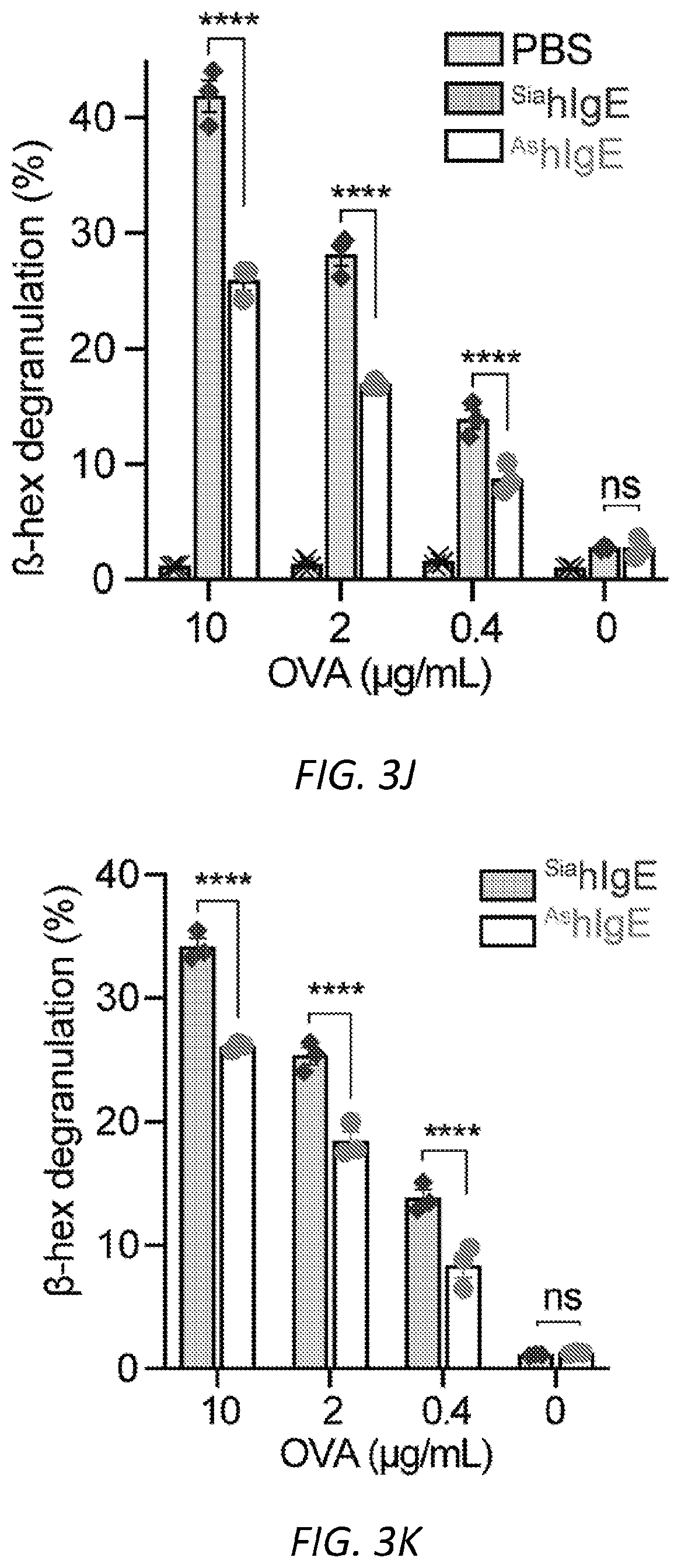
D00014
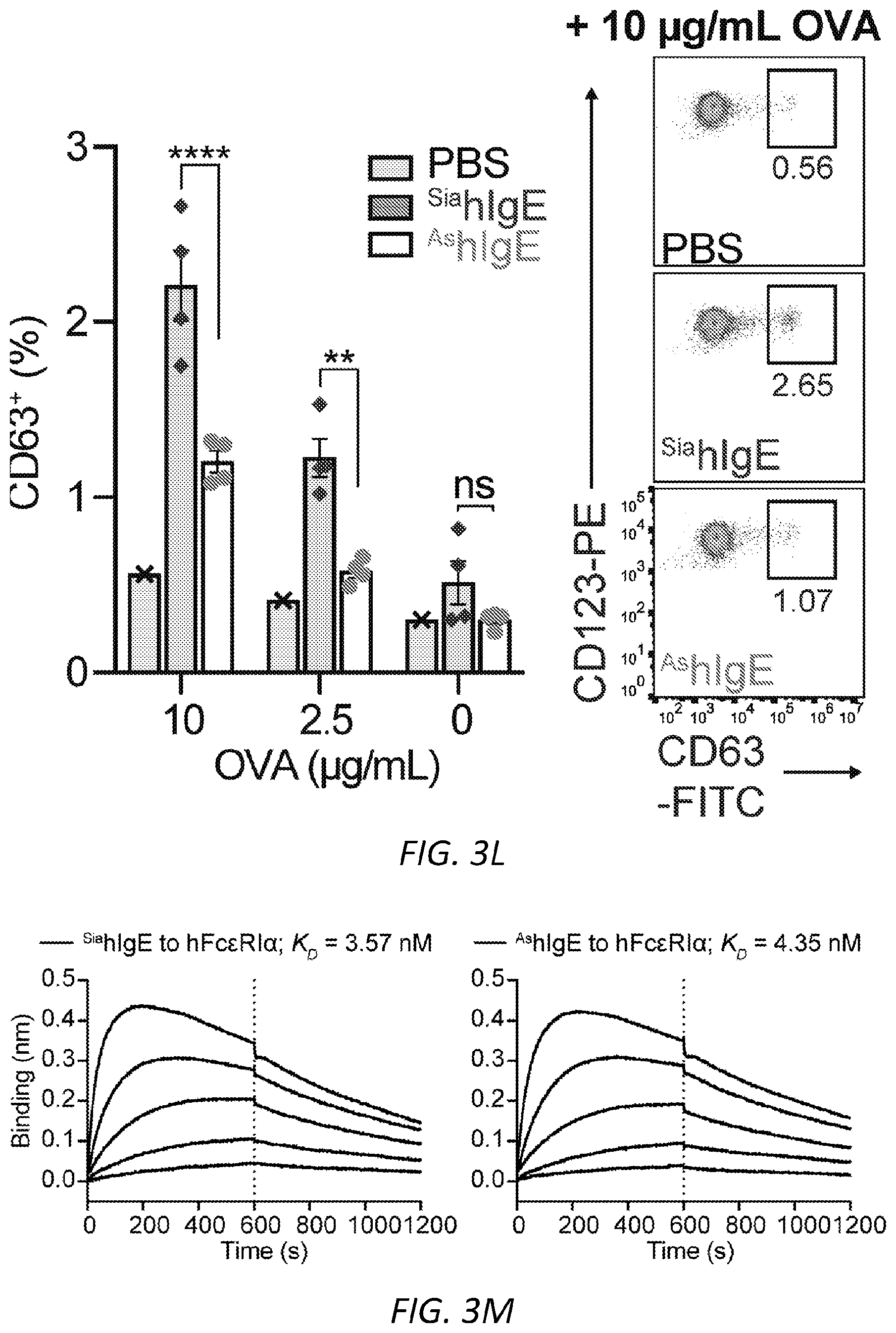
D00015
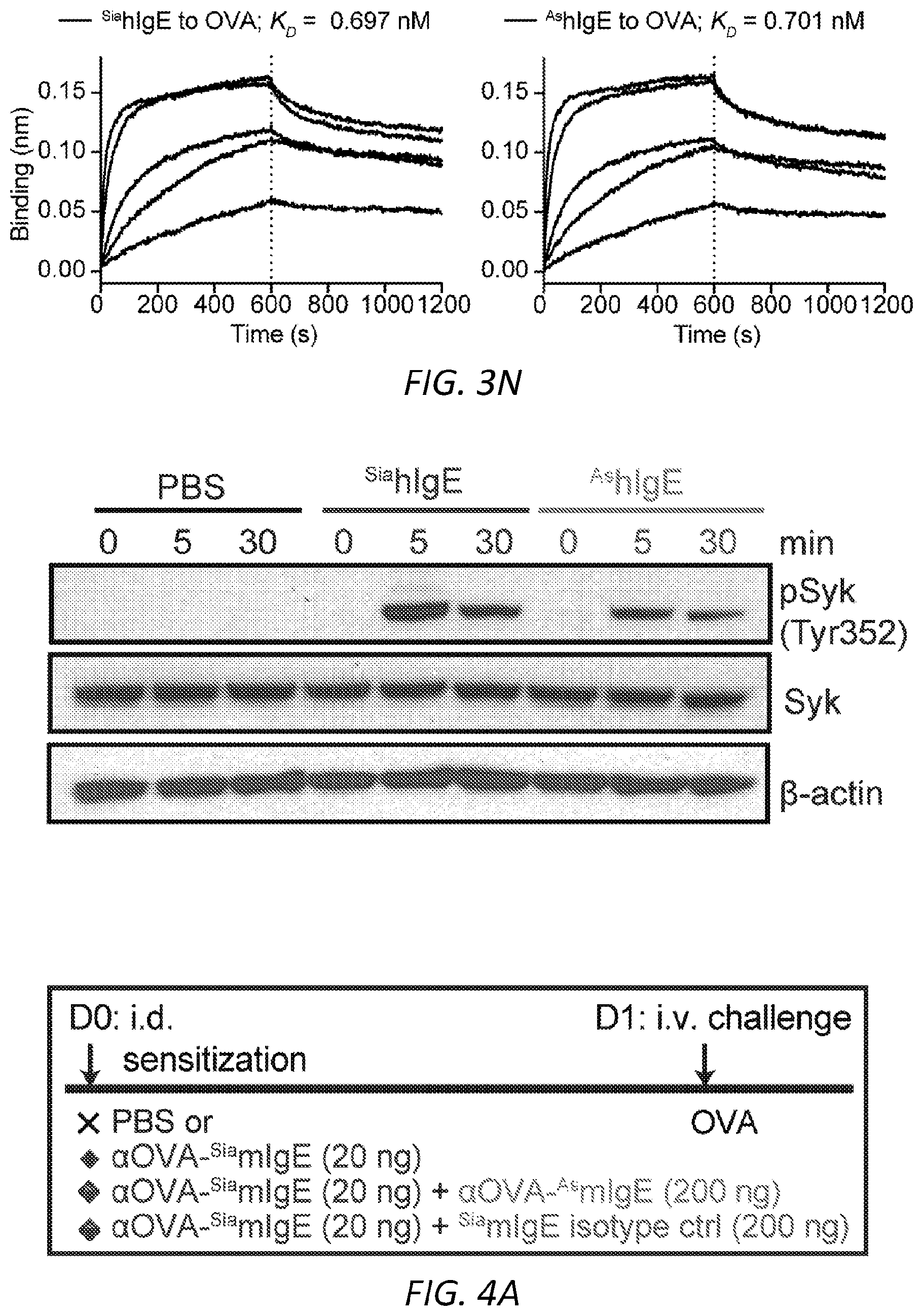
D00016
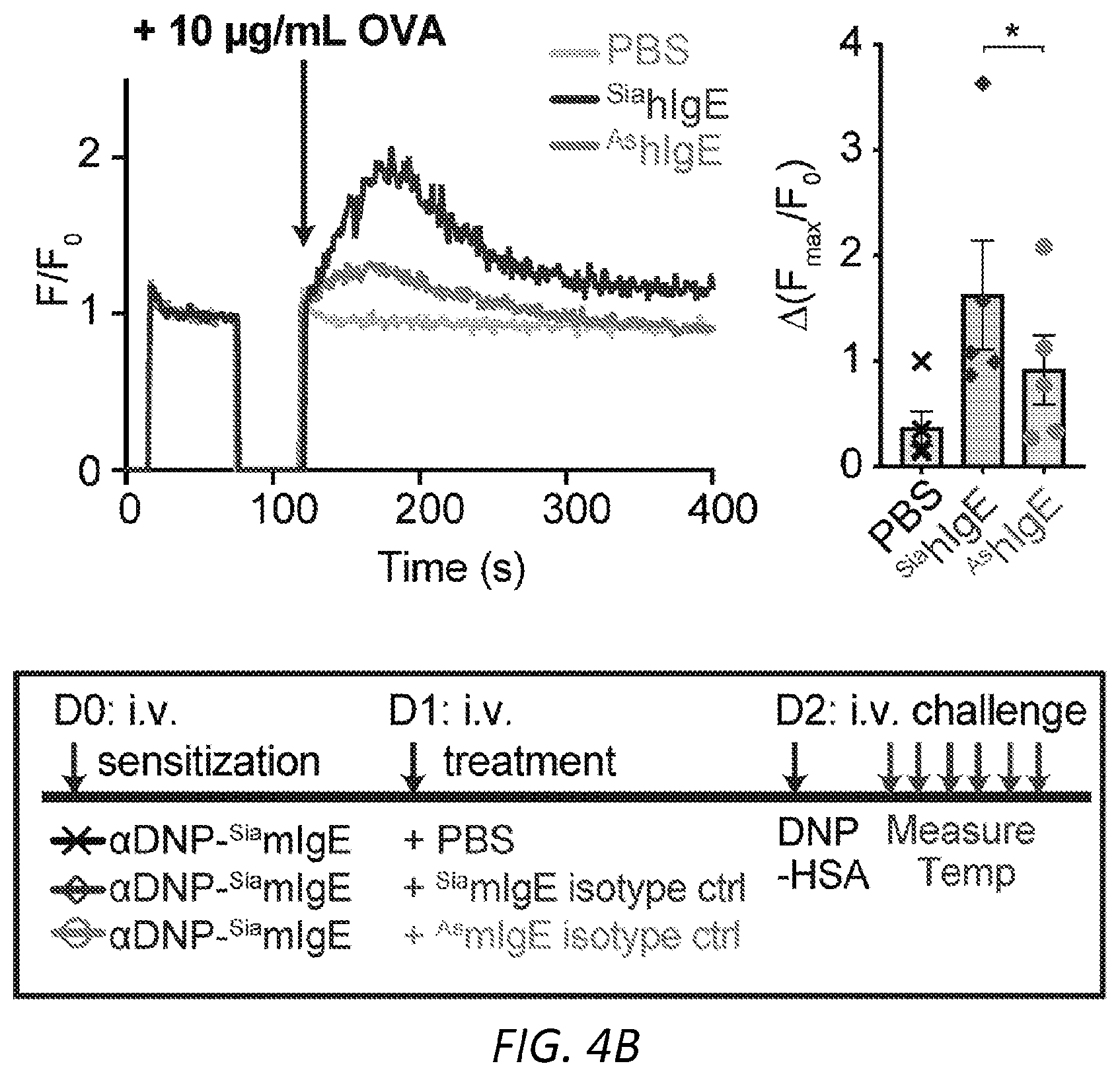
D00017
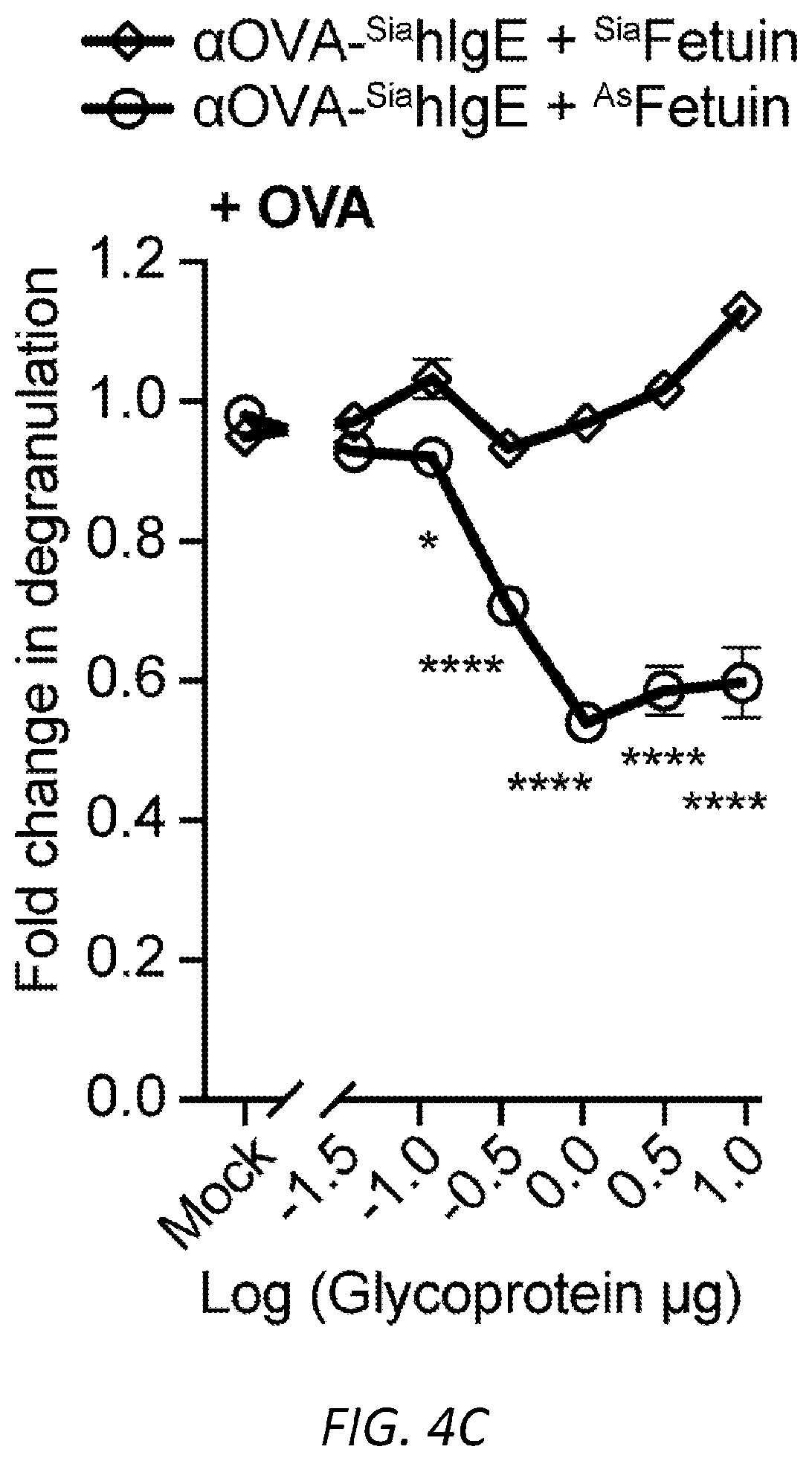
D00018

D00019

D00020
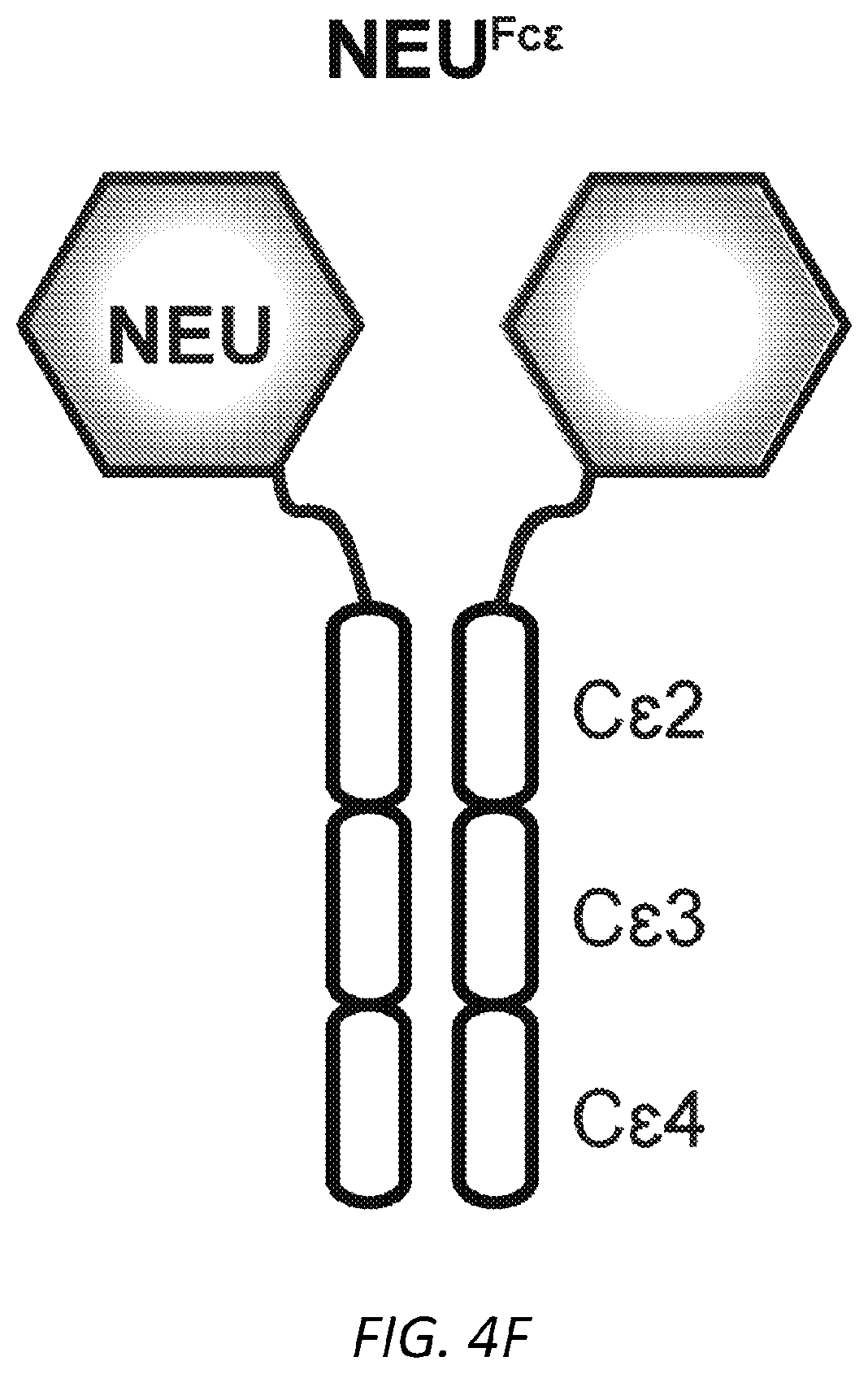
D00021

D00022

D00023

D00024
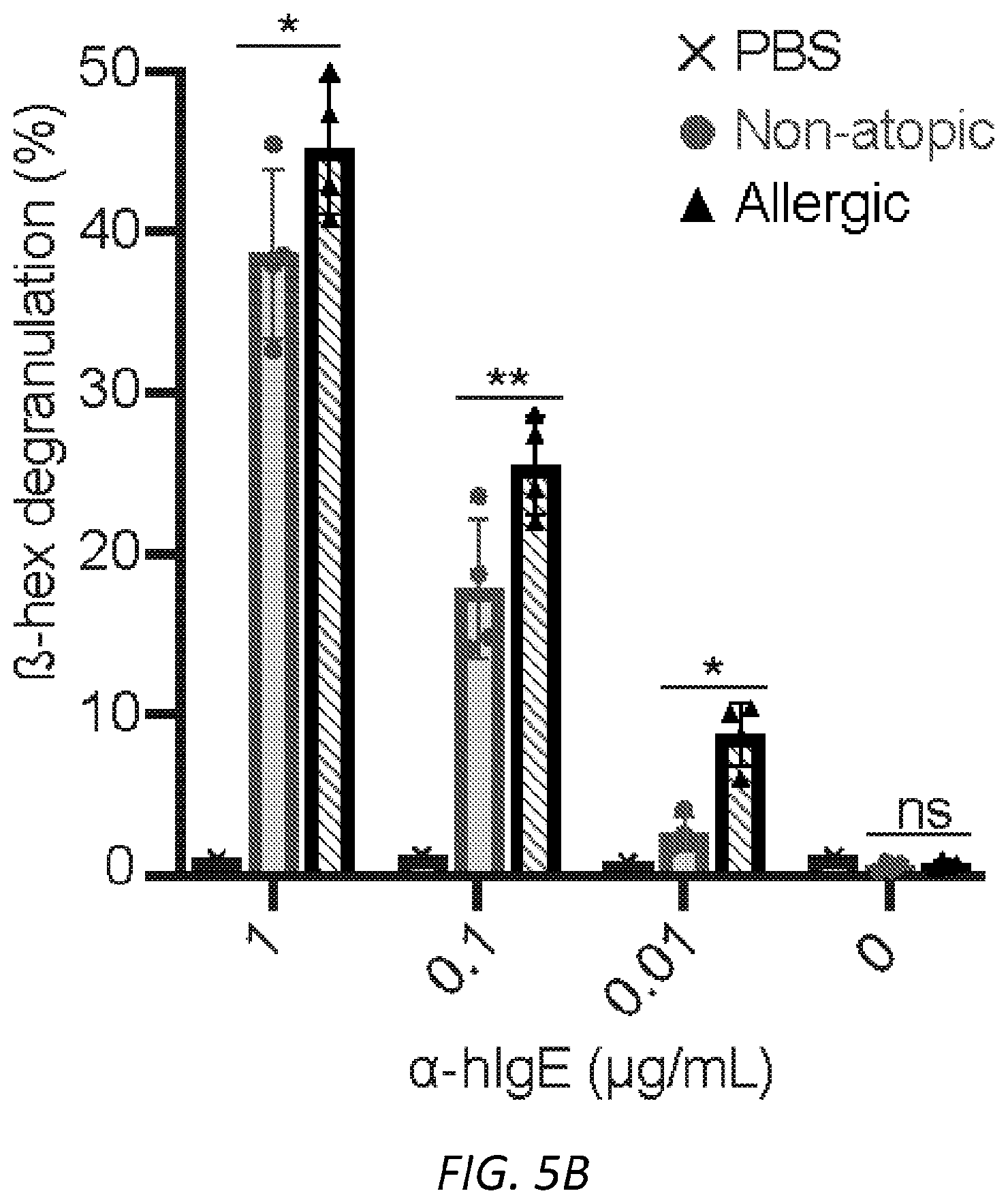
D00025
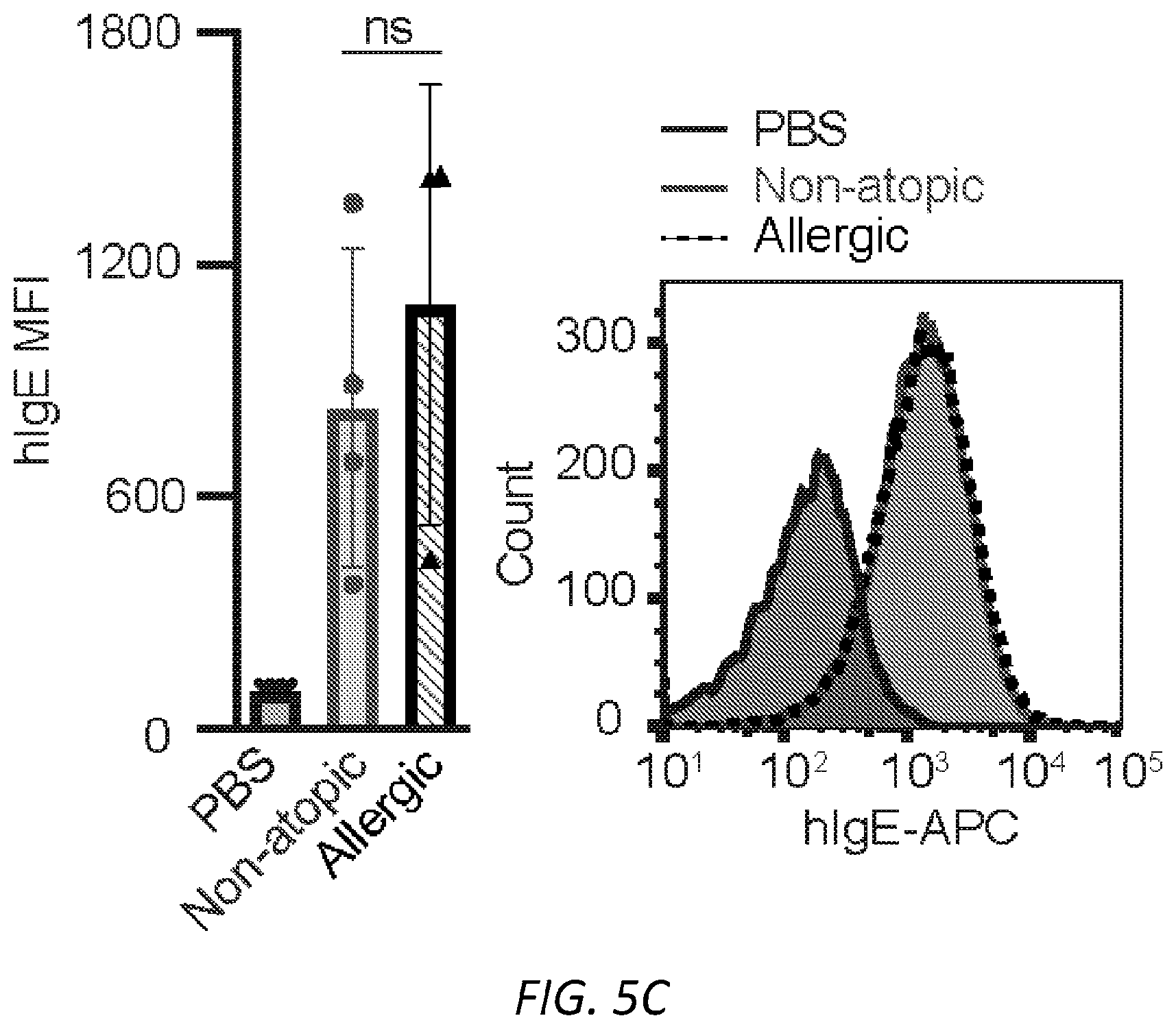
D00026

D00027
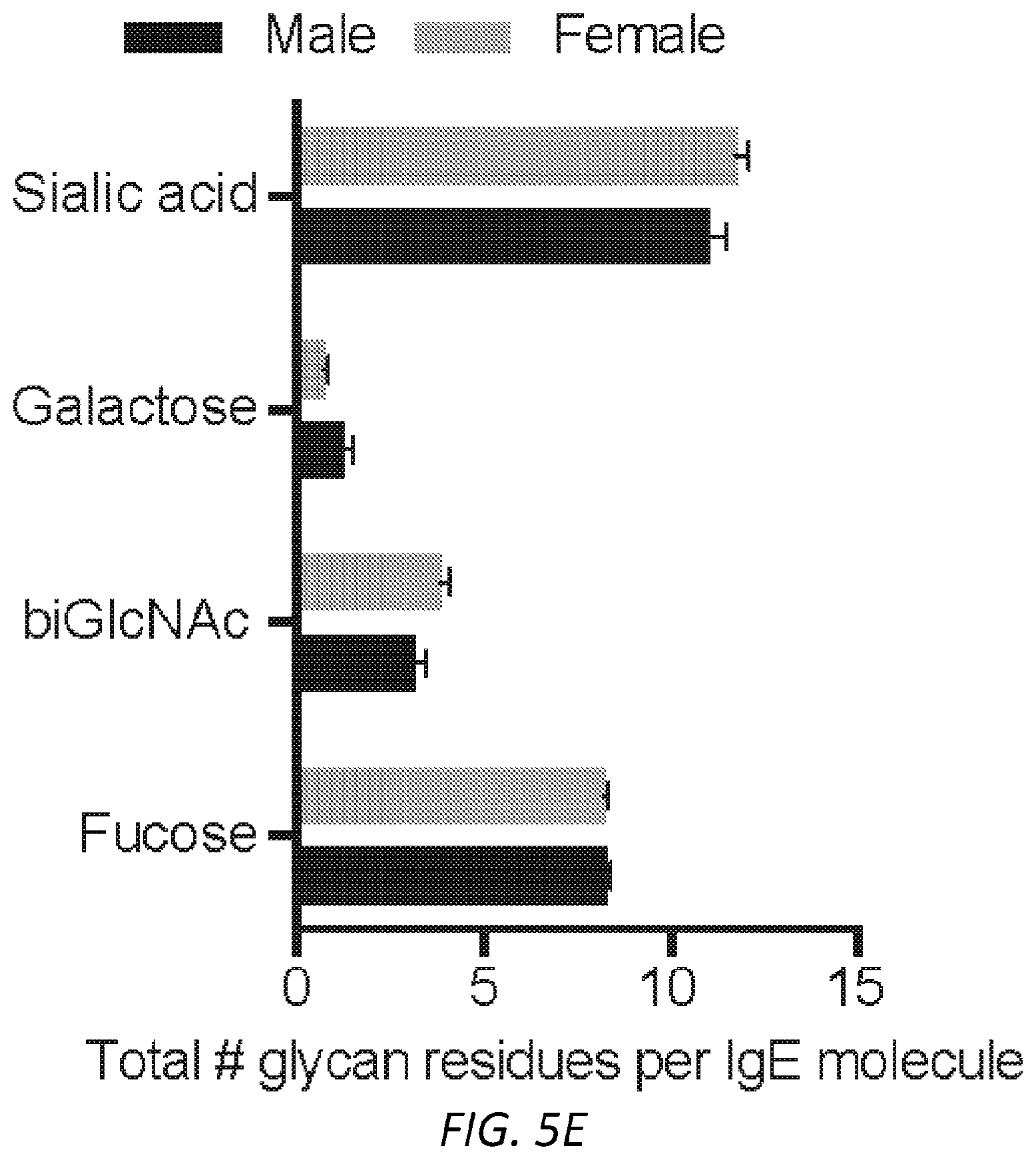
D00028

D00029

D00030
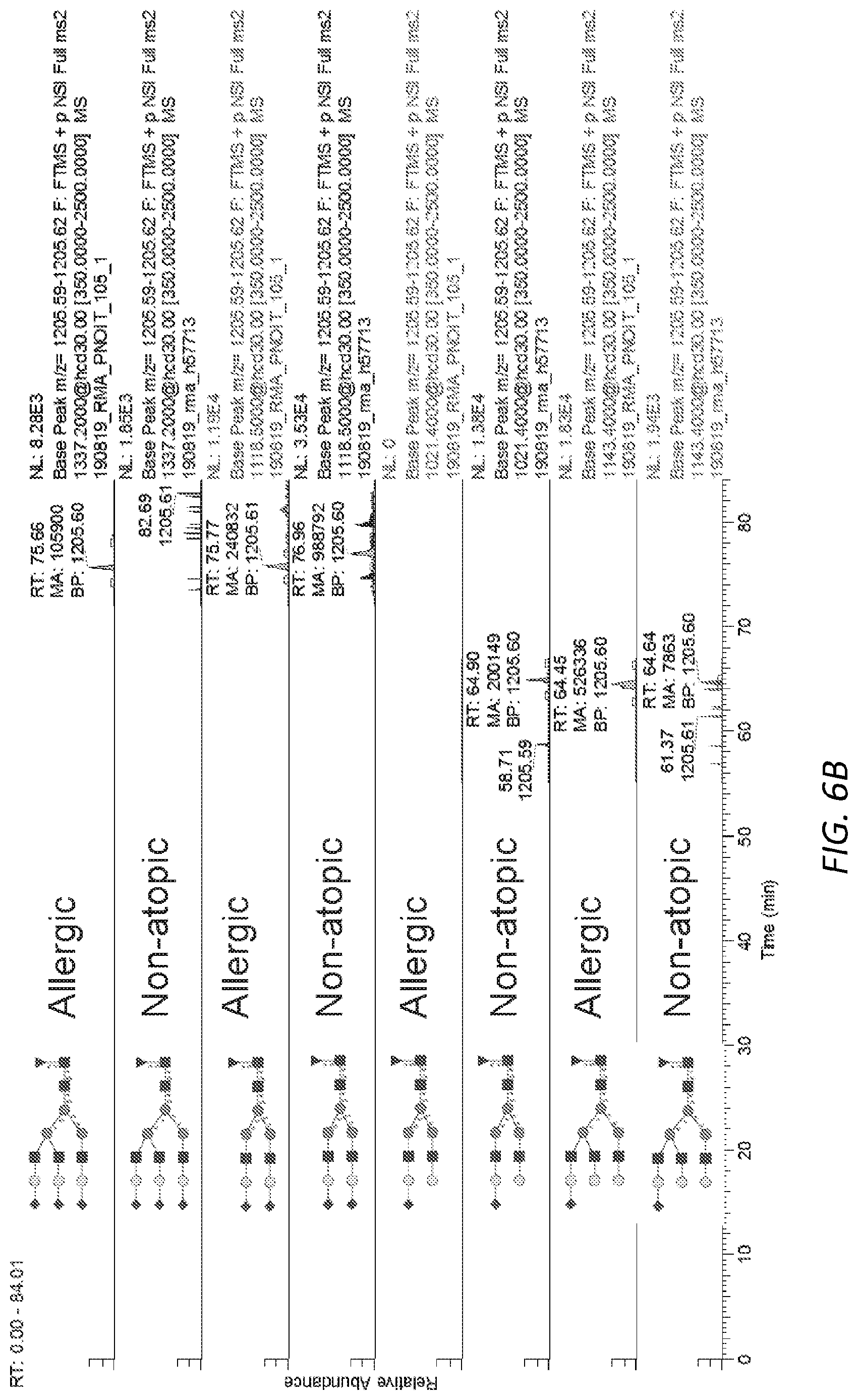
D00031
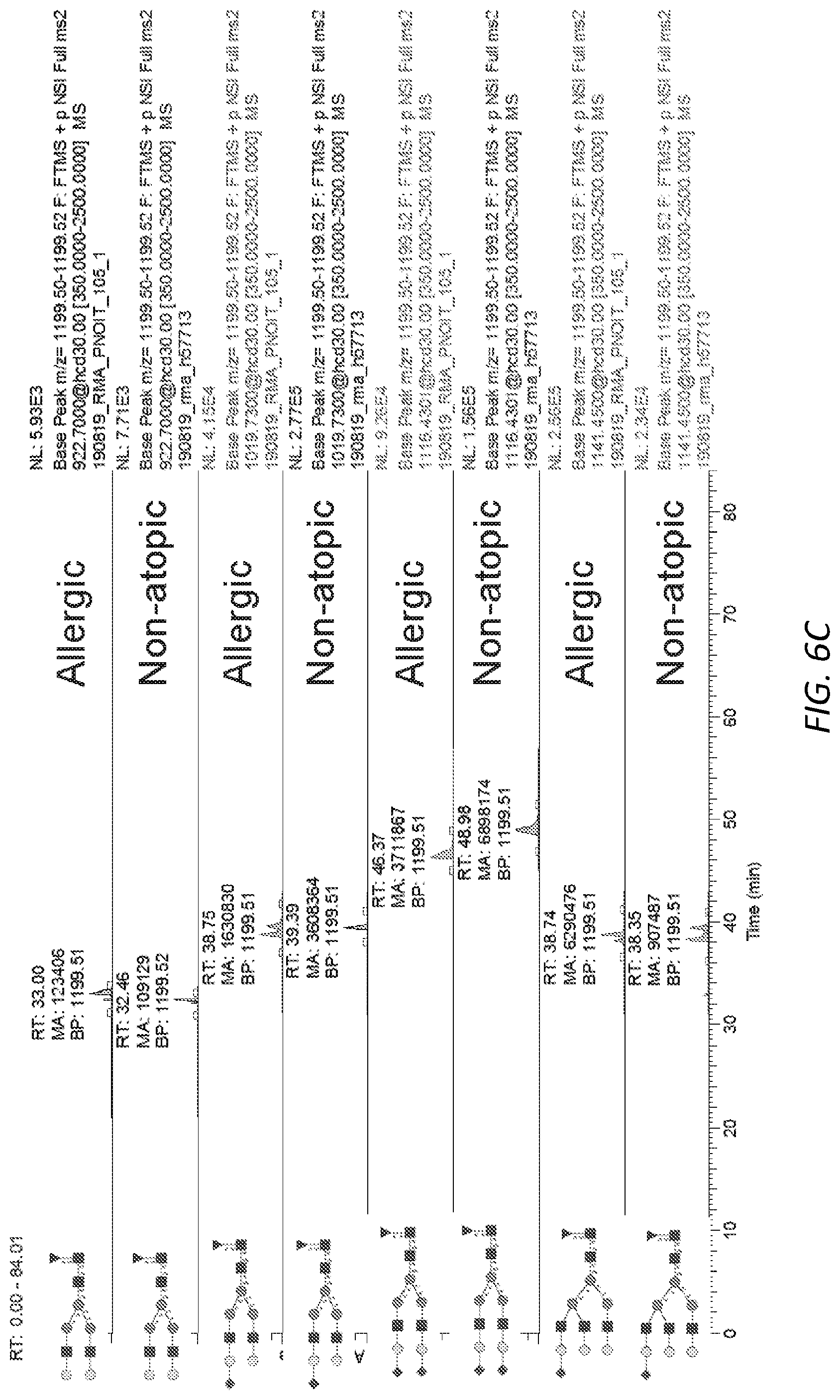
D00032

D00033

D00034
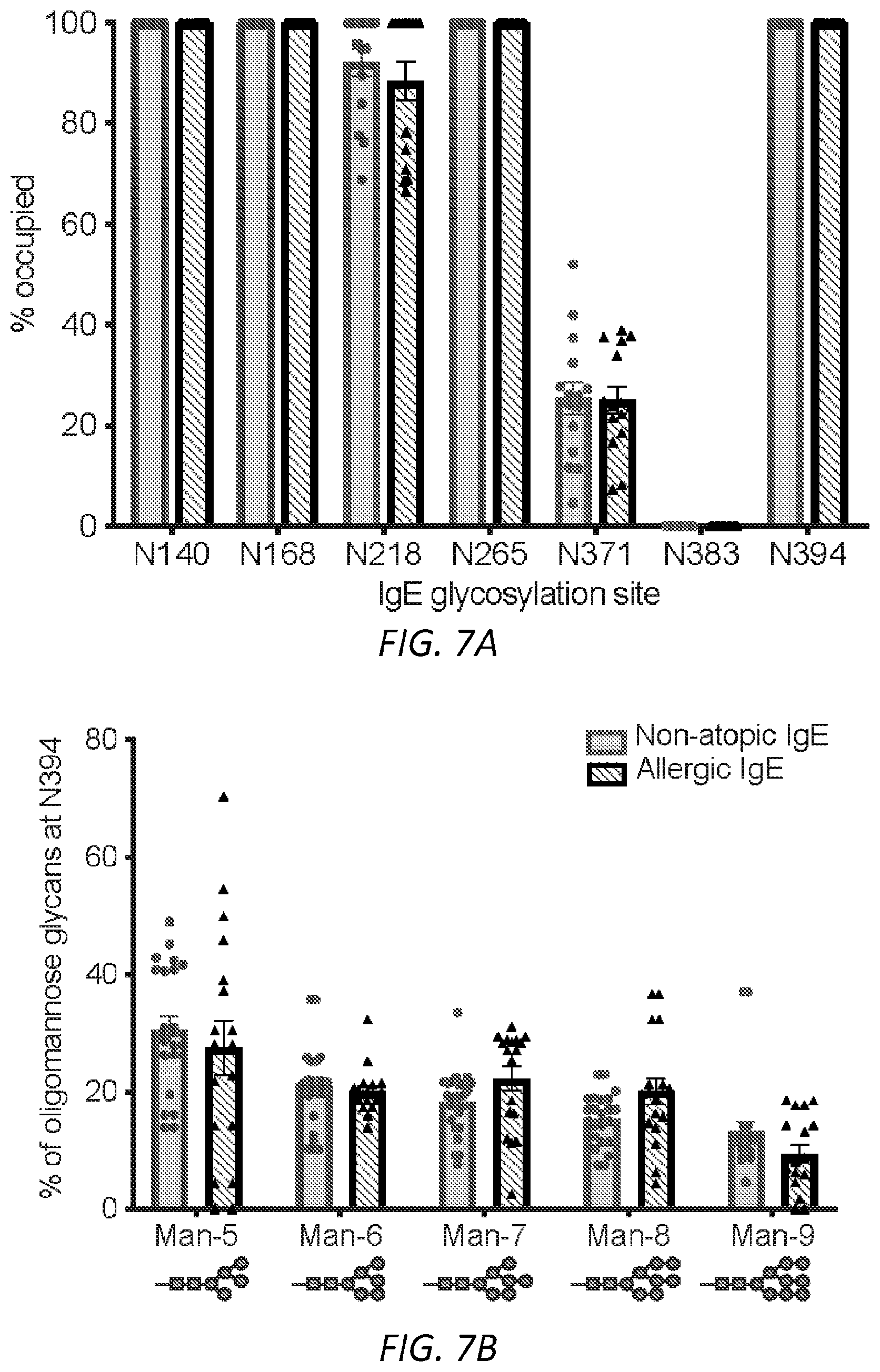
D00035

D00036

D00037
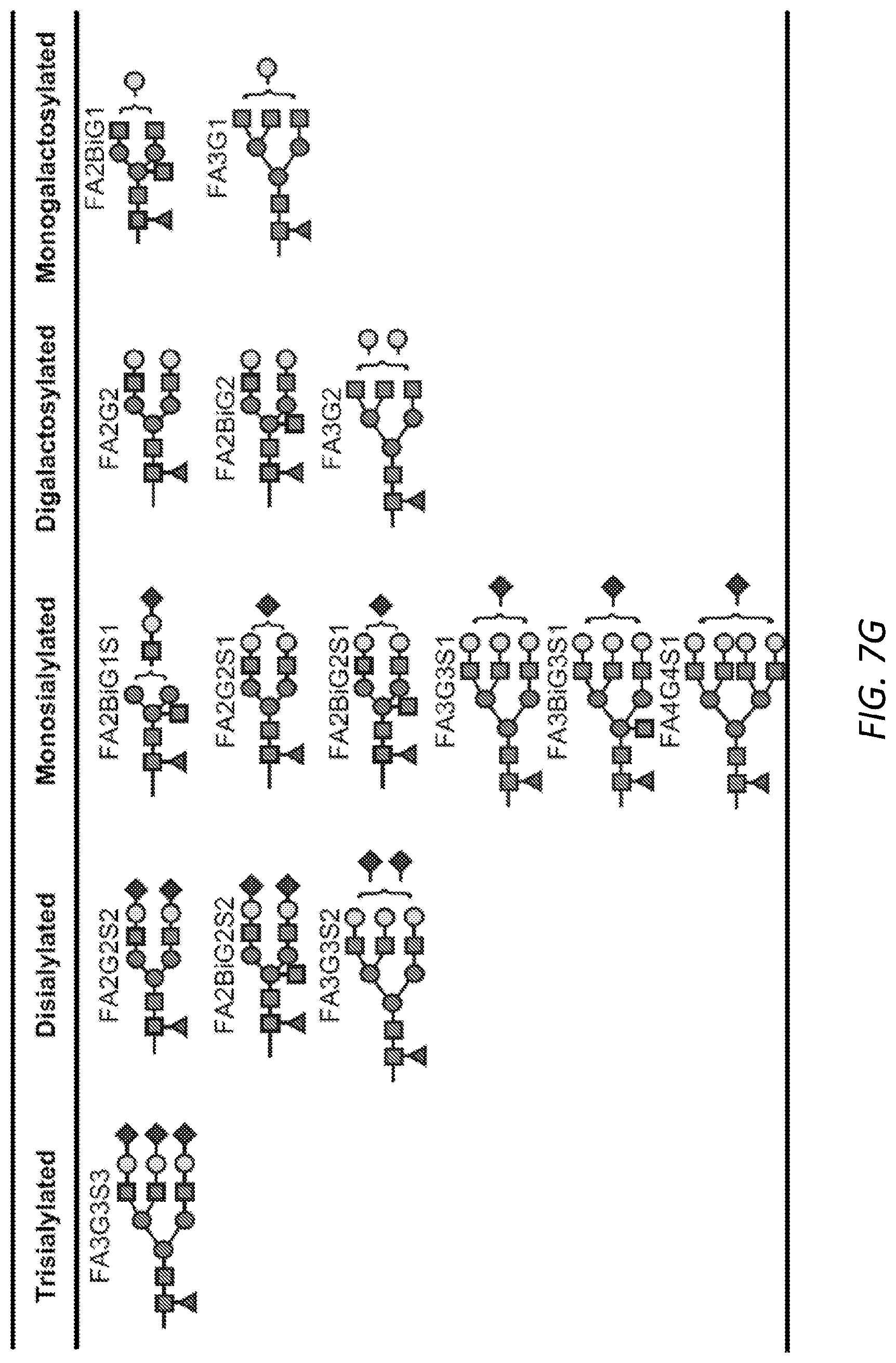
D00038
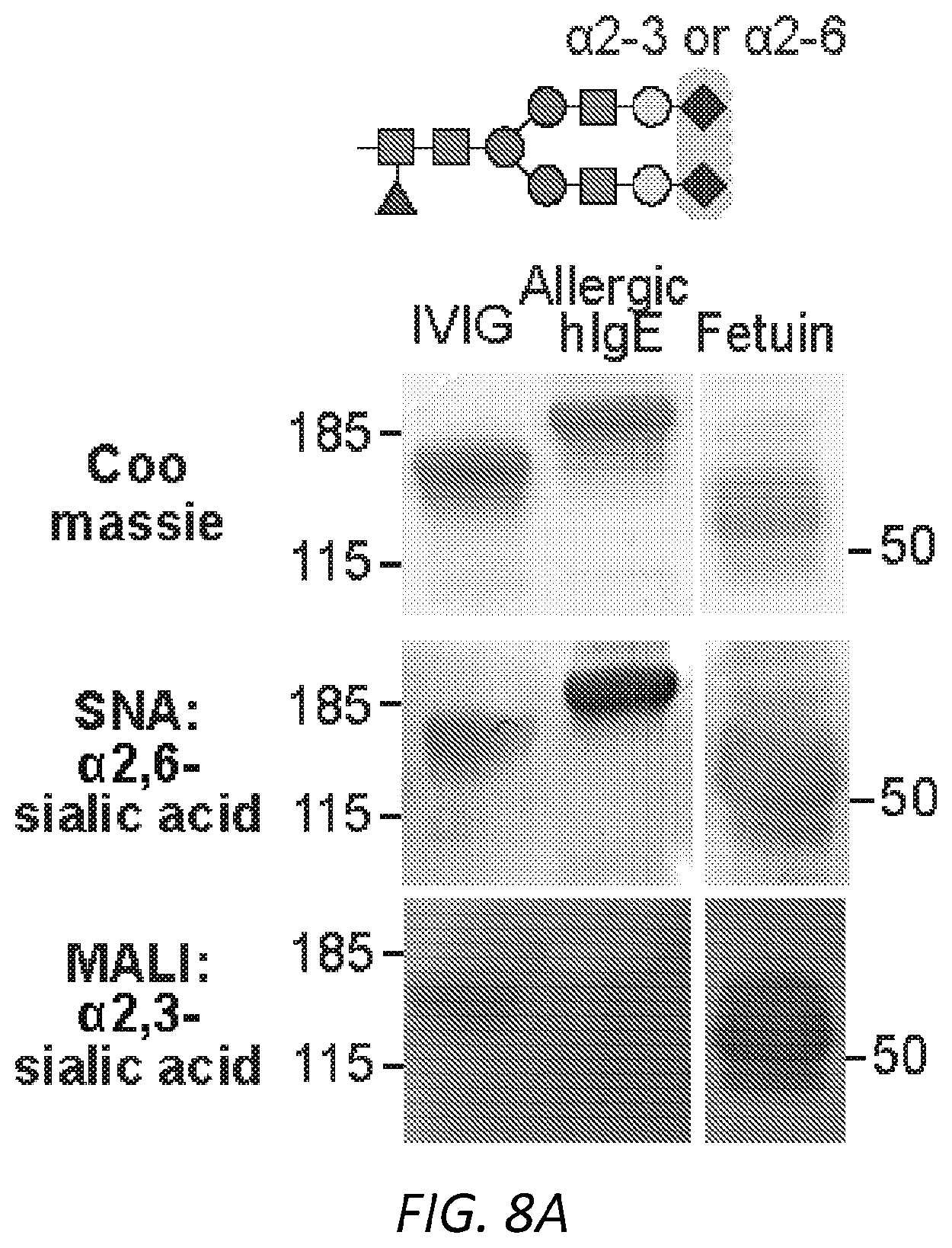
D00039
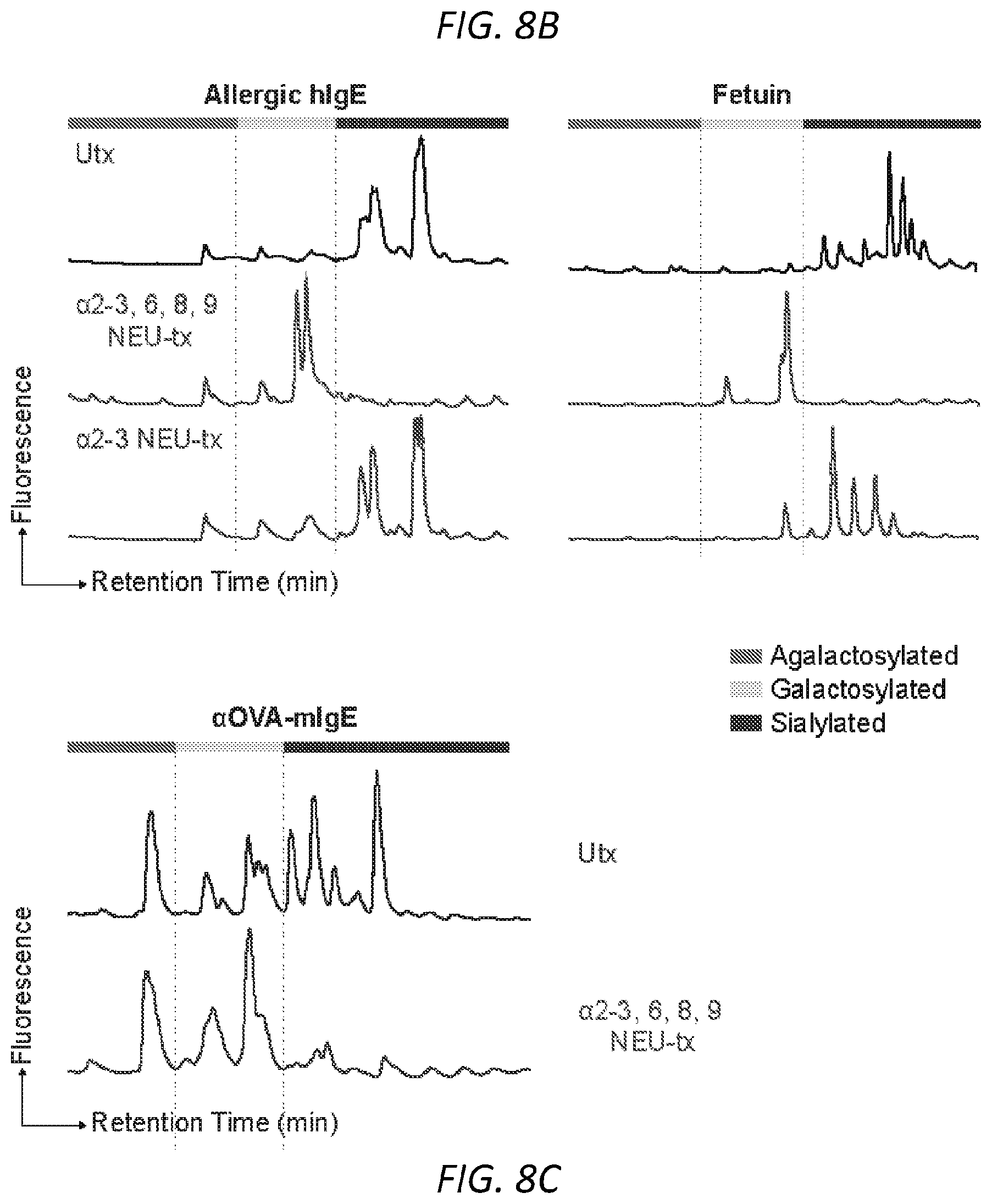
D00040

D00041
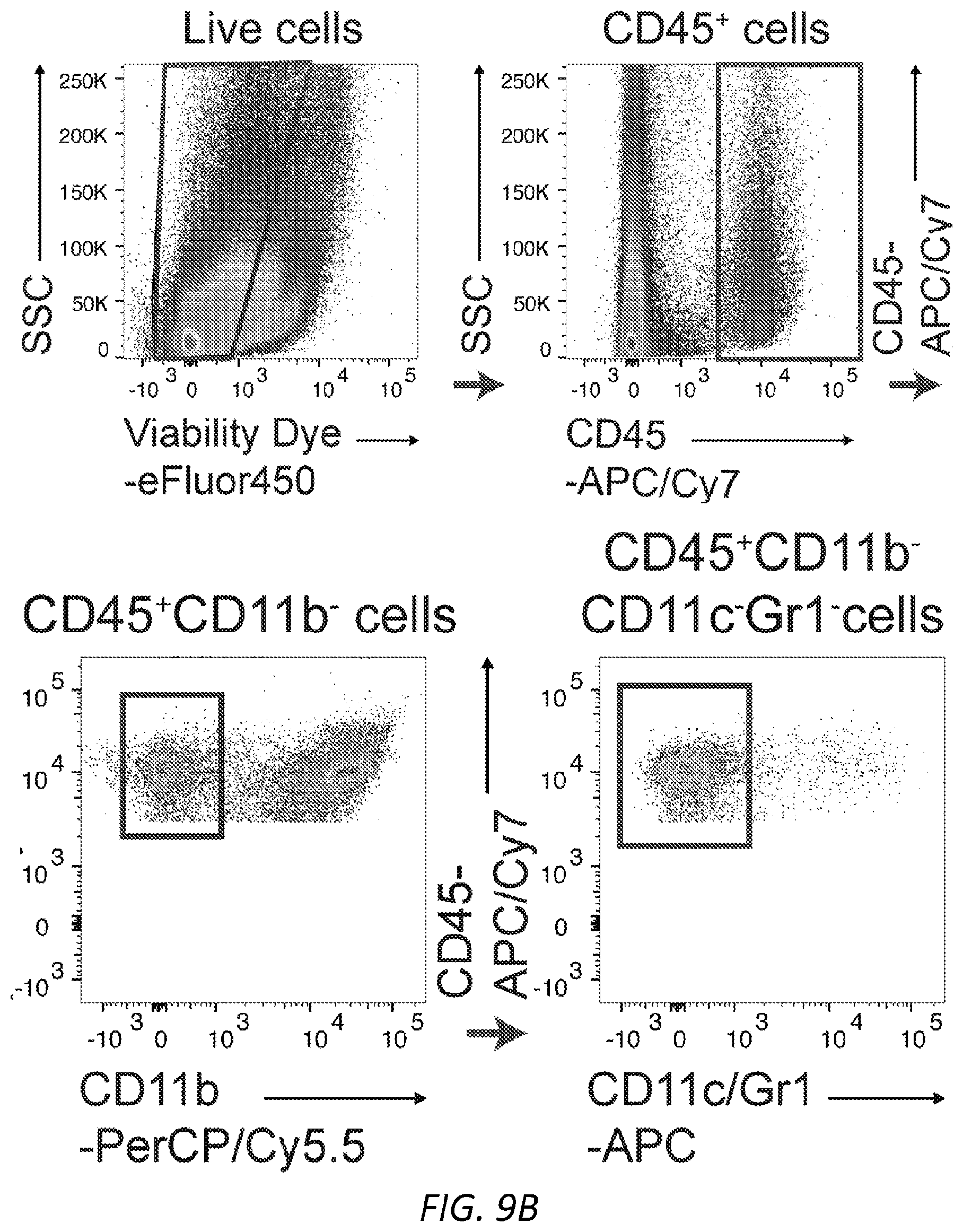
D00042
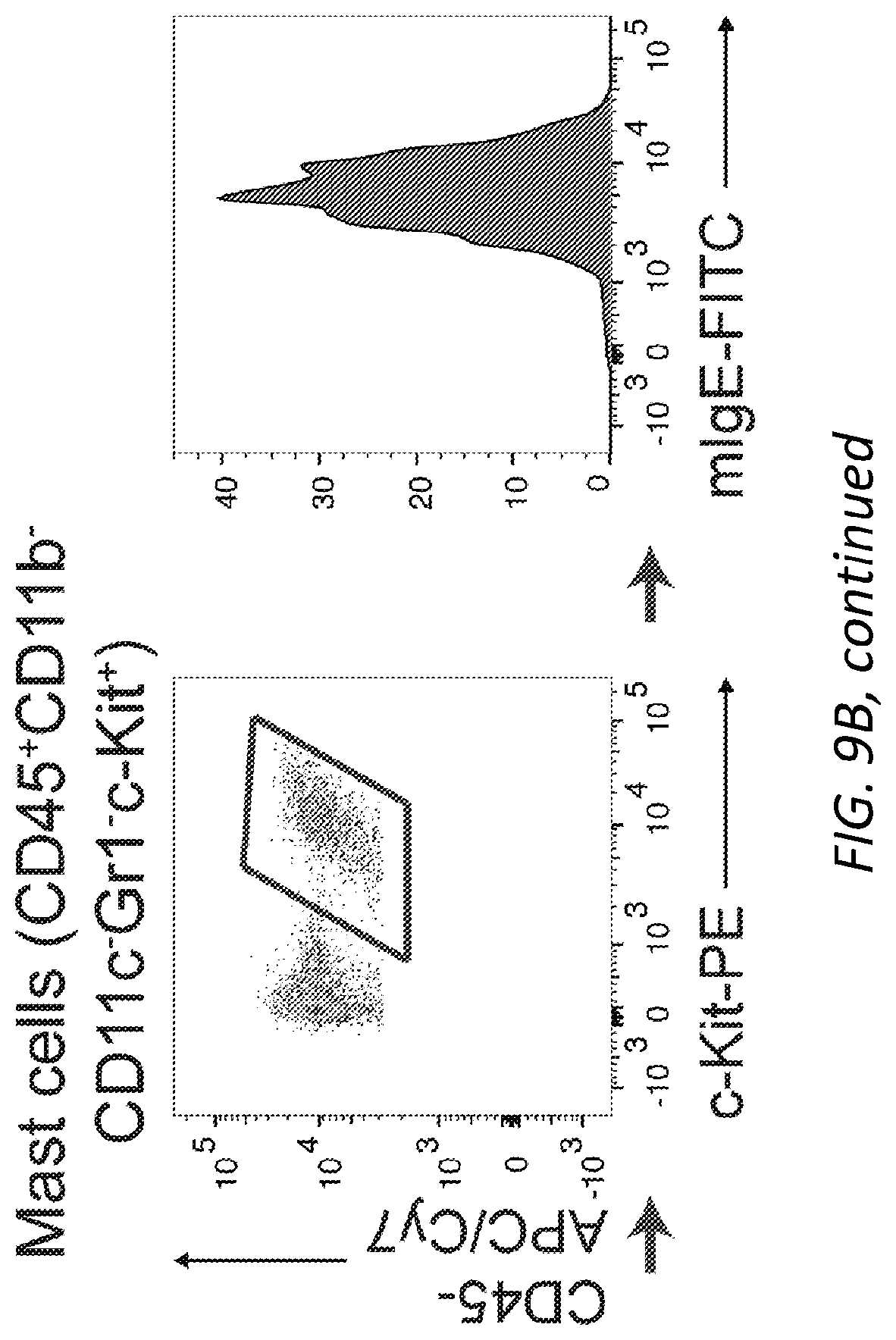
D00043
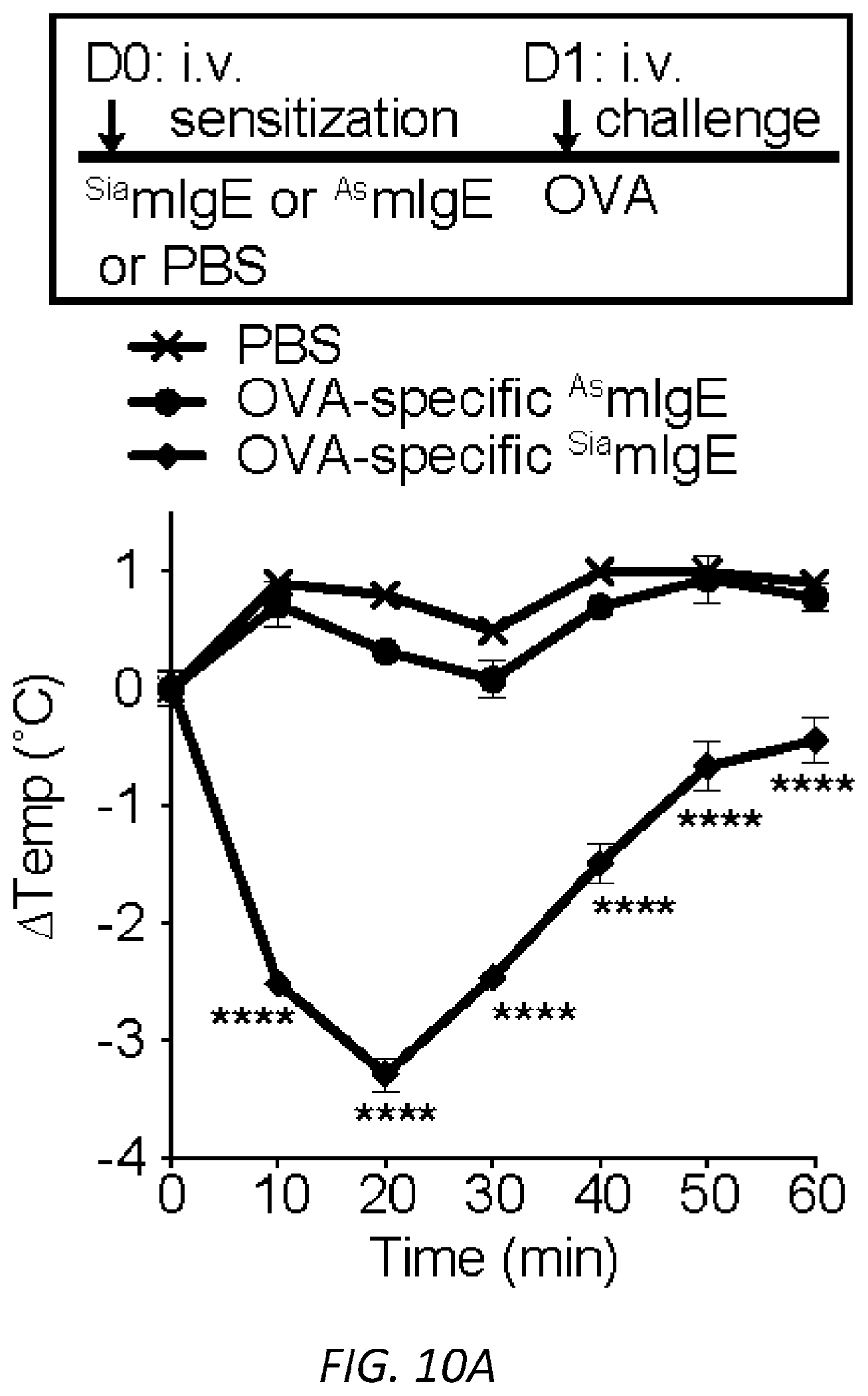
D00044
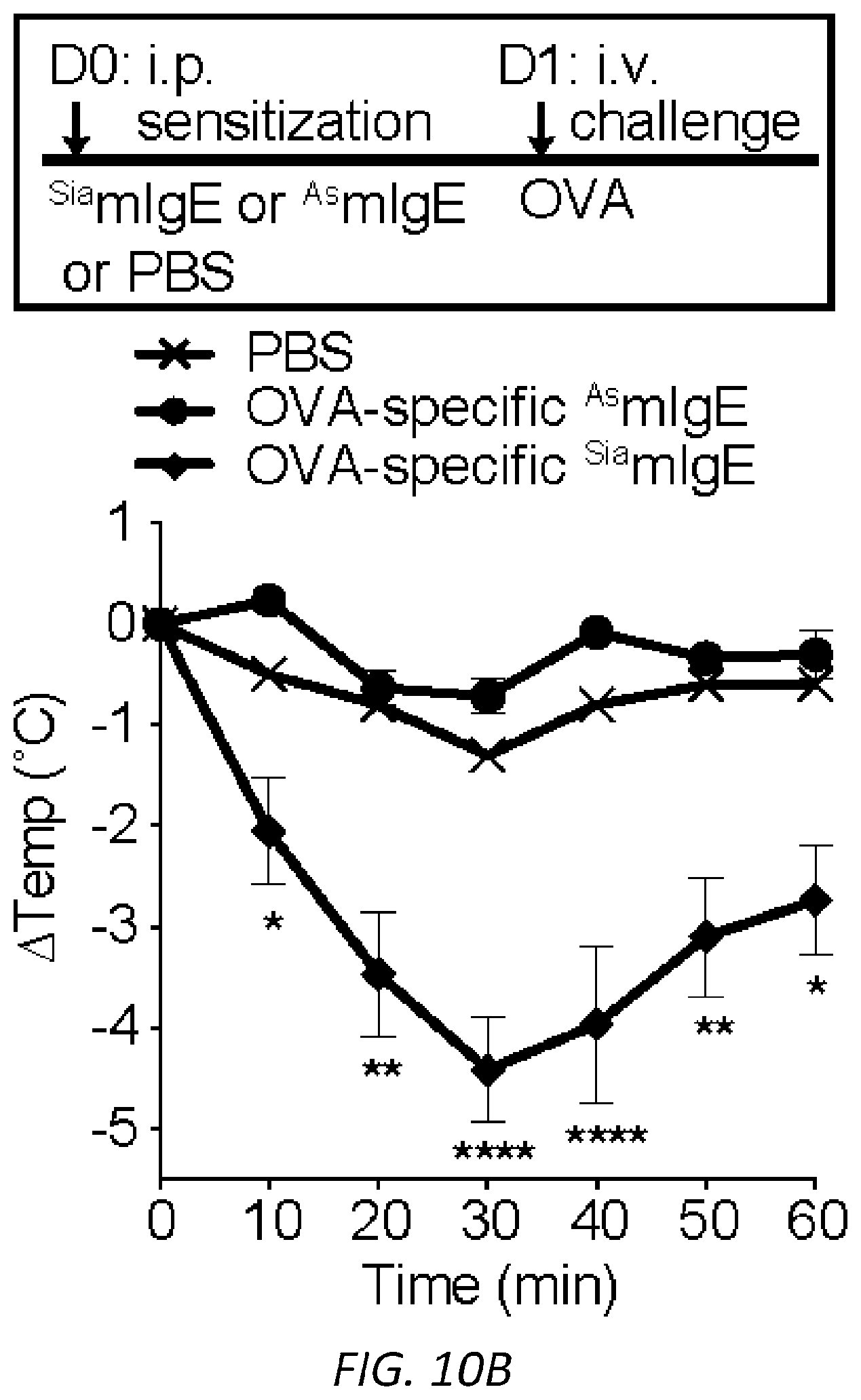
D00045
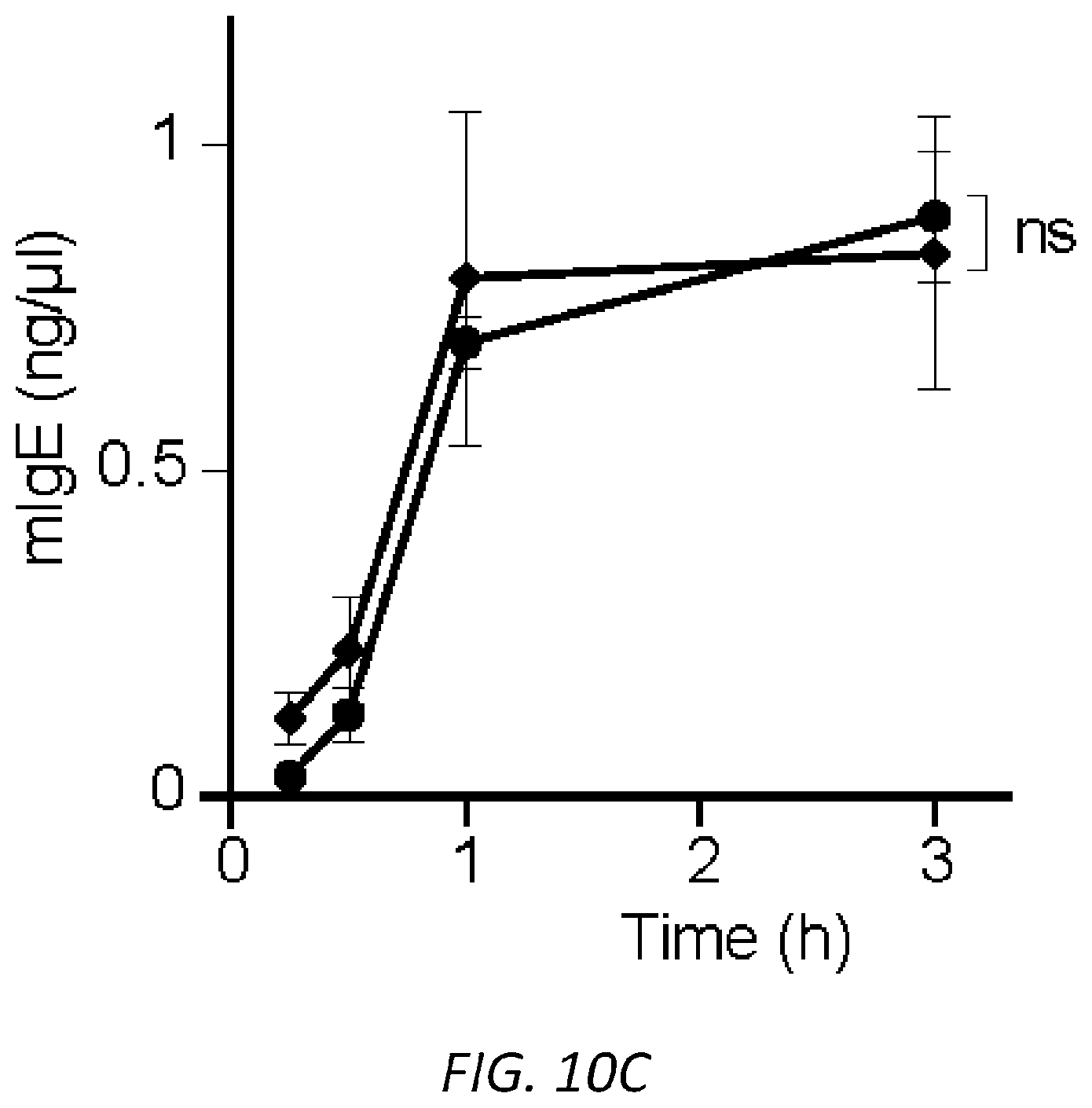
D00046

D00047

D00048
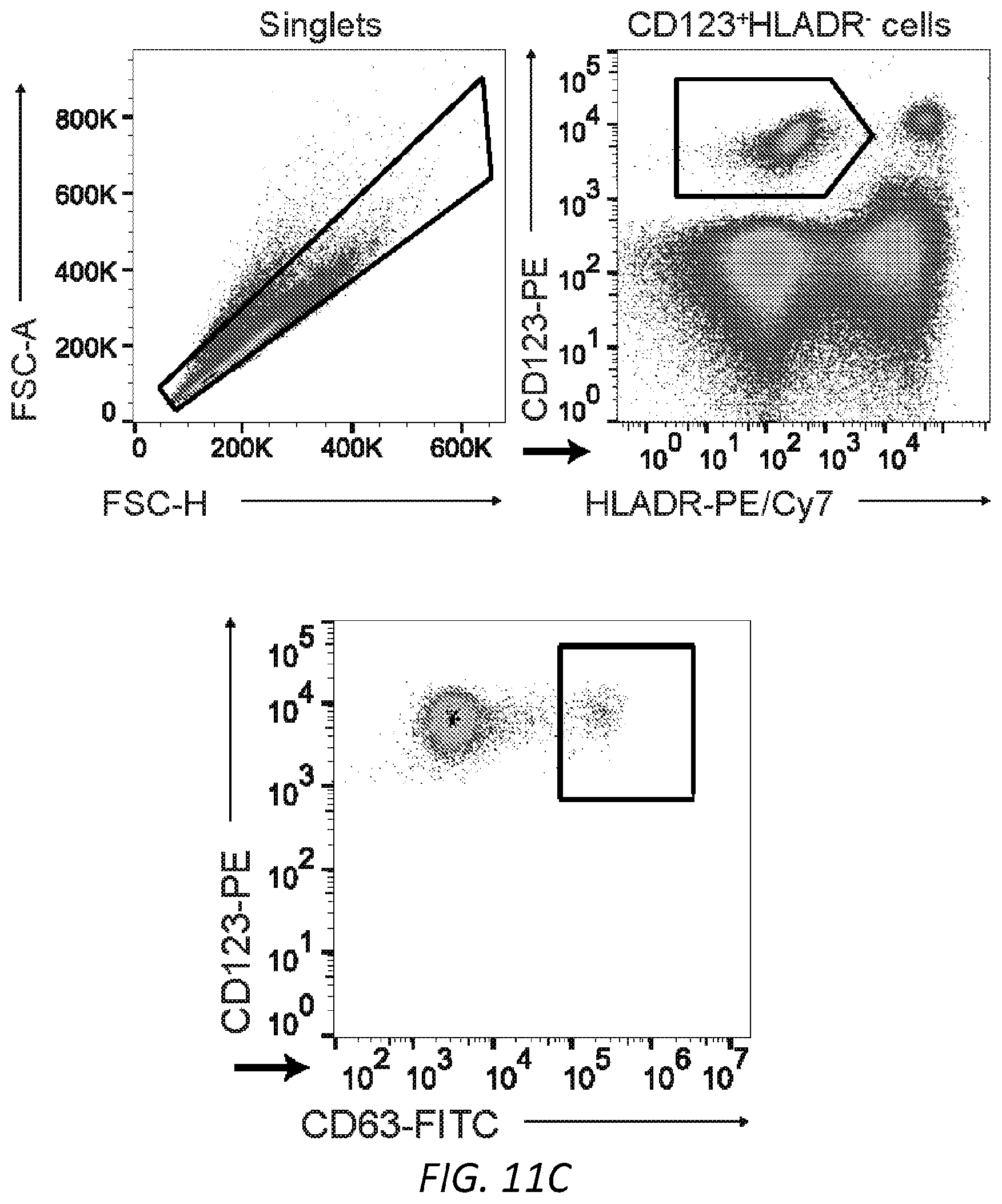
D00049
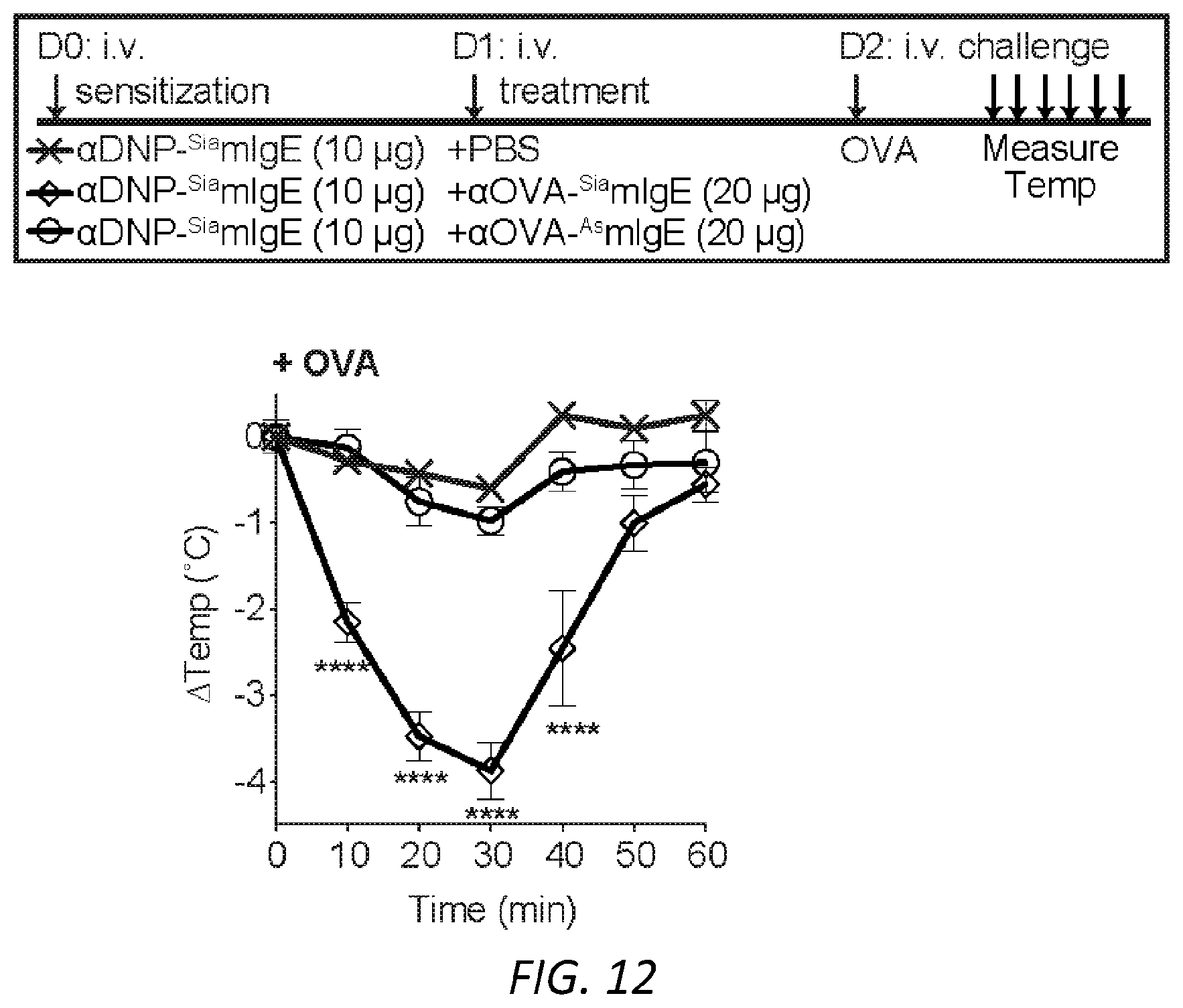
D00050
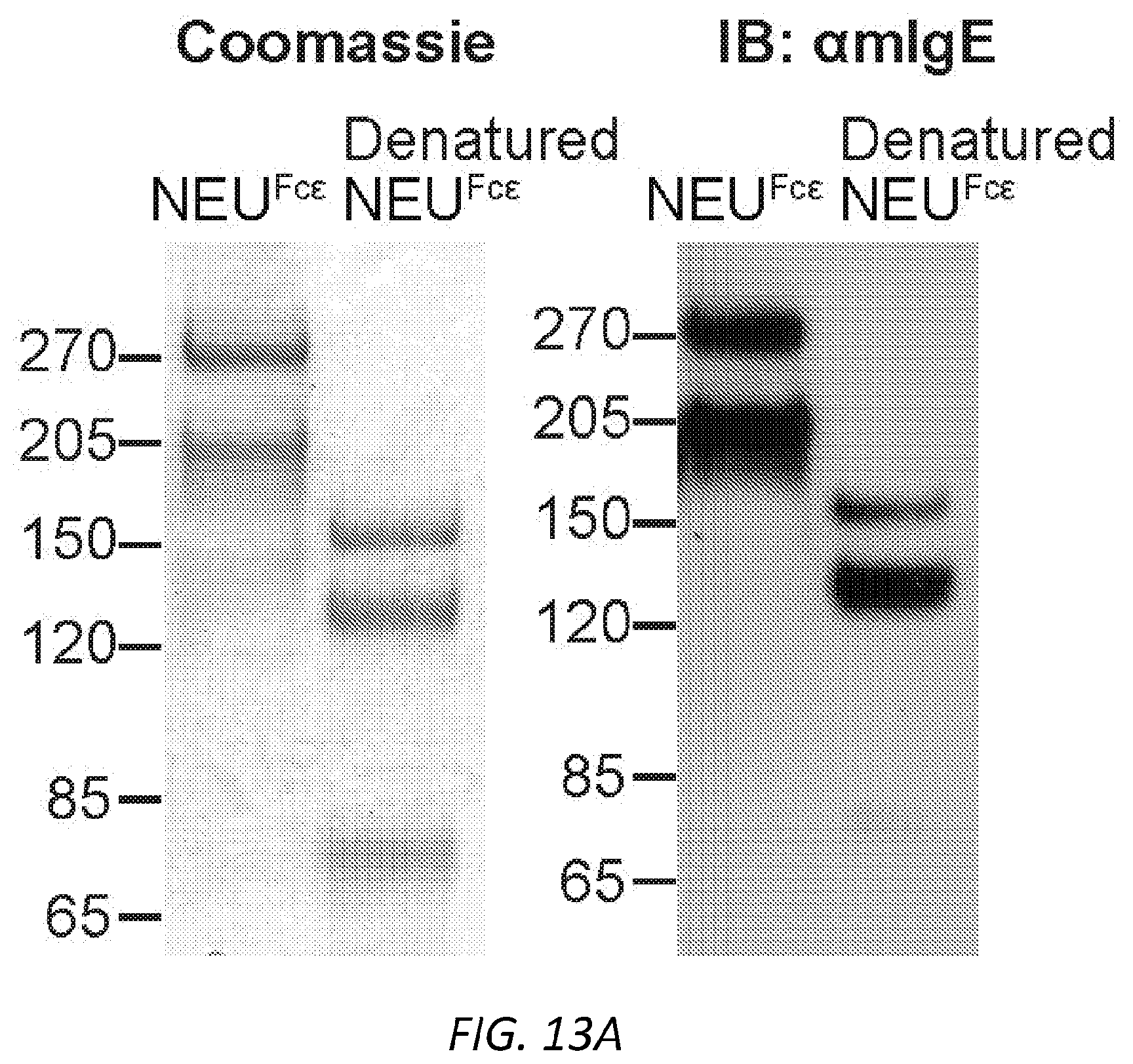
D00051
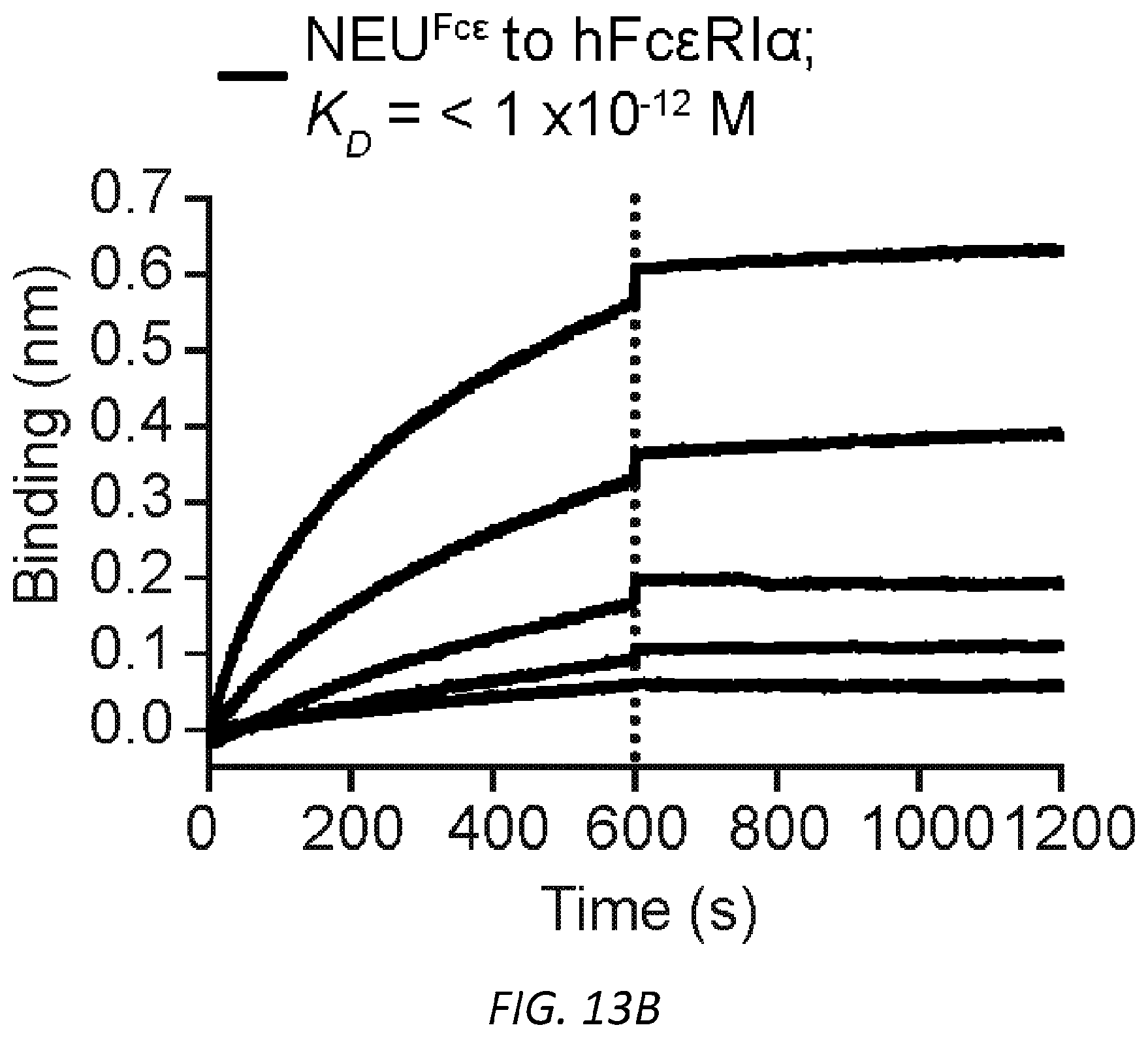
D00052
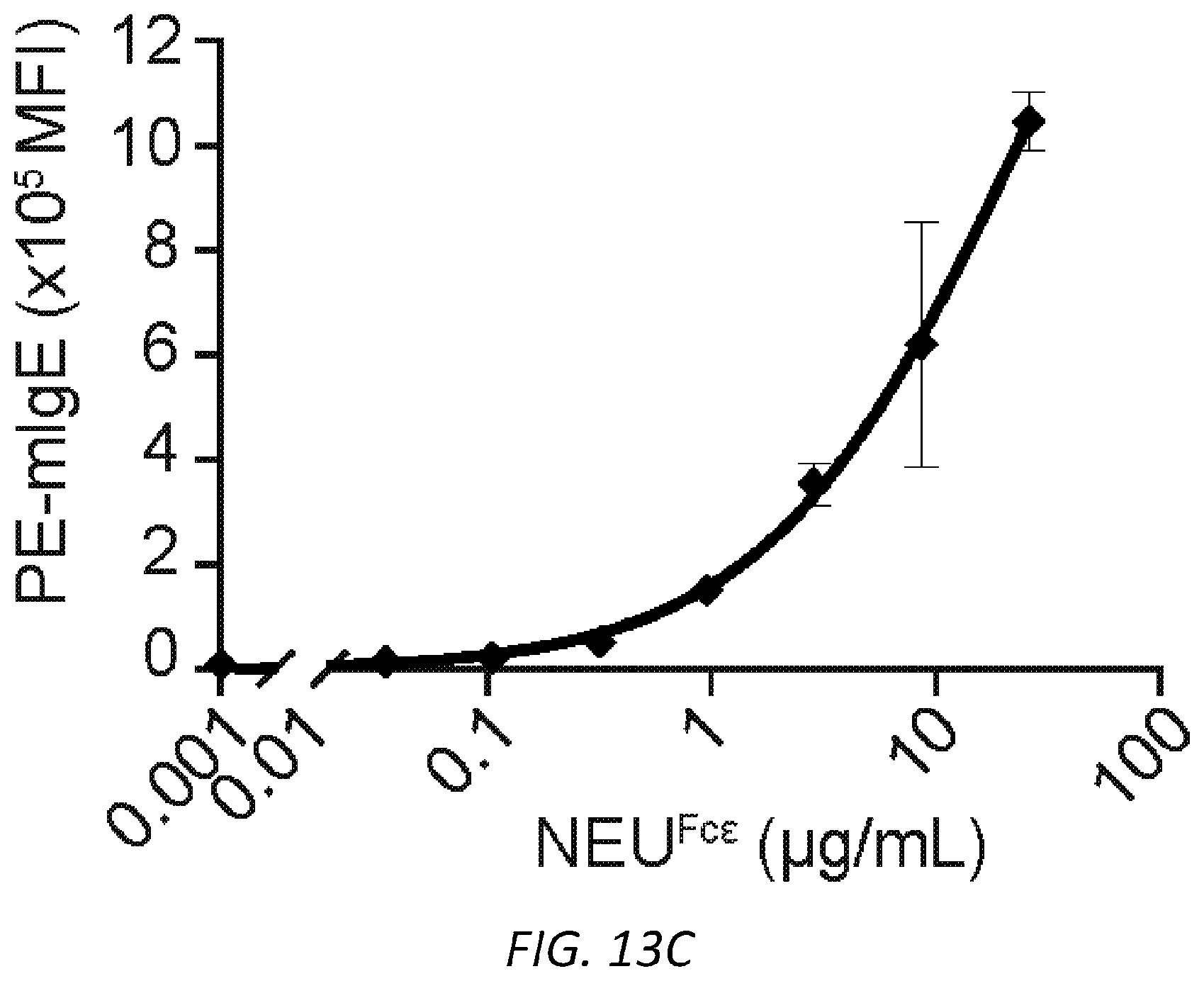
D00053

D00054
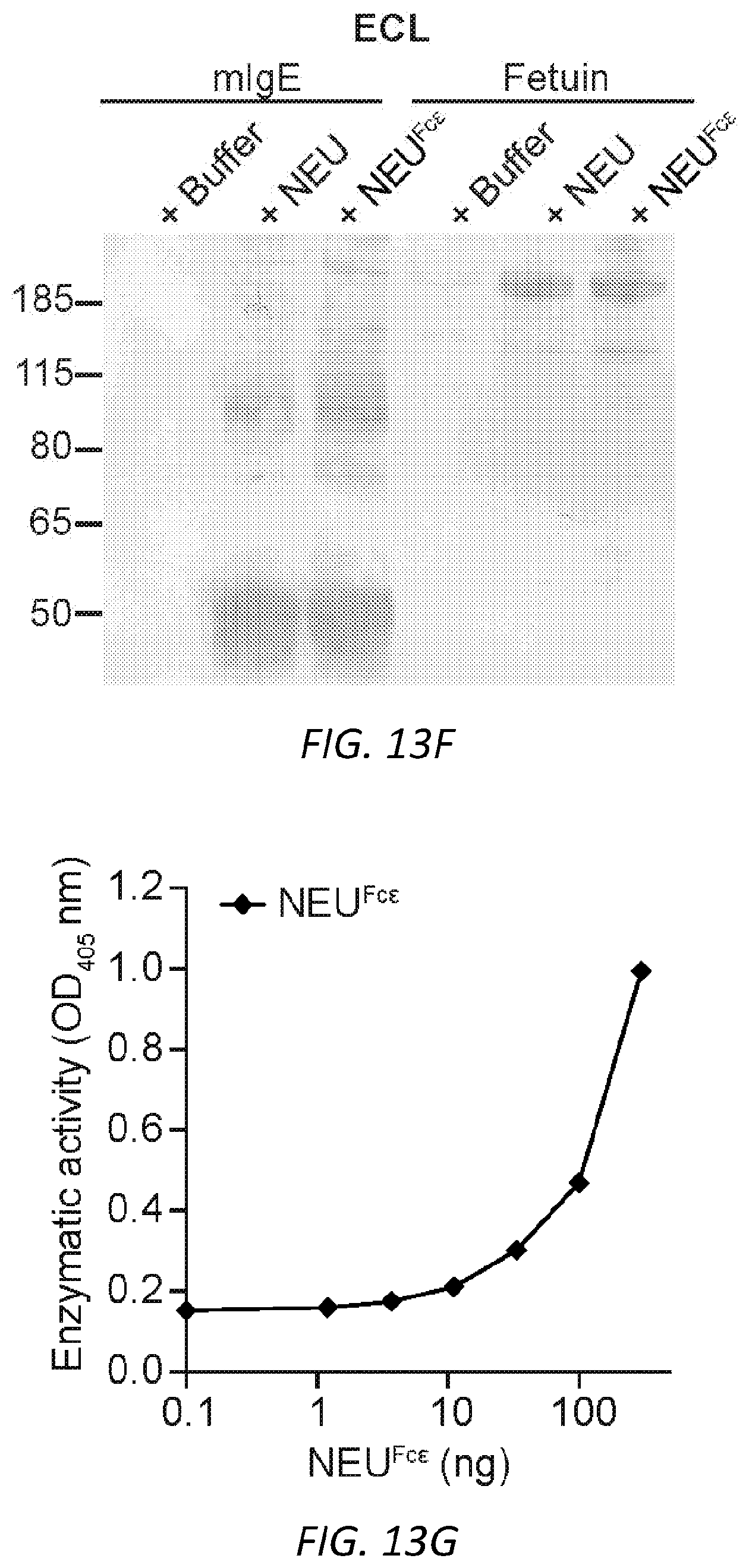
D00055

D00056
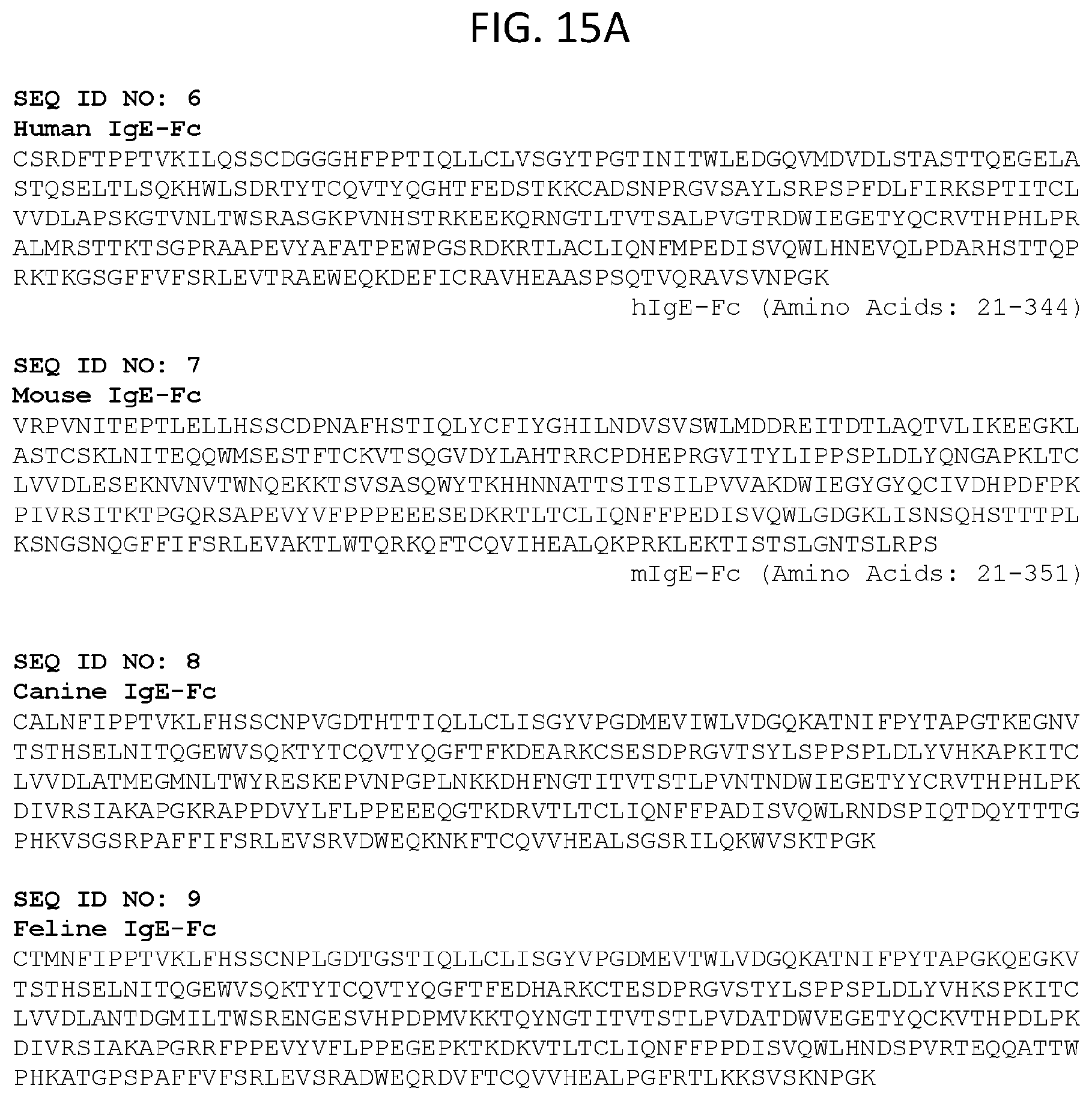
D00057
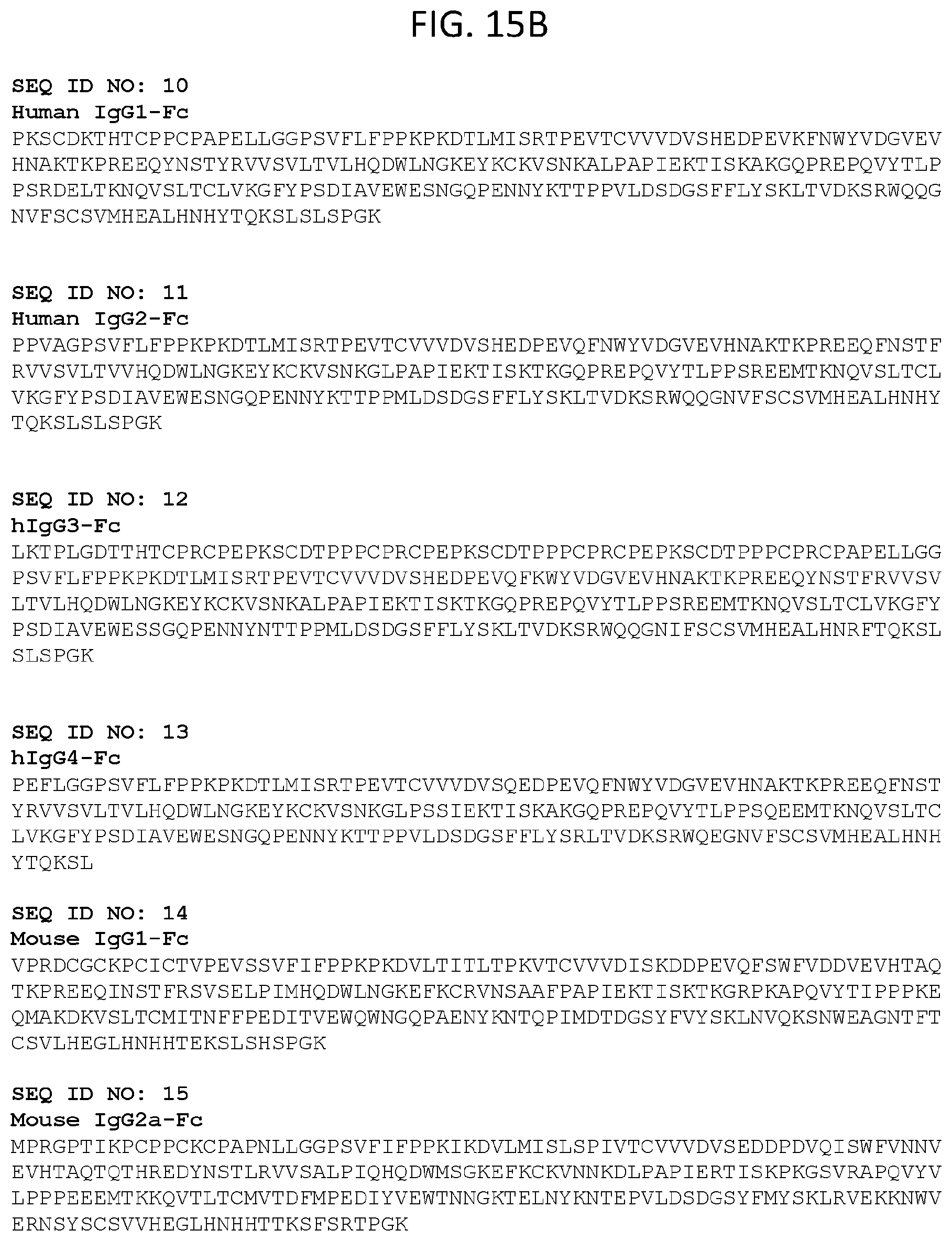
D00058
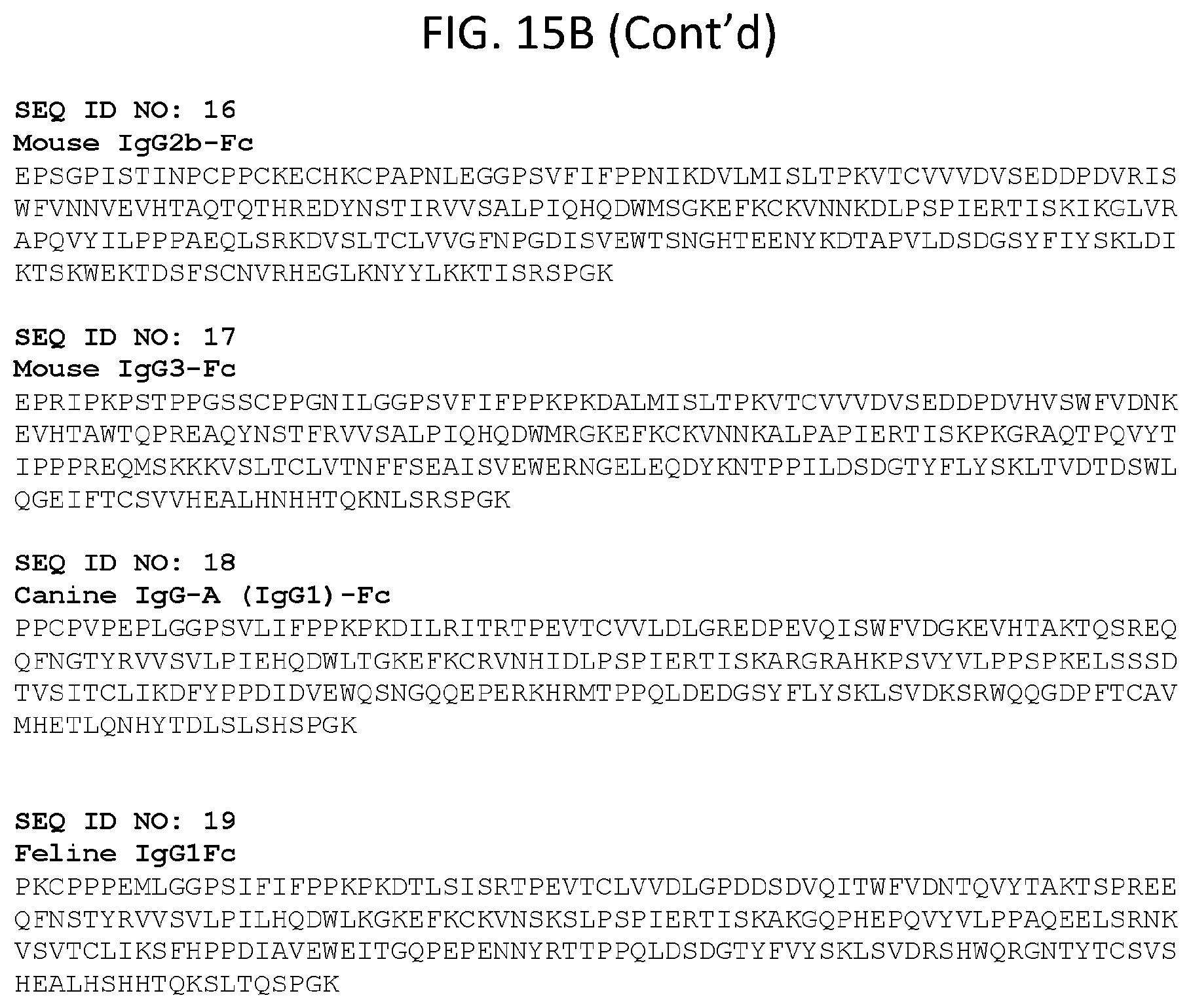
D00059
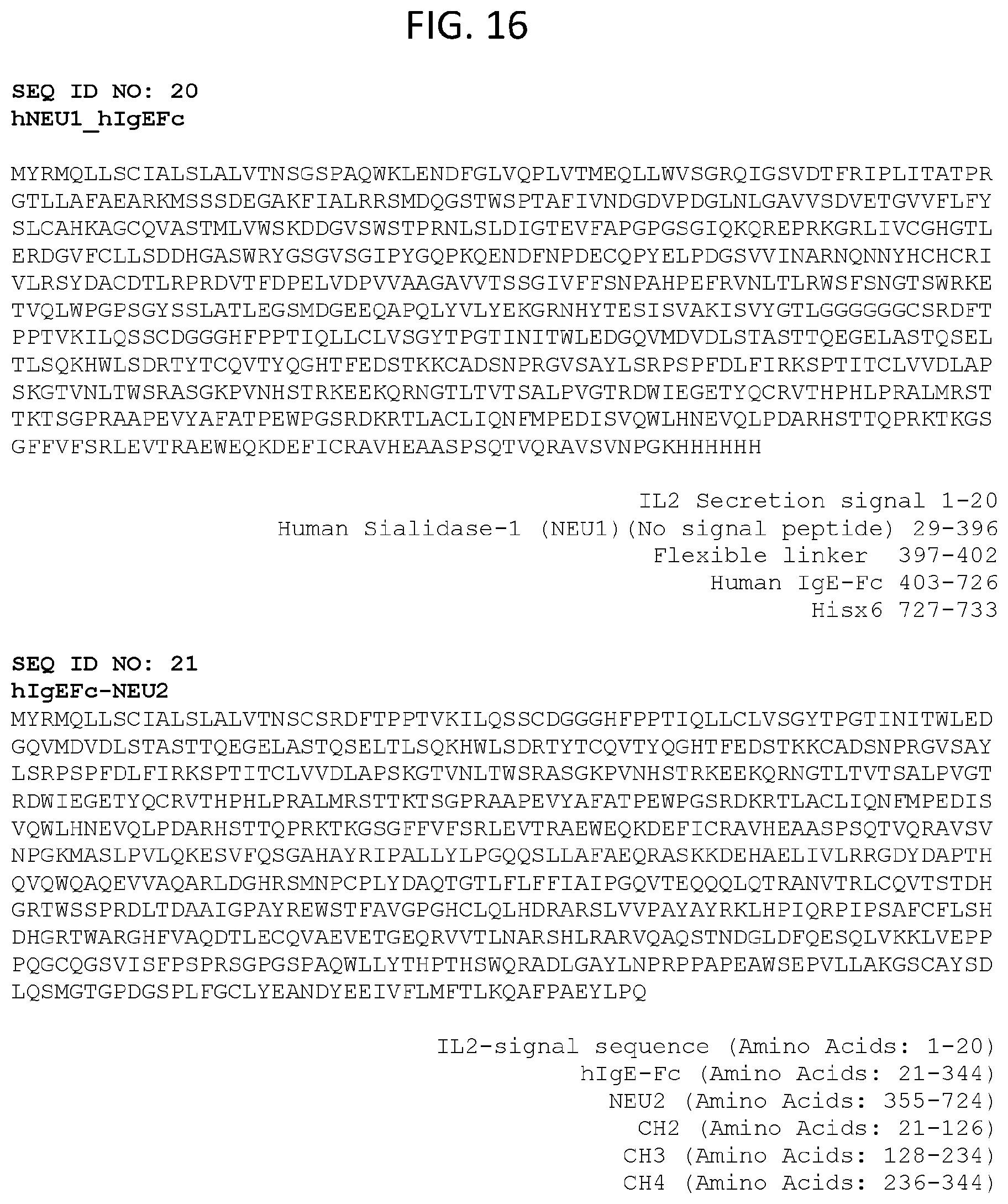
D00060
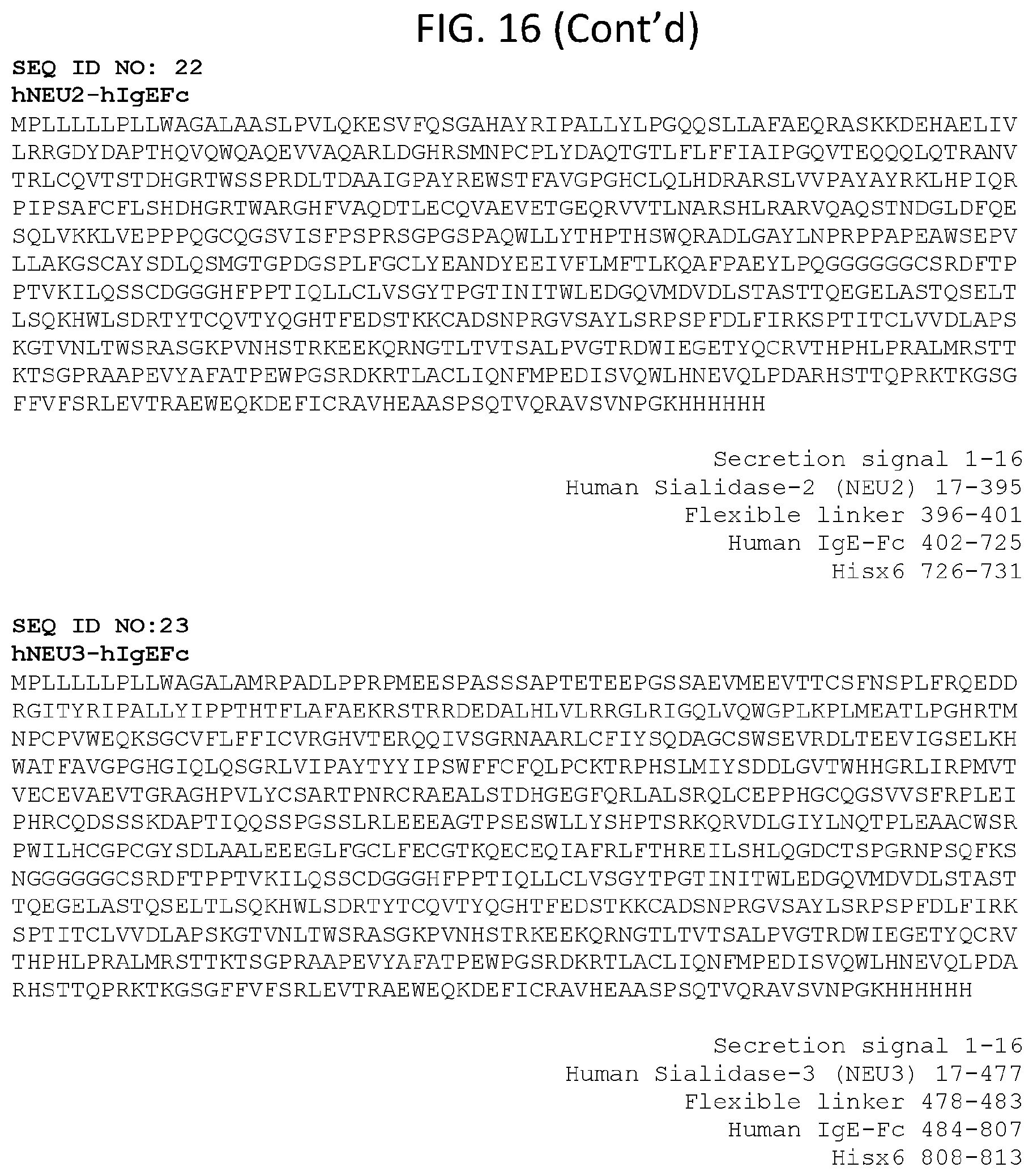
D00061

D00062
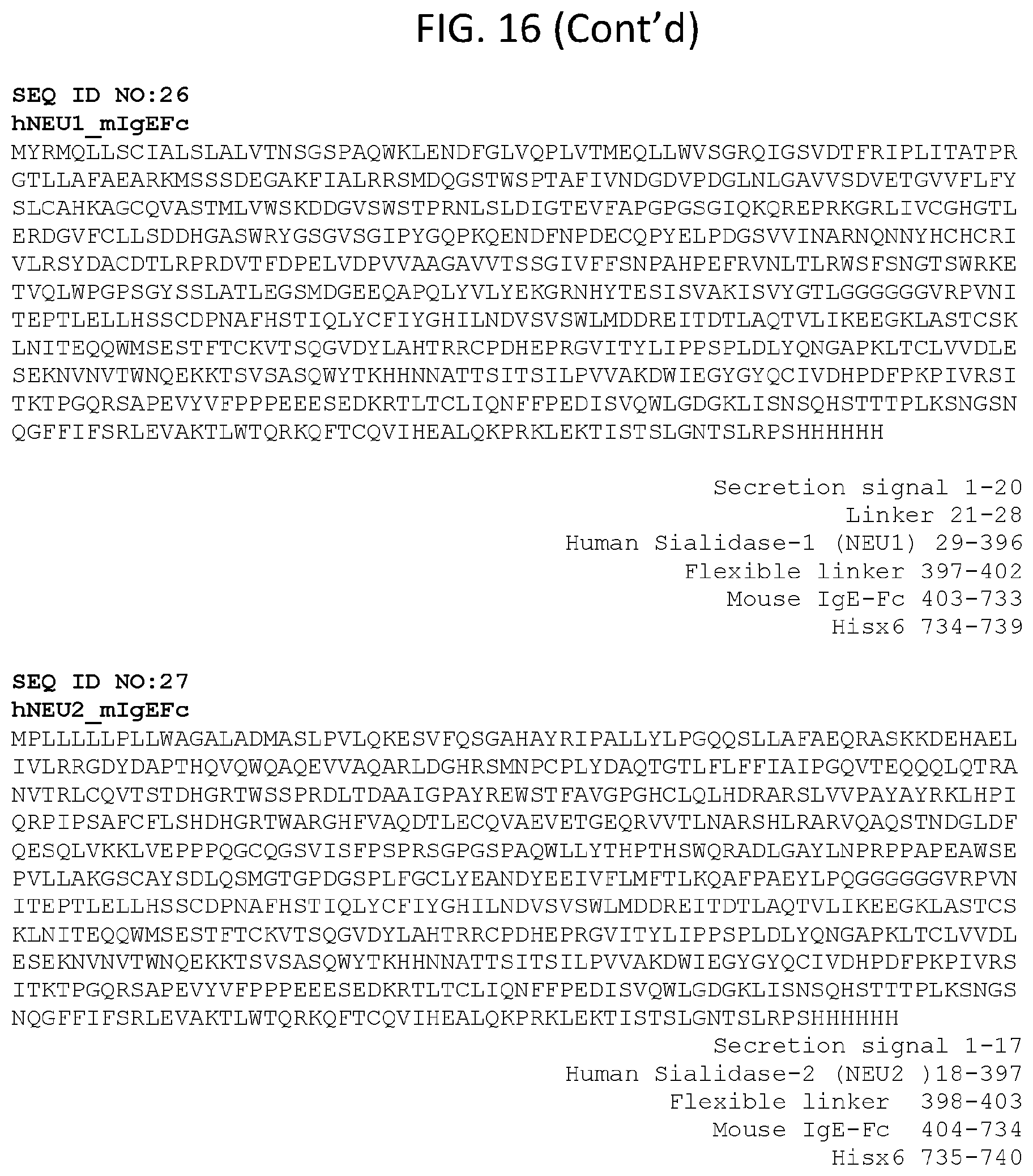
D00063

D00064
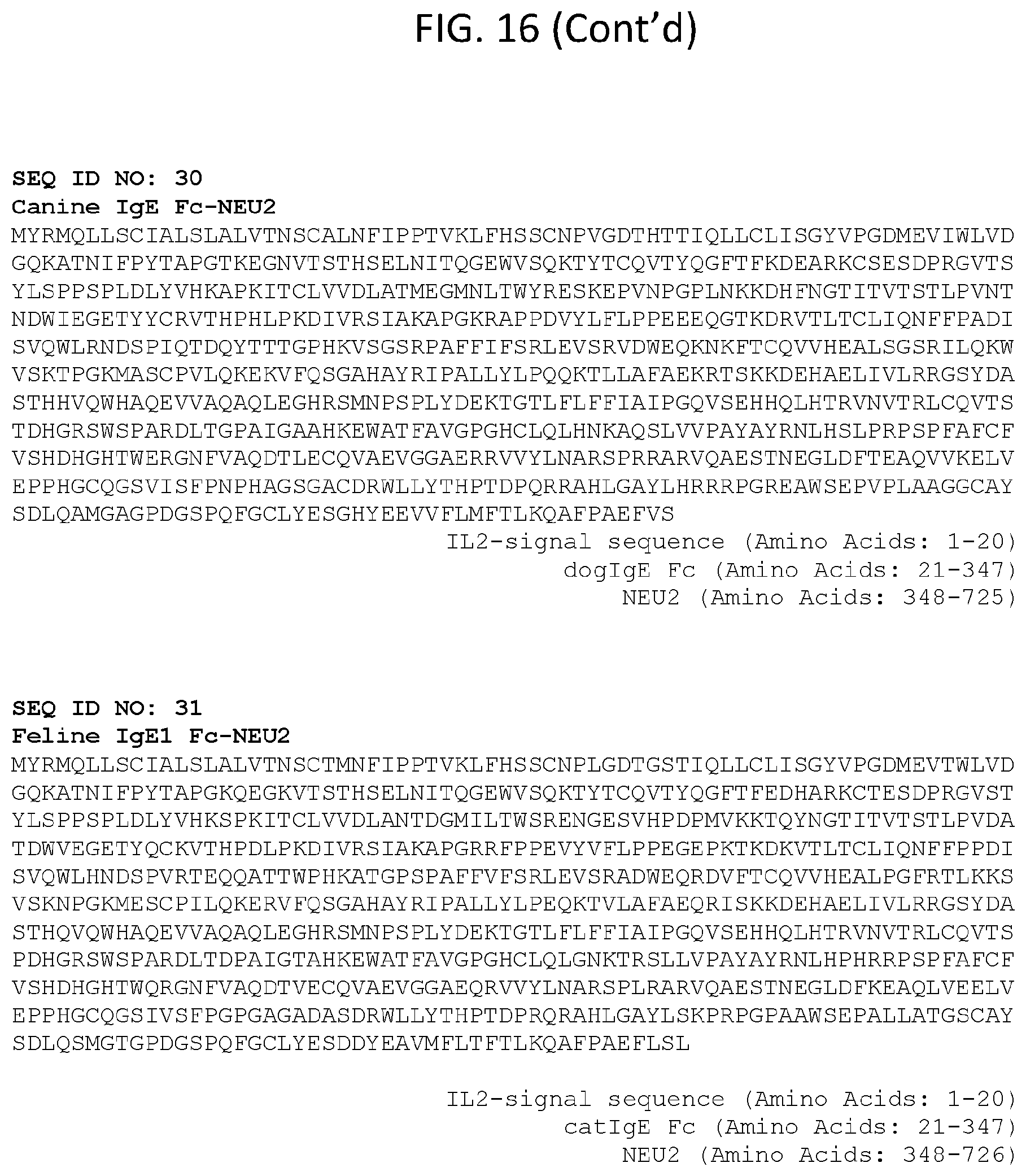
D00065
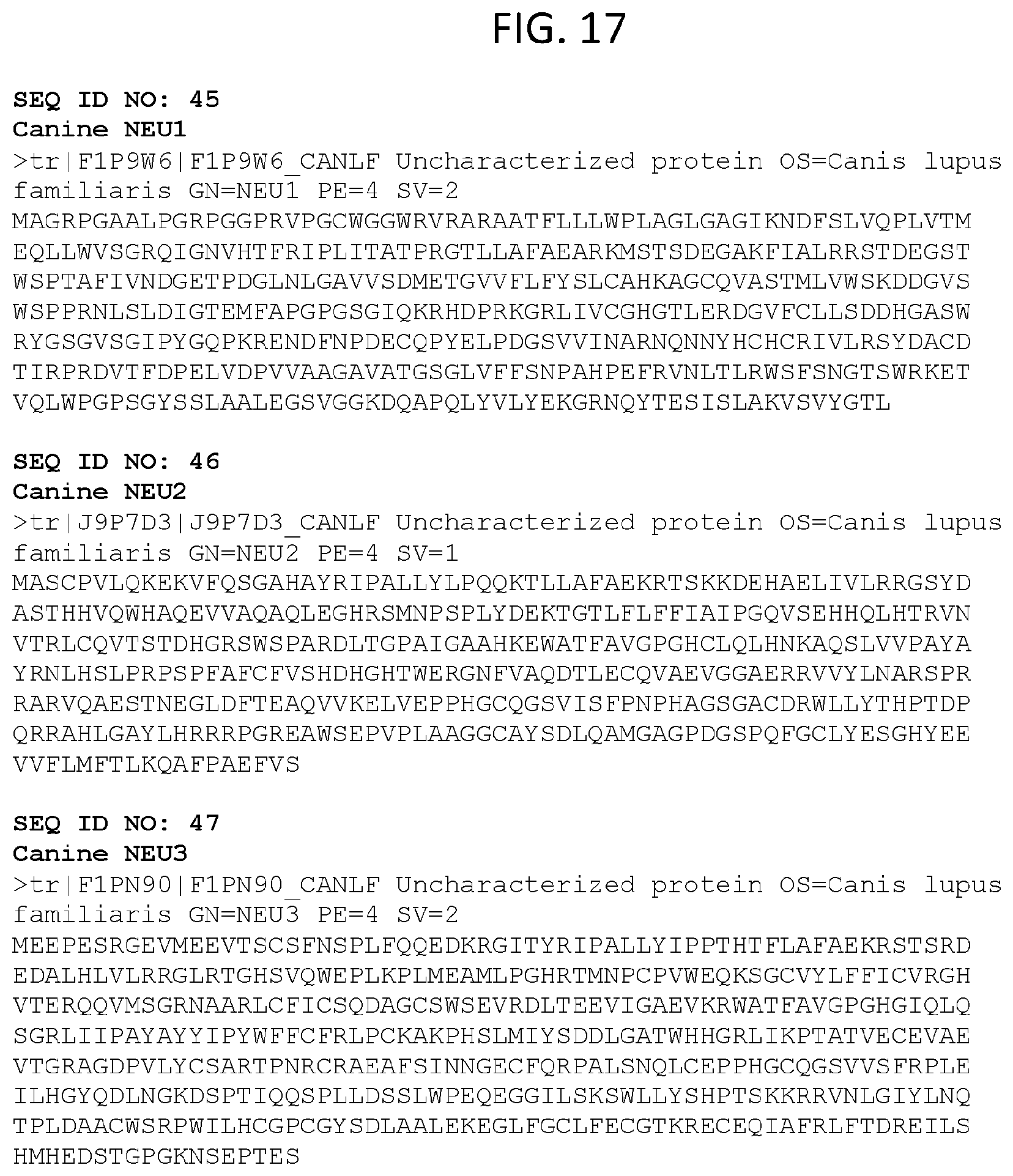
D00066
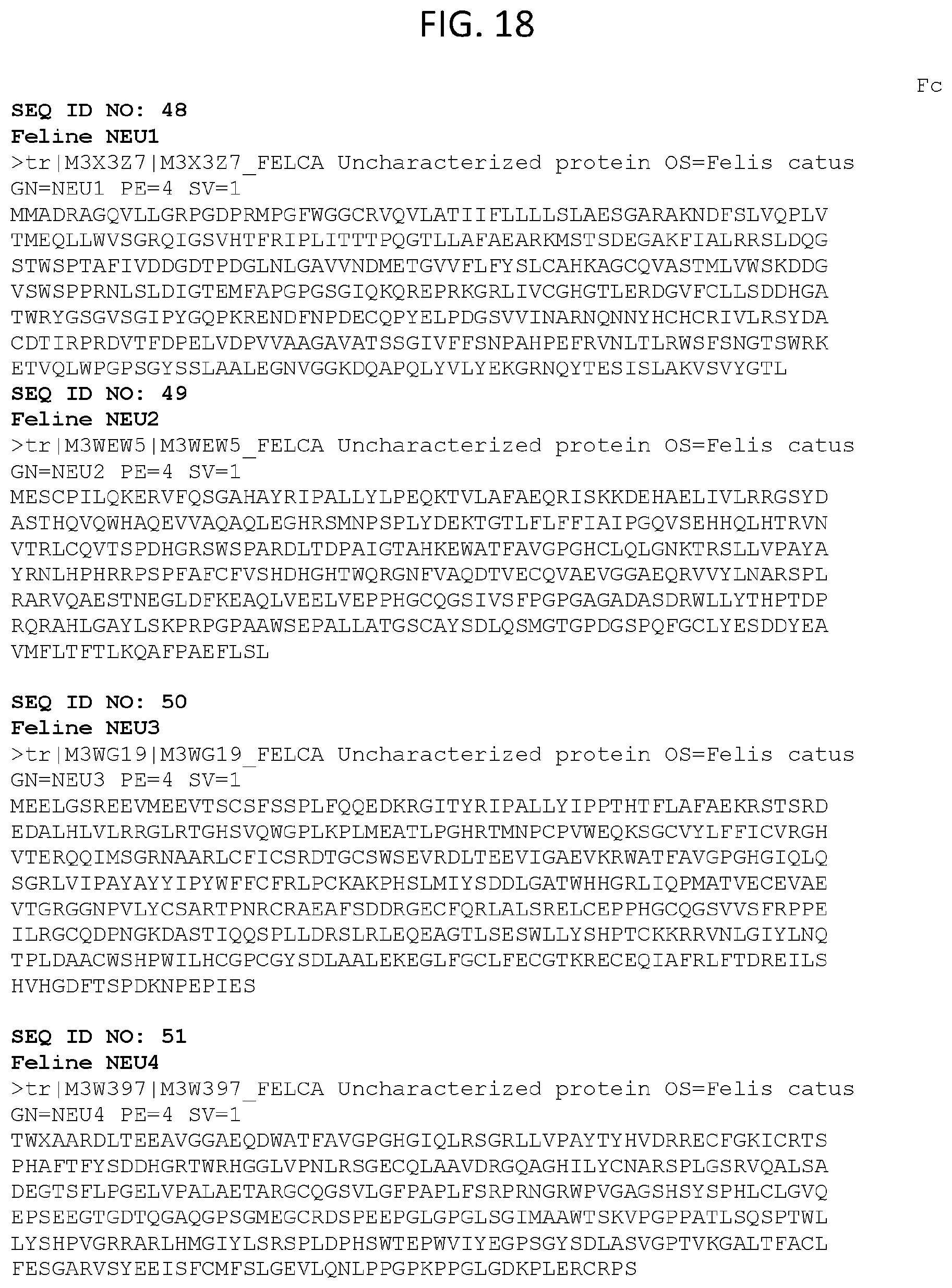
D00067

D00068

D00069
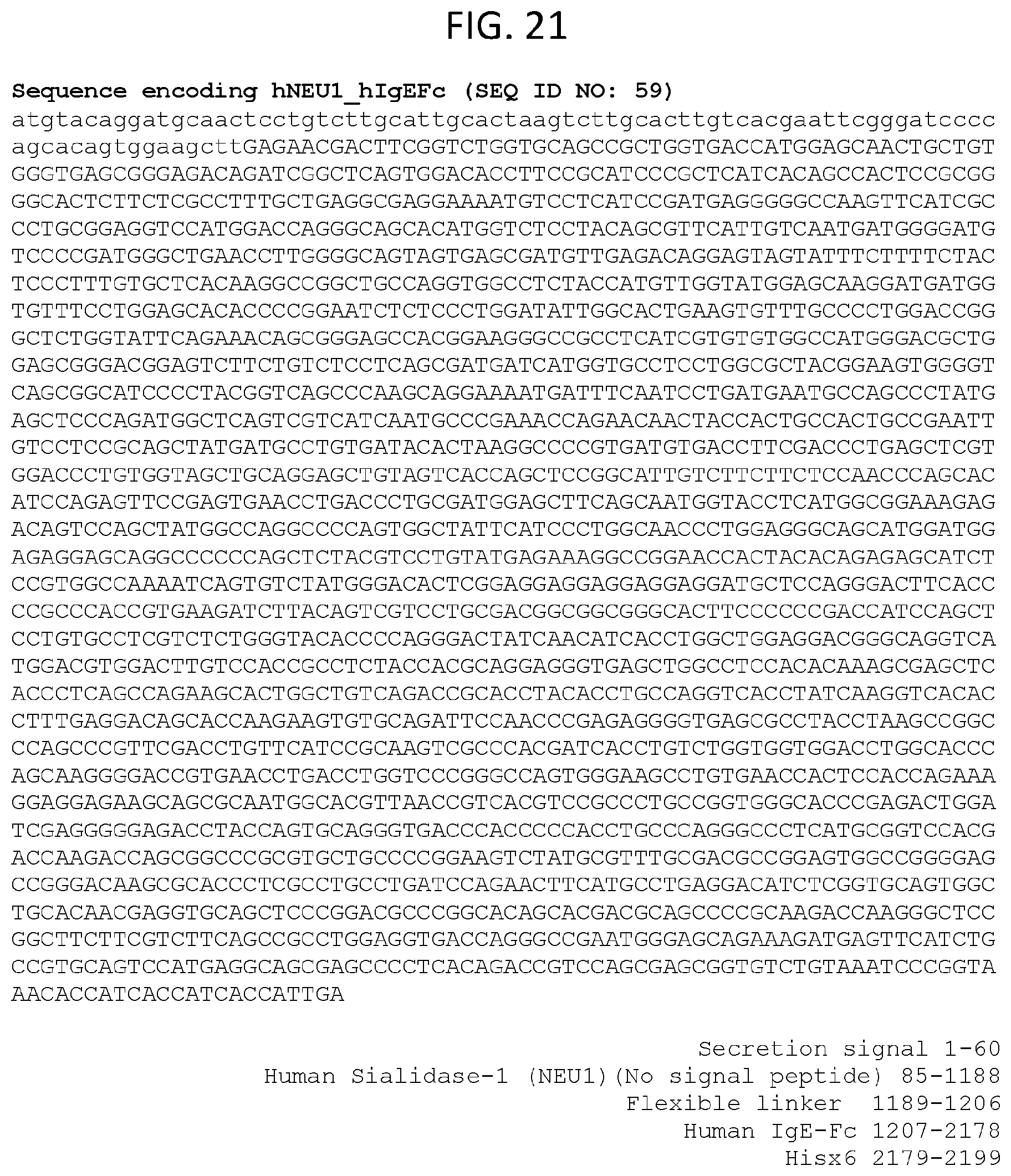
D00070
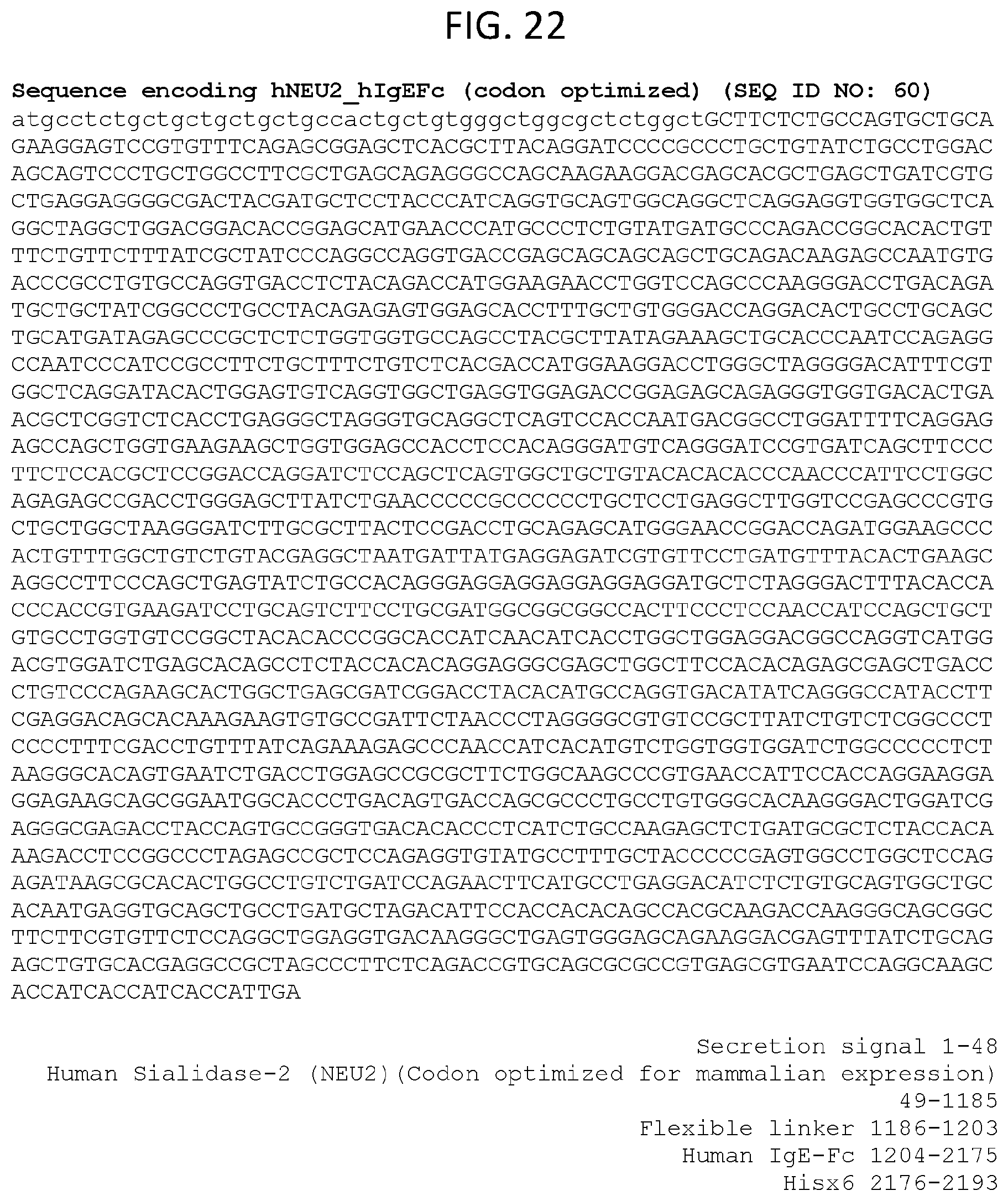
D00071
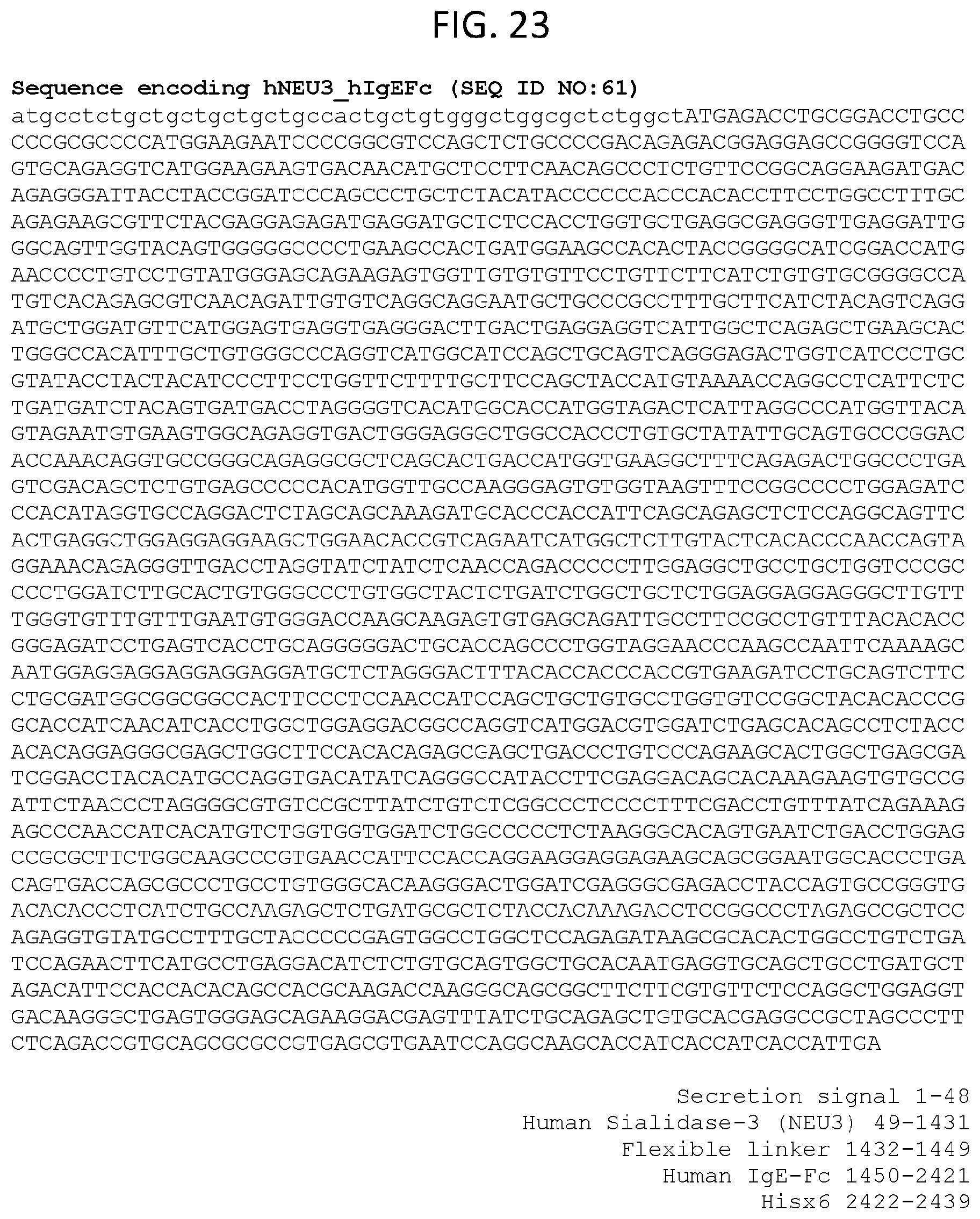
D00072
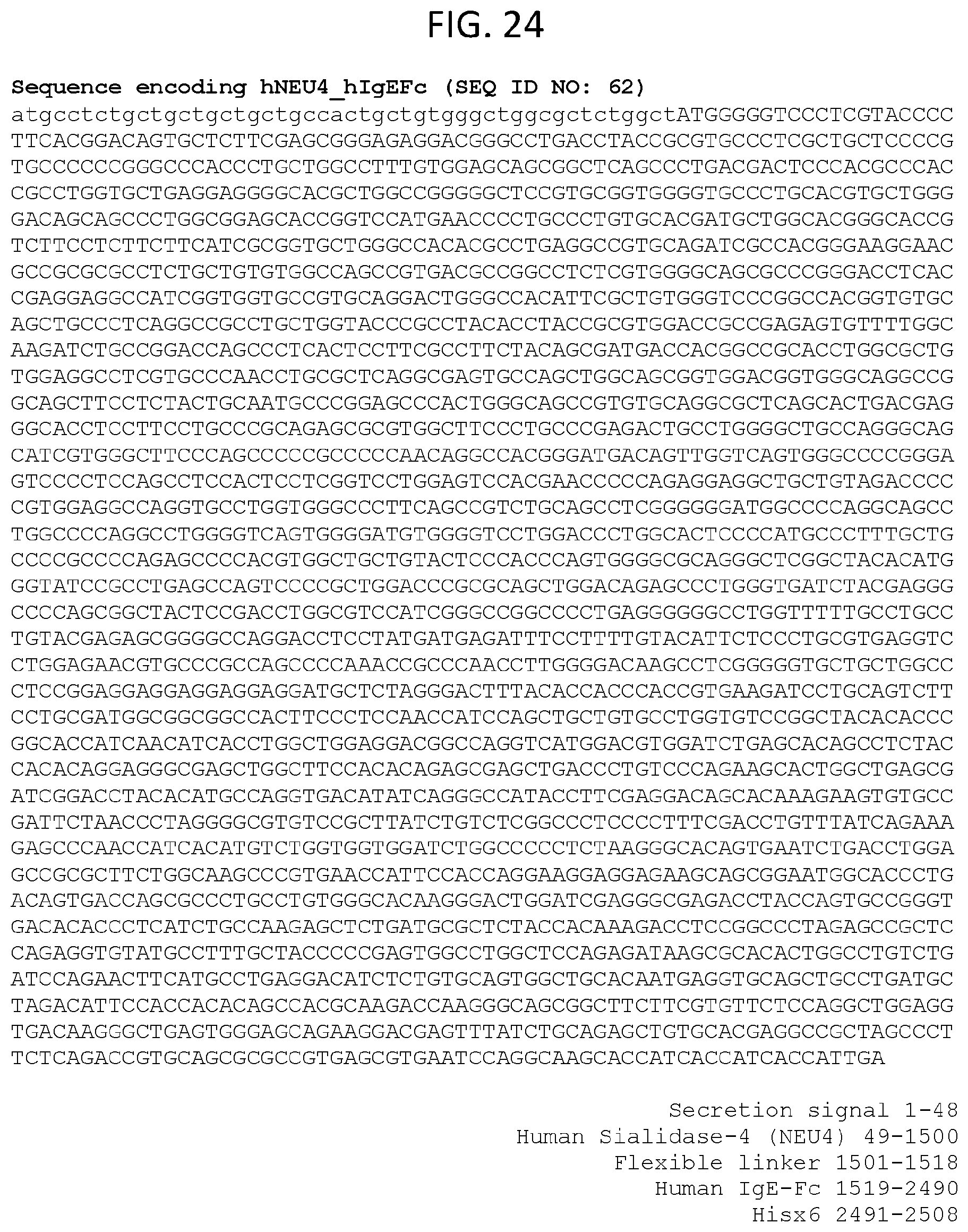
D00073
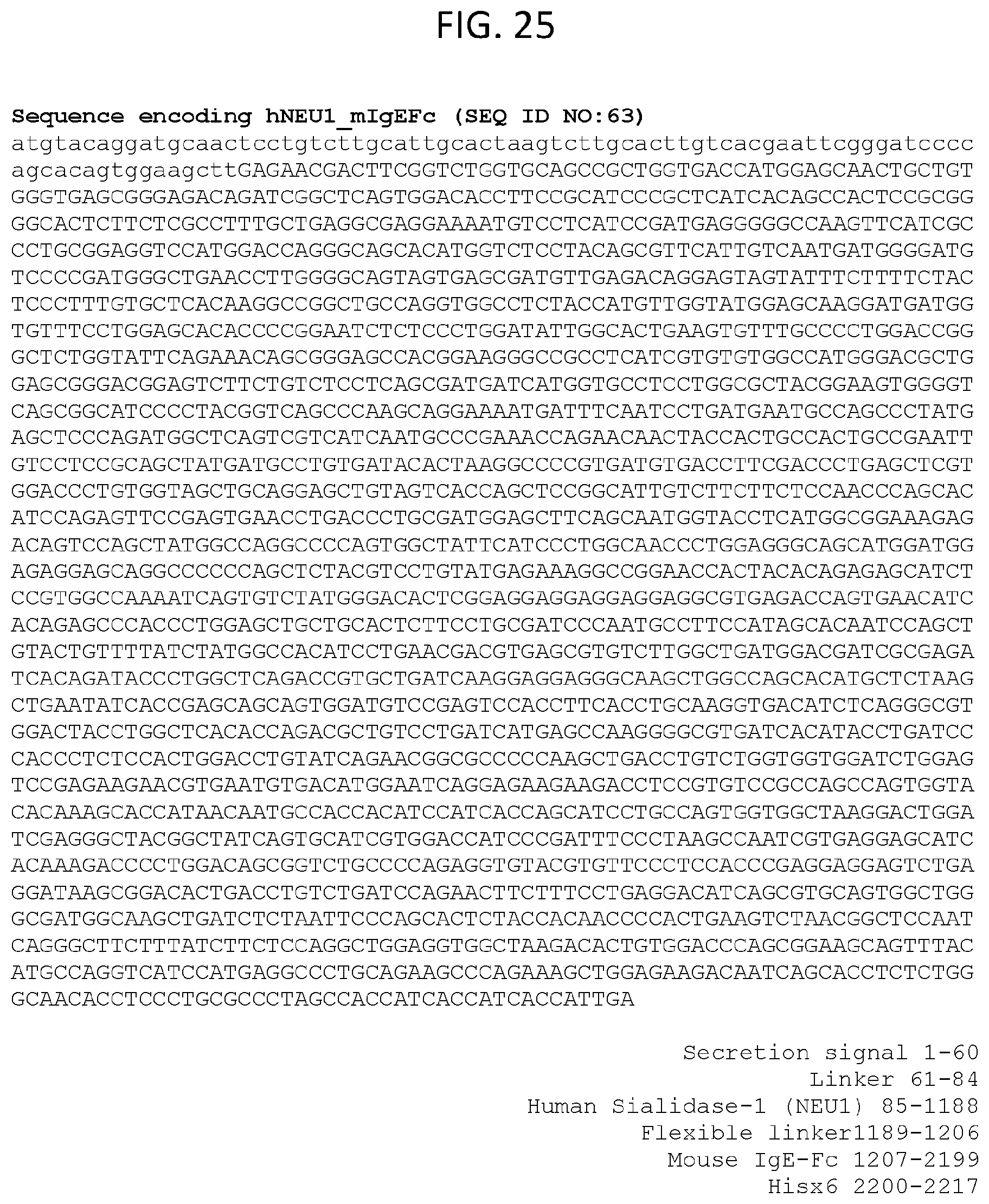
D00074
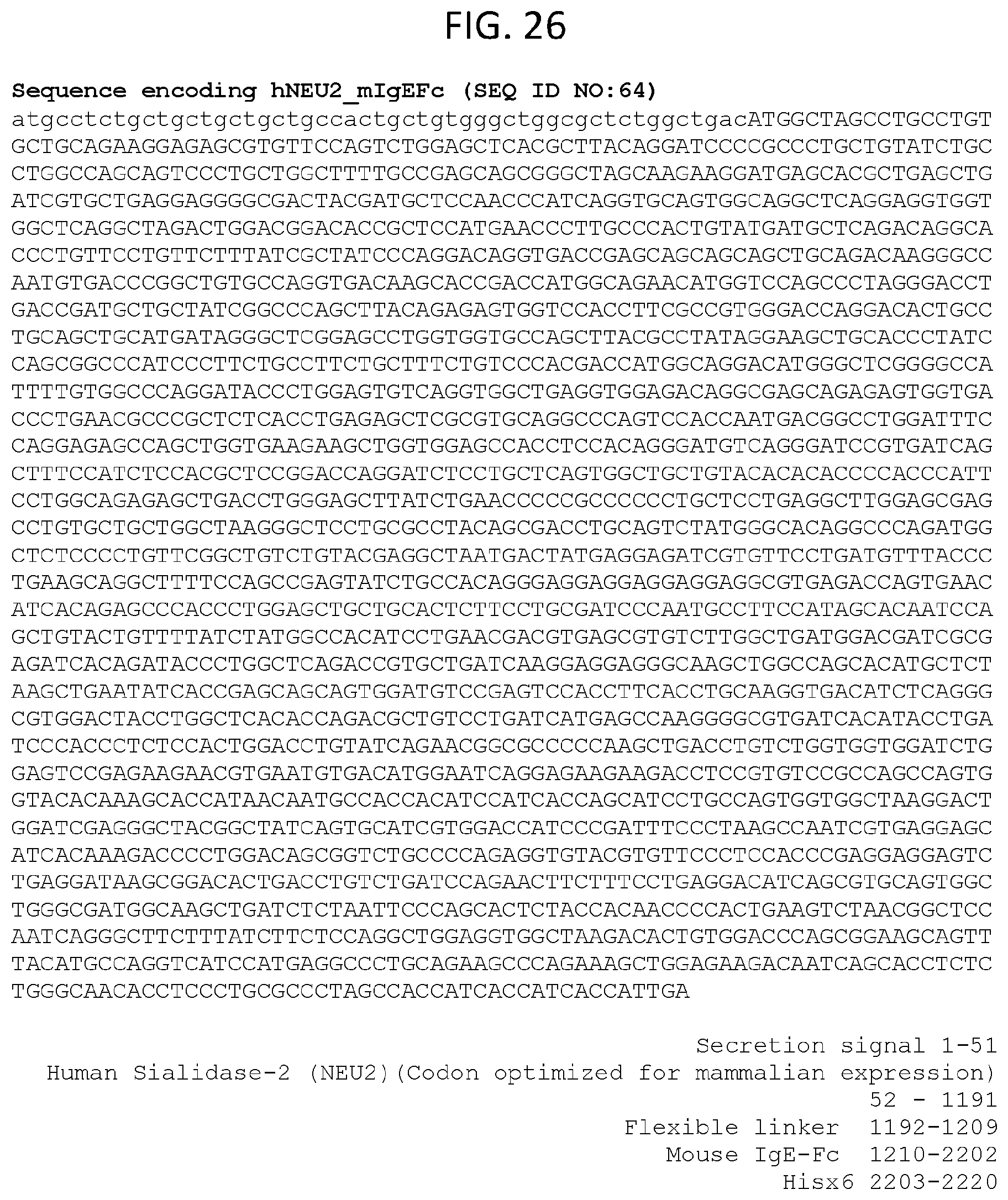
D00075
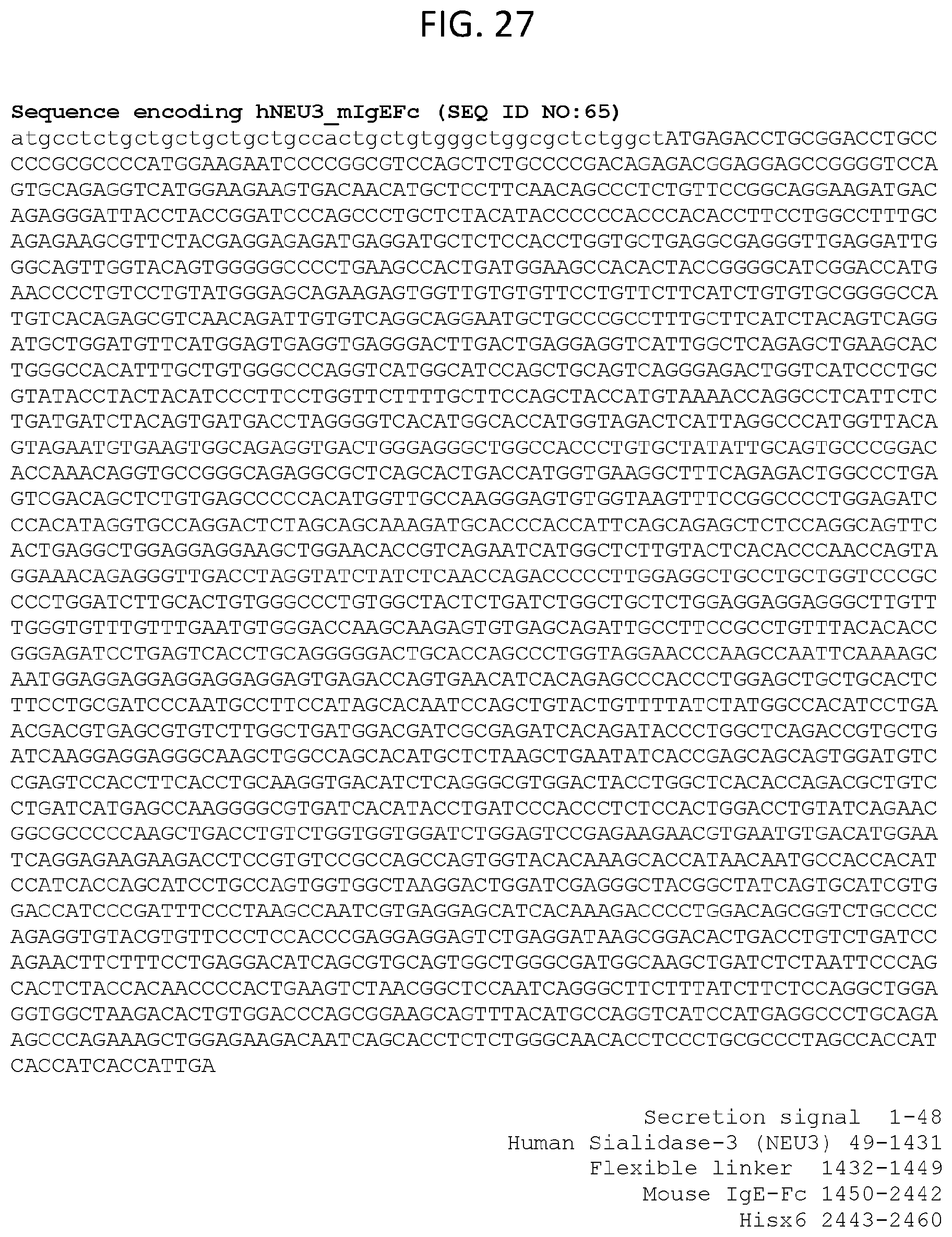
D00076
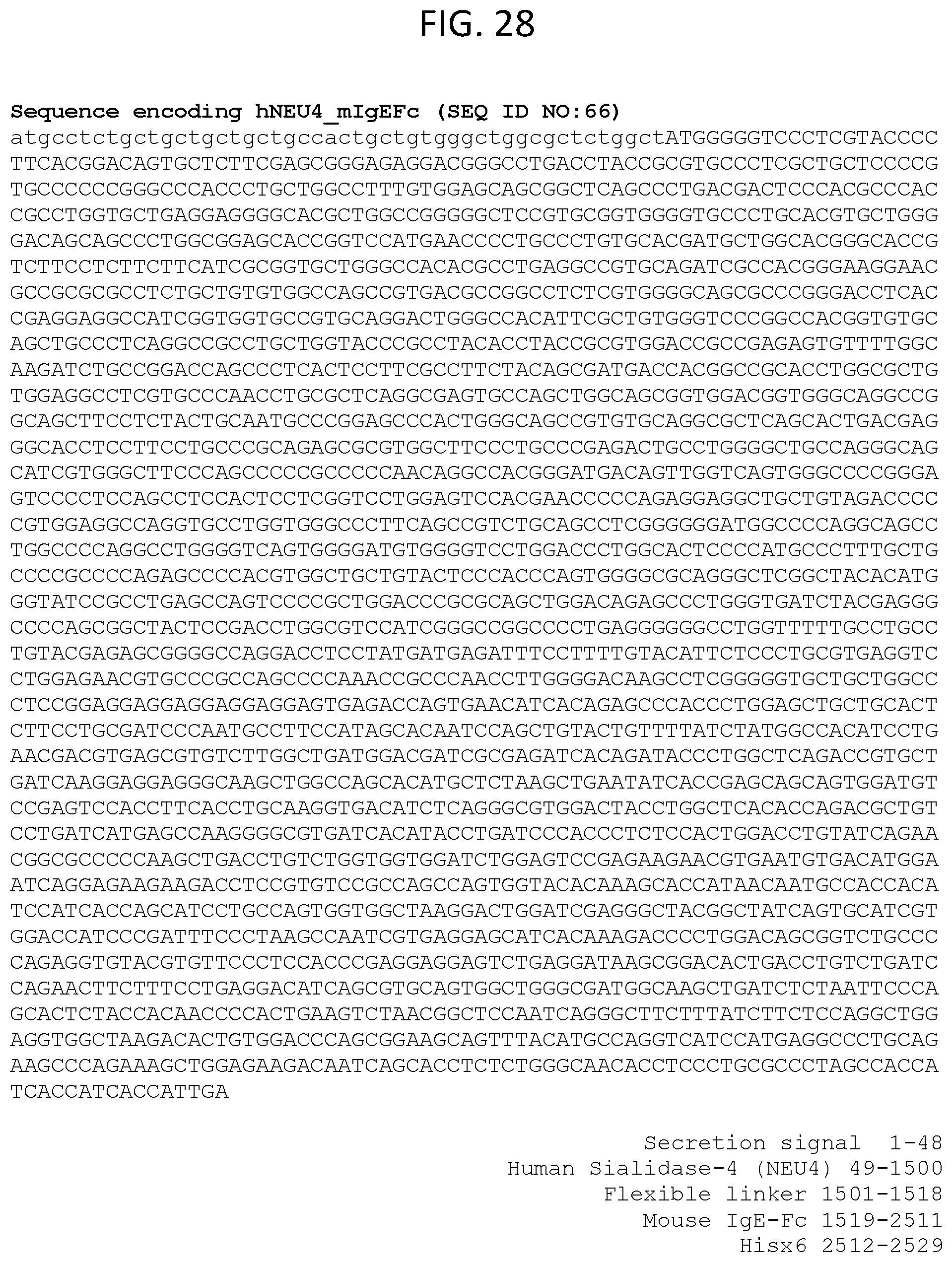
S00001
XML
uspto.report is an independent third-party trademark research tool that is not affiliated, endorsed, or sponsored by the United States Patent and Trademark Office (USPTO) or any other governmental organization. The information provided by uspto.report is based on publicly available data at the time of writing and is intended for informational purposes only.
While we strive to provide accurate and up-to-date information, we do not guarantee the accuracy, completeness, reliability, or suitability of the information displayed on this site. The use of this site is at your own risk. Any reliance you place on such information is therefore strictly at your own risk.
All official trademark data, including owner information, should be verified by visiting the official USPTO website at www.uspto.gov. This site is not intended to replace professional legal advice and should not be used as a substitute for consulting with a legal professional who is knowledgeable about trademark law.